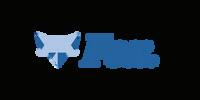




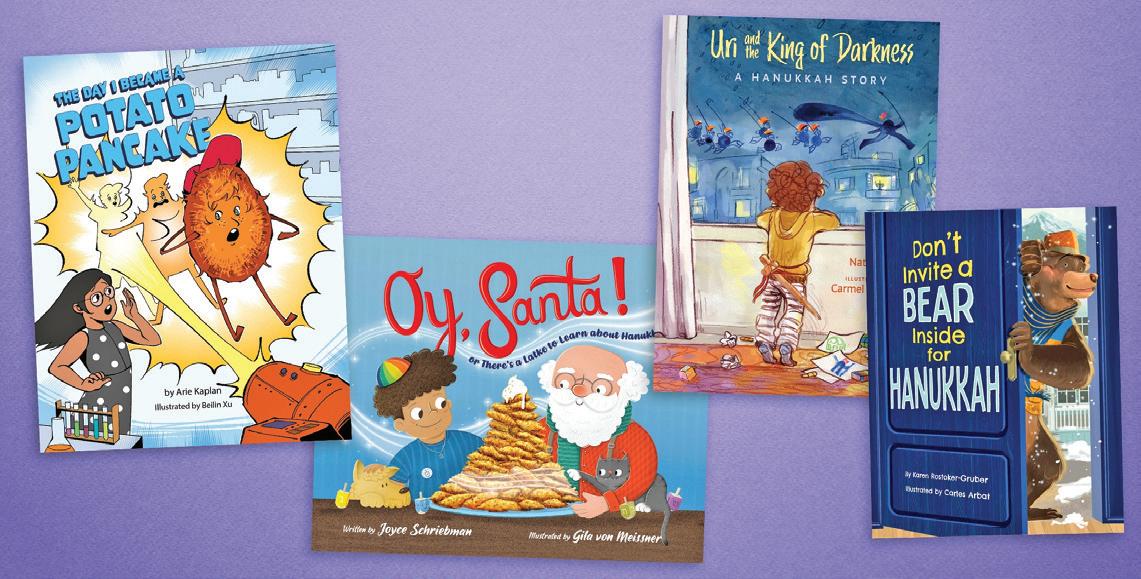
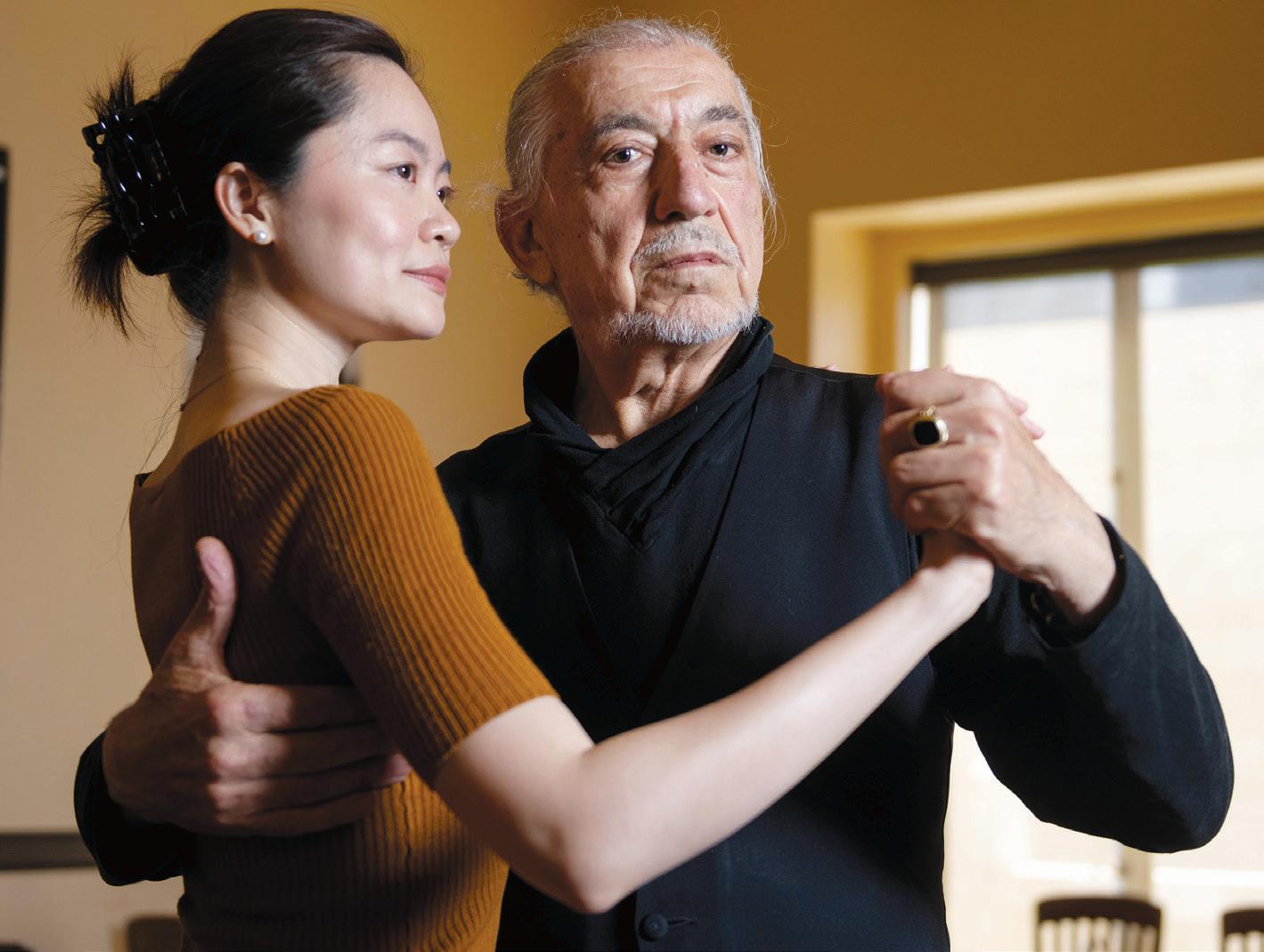
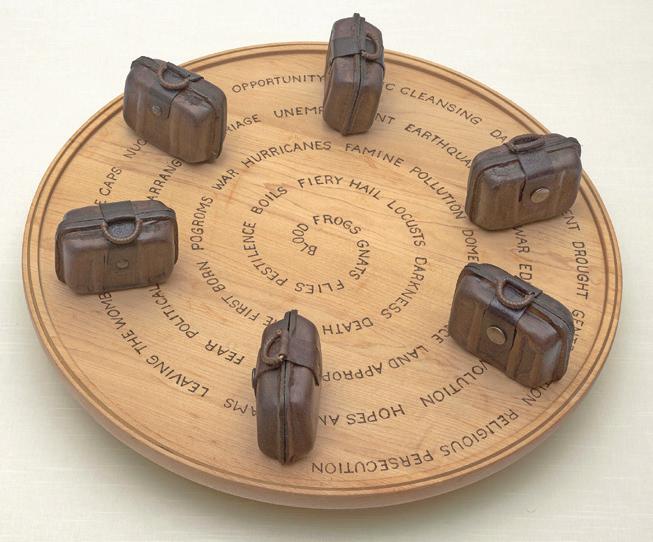
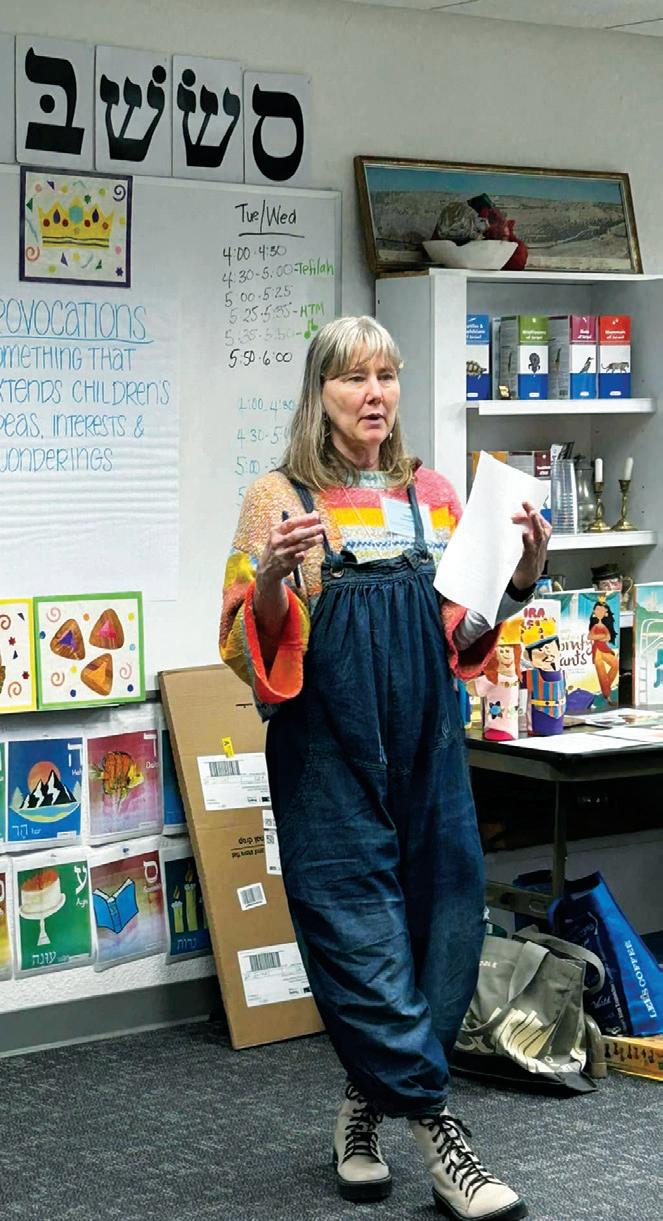
Olive oil connoisseur dispels smoke point ‘myth’ for
26 Turn your Hanukkah into a global festival of latkes 29 Local restaurants, bakeries serve up Hanukkah fare
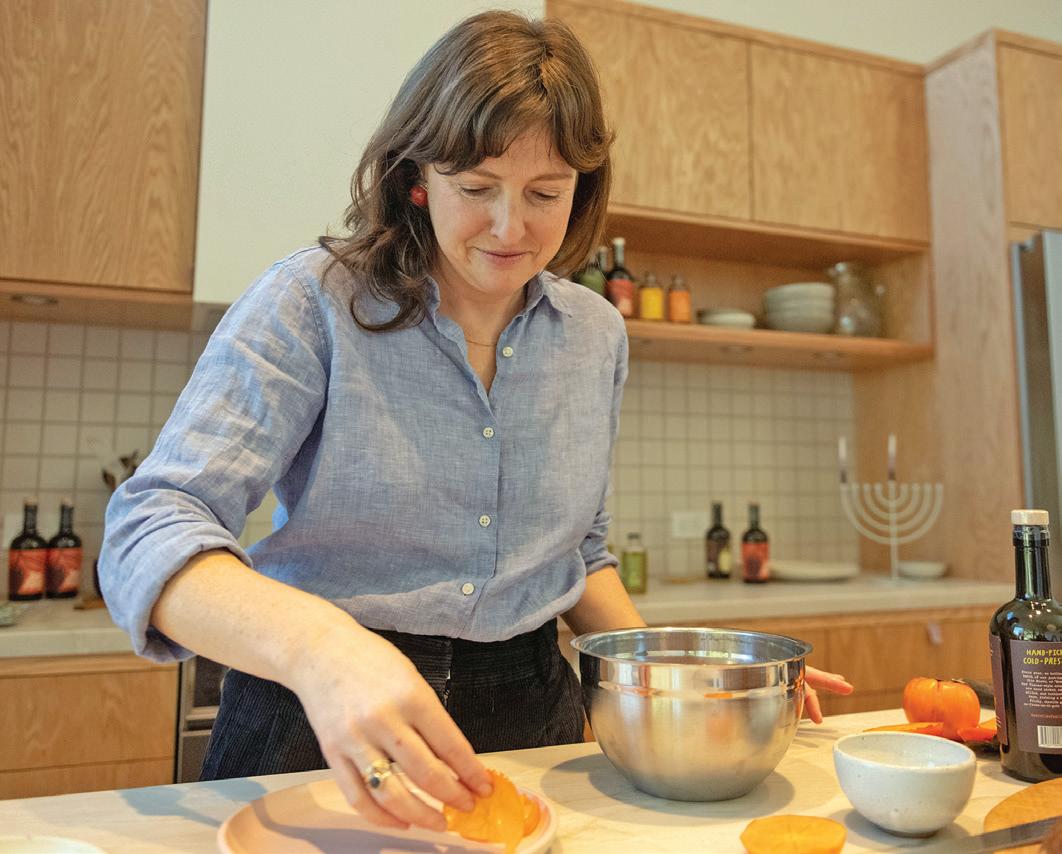
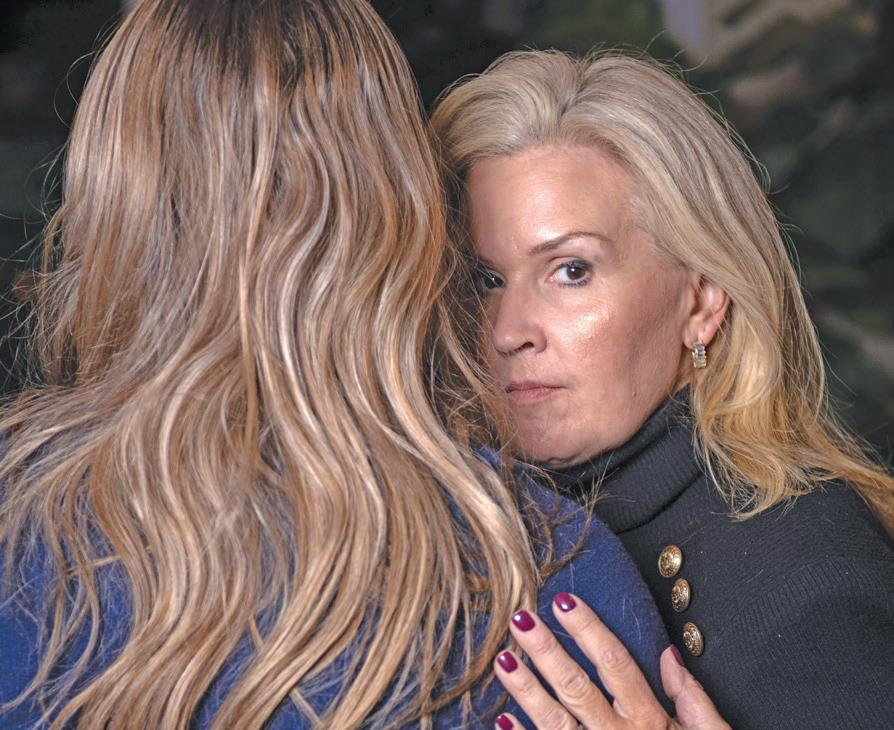
47 Authors give shout-out to ‘Chutzpah Girls,’ past and present
48 Zionists of Gen Z forge own path undaunted and ready to lead
49 Jewish thinker Arnold Eisen takes time to confront his own questions of faith
34 Some local orgs face ‘bleak’ funding landscape post-Oct. 7
36 What the CJM has meant to our community — and to me
38 More teens seek JSU’s high school clubs
50 Tango lured Hungarian native to learn, then teach in S.F.
51 Torah | Candlelightings 52 Lifecycles | Obituaries
Visit for FREE this Weekend Before our Temporary Closure Begins
ON VIEW THROUGH DECEMBER 15
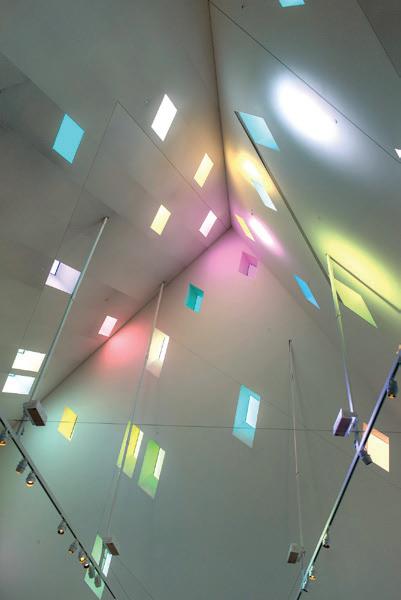
California Jewish Open
This critically-acclaimed exhibition presents artworks by nearly fifty artists all reflecting on the theme of connection.
Authorship, ownership, and recovery are challenged in this multimedia installation featuring the replication and erasure of paintings looted during WWII.
Nicki Green: Firmament
The artist’s first museum solo exhibition explores identity, metamorphosis, and reinvention of Jewish ritual.
Leah Rosenberg: When One Sees a Rainbow
Rosenberg’s original installation offers a colorful, light-filled space to re-encounter a familiar symbol of hope and awe.
Pick up your ArtBash: Hanukkah at-home, family-friendly ArtKit, plus enjoy 40% OFF all merchandise at The CJM Shop!
VISIT ON DECEMBER 15 FOR FREE IN-GALLERY ARTIST TALKS
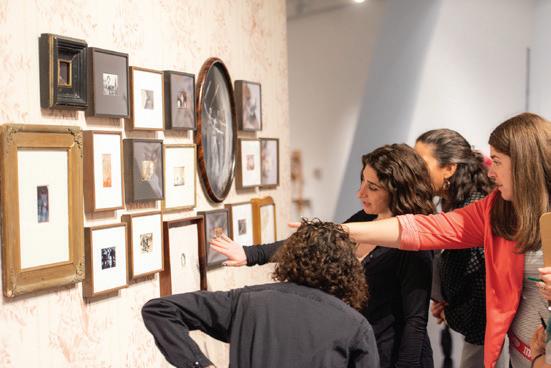
11:30AM | Connecting to Jewishness through Art: Tiffany Shlain and Amy Trachtenberg
Join two Contemporary Jewish Open artists in a discussion of art, feminism, matrilineal legacy, and more.
1PM | Eli Andrew Ramer on Nicki Green: Firmament
Gain insights into the exhibition and enjoy a story reading by the Maggid and artist collaborator.
2PM | Leah Rosenberg on When One Sees a Rainbow Hear from the artist on how the Yud Gallery and the concept of the rainbow inspired her unique installation.
INVEST IN OUR FUTURE—DONATE TODAY!
We are deeply touched by your expressions of support since announcing our temporary closure. Your contributions this giving season will allow us to reimagine, restructure, and return, stronger and sooner. Visit thecjm.org/donate to give today.
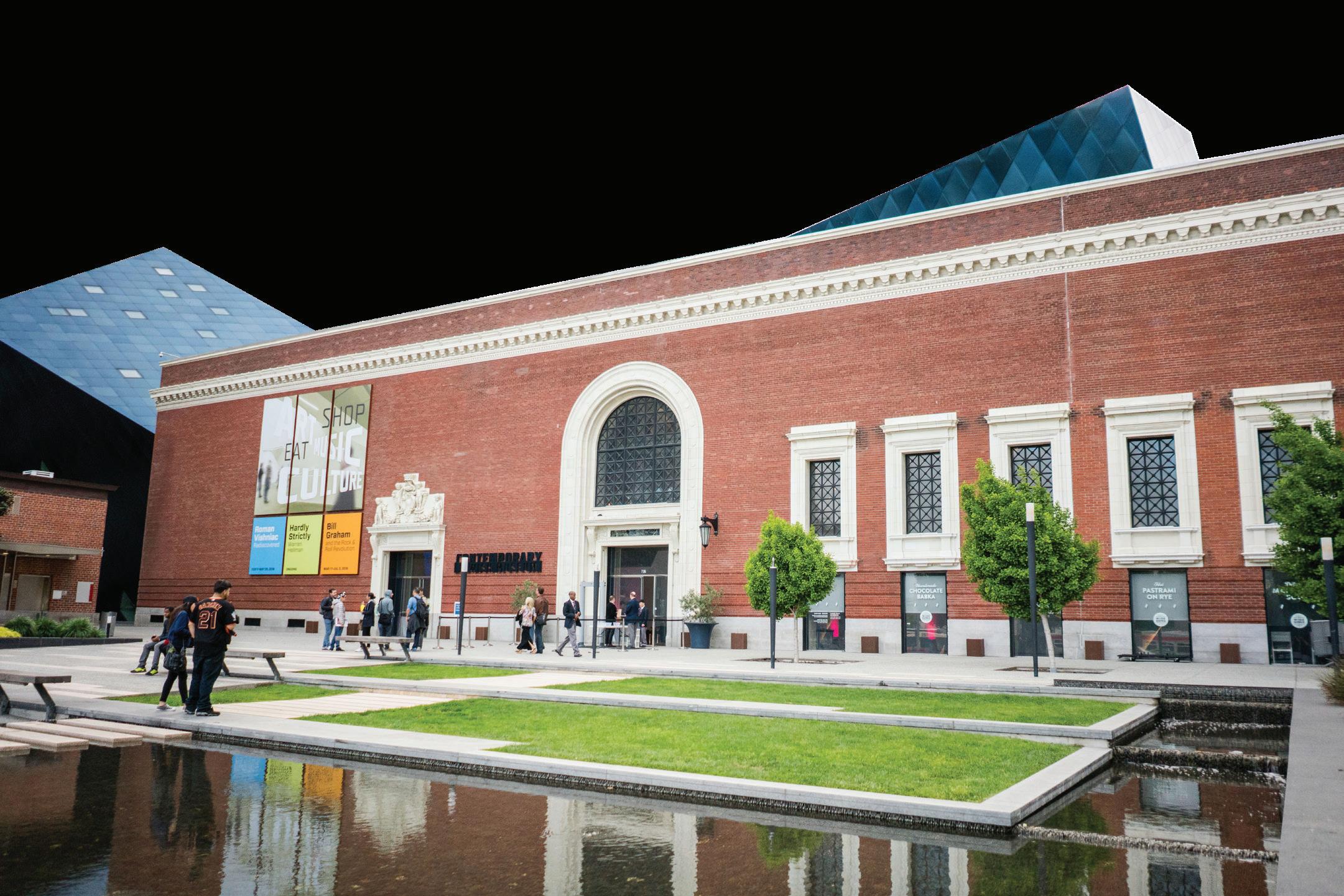
info@jweekly.com
CEO Jo Ellen Green Kaiser PUBLISHER Steve Gellman
EDITOR-IN-CHIEF Chanan Tigay MANAGING EDITOR Sue Barnett EDITORIAL
DIRECTOR OF NEWS PRODUCT David A.M. Wilensky SENIOR EDITOR Natalie Weinstein
NEWS EDITOR Gabe Stutman
INTERIM CULTURE EDITOR Laura Paull
STAFF WRITERS Niva Ashkenazi, Emma Goss, Maya Mirsky
ENGAGEMENT REPORTER Lea Loeb
PHOTOGRAPHER Aaron Levy-Wolins
CONTRIBUTING EDITORS Andy Altman-Ohr, Sue Fishkoff, Dan Pine, Alix Wall
COLUMNISTS Howard Freedman, Karen Galatz, Janet Silver Ghent, Faith Kramer, Dr. Jerry Saliman, Micah Siva
ADVERTISING & PROMOTION
ACCOUNT EXECS Nancy Beth Cohen, Meryl Sokoler
ART & PRODUCTION
DIGITAL TECHNOLOGY DIRECTOR Antonio R. Marquez
GRAPHIC DESIGNERS Michelle Palmer, Steve Romero
BUSINESS
DEVELOPMENT DIRECTOR Allison Green
DEVELOPMENT ASSOCIATE Carrie Rice
MARKETING ASSISTANT Holley Newmark
ACCOUNTING ASSISTANT Linda Uong
TECHNOLOGY
IT SUPPORT Felipe Barrueto
BOARD OF DIRECTORS
CO-PRESIDENTS Steven Dinkelspiel, Carol Weitz
VICE PRESIDENTS Andy Rittenberg, Jerry Yanowitz
SECRETARY Patricia Rosenberg
TREASURER Jane Springwater
MEMBERS Liz Berman, Alex Bernstein, Mark W. Bernstein (imm. past president), David Cornfield, Alexandra Corvin, Rabbi Joey Felsen, Howard Fine, Inna Gartsman, Alia Wechsler Gorkin, Samantha Grant, Steve Katz, Susan Libitzky, Rabbi Deborah Newbrun, Susan Sasson, Harmon Shragge, Peter Waldman PAST PRESIDENTS Marc Berger, Lou Haas, Jon Kaufman, Dan Leemon, Adam Noily, Lory Pilchik, William I. Schwartz

EMMA GOSS | J. STAFF
The emotional wounds are still fresh for 13-year-old Ella, even though it’s been a year since she fled her San Jose public charter school to escape relentless antisemitic bullying and harassment.
“It’s been a long year,” Ella’s mom, Elisa Schweizer, told J. on Nov. 21, choking back tears. She was seated next to her daughter on the couch in their home. The family asked that Ella’s last name not be used for this article to safeguard her identity.
Near the end of October, Ella and her parents filed a lawsuit against University Preparatory Academy (UPA), which she attended for one semester of seventh grade during the 2023-2024 school year. The lawsuit also names the Santa Clara County Board of Education, the Santa Clara County Office of Education and the California Department of Education, institutions they say failed to protect Ella.
After the onset of the Israel-Hamas war and the spike in global antisemitism, Ella endured months of harassment and bullying by peers, some of whom referred to her as “white Ella” or simply “Jew” and accused her Israeli family of being terrorists and occupiers of “stolen land,” according to the family’s lawsuit.
School administrators did nothing to stop the abuse or ameliorate the harm, the lawsuit claims.
“Initially, I just wanted to shake them and say, ‘Why aren’t you understanding? She’s a 12-year-old girl that’s been maliciously bullied, and for being a Jew,’” Schweizer told J. about UPA leadership. “I think it just took a while for me to realize that it was a systemic failure and that there was no one on their team that was going to protect my child, and I needed to step in and protect her.”
Ella transferred out during winter break, returning to the Jewish school where she’d spent grades K-6 and where many of her friends still attended. But the emotional scars of the UPA experience have lingered for almost a year, her mother said.
“She completely withdrew,” Schweizer said. “The whole year, she was just shut in her room. She wouldn’t go to dance class. She wouldn’t do anything.”
Competitive dancing has long been Ella’s favorite extracurricular activity. But she
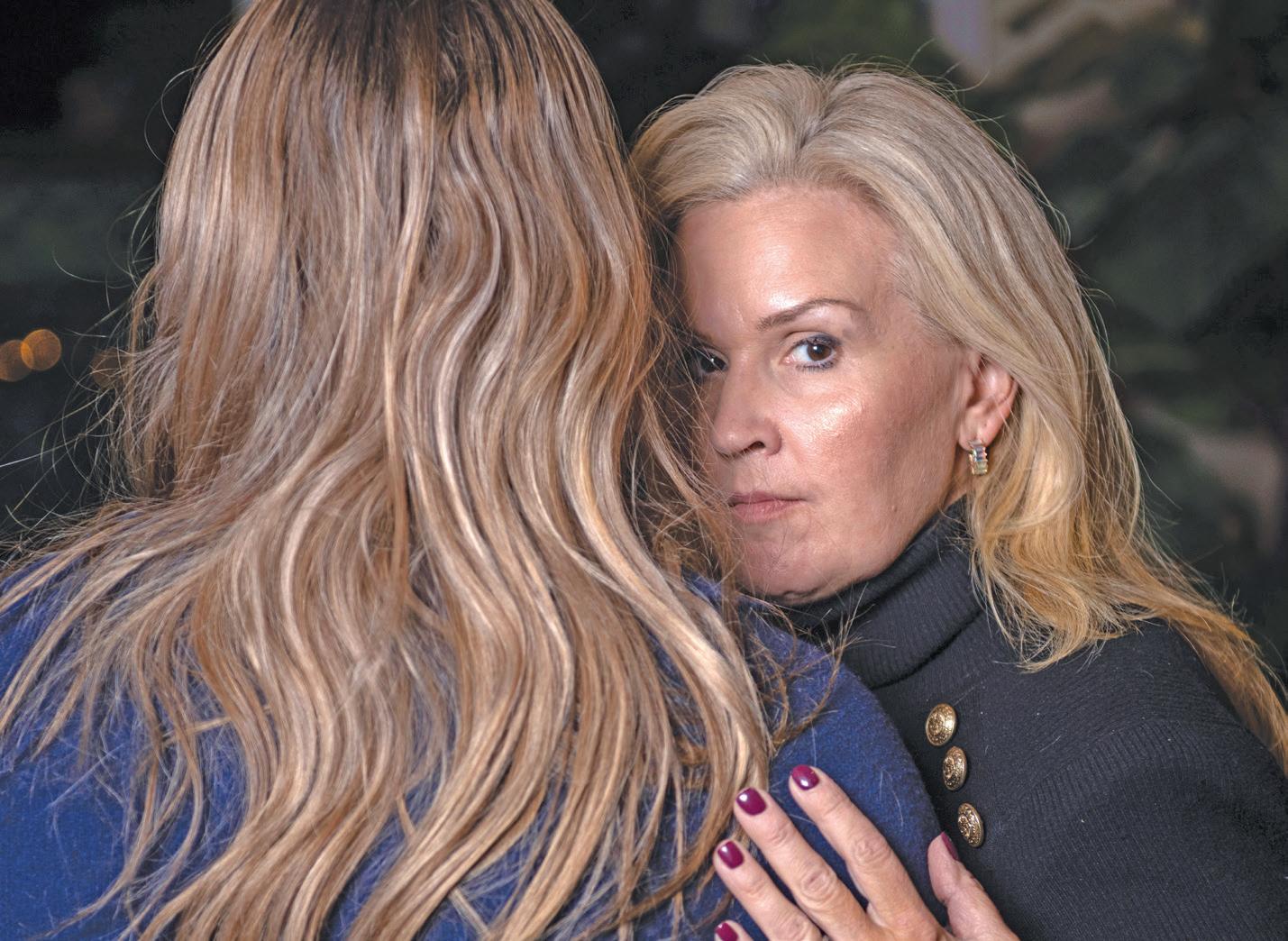
decided to take time away from competition to “relieve some of the pressure” she’d been under. She still hasn’t gone back.
Ella said she closed herself off from her parents and siblings after she withdrew from UPA because “at that point, I just didn’t know who to trust.” Too many adults had failed to help her, Schweizer said.
“In the last two weeks she’s started to come out of this fog,” Schweizer said. “I felt like I lost my daughter for a year.”
The school district did not respond to J.’s request for comment. UPA executive director David Porter previously told J. that the school undertook a “full investigation” and disciplinary process but did not specify what action was taken.
‘WE WANT YOU TO DIE’
Prior to coming to UPA, Ella had spent all of her school years at a private K-8 Jewish day school in the South Bay. There, Ella found kinship with other Israeli American students who also spoke Hebrew at home.
Thinking ahead to high school, Ella’s parents began looking into UPA, a grade 7-12 charter school that came highly recommended by a Jewish family they knew.
“Everything online checked out. They were sending kids to great universities. There were many things that appealed to us,” Schweizer said.
After visiting the school for an open house and liking the academic offerings, as well as the smaller class sizes that felt familiar to her, Ella agreed. About 700 students attend UPA.
“It felt like I could see myself there,” she told J.
But directly following the Oct. 7, 2023 Hamas attack on Israel, Ella’s entire world was turned upside down — particularly at school.
In the first days back after Oct. 7, according to the lawsuit, two classmates confronted Ella, telling her that “Jews are terrorists” and asking her, “Do you know that your family in Israel is living on stolen land?”
Classmates in the ethnically diverse school — 6.6% of students identify as white — also began calling her “white Ella,” according to the family’s lawsuit.
On Oct. 16, 2023, a week after the Hamas massacre, two boys overheard Ella speaking Hebrew on her phone after school and
waiting to be picked up. They chased her, yelling “we want you [to] die” and mocking her Hebrew, according to the lawsuit.
The bullying and harassment continued, Ella said, and all of her friends except for one stopped sitting with her at lunch. In November, a girl in her math class began referring to Ella simply as “Jew.”
“Through those months, I just tried to keep my head down and not be drawn [in] or respond to any of it,” Ella told J. “I would say to myself, OK, one more week, one more week, one more week. And that’s how the time passed.”
‘THE FINAL STRAW’
Meanwhile, Schweizer and her husband were requesting to meet with any number of school officials, pleading for them to help their daughter.
In late October 2023, Schweizer and Ella sat down with Porter, the school’s top administrator. Ella gave a detailed description of what she had been experiencing.
One of the students who harassed Ella was disciplined, Schweizer said. Another began calling Ella a “snitch” and vowed to “beat the shit” out of her, according to the lawsuit.
“She cried many mornings, did not want to go to school,” Schweizer said. “She was afraid.”
After dropping Ella off at school, her father “would often park on the corner and just cry,” Schweizer said.
Ella said she could see how upsetting the situation was for her parents, too. “I was blaming myself for what was happening,” she said. “I felt like it was my fault.”
“The final straw,” Schweizer said, came on Dec. 15, when Ella and a friend saw a teacher distributing black-and-white kaffiyehs to a group of students during lunch. Some of them waved Palestinian flags.
“A light went off that they were no longer interested in protecting my child,” Schweizer said. That same week, Ella’s parents contacted the Jewish day school and arranged for Ella to return there after winter break.
‘THE FISH SMELLS FROM THE HEAD’ Schweizer filed a formal grievance with the school district in January. Per the state’s
continued on page 8
GABE STUTMAN | J. STAFF
A San Francisco professor of Jewish history was shouted down and told he “can’t hide” during a lecture last month at the University of Michigan — an incident the administration labeled a “clear instance of antisemitism.”
“Dollinger, you can’t hide! Zionism is a crime!” shouted about 10 protesters, clad in masks, standing at the back of a classroom where Marc Dollinger was delivering a lecture on American Jews and the 1960s Black Power movement.
Cellphone video shows the commotion, as attendees sit quietly waiting for it to end. “Anti-Black and settler too, Zionist violence we see you!” the protesters chant.
“This is so dumb,” one student attendee says.
Dollinger is a tenured professor of Jewish studies and the Richard and Rhoda Goldman Chair at San Francisco State University. As a scholar, much of his work has focused on the intersections of Jewish history, liberalism and American social movements. He was invited by the University of Michigan’s Judaic Studies Department to deliver a lecture on the topic of his 2018 book “Black Power, Jewish Politics.” The work looks critically at the relationship between Jewish and Black political activism in the 1960s — both how Jewish activists impacted the Civil Rights Movement and how Black Power influenced Jewish political movements, including Zionism.
To him, the incident reeked of bigotry.
“It’s kind of strange for them to yell about Zionism when my talk is about civil rights,” Dollinger said.
“It’s one thing if they were coming to debate the thesis of my book. But they weren’t. They were saying because you consider Zionism part of your Jewish identity, you should not be on the University of Michigan campus,” he added. “That’s antisemitism.”
The Nov. 19 incident came as the Michigan university, with more than 50,000 students, tries to steady itself
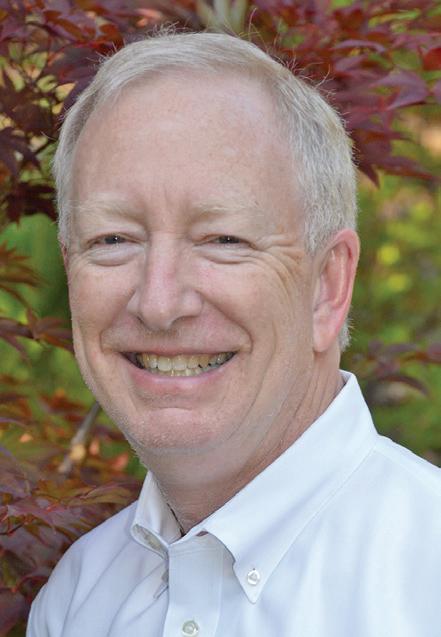
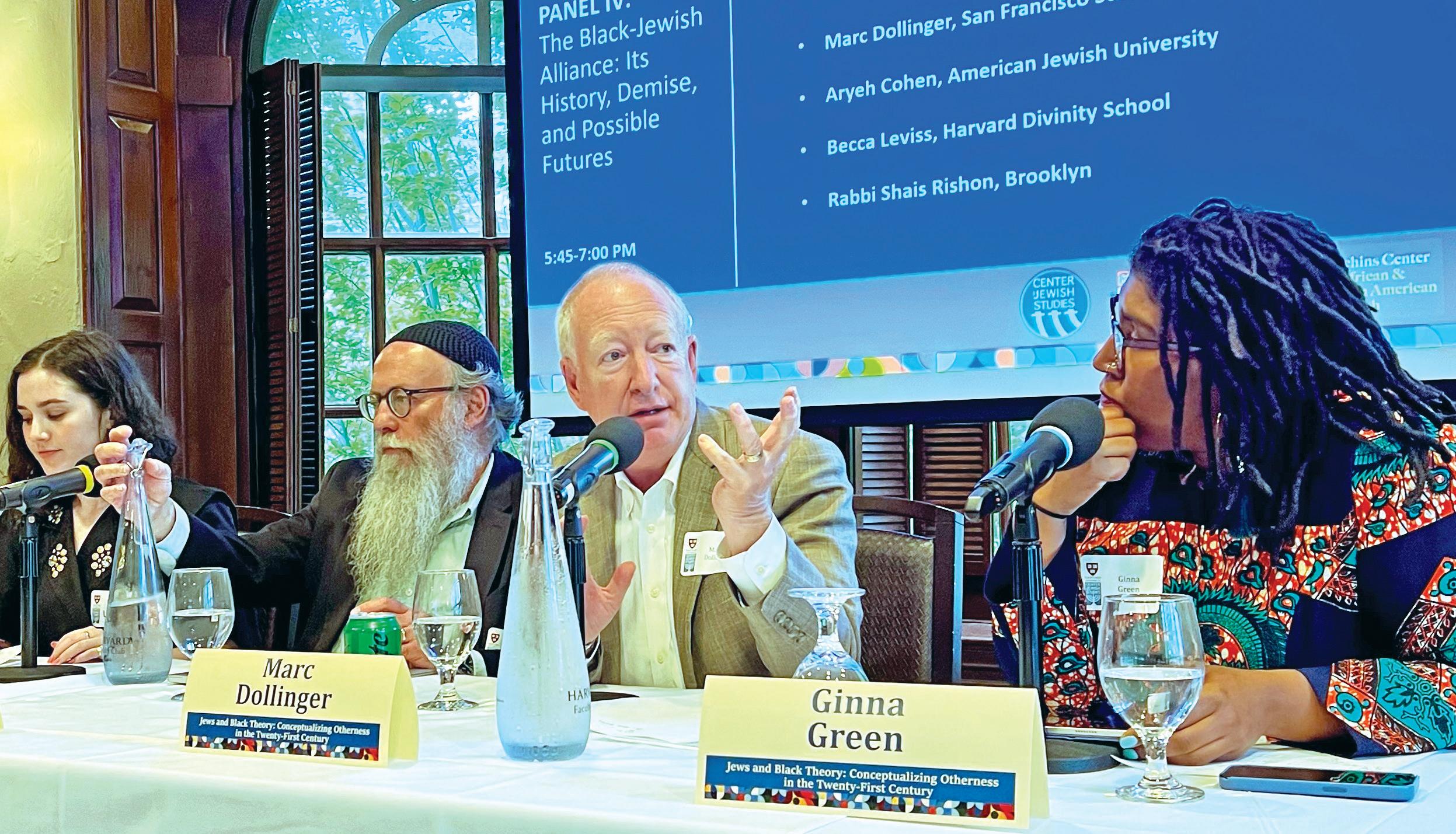
University Regent Mark Bernstein rebuked the university in June, citing what he called a “dangerous, deeply rooted culture of antisemitism on our campus.”
Just days ago, on Dec. 9, a Jewish university trustee woke to find the window of his home broken and his wife’s car painted with pro-Palestinian graffiti and a red triangle representing Hamas. It was the third such attack.
“They were saying because you consider Zionism part of your Jewish identity, you should not be on the University of Michigan campus. That’s antisemitism.”
Marc Dollinger
A left-wing communist group called the League of Revolutionary Students Washtenaw took credit for the protest at the Dollinger talk, alongside the anti-Zionist group Jewish Voice for Peace at the University of Michigan.
The two groups published an unsparing screed on Instagram explaining “why we disrupted Marc Dollinger’s talk.” It shows a photo of Dollinger with his eyes scribbled out.
and supports either a two-state solution or a “confederation” of Israeli and Palestinian territories.
After the disruption started, Dollinger said, a Michigan professor who is “trained in de-escalation” tried to engage the protesters.
“They were not interested in de-escalation,” he said. Campus police arrived after the protesters had left.
The incident was reminiscent of other attempts at U.S. universities to alienate or “deplatform” Jews who support the existence of Israel and who, activists say, support apartheid or even genocide. At UC Berkeley, progressive Oakland city councilor Dan Kalb was disinvited from a November 2023 talk on environmental stewardship because students learned that he supports Israel. At San Jose State, a talk in February about a two-state solution was interrupted by student protesters and a visiting Jewish lecturer was forced to leave with a police escort.
following a tumultuous year for on-campus protests and allegations of a hostile climate for Jews. In June, the U.S. Department of Education said the University of Michigan failed to respond adequately to 75 bias complaints, many related to anti-Jewish and anti-Arab bigotry, from August 2022 through February 2024.
As at many American universities, a group of Michigan students erected a tent encampment in the spring, calling for “intifada” and demanding the university cut all ties with Israel. Michigan’s encampment was one of the longest lasting and led to arrests when it was dismantled.
In September, a 19-year-old Jewish student reportedly was attacked near campus after being asked if he was Jewish.
The protesters attacked him as a “progressive Zionist,” which is a “particularly sinister strain of zionism,” they wrote, which “claims to understand the outrage of the Palestinian people” but “draws the line at resistance.” Their statement also took aim at a “false picture of Black and Jewish solidarity” and said Zionism plays a role in the “amerikan state’s counterinsurgency” against Black rights — using a spelling of American that conflates the country with fascism and the KKK.
Dollinger said he didn’t know exactly why he was targeted, but his “best guess” was that the university had included a blurb about his forthcoming book on the campus calendar. The book lays out “what it’s like to be a Zionist professor on campus these days,” he said.
For Dollinger, to be a Zionist means to believe fundamentally that “the State of Israel should exist as a national home.” He added that he is “pro-Israel and pro-Palestine”
The University of Michigan administration condemned the Dollinger incident in a statement on Nov. 23 and said the protesters may face disciplinary action.
“Shouting down speakers for any reason is unacceptable at the University of Michigan. It violates our academic mission and our commitment to free speech and diversity of thought,” the statement said. “Doing so in a way that, in this case, targeted a person because of their Jewish identity is particularly abhorrent and will not be tolerated.”
The statement continued: “The actions of the individuals who interrupted this event are a clear instance of antisemitism. The university is working to identify the perpetrators so they can be held accountable.”
Dollinger said the lecture continued after first opening the floor to students and other attendees to share their thoughts about the disruption.
“Where were we, before we were so rudely interrupted?” he told them. n
GABE STUTMAN | J. STAFF
San Francisco Hillel, a center for Jewish life serving university students across the city, was vandalized with violent graffiti carrying far-left messages.
SF Hillel said the vandal or vandals, whose crime was discovered the morning of Dec. 9, also “attempted to forcefully enter” the building, located about a block from S.F. State University.
Roger Feigelson, SF Hillel’s executive director, said he was surprised and “deeply frustrated” by the incident, adding that it was the first time the property has been vandalized since he joined the staff in early 2023.
Someone spray-painted “death to Western imperialism!” in all caps covering a garage door, as well as the word “Khaybar” over an SF Hillel sign. “Khaybar” apparently refers to the military victory in the Battle of Khaybar of early Muslims over Jews around 628 CE. It’s sometimes invoked by those calling for a return of Muslim military might and the destruction of Israel.
“‘Khaybar, Khaybar, oh Jews, the army of Mohammed will return!’ has been heard at numerous anti-Israel demonstrations around the world,” according to the Anti-Defamation League. “This chant can be perceived as a threat of armed violence or forcible expulsion against Jews today.”
Someone also spray-painted a red hammer and sickle, a symbol of communism, and a capital “A” inside a circle, a
symbol of anarchism, under SF Hillel’s sign.
Hillels across the country have long been targeted by activists because of perceived ties to Israel. Since Oct. 7 of last year, attacks have intensified. Hillel buildings at Boston University, University of Texas at Austin, University of Michigan, University of Minnesota and the Houston Hillel, which serves multiple campuses, have been hit, among many others.
In general, Hillel International, the umbrella organization for campus Hillels, includes in its mission fostering a connection to Israel. Hillel is the largest and most visible campus organization for Jews in the world.
SF Hillel is located in a house on a residential block near S.F. State, but serves nine campuses including the University of San Francisco, UC Law and UCSF. It hosts Shabbat dinners and social events, connects students with counseling and helps low-income students with basic needs such as food.
Alongside a rise in pro-Palestinian campus protests over the past 14 months, a campaign to “Drop Hillel” has gained some traction, including at UC Santa Cruz. The anti-Zionist group Students for Justice in Palestine launched the campaign, Moment magazine has reported. The campaign’s goals include one to “delegitimize Hillel as a supposed authority on and arbiter of antisemitism on college campuses,” according to campaign organizers.
Feigelson said the graffiti was quickly removed the day
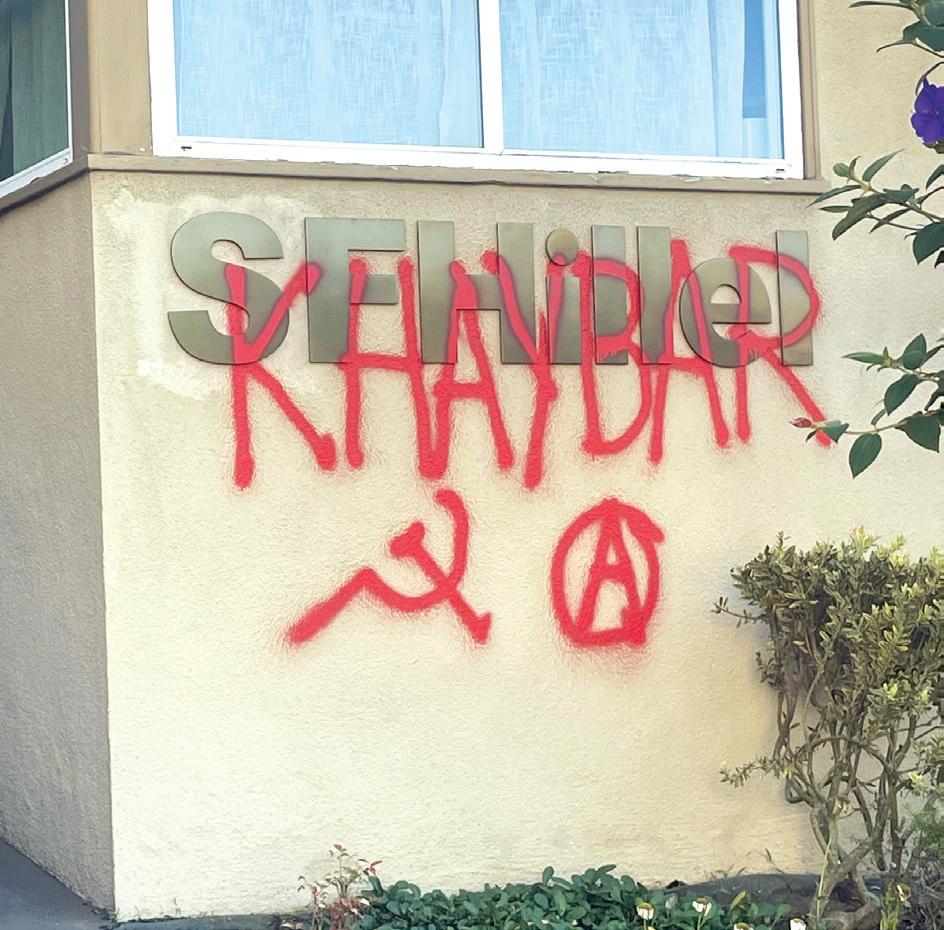
on
it was discovered. San Francisco police and campus police responded to the incident.
“This type of antisemitic vandalism and property damage to our building, the center of Jewish Life for students at nine San Francisco area schools, is deeply upsetting to our campus community,” Feigelson wrote in an email.
An S.F. State spokesperson also condemned the crime.
“We are deeply disappointed to learn that SF Hillel was vandalized recently with antisemitic graffiti,” university spokesperson Kent Bravo wrote to J. “As a crucial campus partner that provides community for SFSU’s Jewish students… SF Hillel is an integral part of our campus community. We condemn this behavior.” n
“Birds”
By Mimi Wekselblatt
Artwork by the Residents of
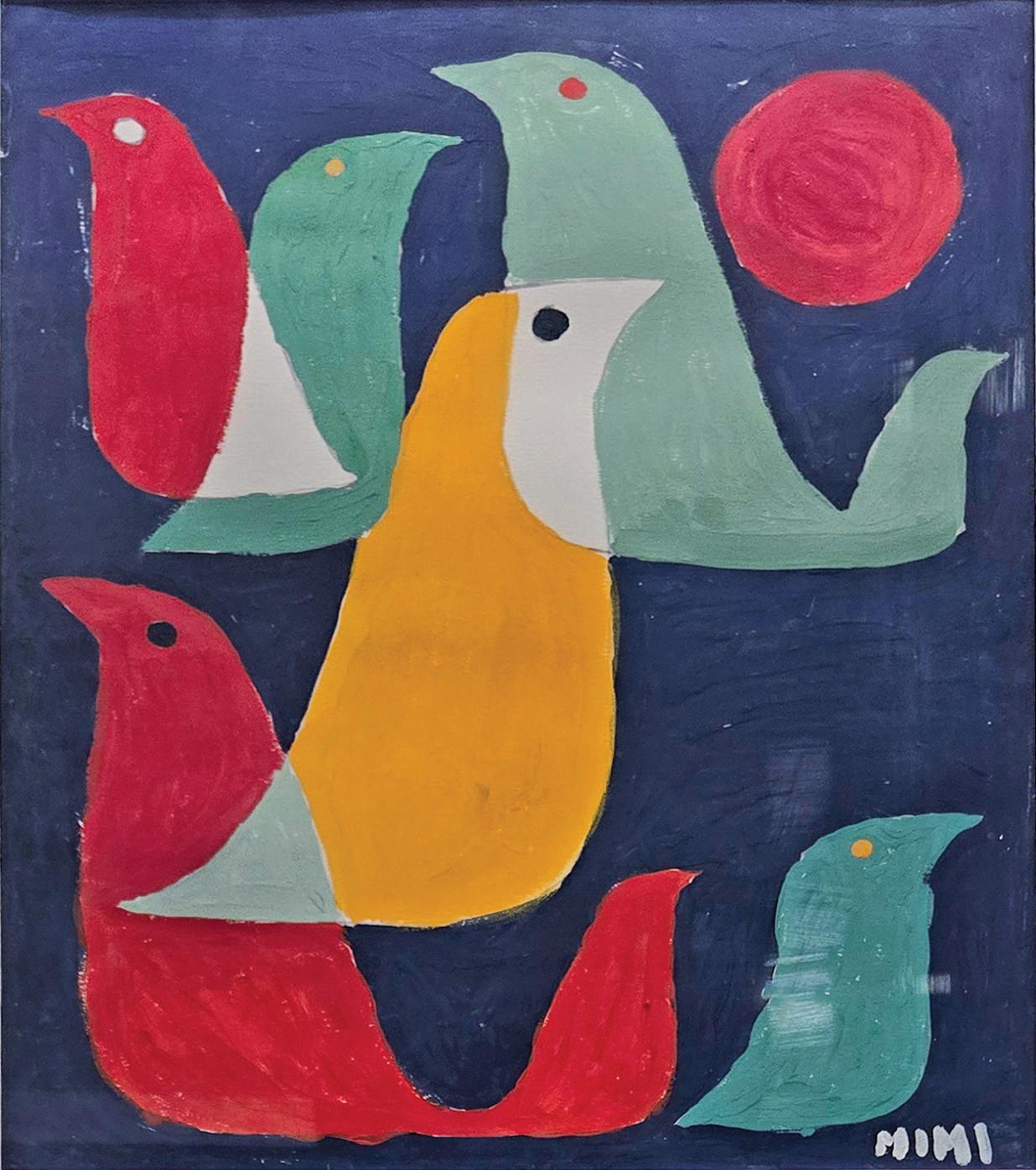
NIVA ASHKENAZI | J. STAFF
As a Druze Israeli in Haifa, Rafat Fadel was certain that his relationship with Nikola Clark, a Jewish American, would not last.
“I will never marry you, and I will never have kids with you,” Rafat recalled telling Nikola early on. “It’s up to you if you want to waste your time.”
Today, more than 30 years, a major move, a wedding, two kids and a bar mitzvah later, Rafat and Nikola sat down with J. in their Berkeley home to reflect on their unlikely love story and the future they want for their family.
The couple first met in 1993 at a hospital where Rafat, who was then serving in the Israel Defense Forces’ Golani Brigade, was recovering from knee injury. Nikola, an international student at Haifa University, had come to the hospital to visit an injured friend who served with Rafat.
She wasted little time in asking her friend for Rafat’s number. But apart from the fact that he spoke very broken English at the time and Nikola spoke only basic Hebrew, there was another major obstacle.
“You know, he’s Druze,” the friend told her.
“That doesn’t matter to me,” Nikola said. “Give him my number.”
Rafat, 52, was born and raised in Maghar, a village about 30 miles east of Haifa. A majority of its population is Druze, an Arabic-speaking ethno-religious group that lives in northern Israel, Syria and Lebanon. Within Israel, the Druze population has grown significantly, from 14,000 in 1949 to 150,000 in 2022, according to the most recent census data from Israel’s Central Bureau of Statistics.
Ever since they fought alongside Jewish forces during Israel’s 1948 War of Independence, the Druze have built a reputation of loyalty to the Jewish state. As the only Arab
an “open secret” in Rafat’s family. They suspected the couple was together, but only Rafat’s younger brother knew the extent of the relationship.
“They kind of knew I was with her. But nobody wanted to ask me,” he said. So he chose not to talk about it, either. “I went through a lot of guilt… It was a lot of pressure.”
For Nikola, 54, challenges came from a lack of open communication on her husband’s side of the family, the cultural differences and Rafat’s guilt.
“My mom basically cried for two weeks. She said, ‘He’s a traitor.’ She was upset.” But knowing there was a new grandchild, before long “she started asking for photos,” Rafat said. “I did feel like a mountain was lifted off my shoulders once everybody knew.” Today, he said, “Nikola is my mom’s favorite daughter-in-law.”
Rafat and Nikola both consider themselves secular, and neither one is religiously observant. However, they acknowledge the importance of passing down the values and traditions of their respective cultures to their children.
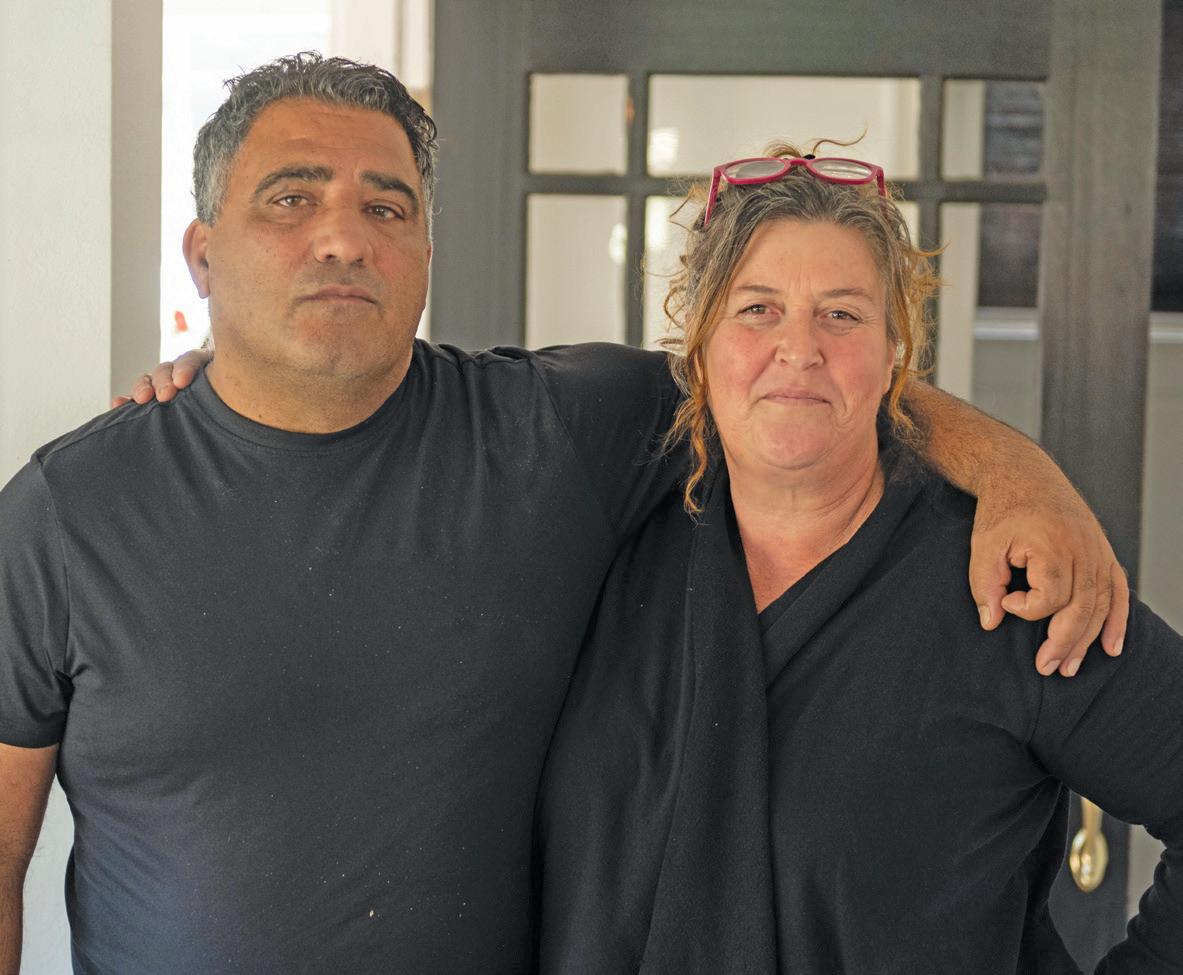
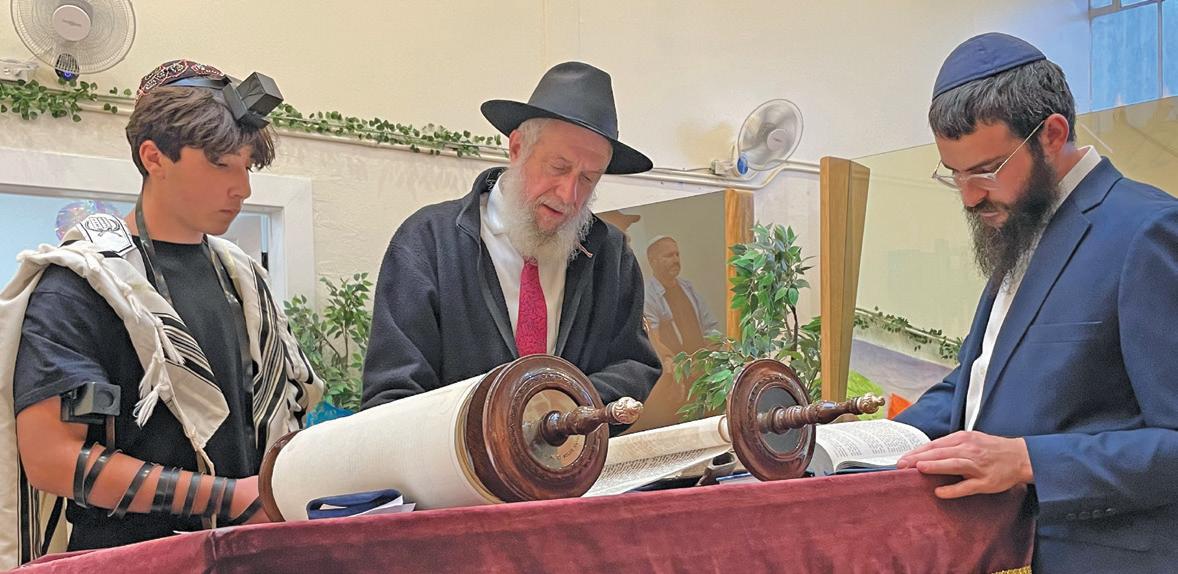
minority group subject to Israel’s military draft, the Druze are lauded for serving in senior positions in the IDF. However, they are still outspoken in their critiques of the Israeli government, such as the adoption of the controversial nation-state law in 2018, which essentially relegated the Druze and other minorities to second-class citizenship.
The Druze rarely wed outside of their faith. A 2015 Pew Research Center survey found over 80% of Druze respondents said they would be uncomfortable with the idea of their child marrying a non-Druze. Druze men occasionally date non-Druze women, but Nikola said friends warned her those relationships rarely lasted.
Rafat and Nikola became a rare exception to that norm. Yet he knew his family would not accept him marrying outside of the community. For the first 18 years, Nikola was
“Under normal circumstances, you meet each other’s families, and that didn’t happen. It was what it was,” Nikola said. “But as the years went on, it was very hard. It has not been an easy relationship for either one of us.”
Her family at home in Berkeley accepted the relationship but had practical concerns for the future. “You’ve got to come back,” her parents told her. “He’s not going to marry you. What are you doing?”
So she did just that. After four years of living together in Haifa, the couple broke up and Nikola returned to Berkeley in 1997. “We didn’t know if we’d ever see each other again,” Nikola said.
Their separation did not last long. After exchanging letters for a few months, Rafat joined her. They wed in August 1999 at Oakland City Hall.
He enrolled at Cal and earned a bachelor’s degree in landscape architecture in 2003. After 13 years in the industry, he started his own landscape architecture design company. Meanwhile, Nikola worked a variety of jobs, from aesthetician to project manager to bookkeeper, before transitioning to full-time parenting when their second child, Nilah, was born in 2015.
Up until 2011, Rafat did not open up to his family about his marriage. That was the year their first child, Rocco, was born, and he planned finally to share the news with his mother (his father died in 2003). Instead it slipped out when Rafat’s excited brother told her first.
“I feel like in America, you really have to have a solid ground of who you are, where you come from,” Nikola said.
Nikola was raised by a British nonJewish father and a Hungarian Jewish mother who was a Holocaust survivor; they moved together to the United States in the early 1960s. Though her family was not observant and did not belong to a synagogue, her grandmother hosted regular Shabbat dinners, a tradition Nikola remembers fondly.
“She did what she could to keep the tradition going. We grew up very much with Jewish values,” she said. “But then she died. … Suddenly that [tradition] was gone. It was just like there were no more Friday night dinners. Nobody was picking up the slack, nobody.”
Nikola decided to reinstitute Shabbat dinners in her own home once her children began attending preschool at the JCC East Bay in Berkeley. A couple of years ago, Nilah began to take a more active role in embracing the weekly tradition.
“She really gets into it. She calls herself the Shabbat Sheriff,” Nikola said of her daughter, now 9.
Nilah’s involvement in Jewish life provided her older brother with an opportunity to connect as well. Through the Gan Israel day camp run by Chabad Berkeley, Rocco met camp director and Emeryville Chabad Rabbi Mendy Blank, who offered to help the family celebrate Rocco’s bar mitzvah after finding out his 13th birthday was coming up.
The Chabad-Lubavitch movement opposes intermarriage and does not officiate at interfaith weddings. However, Blank explained that he is happy to help any Jewish child become more connected to their faith.
During the preparation, Rocco had a chance to pick a Hebrew name. He chose Rafael, an homage to Rafi, his father’s childhood nickname.
The family, including Rocco’s maternal grandparents, aunts, uncles and cousins, celebrated the bar mitzvah arranged by Chabad Berkeley in late September.
“The whole thing was just so entertaining,” Nikola said. “They made it fun, and they made it so casual. There was no right or wrong way to any of it. … It was just perfect for us.”
The family of four has returned to Israel twice to visit Rafat’s family. Though the current war has made it difficult to plan their next visit, Nikola and Rafat hope to return soon, possibly for a wedding in June. Nilah and Rocco, Nikola said, are lucky to have “two very rich cultures.”
Rafat wants to make sure his children are always aware of their family’s mixed heritage. “You cannot deny your kids their history,” he said. “You cannot deny your kids who they are.” n
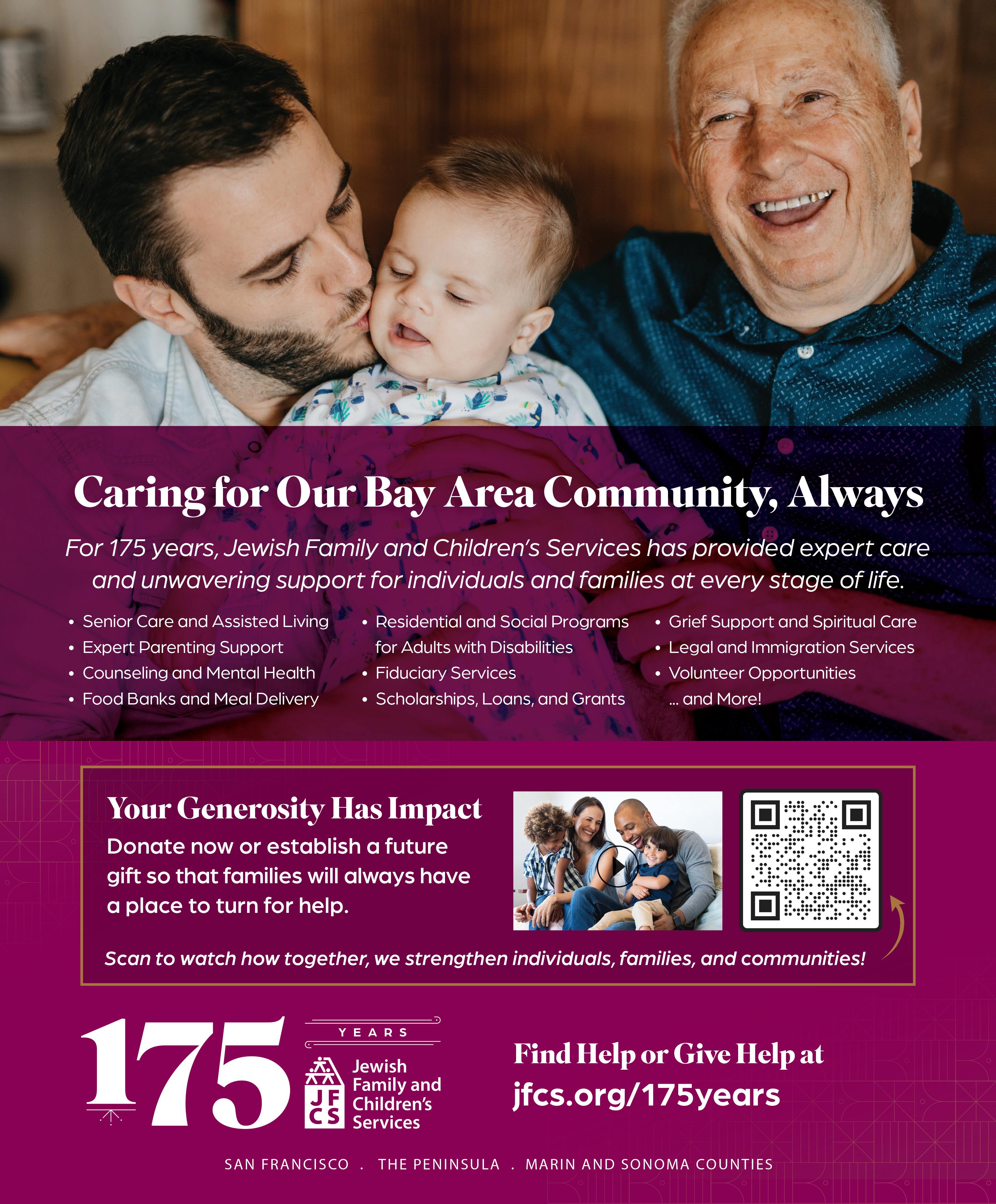
NIVA ASHKENAZI | J. STAFF
Ever since the release of “Screams Before Silence,” a documentary detailing the sexual violence of Oct. 7, 2023, Rabbi Nat Ezray knew he wanted to show the film to his congregants.
“This is not meant to be watched alone,” Ezray, who leads Congregation Beth Jacob in Redwood City, told J. “When you’re encountering something painful, something difficult, shocking and traumatic, we need to be together.”
The 57-minute documentary is the outcome of a project led by Sheryl Sandberg, a former executive at Meta, founder of LeanIn.org and a member of Beth Jacob since 2006. She joined Ezray at the Conservative synagogue for the Dec. 9 screening before an audience of more than 300.
The documentary was released on YouTube for free in April, but Beth Jacob wanted to use a public screening as an opportunity to hear from Sandberg, support one another and learn about the historical context of the sexual violence committed during Hamas’ deadly invasion of Israel.
That notion, she explained, was shattered soon after the attack. “It wasn’t just Oct. 7 that shocked me — of course, that was shocking,” she said. “What really shocked me was Oct. 8, 9, 10 and so on. And how just the sheer terrorism, sheer threat, not just to Judaism and to Israel, but to the American way of life, was being completely ignored.”
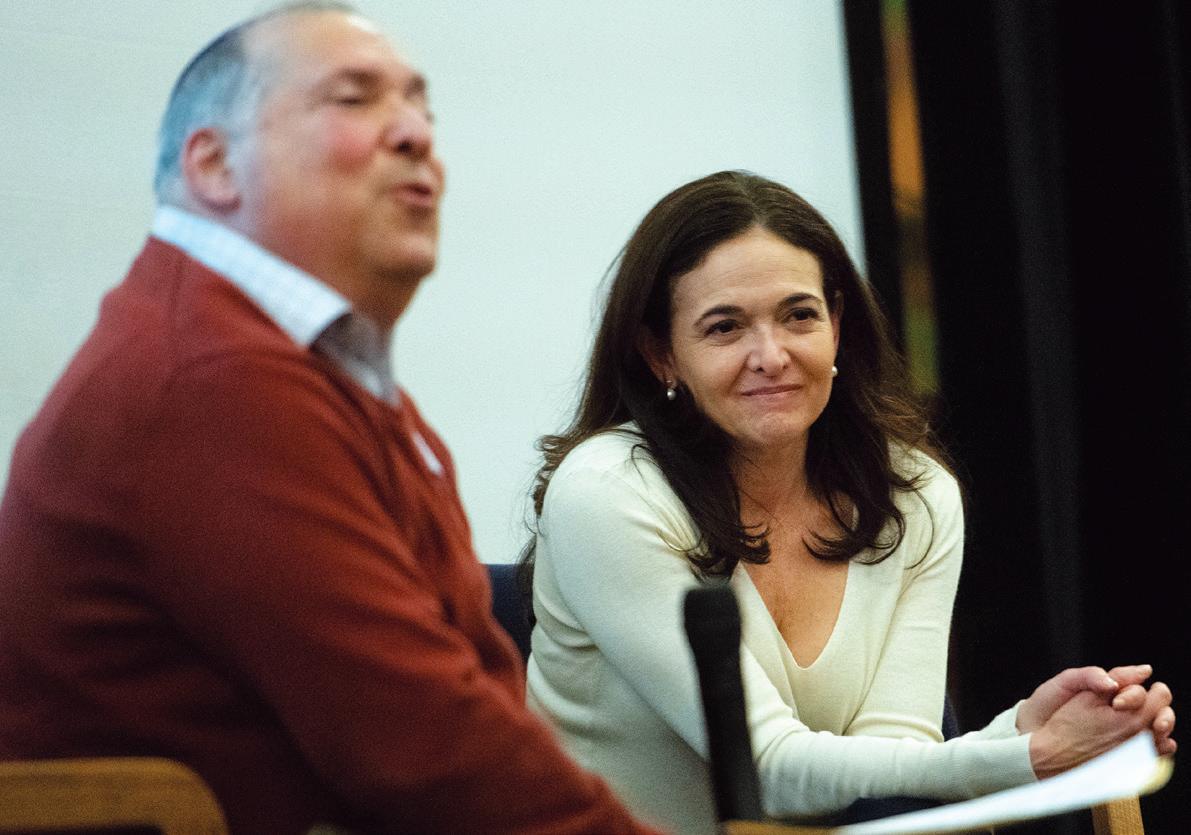
Since that wakeup call, Sandberg has spoken publicly about the absence of comment or delayed responses from human rights organizations about the accounts of sexual violence on Oct. 7. UN Women issued a statement addressing the attacks only in mid-January. A statement by the National Organization for Women did not mention Hamas by name.
“This is giving voice mainly to people who did not survive to tell the tale of what happened to them.”
Sheryl Sandberg on “Screams Before Silence”
Attendees were also offered information about mental health resources since they would be exposed to traumatic details that survivors, former hostages, first responders and forensic experts shared with Sandberg in the documentary.
Sandberg, who sat for a talk with Ezray prior to the screening, said the Oct. 7 attack and the world’s response have changed her, and her beliefs about how the world sees Jews.
“I think until Oct. 7, I believed –– falsely, I was wrong ––that antisemitism was something my parents told me about from my grandparents’ generation,” she said during her opening remarks.
“Screams Before Silence” has been translated into nine languages and viewed over 1.2 million times on YouTube.
“As you watch this,” Sandberg said, “what you’re going to understand is that this is giving voice mainly to people who did not survive to tell the tale of what happened to them.”
About 1,200 people were massacred that day.
Following the screening, the congregation heard from Stanford history professor Gil-li Vardi, who spoke to the historical precedent of sexual violence in times of war.
Violence against women is “recorded in almost every armed conflict in the past,” she said.
When rape is used as a tool of war, Vardi said, it is “meant to shatter communities. It’s meant to deprive victims and their families of their human dignity.”
However, she added, the use of and motives behind sexual
violence in warfare seem to have changed since the end of the Cold War. This especially applies to “unconventional warfare,” or fighting that does not solely involve national militaries.
“Because it’s not an army against an army, they tend to really blur the lines between combatants and noncombatants,” Vardi told J. in a follow-up phone interview. “The role of sexual violence in them is different. It’s not dysfunctional. It’s in fact part of the war goal.”
Not every armed conflict fits neatly into this model, though, and Hamas’ use of sexual violence on Oct. 7 is no exception. “The extent to which rape was premeditated is unclear to me,” she told the audience. “Had [Hamas] not been so keen on rape, they would have probably gone farther into [Israeli] territory, killing many more.”
Prior to the screening, Ezray introduced a group of therapists, counselors, psychologists and psychiatrists who could offer mental health support. Among them was Dr. Barbara Sommer, a psychiatrist at the Stanford School of Medicine. Sommer spoke about ways people can manage emotional response to the trauma expressed in the film.
“Here, we’re among friends,” Sommer told J. “And we all had the same exposure and we could talk about it. But then when you go home, and you turn the lights out, and you’re with your own thoughts, that’s where there could be a problem.… At some point, we all need to confront what we saw.” n
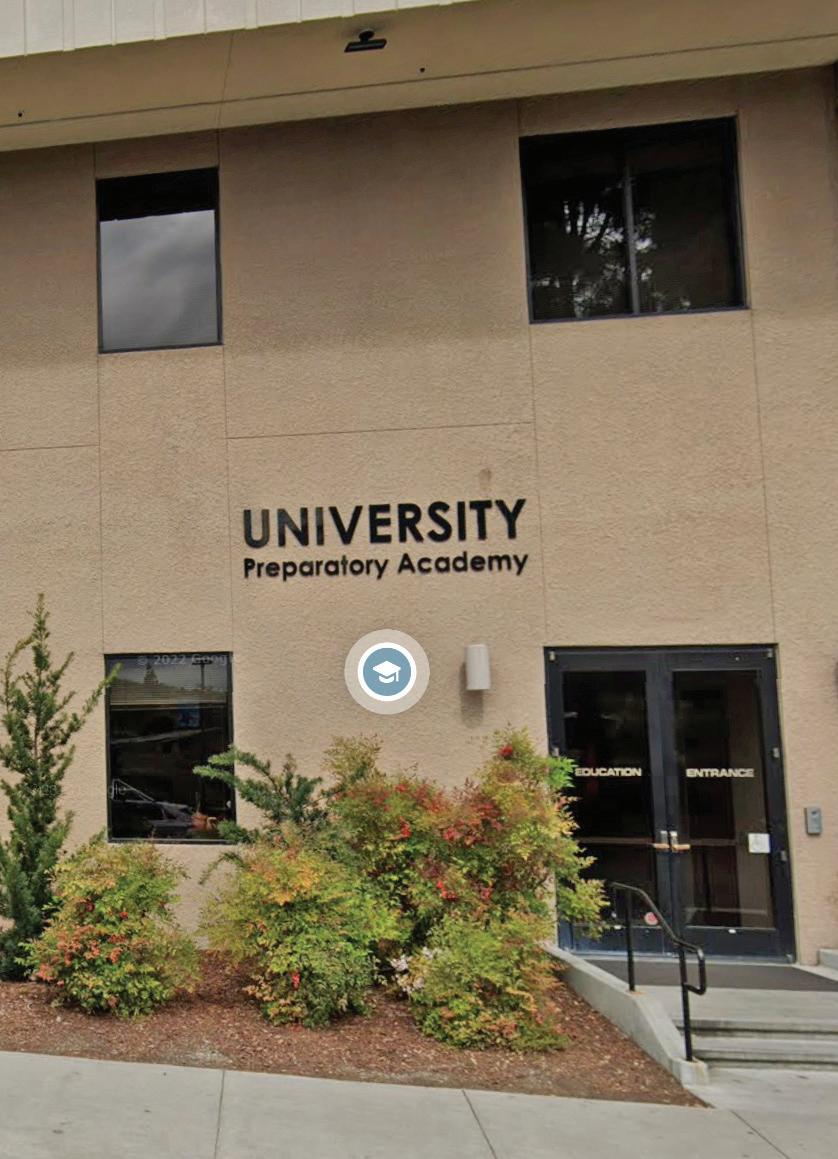
Uniform Complaint Procedures, the district needed to respond within 60 days.
The same month, Ella and Schweizer also joined dozens of American and Israeli Jews who packed into the Santa Clara County Board of Education meeting to speak against its proposed Gaza cease-fire resolution. (After hours of public comment, the resolution passed.)
Ella’s speech at that meeting caught the attention of the Bay Area Jewish Coalition, a grassroots network of American and Israeli Jews who have been volunteering to help dozens of families navigate the complicated complaint processes for Santa Clara County schools.
When the school district didn’t reply to Schweizer’s filing within the prescribed time, BAJC helped her escalate the complaint. The district finally responded after 113 days, saying the issue was not in its purview and recommending that Schweizer file a new complaint with the
California Department of Education, according to the lawsuit. That complaint was filed and is still pending, Schweizer said.
Having heard nothing from UPA since leaving the school, according to Schweizer, and with no further avenues to seek accountability for Ella, the family opted for the lawsuit.
Filed Oct. 23 of this year in the U.S. District Court for Northern California, the lawsuit names as defendants the county and state educational institutions along with individuals at UPA, including Porter, the dean of students, the head of student services and a school counselor.
The lawsuit seeks to hold the leaders and institutions accountable for “negligence,” “infliction of emotional distress” and violations of Ella’s constitutional rights.
“I thought it was important for people to know, so it won’t happen to others,” Ella said.
There are several lawsuits pending against Bay Area K-12 schools over reported
acts of antisemitism against Jewish students, as well as a proliferation of anti-Israel material distributed by teachers.
When asked about the growing number of lawsuits, Schweizer said, “That’s a club you don’t want to be part of.” But in the end, she said, the people who had a duty to protect Ella need to be held accountable.
“We say in Hebrew hadag masriach me’harosh, which means ‘the fish smells from the head,’” Schweizer said.
Ella, now approaching her 14th birthday, recently joined her school’s water polo team. She’s feeling safe confiding in her mom again and is overall enjoying eighth grade. She said she feels a mix of nerves and excitement about transitioning to high school next year.
“I’m just excited to start something new, because for the last year, I’ve been bouncing between two worlds, between UPA and between my current school,” Ella said. “I’m excited to have a new school where no one knows me for what happened.” n

J. STAFF
J. news sta ers won recognition from their Bay Area peers at the San Francisco Press Club gala on Dec. 4, taking home 13 journalism awards for writing and photography, more than double last year’s total.
News editor Gabe Stutman, sta writers Emma Goss and Maya Mirsky, photographer Aaron Levy-Wolins and former culture editor Andrew Esensten won five first-place awards, three second-place awards and five third-place awards.
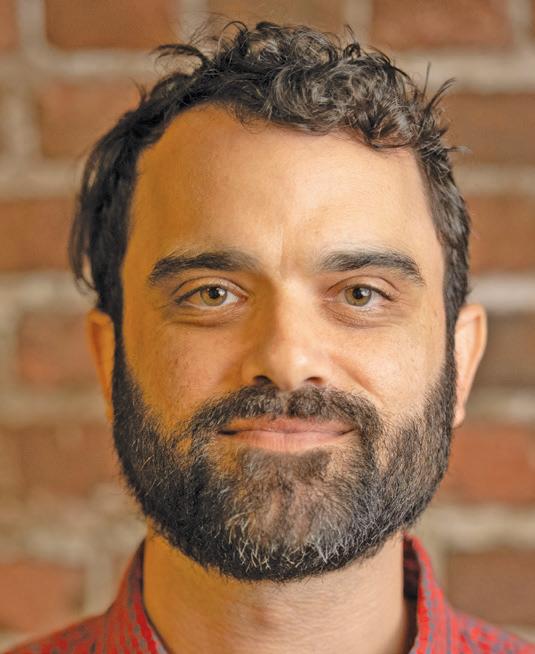
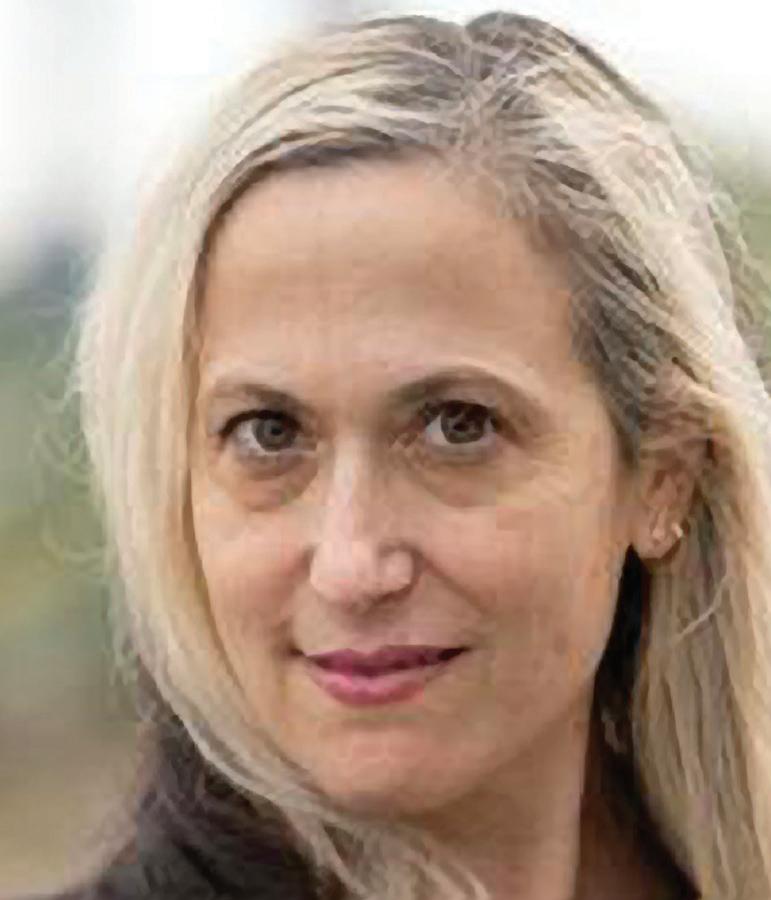
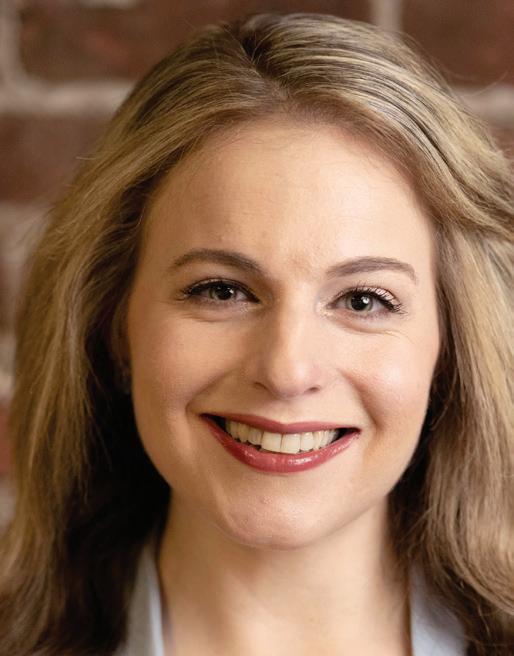
Stutman, Goss and Mirsky took first place in the “breaking news” category for “‘I’m screaming for help’: Jewish students face violence at UC Berkeley Israel talk,” a joint-e ort article about a shocking protest at Cal in February when activists broke into the building where Israeli speaker Ran Bar-Yoshafat was to appear.
Goss also won two first-place awards for feature writing, one about younger generations clicking with mahjong,
and the other about Jewish students at Stanford hiding their identities in response to antisemitism and anti-Israel activity on campus.
Stutman won first place in the “commentary” category for his analysis of Gaza campus protests in the wake of Oct. 7 and the Israel-Hamas war. And Levy-Wolins received his first-place award in the “photography/news” category for an image of police and sheri deputies trying to control a crowd of angry protesters outside a Friends of the Israel

Defense Forces Bay Area gala in San Carlos on Nov. 5, 2023.
Levy-Wolins took two second-place awards for his photography, one for his photo essay of queer and trans Jews at this year’s S.F. Pride, and the other for his news photo of a young man raising a Palestinian flag during a high school student walkout in San Francisco on Oct. 18, 2023. Esensten won second place for his sports feature on Jewish Sacramento Kings fans rallying as the team headed to playo s.
J. also took home five third-place awards. Levy-Wolins won for his news photo (on facing page) of an Israel supporter surrounded by protesters during a Berkeley City Council meeting in March, and for his feature photo of a woman cradling her infant during an emotional gathering at Congregation Sherith Israel in San Francisco the day a er the Oct. 7 a acks.
Goss took third place for her news story on dozens of Jewish families leaving Oakland public schools in response to safety concerns.
Mirsky took home awards for her series on the Oakland Unified School District, including the Oakland teachers

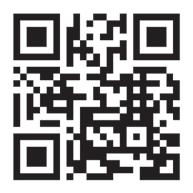

union’s position on Gaza, the union’s statement encouraging involvement in the “growing anti-apartheid movement seeking freedom for Palestine” and its pro-Palestinian activism in the classroom. She also won for her investigation into East Bay English teacher Henry Bens, who was called out for distributing antisemitic conspiracy material in the classroom, and the subsequent tepid response by Mt. Eden High School and the Hayward Unified School District.
“Our journalists work hard every day to tell the story of Northern California’s Jews with flair, nuance and a deep commitment to accuracy,” said J. editor-inchief Chanan Tigay. “Their reward is in the impact these stories and photos make in the Bay Area and beyond, and this large haul of S.F. Press Club awards is a wonderful testament to their amazing work.”
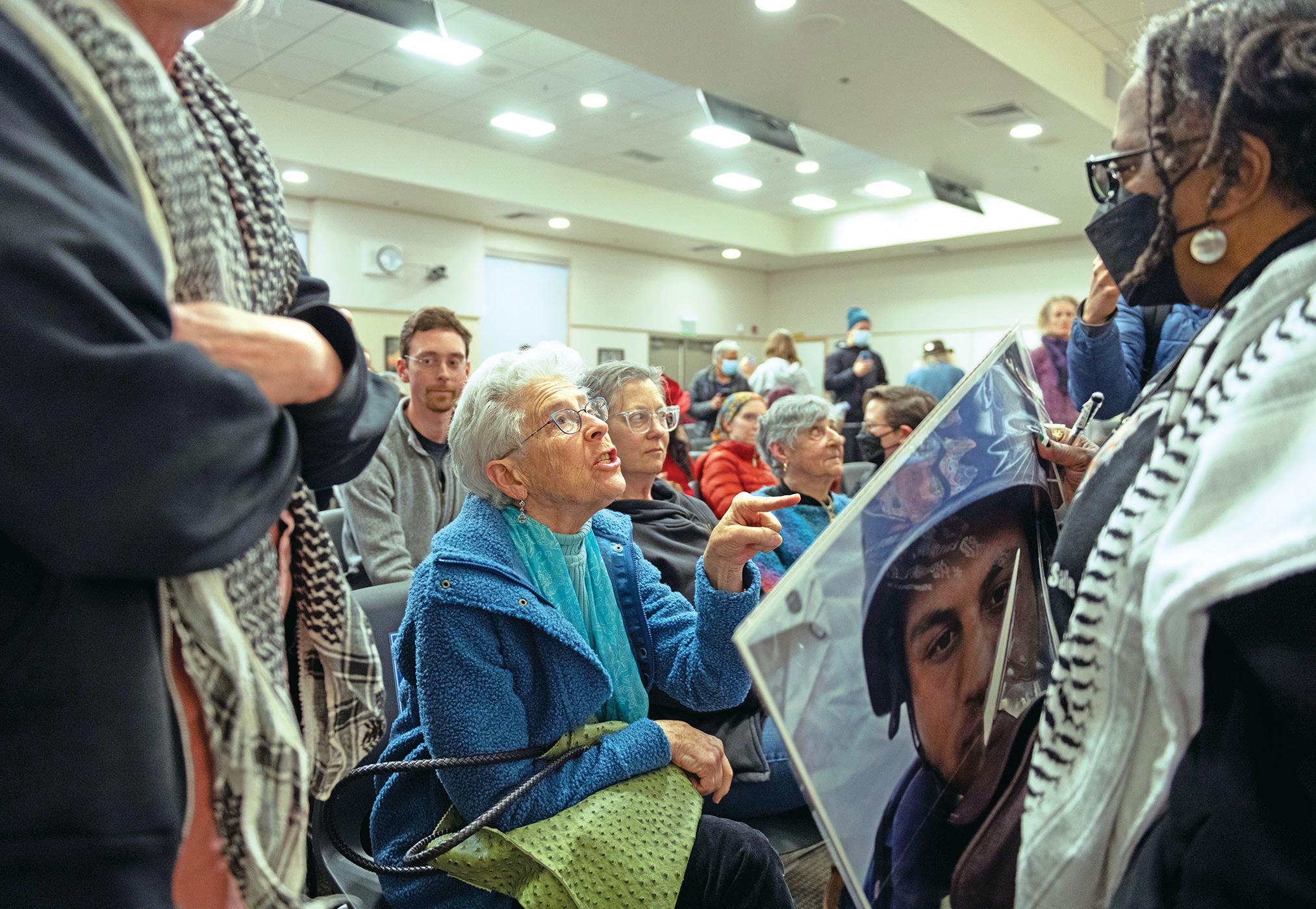
year, J.’s journalists stepped up, and all are extremely deserving of these awards.”

“I’m incredibly proud of our team’s work, but I’m not surprised,” added J. CEO Jo Ellen Green Kaiser. “Our news staff is one of the best out there. Through a very difficult
The San Francisco Press Club ceremony, held at the historic Julia Morgan Ballroom, recognized exceptional work published from Jan. 1, 2023, to June 30, 2024, by news outlets in the Greater Bay Area. Goss, who is also a freelance reporter for NBC Bay Area, took second
place in the “television news” category for her story on canceled SAT testing in Oakland. Other winners with ties to J. included three former staff writers — Mission Local managing editor Joe Eskenazi, Bloomberg News reporter Eliyahu Kamisher and Reuters correspondent Max Cherney — as well as J. board member and Bloomberg Businessweek investigative writer Peter Waldman. J. was honored alongside media outlets including the San Francisco Standard, Mission Local, San Francisco Examiner, San Francisco Chronicle, El Tecolote, Berkeleyside and KQED. n
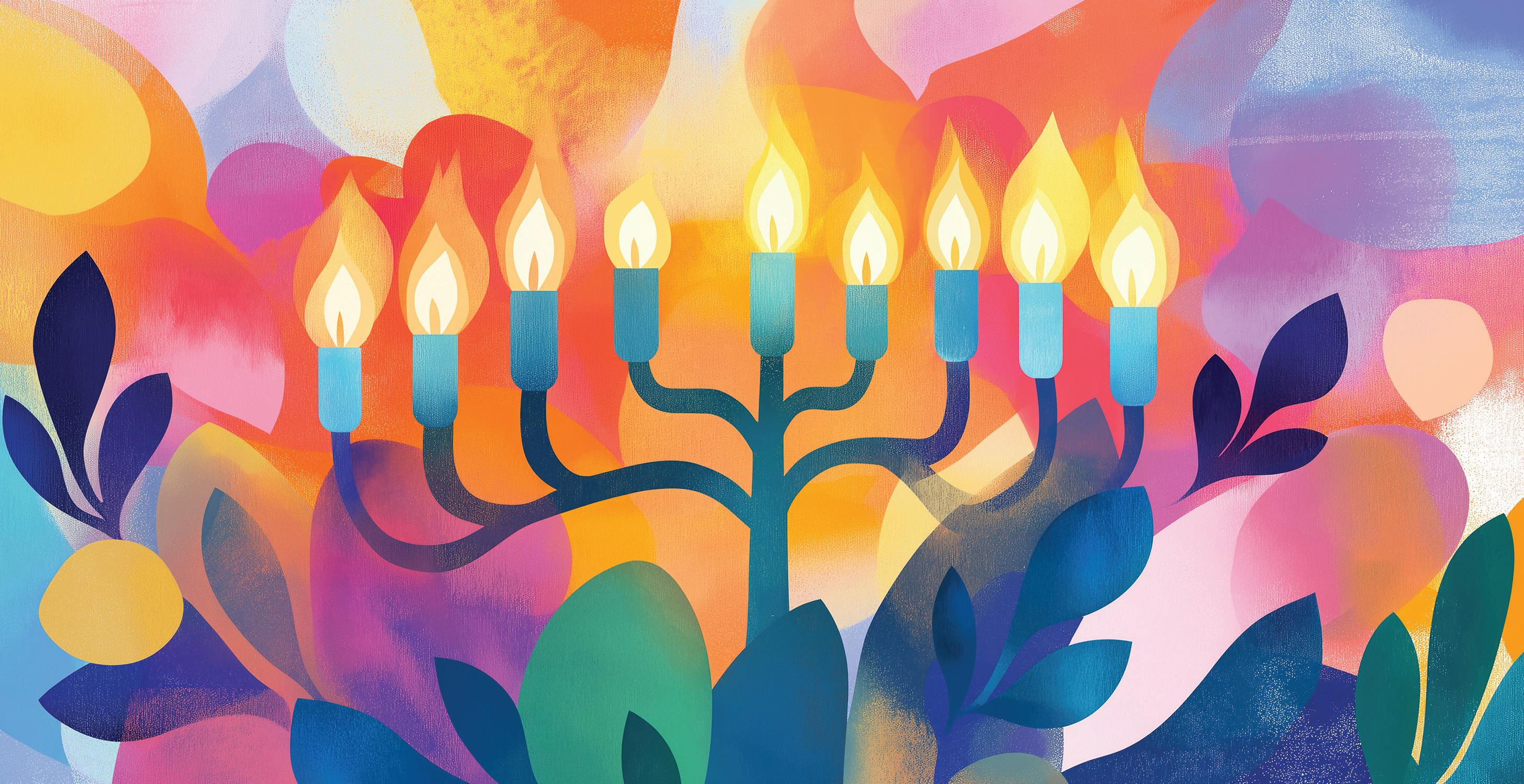
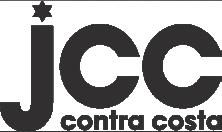
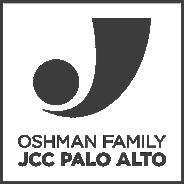
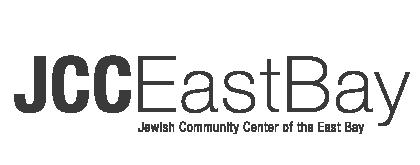
Just in time for holiday enjoyment or gifting, we are offering a celestial deal on our acclaimed wine:
93+ Points Robert Parker, Wine Advocate
“Impactful notes of Black Forest cake and ripe plums. Full-bodied, rich and spicy with seamless freshness and fantastic length.”
2018 Stardust Cabernet Sauvignon, Dellar & Friedkin Vineyard, Napa Valley.
$70 (normally $100), and $35 from each bottle sold will be donated to J.
{ If you are of a charitable mind, it’s really paying $35 for a special $100 wine. L’Chaim! }


San Francisco’s Congregation Emanu-El is nearly 175 years old, but it’s still making history.
In the past 18 months, three new rabbis have joined the clergy team, and longtime Emanu-El Rabbi Ryan Bauer has taken the position of senior rabbi.
Bauer, who grew up in Portola Valley and a ended nearby Congregation Beth Am in Los Altos Hills, might have foretold
following the retirement of Senior Rabbis Beth and Jonathan Singer. e synagogue, which now has 1,850 member households and is in the midst of a massive renovation, celebrated Bauer with a formal installation on Nov. 15.
Part of his work over the past year has been recruiting new clergy members; there are now five rabbis and two cantors, as well as a stable of scholars and emeritus clergy.
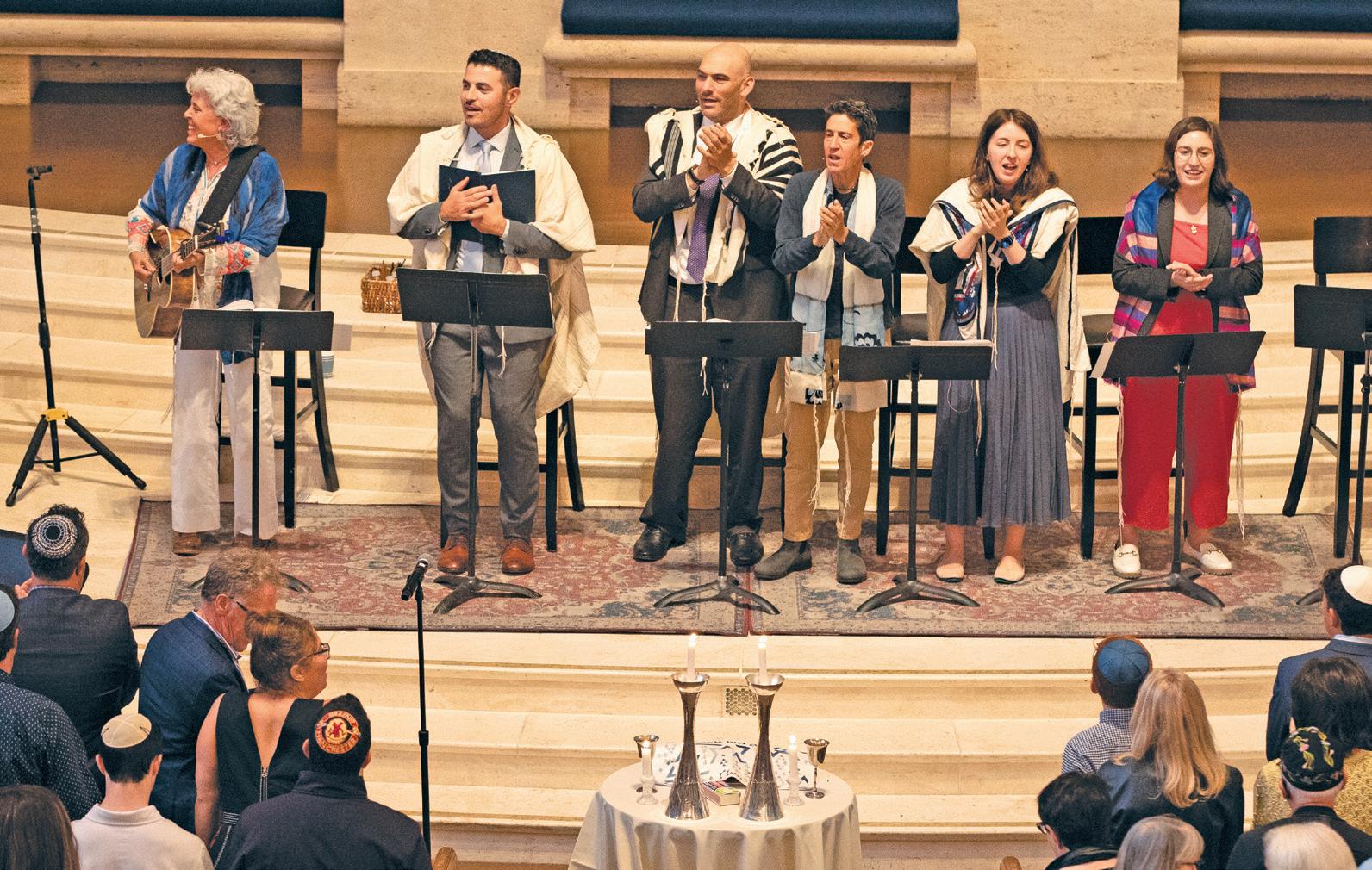
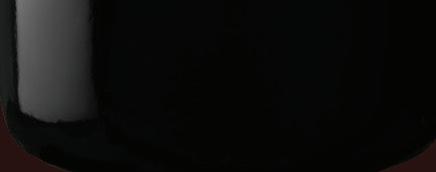




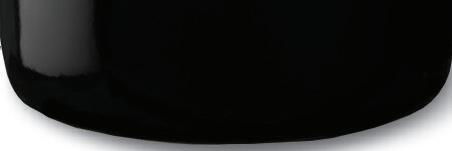
Order a case and the shipping is free! Offer expires 1/2/25 and is only available in California.
Order at stardustwines.com
Use code J2day at checkout.
his future some 20 years ago. Back then he was a rabbinical student at Hebrew Union College with his sights set on working at Emanu-El.
He knew he wanted to have a “large impact” and felt he could do that at the “biggest synagogue with the most families.”
“I’m always guided by the power of engagement, of intimacy with the tradition.”
Assistant Rabbi Noah Westreich
His work at the Reform synagogue began with a summer internship in 2005, followed by a full-time internship. Bauer was then ordained in 2007 and o cially joined Emanu-El’s sta . He has dedicated his entire rabbinic career to Emanu-El and, since July, has led the congregation as senior rabbi
One of the three recent hires joined Emanu-El’s ranks in 2023, while two have been on board since July.
“It’s an amazing team,” Bauer, 47, told J. “Super menschy, amazing, really smart and all very focused on the ‘we,’ not the ‘I,’ in a profound way.”
Assistant Rabbi Noah Westreich, 32, has been at Emanu-El since July 2023 but still feels “brand new,” he said.
Before starting his rabbinical studies at HUC, Westreich was immersed in Talmudic study, specifically at Svara, a Chicago-based yeshiva focused on engaging in Talmud through the “lens of queer experiences.”
Soon a er joining Emanu-El, Westreich led a six-part series of Talmud classes in the “Svara style” as part of the congregation’s adult-education programming.
“I see my mandate as o ering more Talmud to more people,” he said. “Every class that I come to as a teacher … I’m always guided by the power of engagement, of intimacy with the tradition. … I want to do that again, and do that more.”
Rabbi Madeline Budman never expected
to find her dream job in California. When the Virginia-born rabbi was ordained in June at HUC Cincinnati, that was as far west as she’d ever been. Budman, 28, applied to synagogues across the country but found the Emanu-El position of rabbi-educator to be a perfect fit.
As an intern at Rockdale Temple in Cincinnati, Budman said, her work with b’nai mitzvah students — or “people in formation,” as she described them — was profoundly meaningful.
“They are people at turning points in their lives, and they have all these questions, and they’re entering a new stage,” she said. “I love being with people as they’re asking those questions and figuring things out.”
Budman arrived at Emanu-El in July, at the same time the congregation welcomed Associate Rabbi Rena Singer.
Singer, 33, is the eldest daughter of Emanu-El’s former senior rabbis, but she said it was important for her to be considered for the position in her own right.
She did not tell her parents she was applying for the job and instead reached
“It’s an amazing team. Super menschy, amazing, really smart and all very focused on the ‘we,’ not the ‘I,’ in a profound way.”
out directly to Bauer. At the initial stages of recruitment, the search committee reviewed applications without knowing the identity of the candidates. Singer’s name was shared only after the members agreed unanimously that she was the best candidate for the job.
After graduating from HUC in New York City and becoming ordained in 2020, Singer worked at Temple Sholom, one of Chicago’s oldest Reform synagogues. During her four years there, she was involved in the Shalem Initiative, the congregation’s racial and ethnic diversity working group.
At Emanu-El, Singer will build upon her prior community work by leading the Tzedek Collective, a social justice action initiative known for its refugee resettlement assistance program.
“We want Emanu-El to continue to be perceived as a place where … people can plug into what it means to pursue repair of the city and of the world as Jewish people specifically” and “as a Jewish community saying we want to make the world a better place,” she said. n
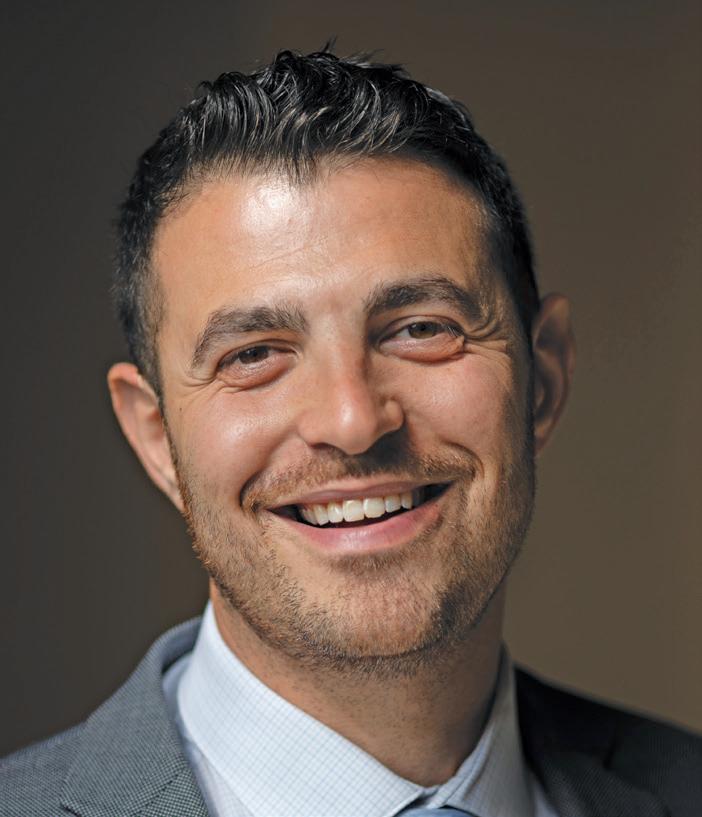
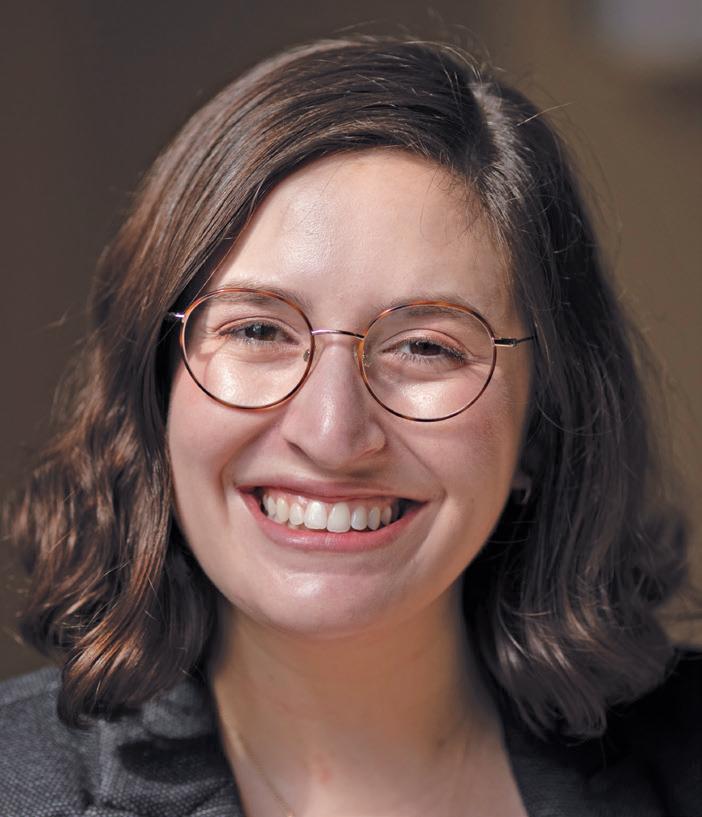
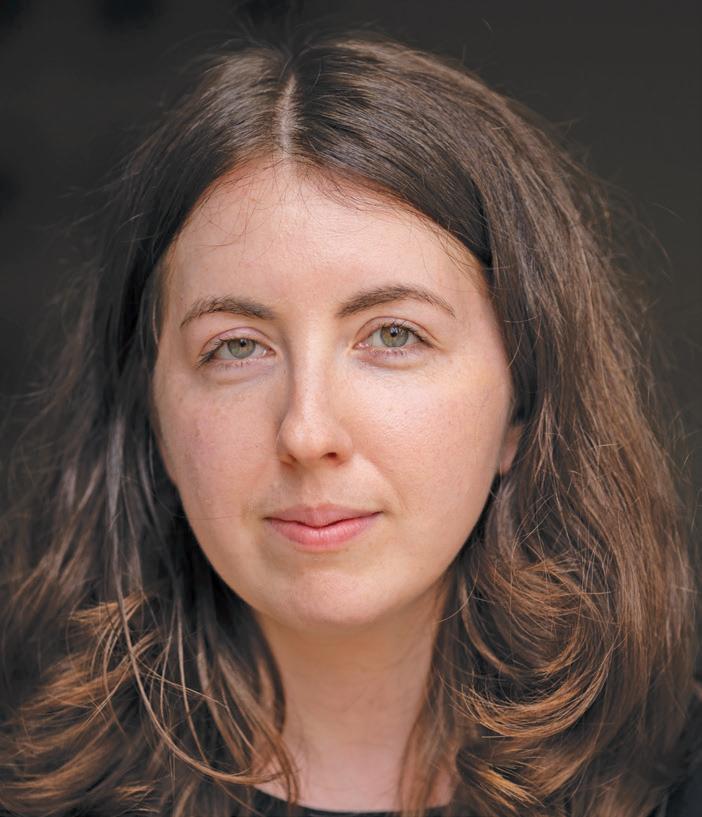

MAYA MIRSKY | J. STAFF
Seven pro-Palestinian protesters are facing felony charges over blocking the Golden Gate Bridge in April, though a judge dropped most misdemeanor charges related to the incident, a San Francisco District A orney’s O ce spokesperson told J. on Nov. 26. e seven will be arraigned on Jan. 6.
e announcement that Superior Court Judge Brendan Conroy had dropped 32 of the 44 charges filed against 26 protesters was reported earlier by wire service Bay City News.
Nuha Abusamra, a deputy public defender who represents some of the seven people charged with felonies, called the judge’s decision a win.
“ e court’s, and the DA’s, dismissal of the vast majority of the charges against Golden Gate Bridge protesters … is a huge vindication of our position that the DA drastically overcharged these cases,” Abusamra said in a statement provided to J. “We will continue to fight the remaining charges.”
e district a orney’s o ce announced in August that 26 people were being charged in connection with the protest, including eight with felony conspiracy. e rest were charged with misdemeanors including false imprisonment and obstruction of a thoroughfare. e protesters dubbed themselves the “Golden Gate 26.”
e charges stem from the April 15 blockade on the
bridge, where protesters stopped San Francisco-bound tra c during morning rush hour, calling to “stop the world for Gaza.”
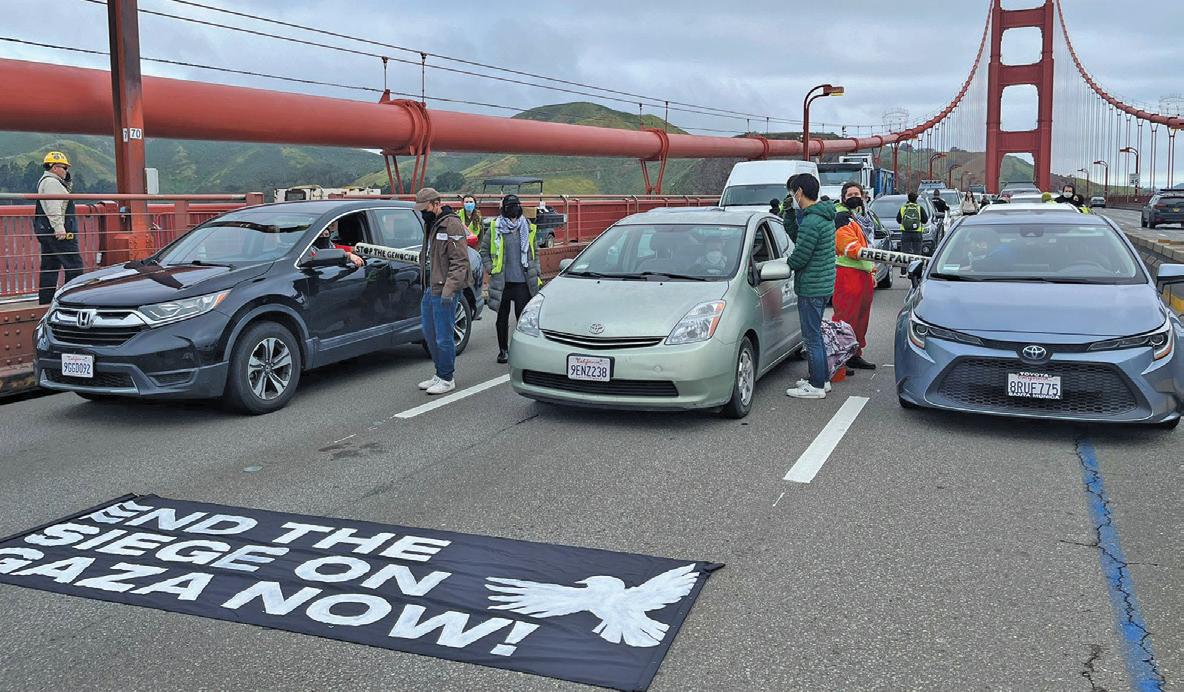
Both directions of the bridge were closed for nearly five hours, according to the California Highway Patrol.
Photos and videos showed protesters si ing inside or standing beside parked cars, holding signs saying “End the siege on Gaza now!” and waving Palestinian flags. Some were linked together using a “sleeping dragon” maneuver, in which protesters connect their arms inside PVC pipes that must be cut through to separate them.
e DA’s o ce described what it said were some of the impacts of the protest, including a disabled child who was trapped on a school bus for four hours; a person who missed a pre-op appointment for brain surgery; a mother who did not have water for her infant formula; and a surgeon who had to cancel surgery scheduled for the day because of the tra c jam.
e judge’s decision on Nov. 22 means that one person’s felony case was dropped. Conroy did not downgrade any of the other felony charges pending discussion about potential losses incurred by alleged victims or how the Golden Gate Bridge Authority would be compensated for the loss in tolls,


according to KQED.
A statement from the DA’s o ce sent to J. said that several misdemeanor charges were upheld, including false imprisonment, trespassing to interfere with a business, obstruction of a thoroughfare, unlawful assembly, failure to disperse at a riot and failure to obey a lawful order. e arraignment set for January was originally scheduled for Dec. 6.
Je Wozniak, a criminal defense lawyer representing some of the pro-Palestinian protesters, declared a victory.
“Today’s decision is a huge win for our clients and the community at large,” Wozniak said, according to Bay City News.
“ e clients know their actions were just, taken to speak up for the thousands of Palestinians murdered in the past year and that the initial, overly harsh charges were merely an e ort to silence their activism.”
However, DA o ce spokesperson Randy Quezada called it “pre y significant” that the felony charges will proceed. “It can go to trial,” he said. ■





GABE STUTMAN | J. STAFF
A man who investigators say shot two kindergartners at a Christian school in Northern California may have been animated by the delusion that he was part of a paramilitary force combating the “genocide and oppression of Palestinians.”
Glenn Litton, 56, shot two boys with a handgun on Dec. 4 at Oroville’s Feather River Adventist School and then turned the gun on himself before law enforcement arrived, authorities said.
The two victims, ages 5 and 6, were hospitalized in “critical but stable” condition, officials said the day after the shooting. “They have a very long road ahead of them, in terms of recovery,” Sheriff Kory Honea said at a press conference.
The shooting at the Seventh-day Adventist school shocked Oroville, a town of 19,000 about 70 miles north of Sacramento. “We are absolutely devastated by this senseless act of violence,” said an emotional Laurie Trujillo, a spokesperson for the Northern California Conference of the Seventh-day Adventist Church, during a joint press conference with law enforcement on Dec. 5.
Feather River Adventist School has roughly 30 students, according to its website. The church temporarily closed all of its schools in Northern California.
While officials are still trying to determine a motive, investigators shared information that appeared to provide some insight into the suspect’s thinking. Litton had a lengthy
rap sheet dating back to his teenage years. He had shown a pattern of thefts and identity fraud, though had no known record of violent crime.
Litton “has severe mental health issues going back to age 16,” Butte County District Attorney Mike Ramsey said at the
“[The children] have a very long road ahead of them, in terms of recovery.”
Butte County Sheriff Kory Honea
press conference, though law enforcement officials said they were not aware of his official diagnosis.
Honea shared Litton’s reference to Palestinians during the press conference. He characterized it as “written information that we received that we believe came from him.”
The information was transcribed by law enforcement under the header “Suspect’s Motivation.” It read:
“Countermeasure involving child executions has now been imposed at the Seventh Day Adventist school in California, United States by The International Alliance. I, Lieutenant Glenn Litton of the Alliance carried out countermeasure in necessitated response to Americas involvement with Genocide and Oppression of Palestinians along with attacks towards Yemen.”
Investigators said they are taking the statement seriously, even as it seemed delusional. “I will tell you that we have been working diligently to try to determine if there is in fact an International Alliance,” Honea said. “At this point we have not been able to find any organization that calls themselves the International Alliance and that is active in this regard.”
It was not clear why Litton targeted the school. Litton himself was once a member of the church.
The Seventh-day Adventist Church is a Protestant denomination that, like Judaism, observes Sabbath on Saturday. The church has roughly 1.2 million adherents in the United States.
When news of Litton’s statement broke, some pro-Israel social media accounts held it up as evidence of violence in the pro-Palestinian movement. Others compared the incident to that of Aaron Bushnell, a former member of the U.S. Air Force who died after setting himself on fire in February in front of the Israeli Embassy in Washington, D.C., in protest of what he called Israel’s “genocide” of Palestinians.
Law enforcement said that Litton was well known to them and had been homeless before the attack. In 2015 and 2016, he pleaded guilty to making fake passports using the stolen identities of prison inmates. More recently, Litton was allegedly found with a forged driver’s license under the fictitious name “Michael Sanders.” In March, law enforcement said he was accused of stealing $1,166 from a CVS in Phoenix on his second day of work there. n
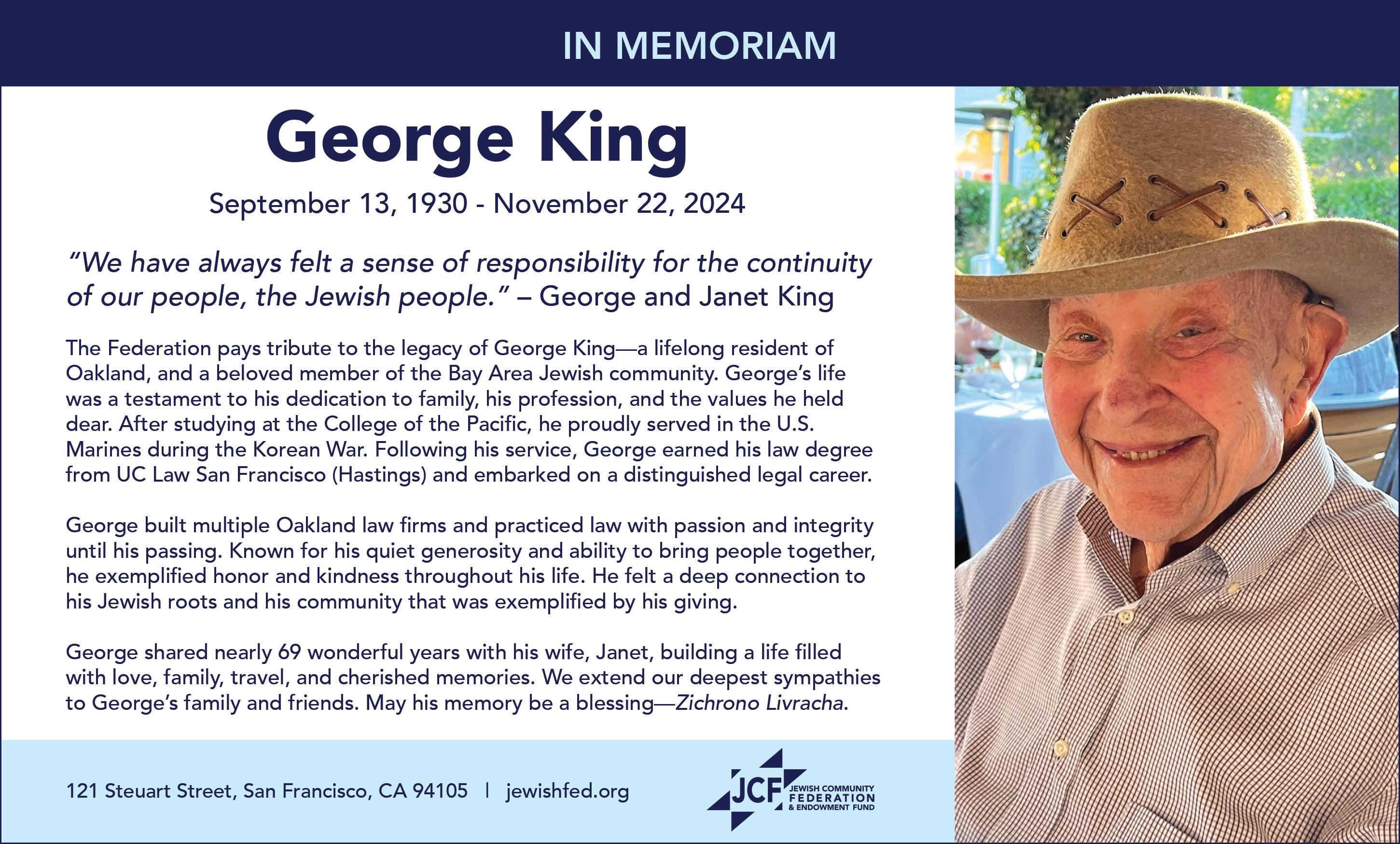



Wishing you a Happy Hanukkah!


Our Gift Shop offers a selection of Judaica for Hanukkah (menorahs, Hanukkah candles, chocolate gelt, dreidels, etc.), holidays, Shabbat, Havdallah, simchas and special occasions, including jewelry, cards, candles and items to serve all your Jewish needs.
Your purchase helps fund programs supported by the Women of Rodef Sholom.
Free delivery in Marin until December 21!




Mon-Thurs 10-3, Fri 11:30-2, Sun 10:-12:30 http://wrs-giftshop.square.site • (415) 640-7868
200 N. San Pedro Road, San Rafael (Osher Marin JCC)
Place an ad in our Food Section Call 415.263.7202 or your ad sales representative

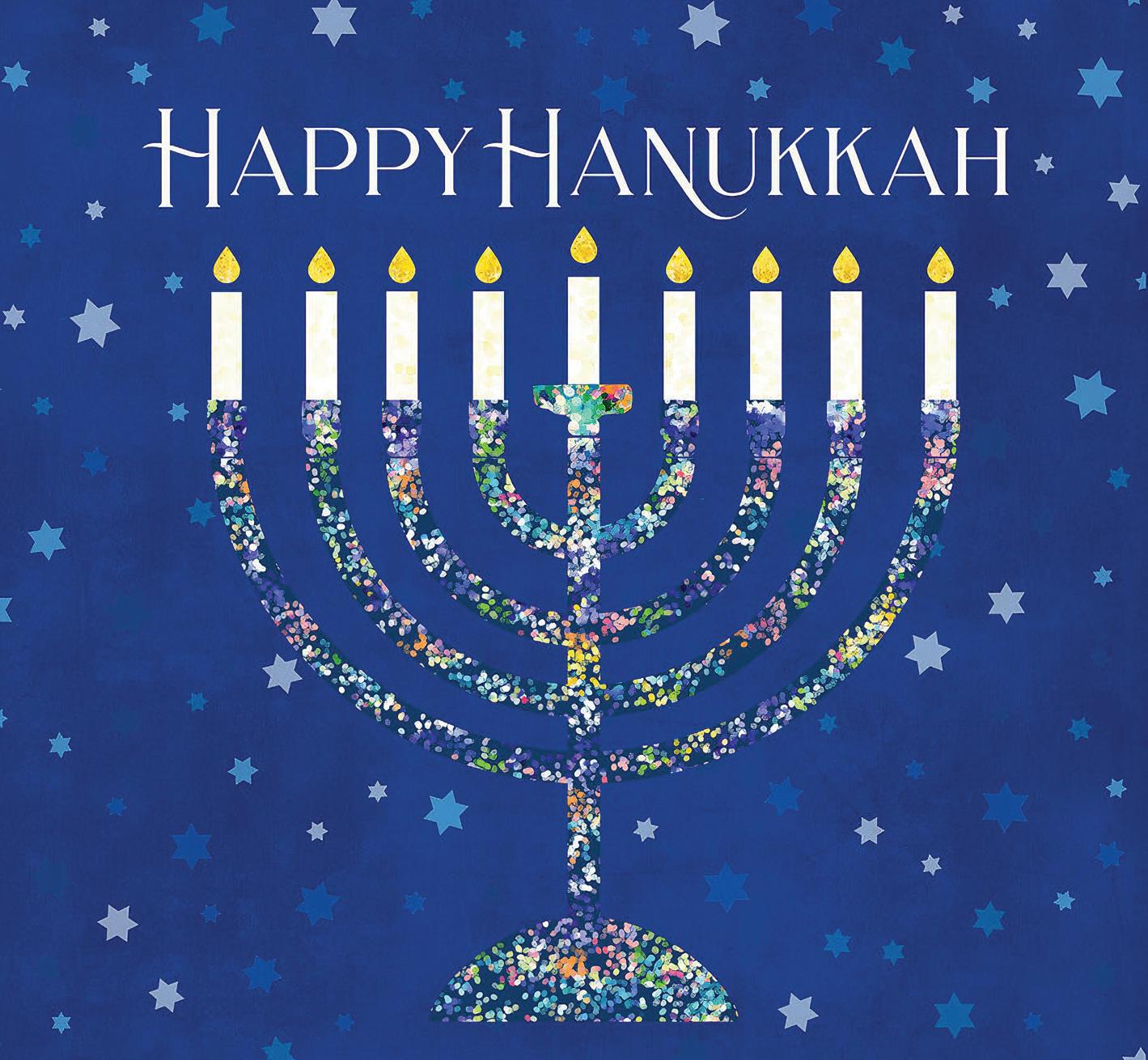
From the Board and Staff of the Jim Joseph Foundation
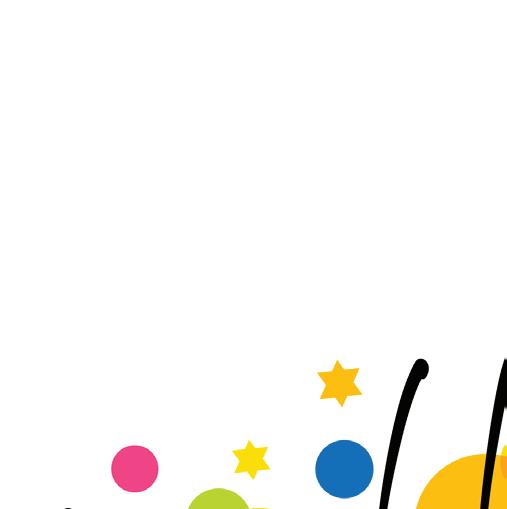
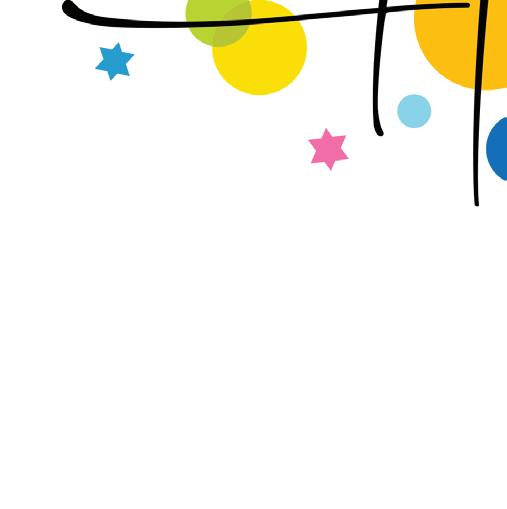
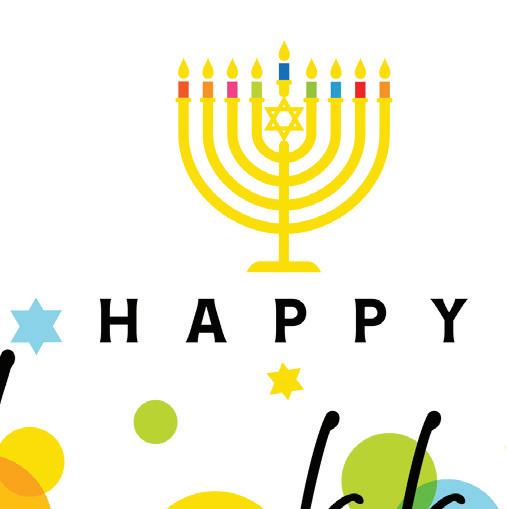
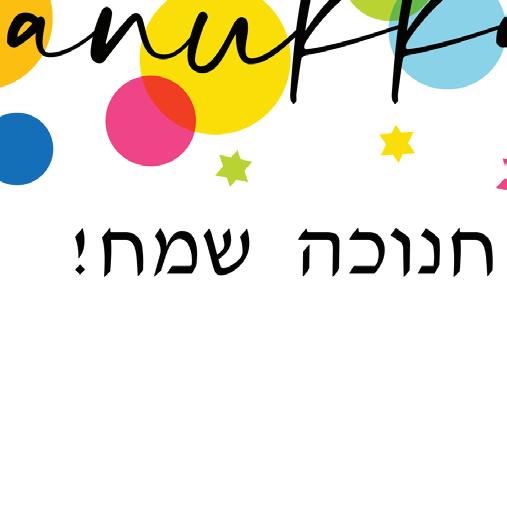
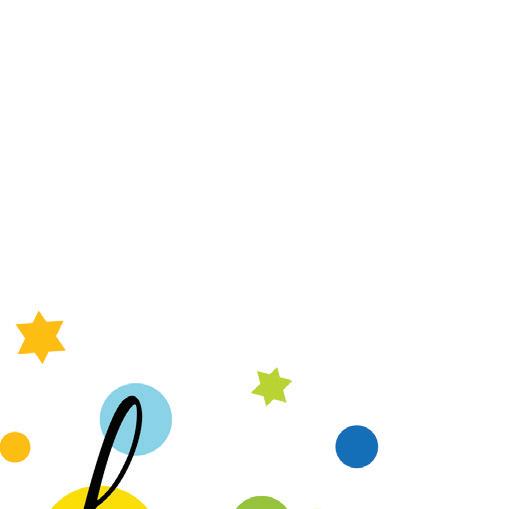
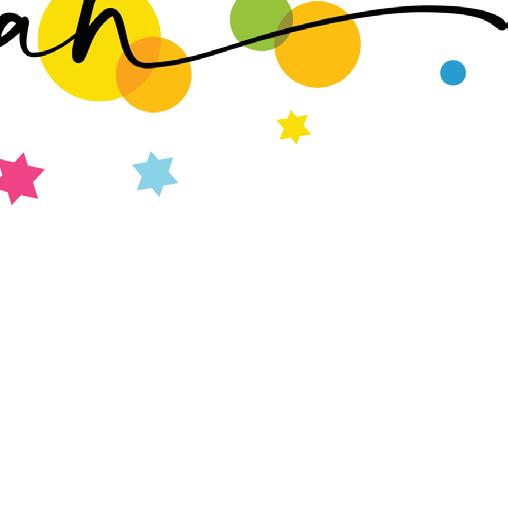
Thank you for your support over the years!
PENNY SCHWARTZ | JTA
To celebrate Hanukkah and Christmas, Max and Sophie, siblings in an interfaith family, bake up a batch of gingerbread dreidels.
That’s the plot of a new children’s book, but it could be a real-life occurrence this month, when the first night of Hanukkah falls on Christmas Day.
Among the children’s books released ahead of the holidays are several that nod to the unusual calendar convergence and the increasing share of families that include both Jews and non-Jews.
Other notable new Hanukkah children’s books include one about a unique menorah used at the White House; a compendium of stories and essays for older kids; and picture books featuring a bear, a puppy and a dragon.
Here’s a rundown of some of the new books on the Hanukkah market.
“Gingerbread Dreidels”
Jane Breskin Zalben llustrated by Thai My Phuong Charlesbridge, ages 4-7
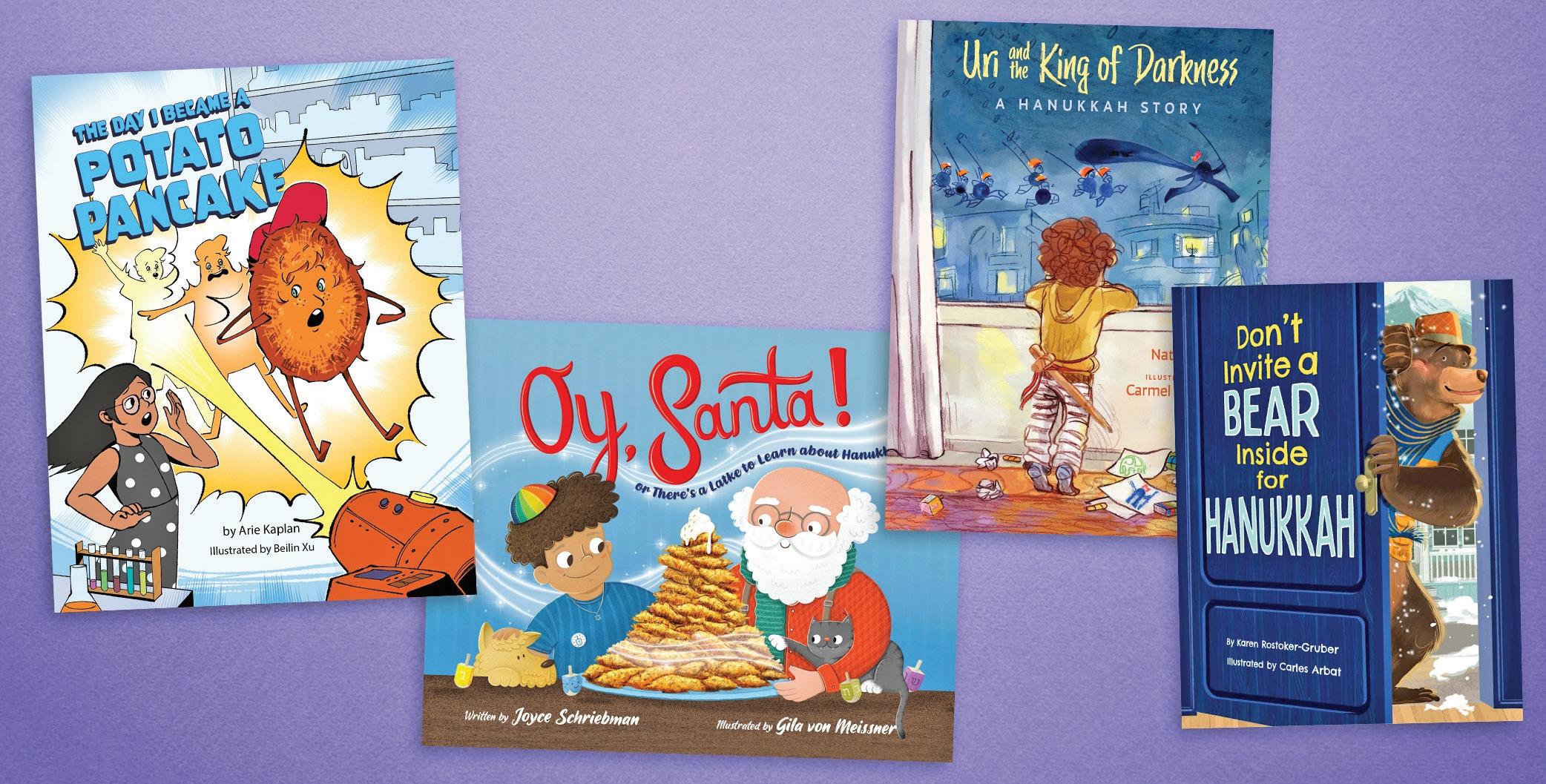
“Oy, Santa!: Or, There’s a Latke to Learn about Hanukkah”
Joyce Schriebman
Illustrated by Gila von Meissner Intergalactic Afikoman, ages 4-9
In Schriebman’s humorous story, Oliver Overstreet hits send on an email to Santa to let the jolly North Pole gift-giver know that Oliver is Jewish and that Santa and his reindeer can skip his chimney. As the pages unfold, Oliver sets Santa straight, making sure he knows the difference between Hanukkah and Christmas and that Santa should never eat potato latkes with ketchup.
“Let It Glow”
Marissa Meyer and Joanne Levy Feiwel and Friends, ages 8-12
The siblings are growing up in an interfaith family and celebrate both holidays with all their grandparents. They bake up a batch of gingerbread dreidels to blend of each holiday’s traditions. When their
In Zalben’s new book, Max and Sophie are excited for the start of Hanukkah and Christmas.
grandparents arrive, they welcome Hanukkah and Christmas with latkes, pudding and holiday stories.
My Phuong’s illustrations capture the kids’ joy and the book includes a recipe and instructions for readers to make their own gingerbread dreidels.
When two 12-year-old girls, each adopted at birth, meet by chance, they discover that they are identical twins. Aviva Davis, a vivacious Broadway hopeful, is growing up in an interfaith, interracial family and loves to hang out with her Jewish bubbe. Holly Martin, who is Christian continued on page 18
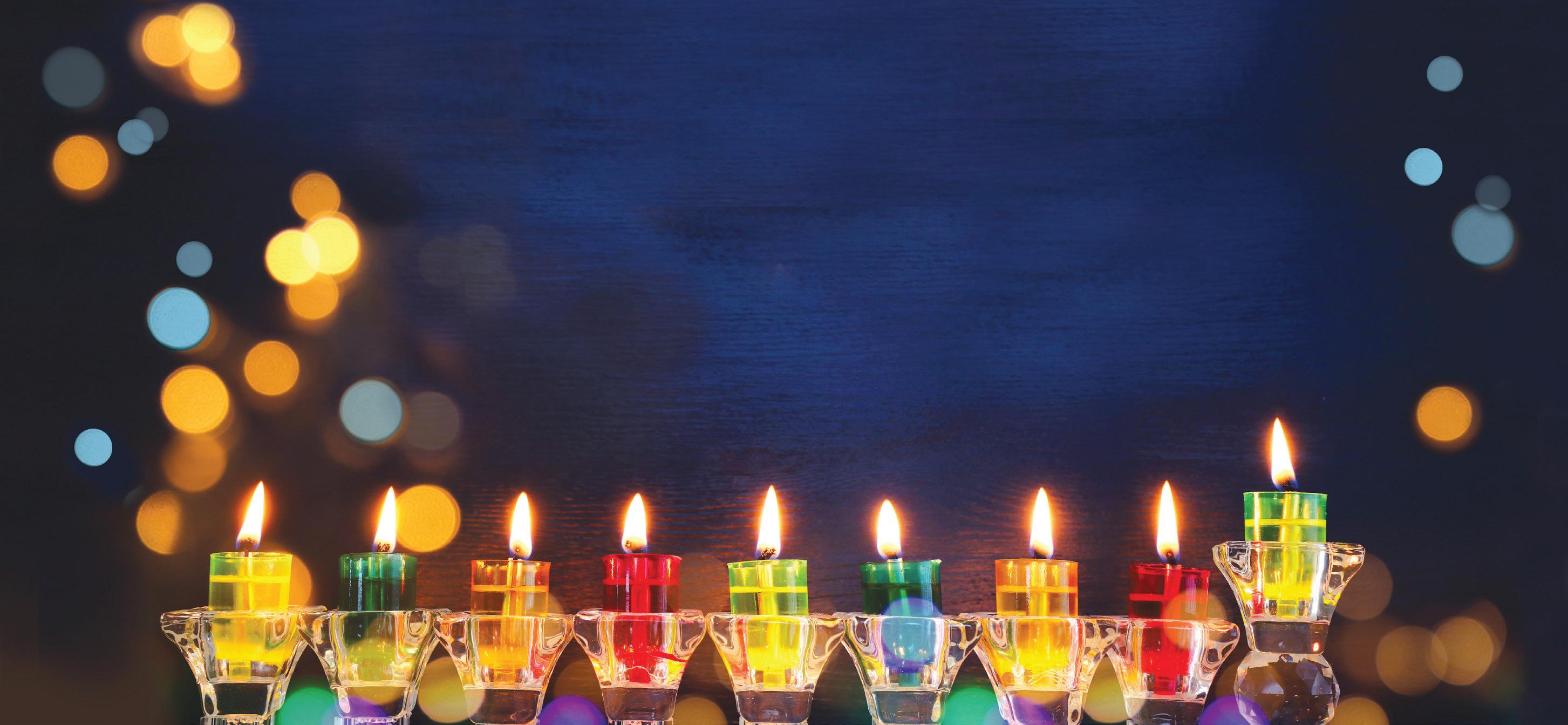
continued from page 17
and lives with her mother and grandfather, is a more reserved book nerd. In this coming-ofage story, told in the twins’ alternating voices, the sisters secretly switch places at home just in time for Hanukkah and Christmas. When their mischievous scheme goes too far, Aviva and Holly argue. A family health scare draws the two unsuspecting families together in this Chrismukkah “Parent Trap” mashup, and Aviva and Holly come to realize the resilience of family bonds and gain a deeper meaning of their faiths.
“My Dreidel”
Ann Diament Koffsky
Apples & Honey Press, ages birth to 1
Young ones will relate to the child-like pup in Koffsky’s cheerful board book when she tries to spin the dreidel with her paws. Her older brother helps out as they spin and dance till they plop like the dreidel.
“Don’t Invite a Bear Inside for Hanukkah”
Karen Rostoker-Gruber
Illustrated by Carles Arbat Apples & Honey Press, ages 3-6
There’s mayhem in this laugh-out-loud story when a young boy invites a Jewish bear into his house for his family’s Hanukkah
celebration. When the fun turns messy, the boy asks his new friend to leave, a decision he instantly regrets after he realizes the bear is sad. All ends well when the thoughtful boy invites the bear back to celebrate together — outside.
“Uri and the King of Darkness: A Hanukkah Story”
Nati Bait, translated by Ilan Kurshan
Illustrated by Carmel Ben Ami Kalaniot Books, ages 4-9
As Hanukkah is about to begin, Uri and his sister Shir worry about their father when he is late coming home from work. Uri is frightened by a shadow cast from outside his window. He musters his courage, and with Shir, they fend off the imagined monster, waving his toy shield and Shir’s child umbrella. When their father arrives home with sufganiyot, jelly donuts enjoyed at Hanukkah, the family lights the menorah, with a more confident Uri, knowing he can draw on Hanukkah’s power of light to vanquish his fears.
“A Dragon For Hanukkah”
Sarah Mlynowski
Illustrated by Ariel Landy
Orchard Press, ages 3-8
Hannah gets a dragon on the first night of Hanukkah, kicking off a holiday full of imagination, surprise and whimsy. This lavishly illustrated picture book is meant for both experienced celebrants of Hanukkah and those who are just learning about it.
Avenue, Suite F San Francisco, California 94127 415-681-5555
Verzauberte Löffel,” Caleb, a Jewish seventhgrader, impulsively bets that he’ll win his school’s holiday bake-off against Tyler, the classmate who bullies him.
In an unexpected finish, Caleb — and Tyler — learn about forgiveness and second chances.
Oliver sets Santa straight, making sure that he knows the difference between Hanukkah and Christmas and that Santa should never eat potato latkes with ketchup.
“Beam of Light: The Story of the First White House Menorah”
Elisa Boxer
Illustrated by Sofia Moore
Rocky Pond Books, ages 4-8
In 1948, the interior of the White House had to be completely renovated, requiring the “People’s House” to be closed. Some of the original wood was salvaged and put in storage. In this picture book, families discover the little-known White House history of how, some 70 years later, a master woodworker transformed one of the pieces of rescued wood into a stunning menorah. In 2022, President Joe Biden kindled the menorah during the White House Hanukkah celebration.
“Eight Sweet Nights, A Festival of Lights: A Hanukkah Story”
Charlotte Offsay
Illustrated by Menahem Halberstadt Doubleday, ages 4-7
A multigenerational, racially diverse family gathers in the home of a girl to celebrate Hanukkah with old and new traditions. They fry up batches of potato latkes, light the menorah and sing and dance.
“Hanukkah (Celebrations & Festivals)”
Lesléa Newman
Illustrated by Rotem Teplow Quarto Books, ages 5-7
Meet Lior, a young Israeli who’s the perfect, kid-friendly explainer-in-chief for all things Hanukkah. As Lior’s multicultural family gathers to celebrate, he shares the joy of the holiday and gently guides young readers through the hows and whys of the holiday. This engaging read-aloud includes blessings, crafts and Hanukkah greetings from around the world.
“The Festival of Lights: 16 Hanukkah Stories”
Edited by Henry Herz
Albert Whitman, ages 9-12
This Hanukkah collection, which includes stories, poetry and a comic, is geared toward older children and independent readers. In Herz’s humorous entry, “Der
From “Oy, Santa!” by Joyce
Schriebman
Other works include “A Light in Darkness,” Kimberly Brubaker Bradley’s story set in London during World War II, and Erica Perl’s “The Most Jewish Christmas Song Ever” that will strike a chord with theater lovers.
“The Day I Became A Potato Pancake”
Arie Kaplan
Illustrated by Beilin Xu Apples & Honey Press, ages 7-9
In this action-packed, comic-style chapter book, Naomi and Ben use their sleuthing skills to get into Naomi’s mother’s garageturned-science lab. When the overly-enthusiastic kids set off an unexpected escapade, Ben is transformed into a potato latke. In a race against time, Naomi’s mother tries to reverse the experiment. It’s a page-turning whodunit that takes the friends into outer space and back.
“Rachel Friedman and Eight Not-Perfect Nights of Hanukkah”
Sarah Kapit
Illustrated by Genevieve Kote Henry Holt, ages 5-9
In the previous chapter book that featured Rachel Friedman, a plucky gradeschooler who has ADHD and a strong Jewish identity, Rachel learned important lessons about when to follow rules — and when to break them. In the second book, Rachel returns with high hopes for a festive Hanukkah. Instead, she has to overcome her brother Aaron’s holiday grumpiness.
“The Light From My Menorah: Celebrating Holidays Around the World”
Robin Heald
Illustrated by Andrea Blinick Pajama Press, ages 4-7
In this lavishly illustrated book, a boy celebrates Hanukkah with his family. He follows the light of the flickering flames as it travels across the world, where he sees families celebrating Diwali, Kwanzaa and Christmas, winter holidays with their own candle-lighting rituals that shine with the universal hope of light against darkness. n
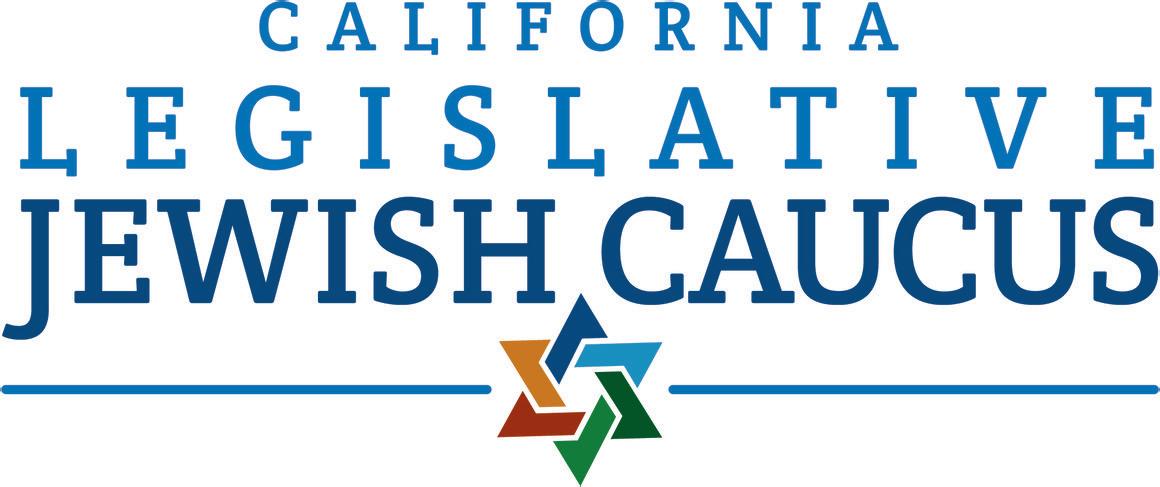
Senator Scott Wiener, Co-Chair
Assemblymember Jesse Gabriel, Co-Chair
Senator Josh Becker, Vice Chair
Assemblymember Dawn Addis, Vice Chair
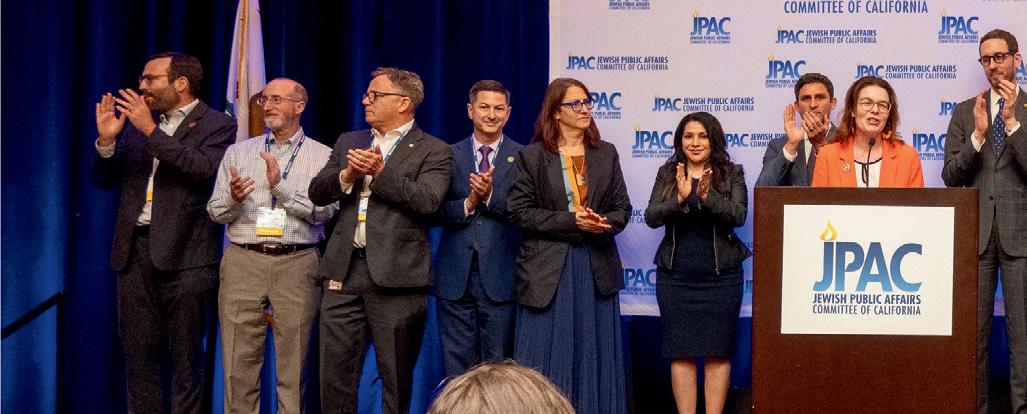
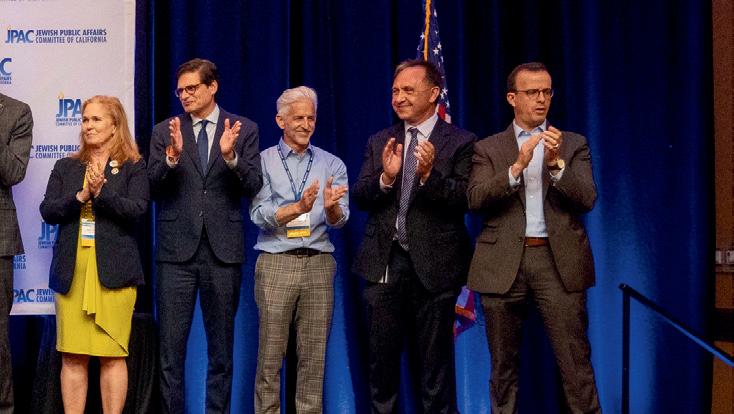
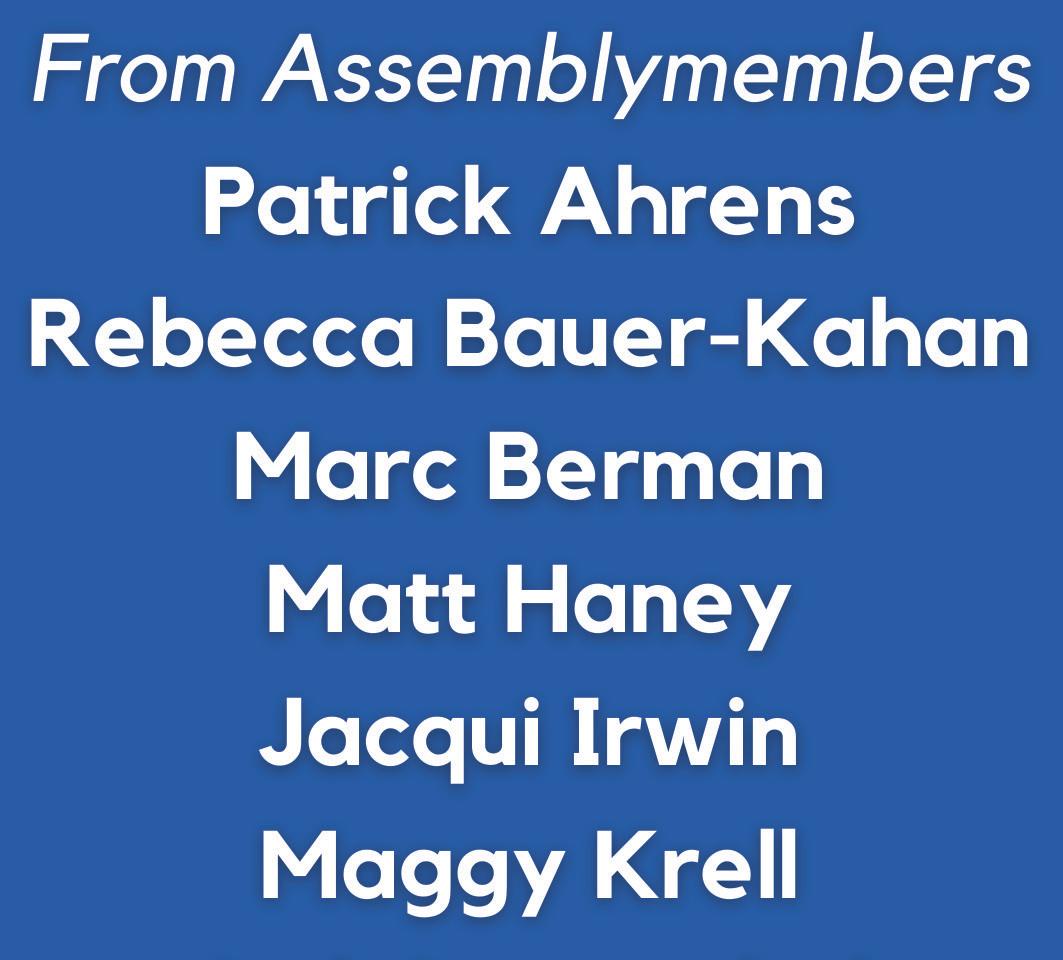
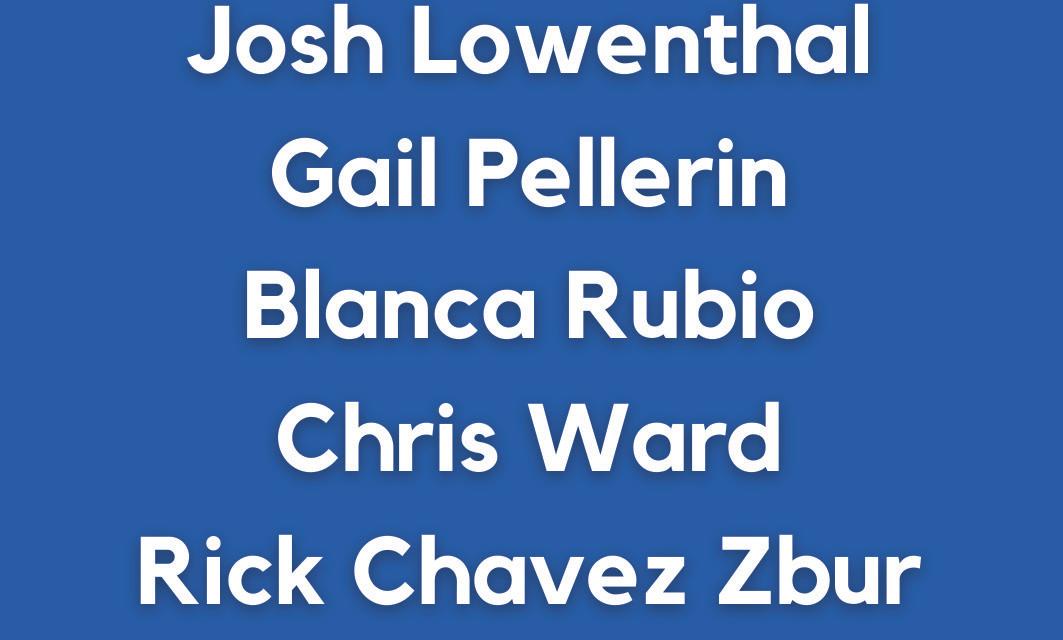

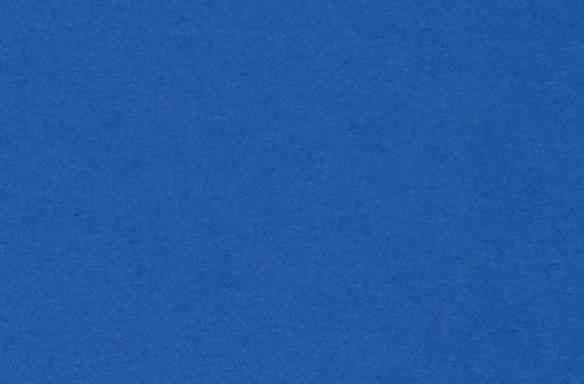


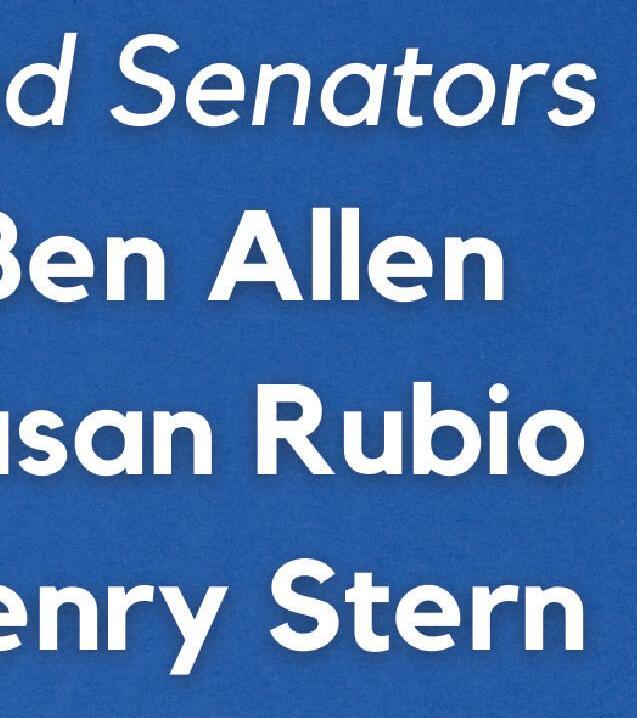






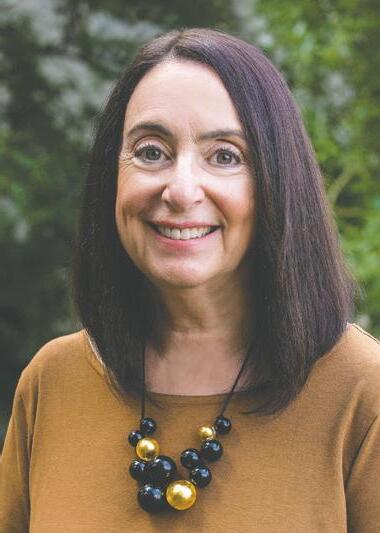

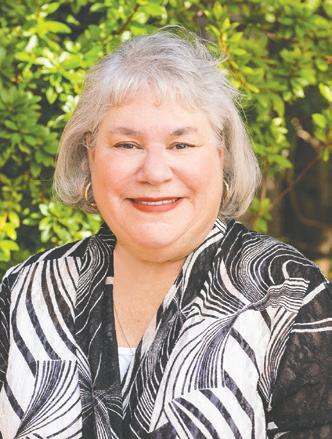
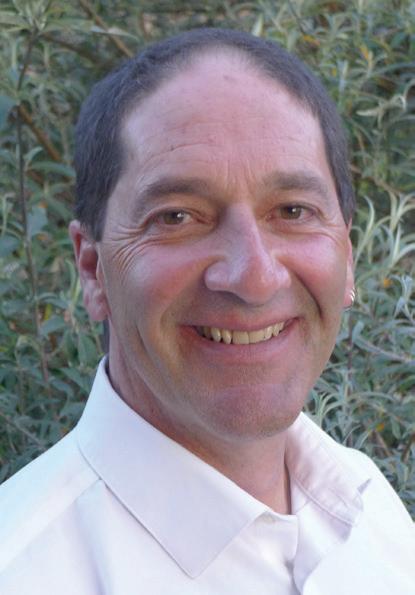

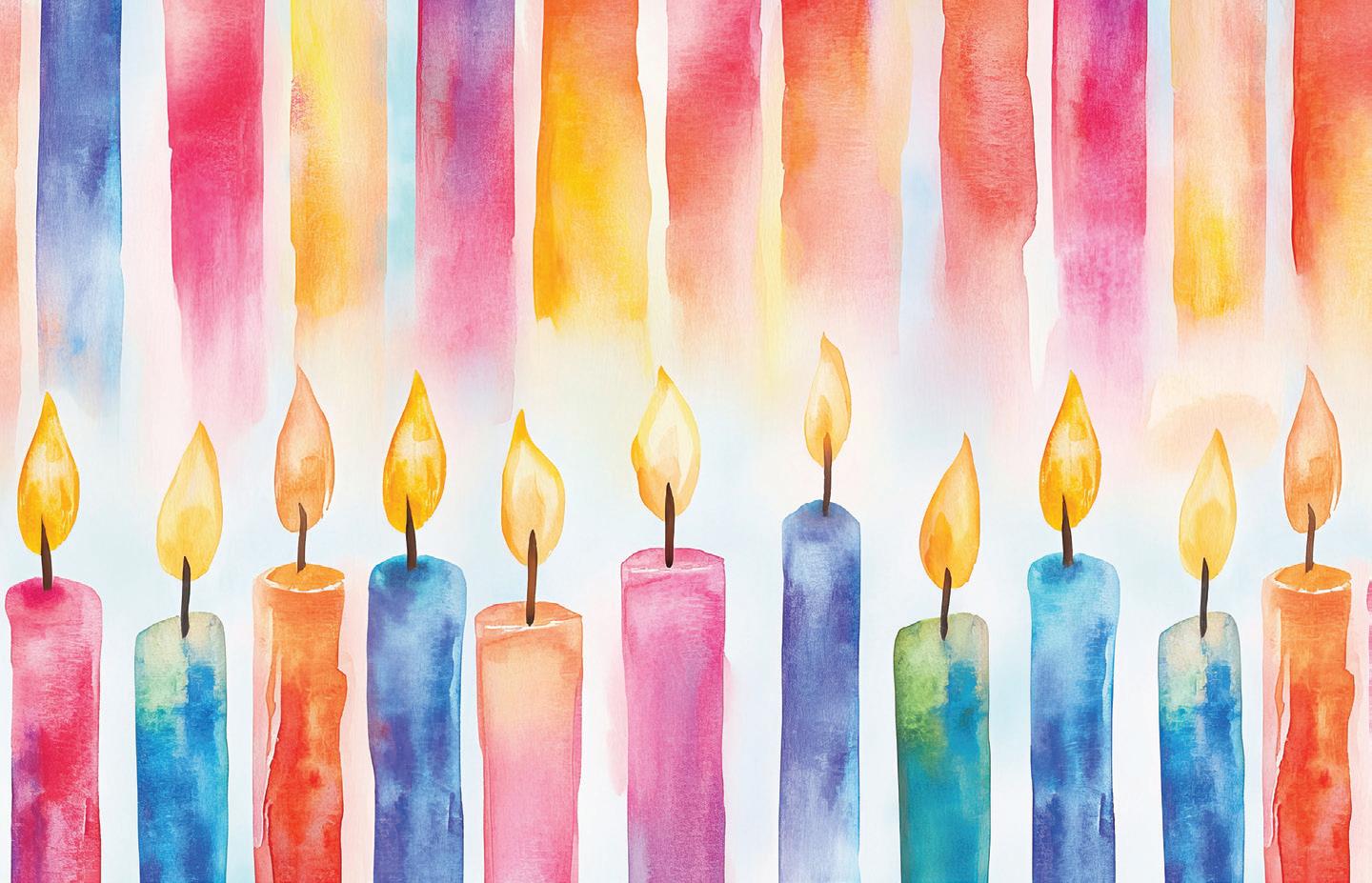

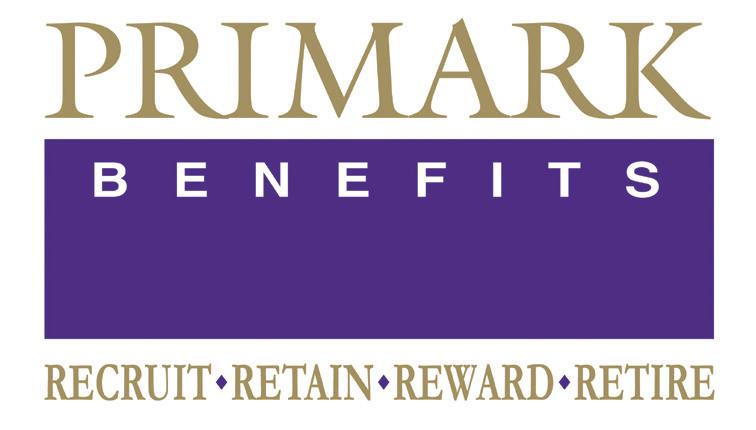











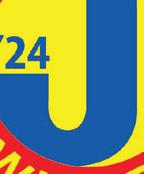



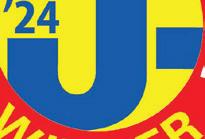
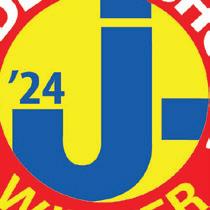





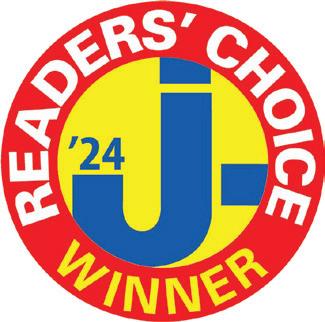






The Bay Area Jewish community is celebrating Hanukkah throughout December — both before and after the first night on Dec. 25 — with everything from holiday concerts and craft workshops to mitzvah opportunities and public menorah lightings. Here is a taste of Hanukkah events across the region. Check out jweekly.com for more.
SUNDAY | DECEMBER 15
Glowing Hanukkah Pop-Up at Ghirardelli Square—Holiday event with candlelighting, singing, dancing, dreidels, hands-on crafts with local artists, doughnuts and a glowing piano performance. Wear light-up, glittery or glow-in-thedark outfits. Presented by JCCSF. At Ghirardelli Square, 900 North Point St., F301, S.F. 3-6 p.m. Free. tinyurl.com/ hanukkah-glow
“Latkes and Love”—JFCS Impact Year teens presents intergenerational Hanukkah event with seniors featuring games, crafts and holiday treats. At JFCS San Francisco, 2150 Post St., S.F. 2:30-4 p.m. Free. tinyurl.com/volunteer-jfcs
MONDAY | DECEMBER 16
Castro Menorah Lighting—Hanukkah event with music, singing, dancing, jelly doughnuts, a giant dreidel and jumbo menorah lighting. Bring your own menorah. Presented by Congregation Sha’ar Zahav, Castro Merchants Association and the Castro Community Benefit district. At Jane Warner Plaza at Castro, Market & 17th St., S.F. 6 p.m. Free. tinyurl. com/castro-han
WEDNESDAY | DECEMBER 18
SFCJL Latke Cook-Off—San Francisco Campus for Jewish Living presents latke-making competition between local chefs, including chef Craig Stoll of Delfina, and SFCJL campus cooks. Attendees get to taste the latkes and tour the residences. At Frank Residences, 1 Avalon Ave., S.F. 2:30-4:30 p.m. Free, registration required. tinyurl.com/sfcjl-latkes
MONDAY | DECEMBER 23
Songs of Light and Joy—The Jewish Folk Chorus of San Francisco performs Hanukkah concert with songs in Yiddish, English, Ladino and Russian. At JCCSF, 3200 California St., S.F. 1-2 p.m. Free. tinyurl.com/songs-joy
WEDNESDAY | DECEMBER 25
Hanukkah Gift Packing—Community for Jewish Seniors is looking for volunteers to put together Hanukkah gift bags for seniors. At Chabad of Cole Valley, 1300 Shrader St., S.F. 6-8 p.m. Free. cjssf.org/volunteer
THURSDAY | DECEMBER 26
Menorah Lighting on Haight—Public menorah lighting with latkes and music. Presented by Chabad of Cole Valley. At Haight and Stanyan St., S.F. 6-7 p.m. Free, RSVP by Dec. 25. tinyurl.com/ccv-han-24
JCCSF Candlelighting—Community hanukkiyah lighting in the atrium with live music, crafts and fried treats. Also Dec. 27, 30 and 31. At JCCSF, 3200 California St. 4-5 p.m. Free. tinyurl.com/jccsf-menorah Lakeside Landing Menorah Lighting—Hanukkah event with games, hot chocolate and menorah lighting. Presented by Chabad of the Neighborhood. At Lakeside Landing, 2504 Ocean Ave., S.F. 4:45 p.m. Free. chabadneighborhood.square. site
SUNDAY | DECEMBER 29
Bill Graham Menorah Day—49th annual menorah lighting in Union Square San Francisco with live music, dreidel house, kids crafts and entertainment. Lighting each night of Hanukkah from Dec. 25 to Jan. 1; times and programs vary. Presented by the Bill Graham Supporting Foundation of the Jewish Community Federation and Endowment Fund and Chabad of SF. 2-6 p.m. Free. tinyurl.com/bill-menorah
Hanukkah Street Party—Chabad of Cole Valley holiday party with latkes, doughnuts, live music and activities for kids. At Shrader and Alma St., S.F. 3-5 p.m. Free, RSVP by Dec. 25. tinyurl.com/ccv-han-24
Winter Wonderland Hanukkah—Celebration with menorah lighting, music from Jerry’s Kosher Deli All Star Band, ice skating rink, festive treats, arts and crafts and more. Presented by Kaiser Permanente. At Thrive City, 1 Warriors Way, S.F. 2-5 p.m. Free, registration required. tinyurl.com/kaiser-han
FRIDAY | DECEMBER 27
Petaluma Menorah Lighting—B’nai Israel Jewish Center presents third night public menorah lighting. At Helen Putnam Plaza, 411 Chileno Valley Road, Petaluma. 4-4:45 p.m. Free. tinyurl.com/bnaiisrael-han
“Hanukkah Oy Hanukkah”—Two Tribes and vocalist Lois Pearlman present holiday celebration and Yiddish concert featuring tunes in Yiddish, English and Ladino. With holiday treats. At Books and Letters, 14045 Armstrong Woods Road, Guerneville. 7-9 p.m. Free. tinyurl.com/books-han
SATURDAY | DECEMBER 28
B’nai Israel Hanukkah Party—Holiday celebration with storytelling, menorah lighting, dinner and live music with songs in Hebrew, Yiddish and Ladino. At B’nai Israel Jewish Center, 740 Western Ave., Petaluma. 5-8 p.m. $25 before Dec. 20, $30 after Dec. 20, free for kids 12 and under. tinyurl.com/ bnaiisrael-han
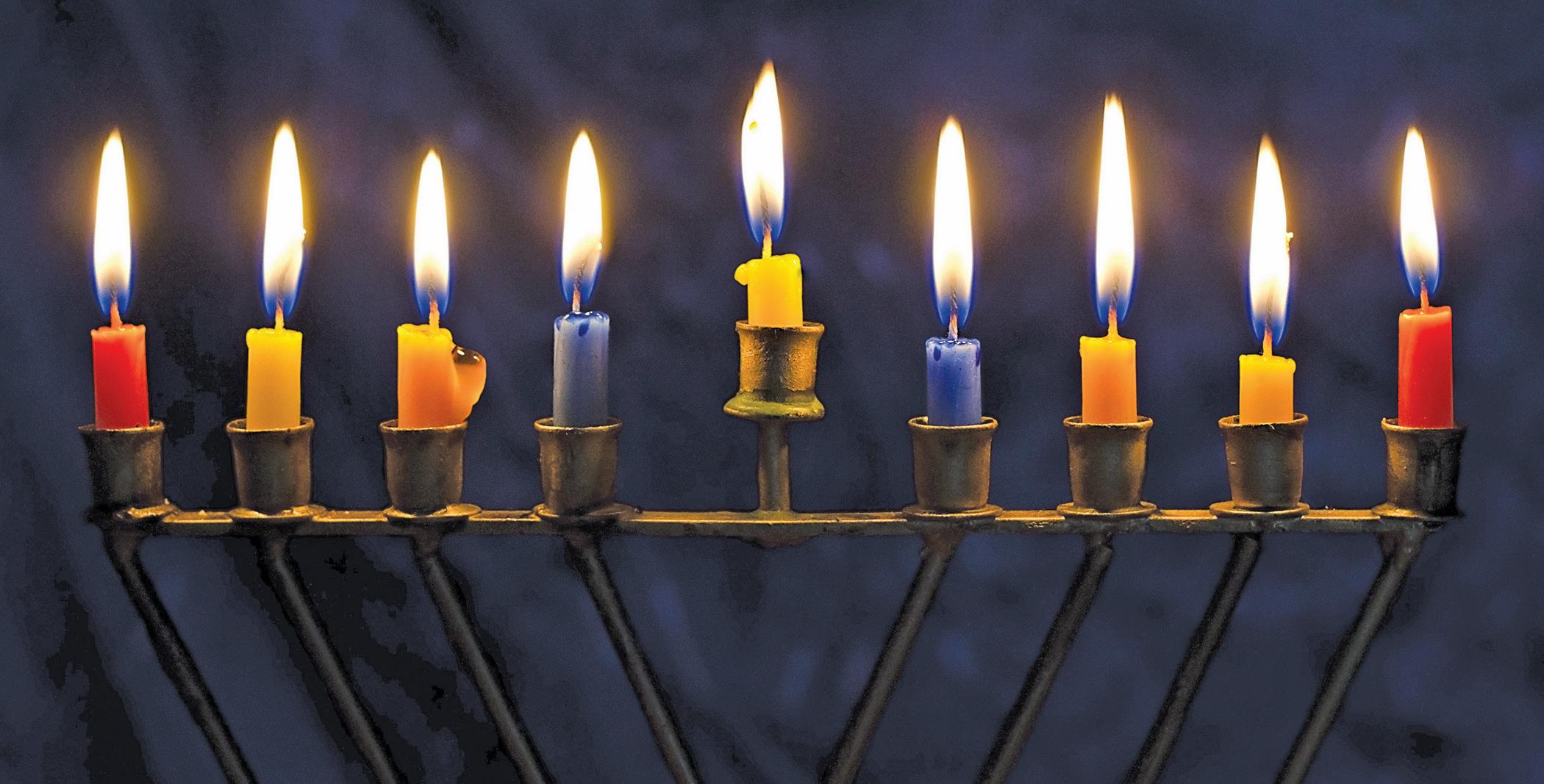
WEDNESDAY | JANUARY 1
Car Menorah Parade—Car parade from Chabad of Cole Valley ending with a menorah lighting at City Hall. Meet at the Chabad, 1300 Shrader St., S.F. 6-9 p.m. Free, RSVP by Dec. 25. tinyurl.com/ccv-han-24
THURSDAY | DECEMBER 26
Marin Hanukkah Festival—Holiday celebration with live Israeli music, bounce house, carnival games, doughnut decorating, menorah-making workshops, kosher and Jewish-themed vendors and more. Presented by Chabads of Marin, Mill Valley, Novato and Tiburon. At Strawberry Village Shopping Center, 800 Redwood Hwy., Mill Valley. 12-4 p.m. Free. marinchanukahfestival.com
Sebastopol Menorah Lighting—B’nai Israel Jewish Center presents second-night public menorah lighting. At Central Park/Town Square, 6908 Weeks Way, Sebastopol. 5-6 p.m. Free. tinyurl.com/bnaiisrael-han
Beth Ami Latke Dinner—Hanukkah dinner with board and card games, service and music. Bring menorah and candles. At Congregation Beth Ami, 4676 Mayette Ave., Santa Rosa. 4 p.m. Free, RSVP by Dec. 24. bethamisr.org
WEDNESDAY | JANUARY 1
“Jams for Joy”—B’nai Israel Jewish Center presents menorah lighting and Hanukkah concert featuring songs of the Grateful Dead and “Hasidic rock” by The Ferris Wheels. At B’nai Israel Jewish Center, 740 Western Ave., Petaluma. 5-9 p.m. $18 in advance, $25 at the door. tinyurl.com/bnaiisrael-han
EAST BAY
FRIDAY | DECEMBER 13
Family Hanukkah Shabbat—Contra Costa JCC and PJ Library Hanukkah event with Israeli-style food, holiday treats, kids activities and music. At Alamo Women’s Club, 1401 Danville Blvd., Alamo. 5:30-7:30 p.m. $18 per person, $64 per family. tinyurl.com/ccjcc-han
SUNDAY | DECEMBER 15
“Hanukkah Around the World”—Multicultural celebration featuring a variety of global Hanukkah traditions. Activities include learning to play the Mexican six-sided dreidel game Toma Todo, creating a Moroccan-style hanging menorah, henna tattoos from India, fried treats from around the world and more.
Presented by JCC East Bay, Camp Tawonga, Olamim, Maccabi Sports Camp, Eden Village West and Camp
Newman. At JCC East Bay, 1414 Walnut St., Berkeley. 2-5 p.m. $24 per family. tinyurl.com/hanukkah-world-24
DIY Menorah Contest—Contra Costa JCC presents DIY menorah contest with music, crafts, sufganiyot and prizes. Bring handmade menorah for judging by 4 p.m. At Contra Costa Jewish Day School, 955 Risa Road, Lafayette. 4-6 p.m. tinyurl.com/menorah-contest
Hanukkah Family Farm Festival—Jewish Gateways and Urban Adamah Hanukkah festival for families with kids in K-5 and siblings, featuring crafts, candle making, music and movement. At Urban Adamah, 1151 Sixth St., Berkeley. 10:30 a.m.-12 p.m. $9-$36, sliding scale. tinyurl.com/han-farm
WEDNESDAY | DECEMBER 18
Intergenerational Hanukkah Lantern Walk—JCC East Bay presents holiday gathering for families with preschoolers and older adults to light up the neighborhood with lanterns and Hanukkah songs.
Coffee, hot chocolate and lanterns provided. At JCC East Bay, 1414 Walnut St., Berkeley. 4:30-5:30 p.m. Free. tinyurl.com/ han-lanterns
FRIDAY | DECEMBER 20
“Shir Joy: Hanukkah”—B’nai Tikvah presents musical service with special Hanukkah choir. Followed by oneg with sufganiyot. At Congregation B’nai Tikvah, 25 Hillcroft Way, Walnut Creek. 7:30-8:30 p.m. Free, RSVP required. tinyurl. com/shir-joy-han
SATURDAY | DECEMBER 21
Families of Color Hanukkah—Olamim and Camp Tawonga present holiday gathering for Jewish families that include at least one person of color. With multilingual songs by Isaac Zones, potluck dinner, Hanukkah crafts and menorah lighting. At private family home in Oakland, exact location provided with RSVP. 4-7 p.m. Free. tinyurl.com/olamim-han Tri-Valley Cultural Jews’ Hanukkah Celebration—Holiday event with menorah lighting, dreidel spinning, games, crafts, music and latke making. Bring your favorite latke topping and a dish to share. Castro Valley location provided with RSVP. Email culturaljews@gmail.com. 5-7 p.m. $15, members free. trivalleyculturaljews.org
SUNDAY | DECEMBER 22
“Dreidels and Doughnuts”—Jewish Baby Network and Kehilla Synagogue Hanukkah party with singing, crafts, snacks, doughnuts and holiday-themed goodie bags. At Lake Temescal, 6500 Broadway, Oakland. 10:30 a.m.-12 p.m. $18. tinyurl.com/jbn-han-party
“Lotsa Latkes”—PJ Library and Temple Beth Abraham present community Hanukkah celebration with crafts, kids activities, holiday songs and treats. At Temple Beth Abraham, 327 MacArthur Blvd., Oakland. 4:30-6 p.m. Free. tinyurl. com/lotsa-latke
MONDAY | DECEMBER 23
Mostly Kosher—L.A.-based eclectic-klezmer rock band performs Hanukkah concert and celebration with dreidels, gelt and other treats. At Bankhead Theater, 2400 First St., Livermore. 6:30 p.m. $25-$65. /tinyurl.com/ mostly-kosher-ha
WEDNESDAY | DECEMBER 25
Hanukkah on Ice—Holiday event with ice skating, Jewish music, giant menorah and kosher food. Presented by Chabad of Contra Costa. At Civic Park Ice Rink, 1365 Civic Drive, Walnut Creek. 7:15 p.m. $25, free for non-skaters. tinyurl.com/chabad-cc-han
Chochmat HaLev Hanukkah Gathering—Community celebration with singing, dancing, menorah lighting and vegetarian potluck. Bring menorah, candles and vegetarian dish to share. At Chochmat HaLev, 2215 Prince St., Berkeley. 5-8 p.m. Suggested donation, RSVP required. tinyurl.com/ chochmat-hanukka
THURSDAY | DECEMBER 26
Afikomen Hanukkah Party—Sing-along with Ben Kramarz and SingJam Friends, public menorah lighting, nosh and prizes. At Afikomen Judaica, 3042 Claremont Ave., Berkeley. 4 p.m.-5:30 p.m. Free. tinyurl.com/ han-afikomen
Alamo Plaza Menorah Lighting—Annual Hanukkah celebration with candlelighting, live music, juggling, latkes and doughnuts. Presented by Chabad of Contra Costa. At Alamo Plaza Shopping Center. 5 p.m. Free. tinyurl.com/ chabad-cc-han
FRIDAY | DECEMBER 27
“Light Up the Night”—Jewish Gateways presents virtual Hanukkah event with singing, blessings and candlelighting. Online. 6-7 p.m. Free. tinyurl.com/light-up-night
SATURDAY | DECEMBER 28
“Into the Dark”—Communal celebration ritual honoring Hanukkah and Kwanzaa with music, meditation and teachings from Lior Tsarfaty, Melanie DeMore, Bouchaib Abdelhadi and Laura Goldman. Ages 14 and up. At Chochmat HaLev, 2215 Prince St., Berkeley. 7-9:30 p.m. $39. tinyurl. com/into-dark
FRIDAY | DECEMBER 13
Hanukkah Story Time—PJ Library and Oshman Family JCC present holiday story time featuring children’s book “Hoppy Hanukkah,” followed by a paper menorah craft. At Oshman Family JCC, 3921 Fabian Way, Palo Alto. 4:15-5:15 p.m. Free. tinyurl.com/hoppy-hanukkah
SUNDAY | DECEMBER 15
Latkepalooza—Hanukkah extravaganza with giant Lego menorah, bounce house, crafts, games, live music, a holiday marketplace, signature cocktail tasting, latkes, sufganiyot and more. At PJCC, 800 Foster City Blvd., Foster City. 3-5p.m. Free. tinyurl.com/latkepalooza-pjcc
Six13 Hanukkah Special—Holiday concert performed by six-man a cappella group. At Oshman Family JCC, 3921 Fabian Way, Palo Alto. 4:30-5:30 p.m. and 6:30-7:30 p.m. $30 kids and students, $50 adults. tinyurl.com/six13-show “Festival of Lights”—Jewish Baby Network Hanukkah party with family menorah lighting, crafts and holiday-themed snacks. At Congregation Beth Am, 26790 Arastradero Road, Los Altos Hills. 3:30-5 p.m. $18. tinyurl.com/jbn-light “Menorahs and Miracles”—Hanukkah celebration with scavenger hunt, dreidel games, candle making, menorah crafts, puppet show, story time in Hebrew, Russian and English, performance by Yavneh Day School Choir and Hanukkah treats. Co-presented by Addison-Penzak JCC, PJ Library and Yavneh Day School. At Children’s Discovery Museum, 180 Woz Way, San Jose. 1:30-4:30 p.m. $18 kids and adults, $16 seniors. tinyurl.com/miracles-menorahs Hanukkah Craft Party—Hands-on event for families to create menorahs, design a dreidel and make decorations. With sufganiyot. At Oshman Family JCC, 3921 Fabian Way, Palo Alto. 3:30-4:30 p.m. $18 per family. tinyurl.com/ han-craft
“Latkes and Laughs”—Temple Emanu-El hosts comedy show featuring comedians Jeff Applebaum, Cash Levy and Julie Ash. With speakeasy, full Hanukkah dinner and latkes. At Temple Emanu-El, 1010 University Ave., San Jose. 5:307:30 p.m. $54, $18 students plus $20 for speakeasy entry. tinyurl.com/latkes-laughs-24
Hanukkah Helpers—JFCS is looking for volunteers to pack holiday gift bags for local families and send messages of hope to children in war-torn Ukraine. At JFCS Palo Alto, 200 Channing Ave., Palo Alto. 3:30-5 p.m. Free. tinyurl.com/ volunteer-jfcs
THURSDAY | DECEMBER 19
Hanukkah Party with Isaac Zones— Wornick Jewish Day School presents holiday concert and crafts for ages 3-5 and their families. Register by Dec. 16. Co-sponsored by PJ Library. At The Reading Bug, 785 Laurel St., San Carlos. 4-5 p.m. Free, registration required. tinyurl.com/ wornick-han
FRIDAY | DECEMBER 27
Hanukkah Sweater Shabbat—Shabbat service with kid-friendly activities., latke dinner, sufganiyot and menorah lighting. Wear Hanukkah sweaters, scarves and other holiday attire. Bring menorah and candles. At Shir Hadash, 20 Cherry Blossom Lane, Los Gatos. 5:30 p.m. Event is free, dinner is $10 for kids and $20 for adults. tinyurl.com/ han-sweater-shabbat
“A Hot Kugel Hanukkah”—Intimate concert and holiday celebration with menorah lighting. At Feldman’s Books, 1075 Curtis St., Menlo Park. 5 p.m. Free. tinyurl.com/ hot-kugel-han
SUNDAY | DECEMBER 29
Santana Row Hanukkah Celebration—Holiday event with menorah lighting, kids activities, live music and more. At Park Valencia, 3055 Olin Ave., San Jose. 4-6:30 p.m. Free. tinyurl.com/santana-han
WEDNESDAY | JANUARY 1
Hanukkah on Main—Jewish Silicon Valley and APJCC present holiday celebration with public menorah lighting. At Los Gatos Civic Center, 110 E. Main St. 4:30 p.m. Free. tinyurl. com/han-main
SATURDAY | DECEMBER 28
Millennials’ Hanukkah Party—Mendocino Coast Jewish Community presents Hanukkah schmooze for Jews in their 20s, 30s and 40s. With latkes, candy cap doughnuts and dancing. At Fog Bottle Shop and Wine Bar, 45104 Main St., Mendocino. 6:30 p.m. Free. mcjc.org
SUNDAY | DECEMBER 29
MCJC Hanukkah Party—Mendocino Coast Jewish Community presents Hanukkah celebration with latke taste-off, menorah lighting, karaoke, raffle, dancing and music by Klezmishpoche. At Caspar Community Center, 15051 Caspar Road, Caspar. 4 p.m. Free. mcjc.org
THURSDAY | JANUARY 2
Hanukkah Train—Holiday train ride through Santa Cruz with Hanukkah music, latkes, hot apple cider, games and more. Presented by Chabad by the Sea and Roaring Camp. Meet at merry-go-round on Santa Cruz Boardwalk. 5 and 6:30 p.m. departures. $35-$48. tinyurl.com/ roaring-camp-train n
The Food section is supported by a generous donation from Susan and Moses Libitzky
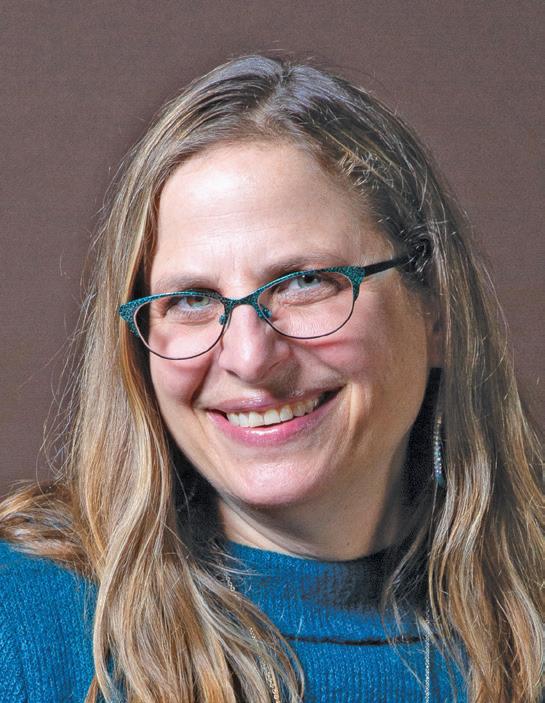
Alix Wall is a contributing editor to J. She is also the founder of the Illuminoshi: The Not-So-Secret Society of Bay Area Jewish Food Professionals.
Somewhere in the ether, culinary lore dictates that you shouldn’t fry latkes in olive oil.
Dani Fisher begs to differ.
“I don’t know how the ‘smoke point’ myth became such a thing,” she said, “but it’s always the first thing people ask. Obviously, people in Italy and Greece have been frying and grilling and roasting and making incredibly delicious food in olive oil for centuries.”
The smoke point refers to the temperature at which an oil starts to break down, resulting not only in burnt-tasting food, but also unhealthy properties. That can happen when deep-frying, where the oil reaches temperatures above 500 degrees; it’s why restaurants use more processed oils, such as rice bran or canola, for deep-frying. But in home kitchens, the temperature rarely gets that high, making olive oil fine for shallow frying.
The Oakland resident is co-owner of Like Family, an artisanal brand of olive oil with its own orchard in Carmel Valley. For latke frying, she recommends Like Family’s Fruity Extra-Virgin Olive Oil because the flavor won’t compete with any of the accompanying sides.
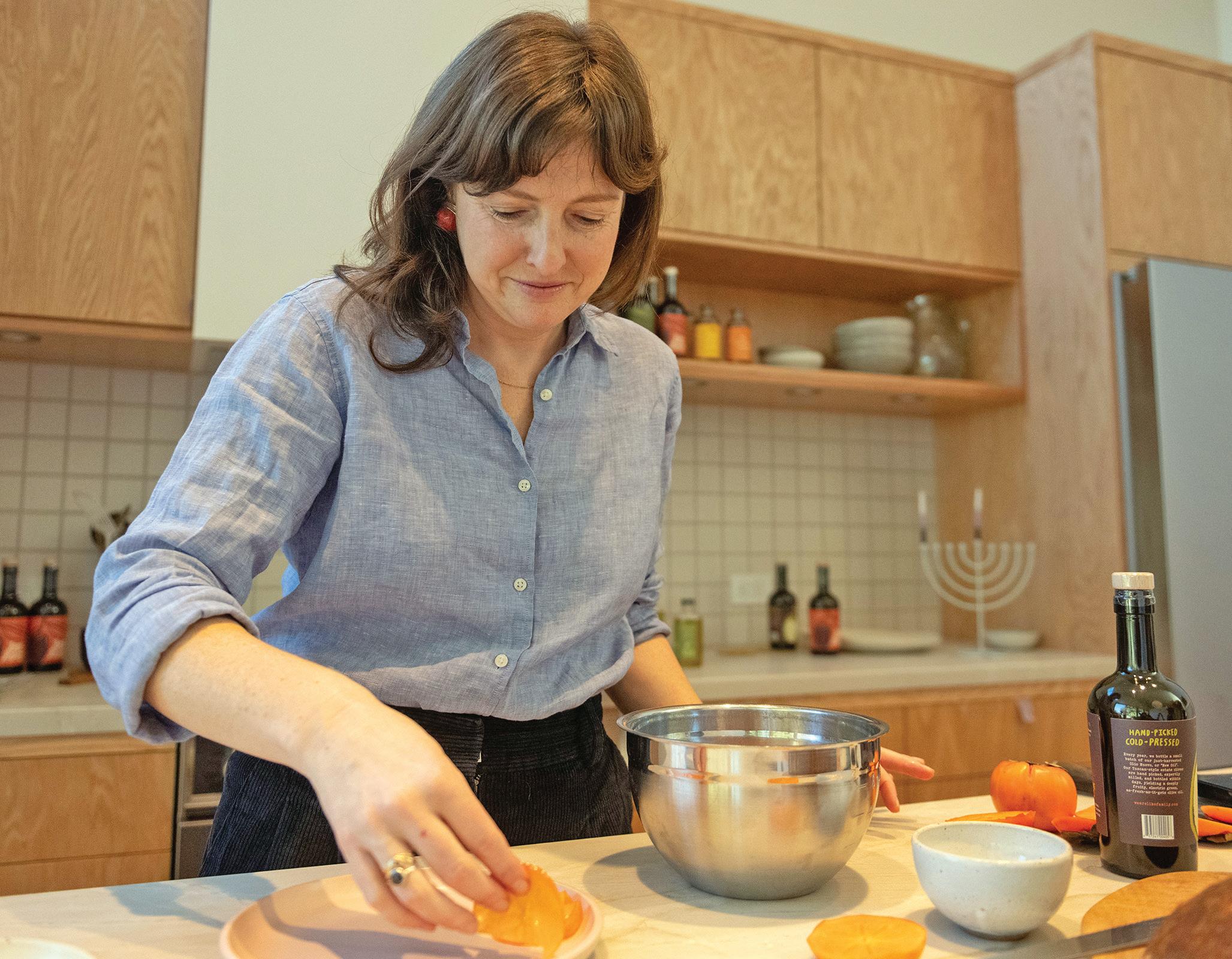
Fisher, 41, grew up in San Francisco, where her family belonged to Congregation Sherith Israel. She inherited her love of cooking and food from her grandmother Joan Litvak.
“She was a beautiful, simple cook, which I didn’t realize when I was a kid,” Fisher said. “She made her own yogurt. She made applesauce from the apple tree in her backyard. Her food just tasted different because she was making everything from scratch. My mom used to tell me I would sit on the classic pink and white linoleum floor in her kitchen while she cooked, with a pot and a spoon and a potato.”
Food was not considered a viable career path when Fisher went to college, but she followed it anyway and spent years working in marketing for food companies. When she became pregnant and could no longer drink wine, she became fixated on olive oil. Then during her maternity leave from Blue Bottle Coffee, she read “Extra Virginity: The Sublime and Scandalous
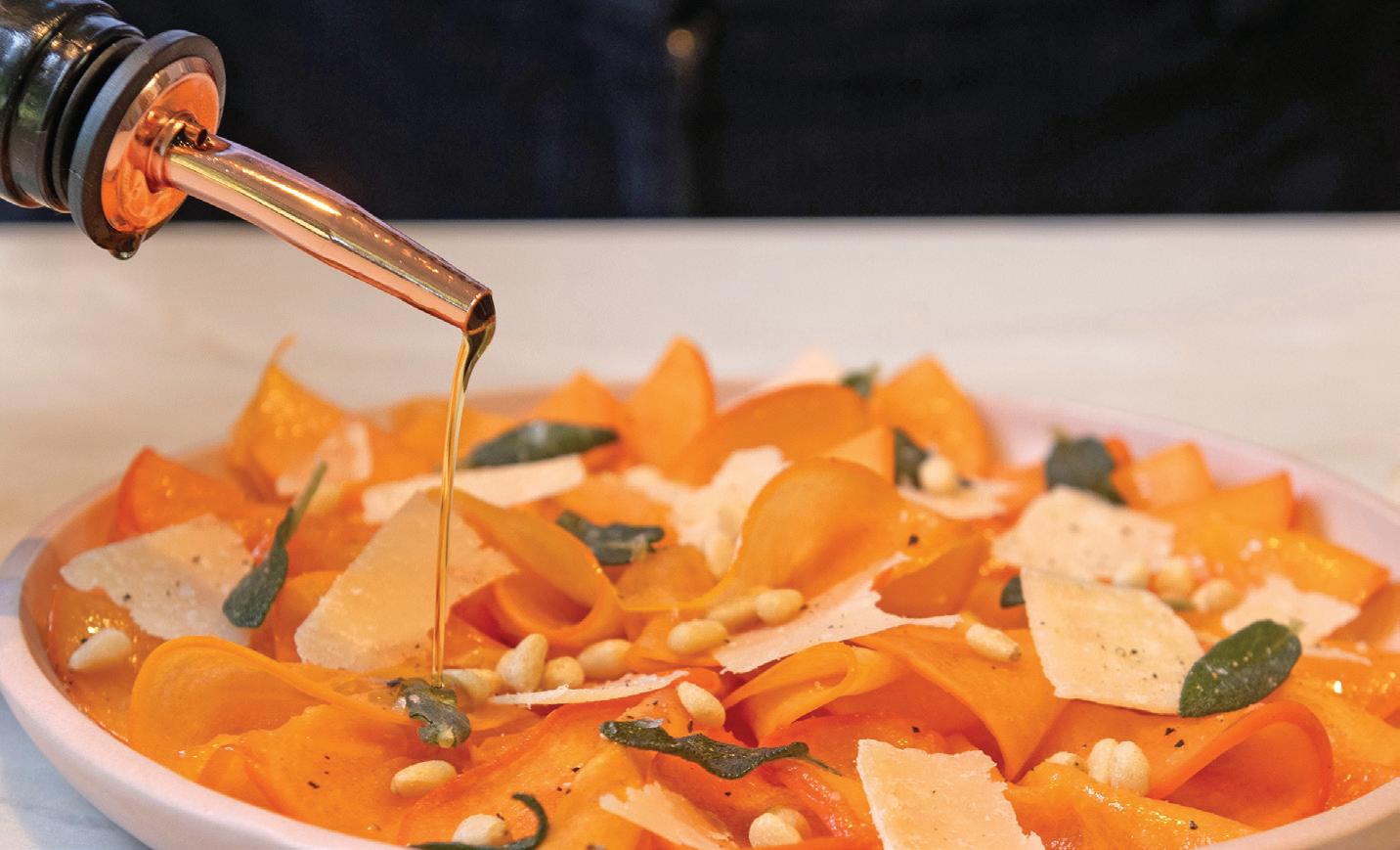
World of Olive Oil” by Tom Mueller.
Comparing olive oil to products like wine and coffee, she said, “they are all beautiful food or beverage products that people go really deep into.”
Fisher said many food lovers still don’t know much about olive oil, and she aims to change that.
Home cooks should always have several different types, she said, and consider finishing dishes with a drizzle of a specialty olive oil and flaky salt, which can transform food as ho-hum as a rotisserie chicken or takeout pizza into something special.
“It’s such a magically complex ingredient and will add all this depth to whatever you put it on,” she said.
A bottle of Like Family’s chili oil lives on her dining table, she said, and she especially loves it on eggs.
A word about “flavored oils.” That is an industry designation, but Fisher said the proper term is “co-milling.” With Like Family’s chili oil and citrus oils (lime, Meyer lemon and Cara Cara orange), the fruit, peel and all, is milled right along with the olives, rather than flavoring the oil later.
“You can get these incredibly nuanced, detailed fruit oils,” she said. “These are accessible for people who don’t totally understand but who like the idea of a finishing oil and using it as a condiment.” (The day I met Fisher, I enjoyed an arugula salad with the Cara Cara Mia oil in my vinaigrette. It was a combination I never would have thought of, but the orange plays wonderfully with the bitterness of the greens.)
Like Family started off as a company called Other Brother, founded by Evan Loewy over a decade ago in Monterey County. Fisher met Loewy earlier in her career, while working for online grocer Good Eggs, and they became friends.
In 2022, when his attention turned toward brewing beer, she came on as a consultant. Since then, she has become a partner in the olive oil company, which they rebranded as Like Family. He remains a partner, but she has taken Like Family to a new level of visibility. The oil is available in about 30 shops across Northern California, including San Francisco’s Bi-Rite Market and Oakland’s Market Hall Foods. It’s also carried by a small number of upscale markets across the country and sold online through Like Family’s website.
The brand’s Cí Cí Chili oil won a 2024 Good Food Award, the ultimate recognition in the artisanal food space.
As for where Fisher wants to take Like Family, she does not envision expanding to large grocery chains. “My goal is to stay as small as we can,” she said, “and make the business work.”
When I was assigned a Hanukkah story for the East Bay website Berkeleyside Nosh last year, little did I know that a tip buried in a latke recipe would forever change the way I make potato pancakes. But that’s exactly what happened. I tried this new-to-me method, posted it to my Facebook page at the beginning of Hanukkah 2023, then waited for the exclamations. That didn’t take long. But I had to wait an entire year to share the tip with you.
Here it is, the latke technique you didn’t know you’ve been waiting for:
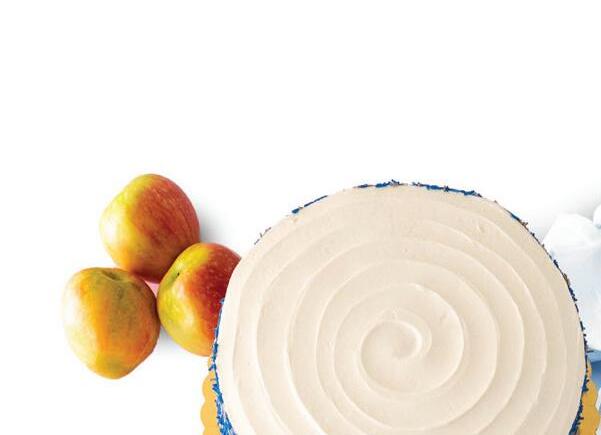
e day before making the latkes, place the whole, unpeeled potatoes in a pot. Cover them with cold water and bring the pot to a boil. As soon as it boils, drain o the water. Lay out the potatoes in a single layer to cool and then refrigerate overnight. at’s it.
While this extra step prevents oxidation, which is nice since brown potato shreds look rather unappetizing, the bigger benefit is that no liquid seeps out from the shreds, eliminating the need to squeeze them dry. You are also starting with slightly cooked potatoes, so there’s no chance of over-frying the outside of your latkes while the inside remains raw. A er this step, you shred them as usual, be it by hand or with a food processor.
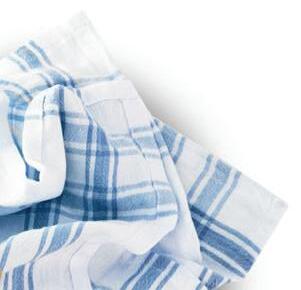


Numerous Facebook friends reported back to me last year, saying things like: “Mind totally blown,” and “It forever changed my latke making.” One San Francisco latke party host reported: “Total game-changer for 40 pounds of potatoes. Amazing!”
Another person saw the post the same day she was planning to make them. She went ahead with the instructions, but a er boiling the potatoes, refrigerated them for only a few hours rather than overnight. It still worked, she reported back. But overnight is probably best.
Ma Gandin, who is Jewish and the executive chef of Mexican restaurant Comal in Berkeley, first shared the technique in a latke recipe included in my Berkeleyside article last year.
“Obviously, people in Italy and Greece have been frying and grilling and roasting and making incredibly delicious food in olive oil for centuries.”
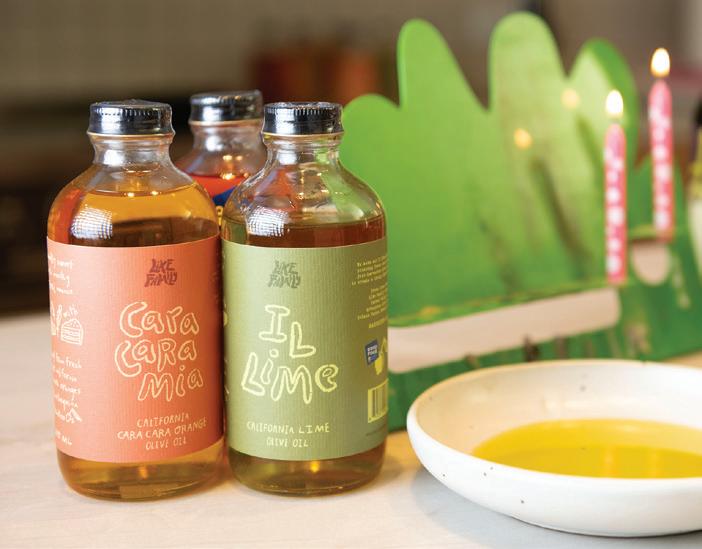
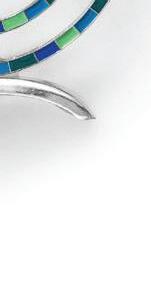





Dani Fisher, Like Family co-owner The brand’s specialty olive oils include lime and Cara Cara orange.
When I later asked him where he learned about it, he credited Craig Stoll, the Jewish chefowner of Delfina. (Before opening Comal, Gandin was a chef at Delfina and worked closely with Stoll.) And by the way, both Gandin and Stoll recommend using Russet potatoes for latkes. is year, I called Stoll in search of answers. He said the technique was not his, and he’d learned it from yet another Jewish chef, Chris Majer, when they worked together at the now-defunct Italian restaurant Splendido. (Majer has since died.)
Stoll said he still doesn’t know the science behind the method, though he remembers Majer telling him “it sets the starches.” Stoll said he hasn’t made latkes since without including this step. Neither will I.
Delfina uses the method to make thousands of latkes for the holiday each year, selling them frozen by the dozen along with pear-quince conserva and creme fraiche “because we’re fancy like that,” Stoll said. Delfina’s latkes can be preordered at tinyurl.com/delfina-latkes-2024.
Speaking of latkes, Mark ’n Mike’s, the Jewish deli concept within One Market Restaurant, is o ering specialty latkes during its monthlong Festival of Latkes. e specialty items include an Onion “Soup” latke with caramelized onion and Gruyere cheese, a Smoked Sturgeon Rille e latke with chives and a Steak Tartare latke with an egg yolk. Address is 1 Market St., San Francisco, and the latke fest runs through New Year’s Eve.
Alec’s Ice Cream, the Petaluma-based premium ice cream brand started by Jewish brothers Alec and Zach Ja e, is now kosher. Alec’s announced its certification by EarthKosher, based in Boulder, Colorado, in its newsle er.
“We had already been using kosher ingredients,” said Alec Ja e, founder and CEO. “We did continually get requests for kosher, so we decided the demand was high enough to justify going through the certification process.” e certification applies to all of Alec’s flavors, such as Palm Springs Banana Chocolate Date Shake, Honey Blueberry Lavender and Meyer Lemon Cookie.
Berkeleyside Nosh, the food site where I am also a contributor, recently did a taste test among East Bay bagel companies. Of the five they tried, Hella placed first, Poppy second, Bageltopia third, Boichik fourth and Wise Sons (sold at Beauty’s Bagels in Oakland) fi h. Speaking of Boichik, the Berkeley-based bagel company just celebrated its fi h anniversary. ■


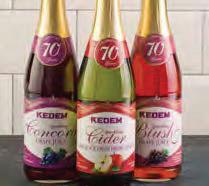


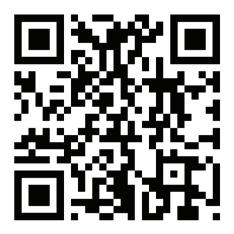


COOKING FAITH KRAMER

Faith Kramer is a Bay Area food writer and author of “52
Shabbats: Friday Night Dinners Inspired by a Global Jewish Kitchen.” Her website is faithkramer.com.
Contact at faith@ faithkramer.com.
Hanukkah falls on distinctively festive dates this year — the first night on Dec. 25 and the eighth night on Jan. 1. I see this as a great opportunity to deck out your potato pancakes. is version of an appetizer or nibble board transforms potato pancakes into two-bite treats with a variety of favorite and unexpected toppings. You can use my traditional latkes recipe or try my Middle Eastern and Italian variations. To add even more flare, you can whip up delectable dips and toppings to go with them.
Once your latkes are ready, arrange them on one large or several smaller wooden cheese boards, pla ers or large plates. en lay out spoons and small bowls full of toppings. Complete the spread with napkins or small plates, and your latkes are ready to party.
Pair up traditional potato pancakes with the Bu alo sauce dip featuring the zing of hot sauce mixed with yogurt, ranch dressing, blue cheese crumbles and chopped celery.
A green onion and cilantro tahini sauce complements the Middle Eastern latkes, which add cumin, za’atar and other Mizrahi seasonings to the traditional pancake. I also put out labneh or Greek yogurt, hummus, amba, and harissa or z’hug (hot sauces from North Africa and Yemen). You can also make a garlic or garlic-cucumber sauce for a li le extra kick. e recipe can be found at tinyurl.com/garlic-sauce.
e Italian latkes are packed with zucchini and mozzarella cheese and are served with a chopped-olive dip. I also like to o er marinara or pizza sauce, sour cream and rico a cheese. Or you can try a (vegan or dairy) whipped feta and garlic dip recipe at tinyurl.com/feta-garlic-dip.For a parve version, substitute nondairy mozzarella for the cheese. And for gluten-free latkes, use potato starch instead of flour.
Makes about 36, 2-inch latkes
8 cups shredded unpeeled yellow, gold or Yukon potatoes (about 2½ lbs.)
1½ cups shredded or chopped onion (about 1 large)
2 tsp. finely chopped garlic
3 large eggs

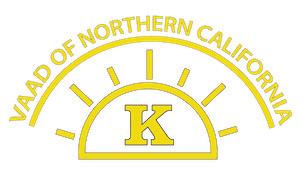

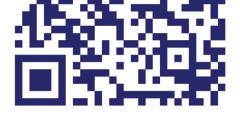
1 tsp. salt
⅛ tsp. ground black pepper
¼ cup flour or potato starch, plus as needed
Vegetable or other oil
Squeeze out potato and onion shreds and discard excess liquid. Put shreds in a large bowl with garlic. In small bowl, beat eggs with salt and pepper. Stir into shreds, mixing well. Sprinkle in flour and stir. Let sit for 5-10 minutes. Compress handful of ba er into pa y. If it stays together, proceed. If not, add flour by tablespoon until pa ies stay together when formed.
If making flavor variations, see recipes below.
To continue with traditional latkes, begin frying. Pour oil into a large skillet until it is about ¼-inch deep. Heat over medium-high heat until a potato shred immediately sizzles.
Wet or oil your hands. For mini-latkes, take about 2 Tbs. of ba er and squeeze out remaining moisture with your hands. (Be careful not to let the liquid drip back into the ba er bowl.)
Pat into a 2-inch round and then put in hot oil, or transfer to large spoon and slide into pan.
Pa ies will keep shape be er if they are a li le thicker, so keep that in mind as you shape them. (If making full-size latkes, use ¼ cup ba er and form into 3-inch pa ies.)
Work in batches, adding more oil as needed and allowing oil to reheat between batches. Fry pa ies a few minutes on each side. Flip when bo om of latke and edges are golden brown. Press down occasionally with spatula, until both sides are browned. Drain on paper towels. Repeat until all latkes are fried.
Middle Eastern latkes: Use the following directions to transform part of your batch of traditional latkes into a Middle Eastern variation. Separate one-third of your potato mixture, stir in ½ tsp. ground cumin, ½ tsp. za’atar or oregano, ½ tsp. crumbled dried mint, 3 Tbs. finely chopped fresh parsley. Shape and fry as directed above.
Italian latkes: Again, these directions will transform part of your batch of traditional latkes. Separate one-third of your potato mixture, stir in 3 cups coarsely shredded zucchini (squeeze out excess water first) and 1½ cups shredded mozzarella, 2 tsp. finely chopped garlic, ¾ tsp. oregano and ½ tsp. chili flakes (optional). Beat one large egg and stir in. Sprinkle in 2 Tbs. flour and stir in. Let sit 5-10 minutes. Shape and fry as directed above. (Note: is variation makes more latkes than the traditional recipe.)
Vegan variation of traditional latkes: Substitute a flax mixture for eggs. Mix ¼ cup ground flax seeds with ¾ cup water. Stir well and let sit 10 minutes. Increase potatoes to 3 lbs. and use 3 tsp. chopped garlic. Continue as directed but drain fried latkes on parchment paper. ( ey stick to paper towels.)
Make ahead: All the latke recipes can be made ahead and reheated from room temperature in a 250-degree oven on a parchment-lined baking sheet until warmed through.
Bu alo sauce dip for traditional latkes: In medium bowl, mix ½ cup plain Greek yogurt, ¼ cup purchased ranch dressing and ½ tsp. of hot sauce. Stir well and taste and add ½ to 2 tsp. or more hot sauce to taste. Stir in 2 Tbs. thinly sliced and chopped celery and ¼ cup crumbled blue cheese. Garnish with 1 Tbs. additional chopped celery and 2 Tbs. crumbled blue cheese and a drizzle of hot sauce. Makes about ¾ cup. Refrigerate ungarnished up to 3 days and bring to room temperature before adding garnish.
Green onion and cilantro tahini sauce for Middle Eastern latkes: In small or regular food processor, add 1-2 large coarsely chopped garlic cloves, ¼ cup packed fresh cilantro leaves and ¼ cup coarsely chopped green onions (white, light green and dark green parts). Process until finely chopped.
Add ½ cup tahini, 3 Tbs. water, 3 Tbs. lemon juice and ¼ tsp. salt. Add ¼ tsp. chili flakes (optional). Process until smooth. Taste. Add more lemon juice or salt if needed. Sauce should be the consistency of Greek yogurt. Add water by teaspoon as needed. Garnish with 1 Tbs. chopped green onion. Makes about ¾ cup. Refrigerate ungarnished up to 3 days. en bring to room temperature, mix in water by the teaspoon if sauce has thickened. Add garnish.
Chopped-olive dip for Italian latkes: Stir together ½ cup purchased olive tapenade, 1 tsp. red wine vinegar, 3 Tbs. olive oil or as needed, ¼ tsp. chili flakes (optional), ¼ tsp. ground black pepper and 1 or 2 Tbs. chopped fresh parsley. If tapenade is not available, substitute ½ cup chopped, pi ed olives combined with 1 Tbs. chopped capers and 1 Tbs. olive oil. Makes about ¾ cup. Refrigerate up to 5 days without garnish. Bring to room temperature, stir in and garnish with fresh parsley.



























































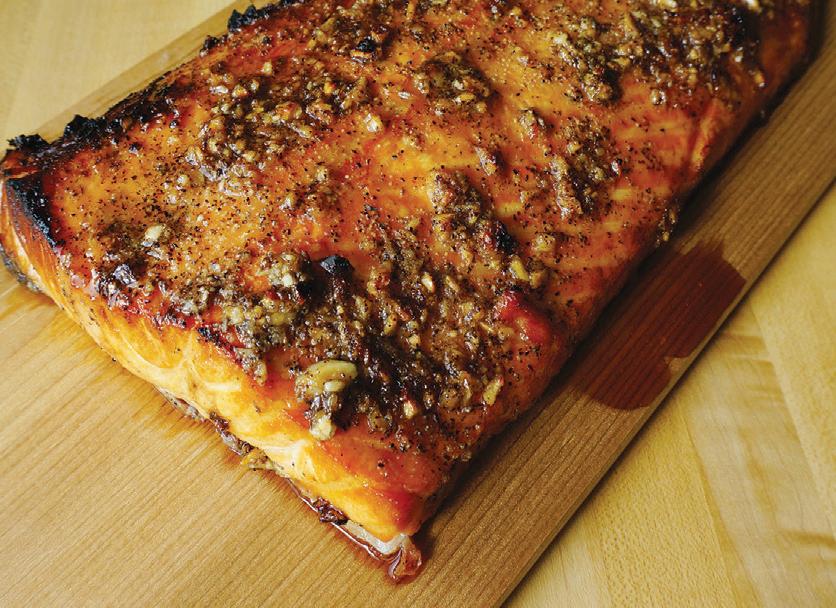




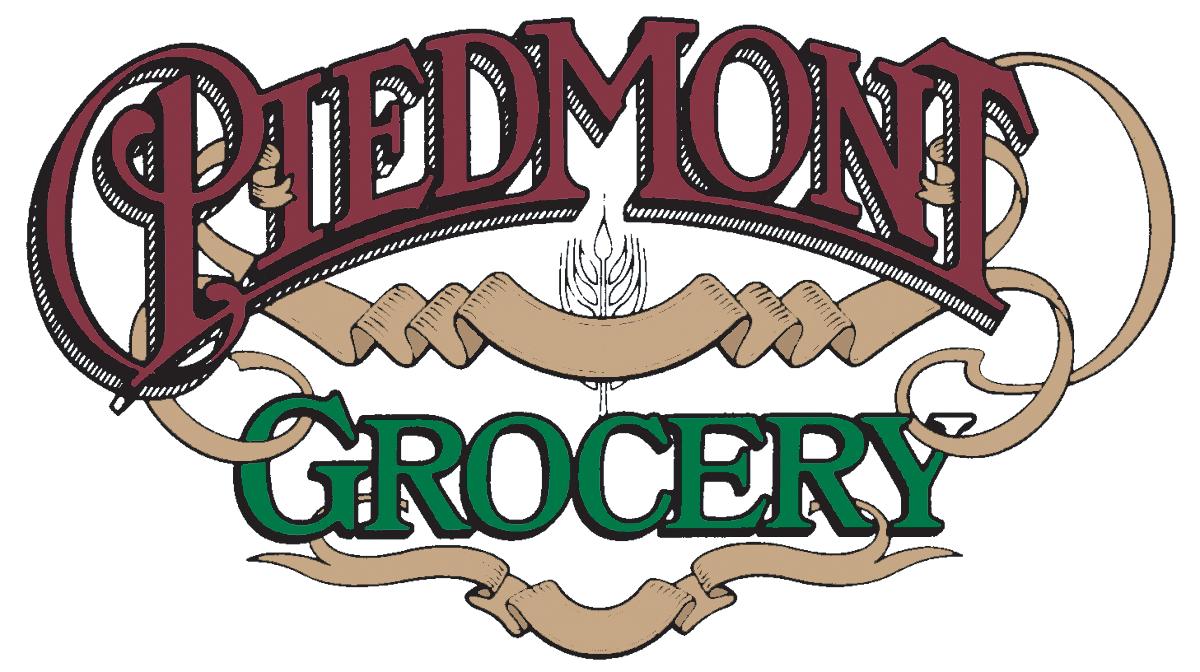
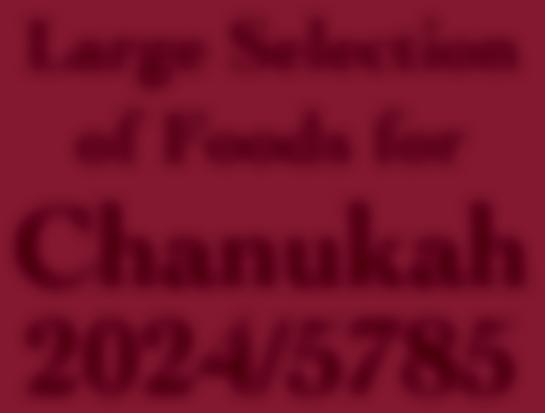
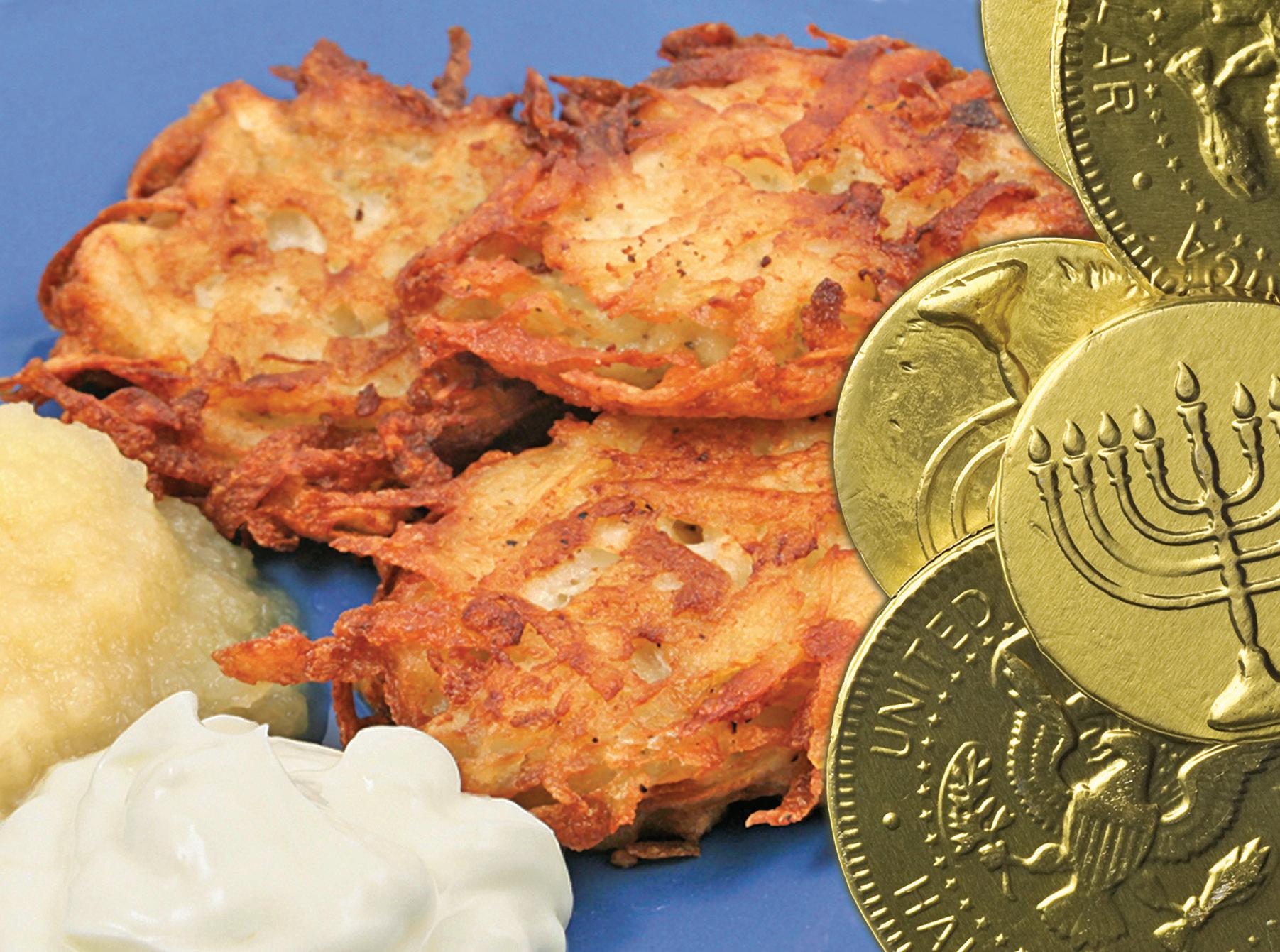
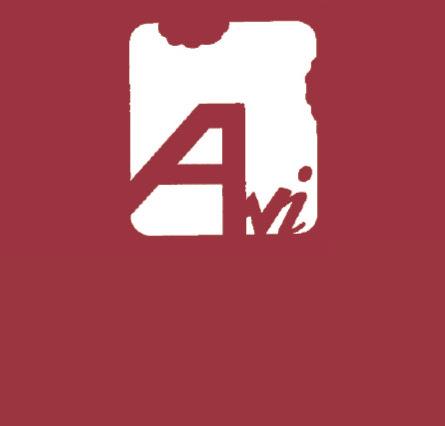
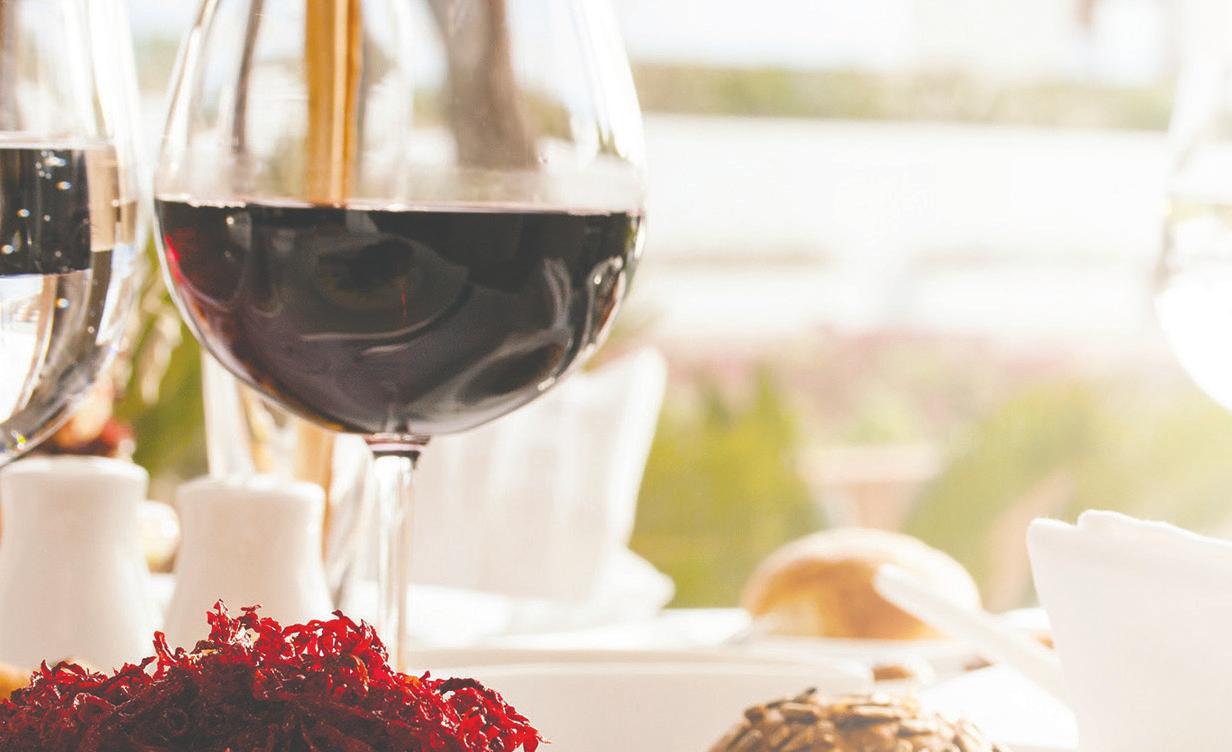
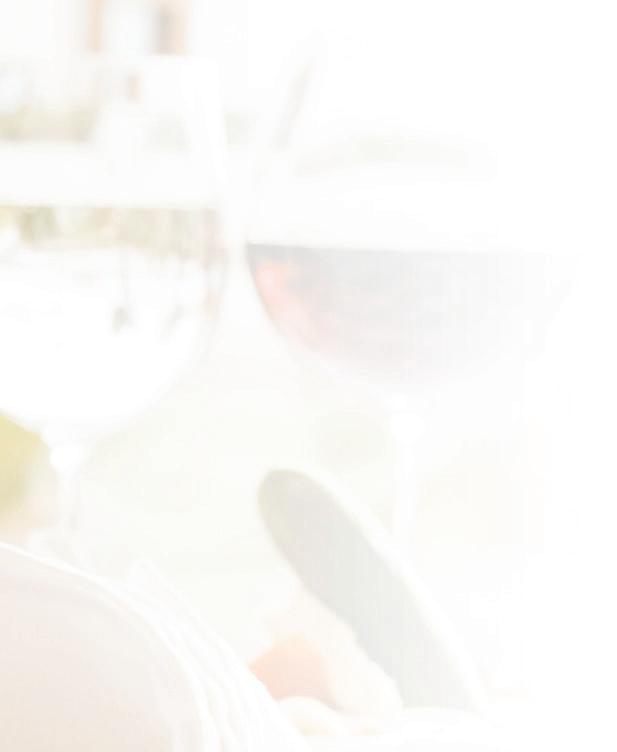
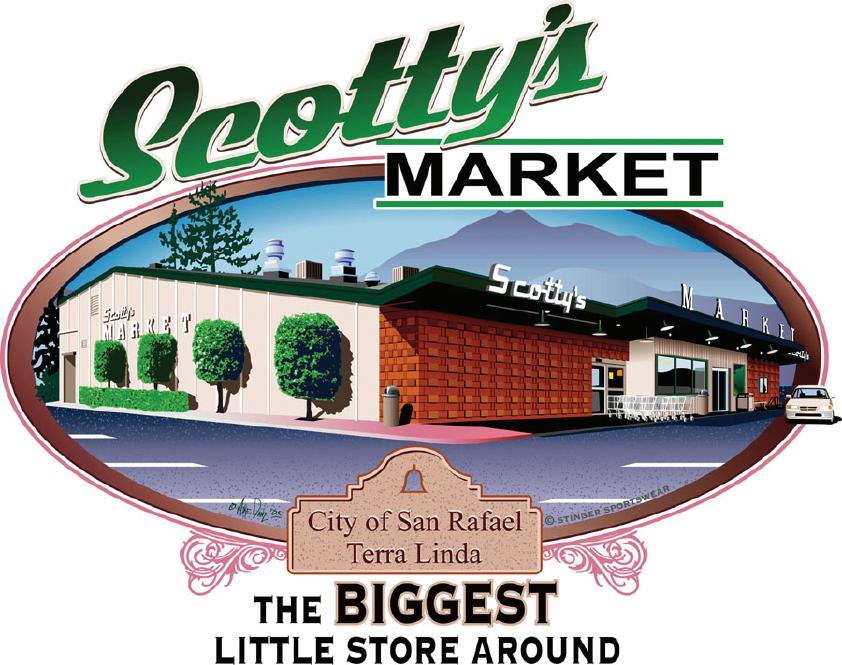
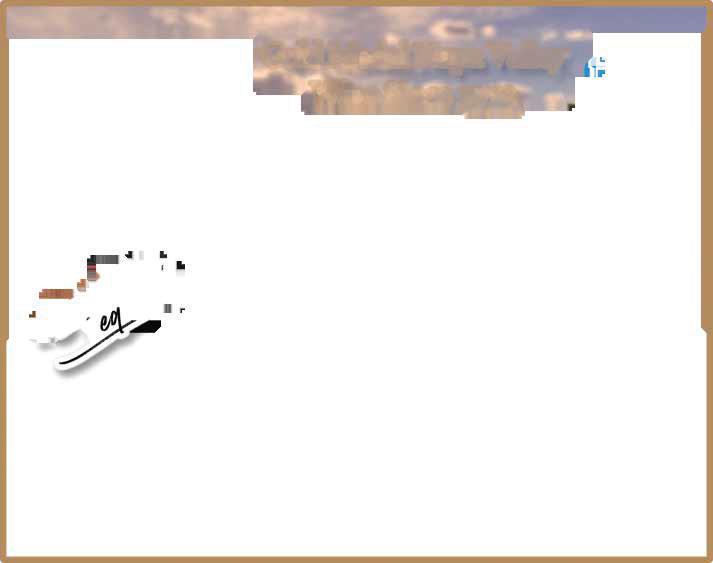
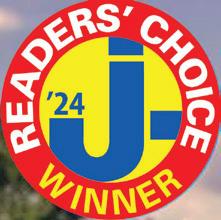



LEA LOEB | J. STAFF
Yes, Hanukkah is the Festival of Lights, when we celebrate a great miracle. But let us not forget the delicious foods we are encouraged to eat. Here are some restaurants and bakeries o ering Hanukkah goodies for pickup, delivery or dine-in. For the full list, including markets, check out tinyurl.com/latkes-galore.
Canela Bistro & Wine Bar
2272 Market St., S.F. (415) 552-3000 | canelasf.com
Canela’s four-course Hanukkah menu includes potato and mixed veggie latkes, Jerusalem artichoke soup, seared wild fish and dessert crepes with gelt. An optional course of brisket and wine pairings is available as an add-on. Order for pickup or delivery, or make reservations to dine in Dec. 26-29.
Che Fico
834 Divisadero St., S.F. (415) 416-6980 | chefico.com
Takeout feast includes tomato braised brisket or bu ernut squash lasagna with latkes, roasted beet salad, sesame challah, chocolate gelt and a bo le of Lambrusco or nonalcoholic beverage. Items available a la carte with an add-on dessert option of gianduja babka. Order for pickup or delivery on Dec. 23.
Greens Restaurant
2 Marina Blvd., Fort Mason, Bldg A, S.F. (415) 771-6222 | greensrestaurant.com e dinner includes vegetarian, vegan and gluten-free holiday dishes like portobello mushroom wellington, potato kugel and matzah ball soup plus desserts. Items are a la carte and must be ordered by Dec. 16 for pickup Dec. 24.
Grossman’s Noshery & Bar
308½ Wilson St., Santa Rosa (707) 595-7707 | grossmanssr.com
is season’s menu includes brisket with potato leek latkes, matzah ball soup and veal-stu ed cabbage. Dessert items include sufganiyot with housemade strawberry jam, rugelach and babka. Items are a la carte and available for pickup Dec. 26-31.
King Knish
660 Fourth St., #479, S.F. (628) 246-6783 | kingknishsf.com
King Knish specializes in knishes, but their regular o erings also include artisan latkes, like grilled zucchini and yellow squash, plus chunky applesauce made with an organic blend of apples, caramelized raisins and a high-grade bourbon. Order online for pickup or delivery or dine in.
Loquat
198 Gough St., S.F. (415) 932-6816 | loquatsf.square.site
Loquat has an assorted Hanukkah cookie box and sufganiyot filled with strawberry and rose jam. Preorder by Dec. 17 for Dec. 20-30 pickup.
Marla
208 Davis St., Santa Rosa (707) 852-4098 | marlabakery.com
Marla is o ering four-count boxes of sufganiyot filled with either Meyer lemon cream or dulce de leche cream. Available for pickup Dec. 24 and Dec. 27-29.
Masse’s Pastries
1469 Sha uck Ave., Berkeley (510) 649-1004 | massespastries.com is European-style bakery in Berkeley is o ering sufganiyot filled with raspberry jelly, vanilla bean custard or lemon curd. Preorder 48 hours in advance for pickup Dec. 26-31.
One Market Restaurant
1 Market St., S.F. (415) 777-5577 | onemarket.com
Hanukkah is being celebrated all month with One Market’s annual “Festival of Latkes,” featuring nine options loaded with toppings: pulled brisket with BBQ sauce, jalapeño and American cheese ($7.50), pastrami “Reuben” with Mark ’n Mike’s dressing, steak tartare and egg yolk ($14) and more. Available for dining in through Dec. 31.
Revival Bar & Kitchen
2102 Sha uck Ave., Berkeley (510) 549-9950 | revivalbarandkitchen.com
A latke and brisket dinner is on the menu for Hanukkah. Preorder for pickup Dec. 27.
Saul’s Restaurant & Delicatessen
1475 Sha uck Ave., Berkeley (510) 848-DELI | saulsdeli.com
Several options to celebrate Hanukkah include a “latke tent” block party, Hanukkah reservations for inside the restaurant and a la carte items for takeout like latkes and cream or sufganiyot.
Wise Sons Jewish Deli wisesonsdeli.com
Hanukkah menu includes roast brisket, challah, latkes and braised winter greens. ere’s also a pastry box with babka and rugelach plus a la carte items like matzah ball soup for two ($19), chopped liver ($10.50) and sufganiyot ($20/half-dozen). Preorder two days prior for pickup or delivery Dec. 22-Jan. 2. ■
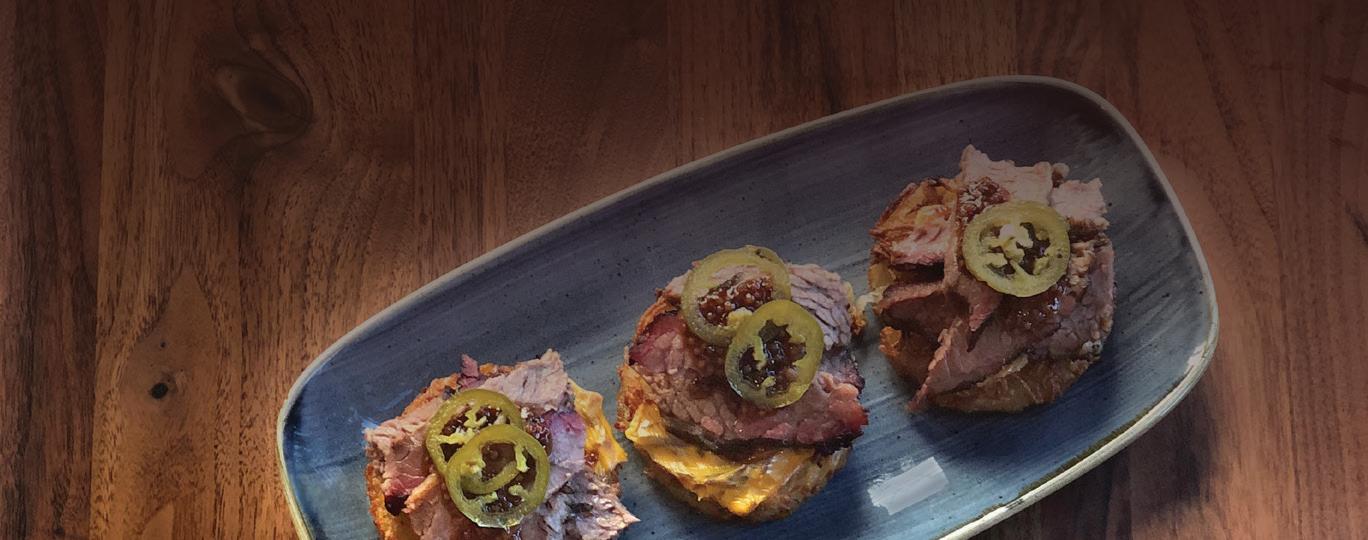
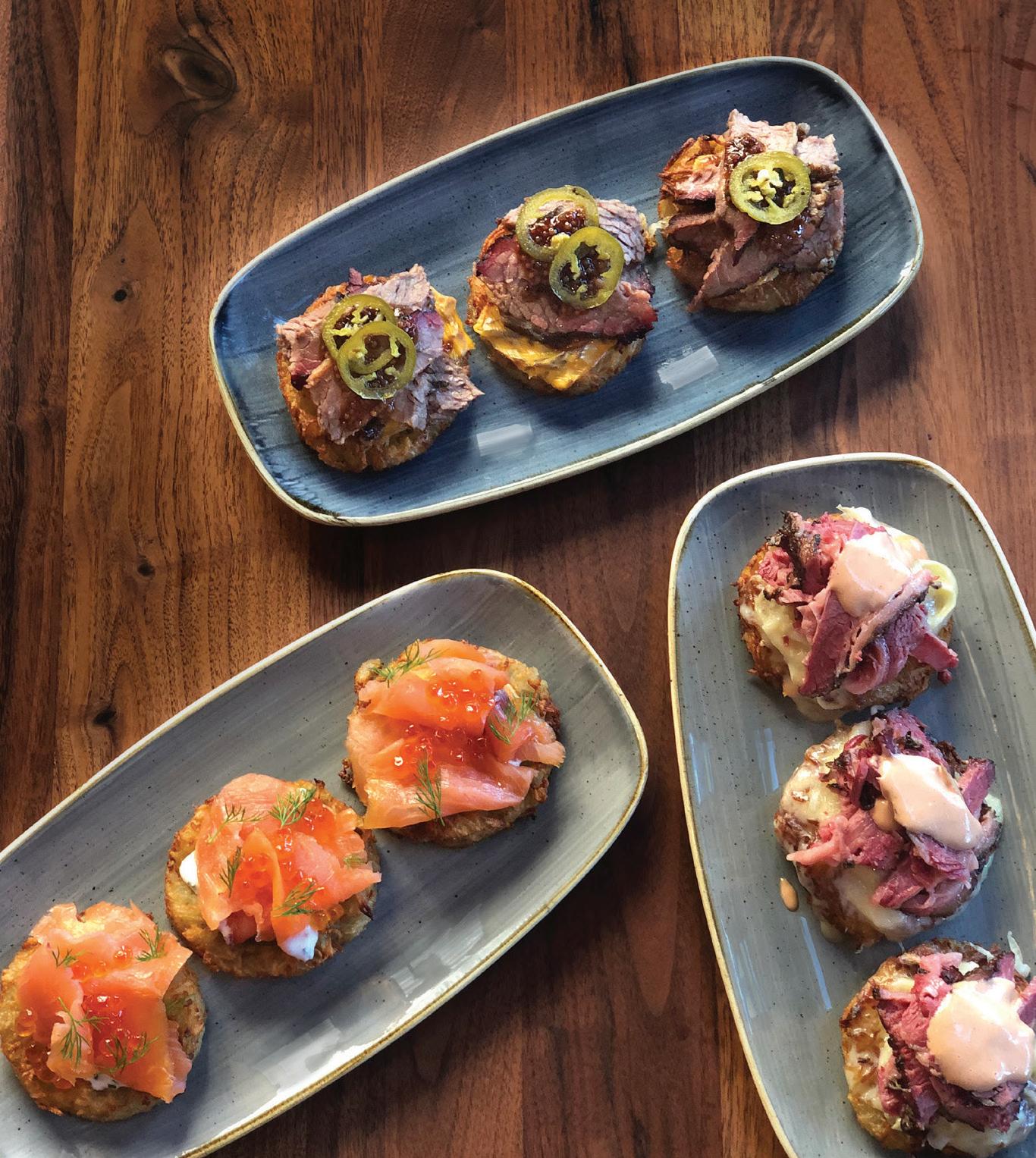
Throughout December at lunch and dinner, we’re serving up nine delectable “loaded” latkes to celebrate Hanukkah season. Come and celebrate with us!
Traditional (vg) crispy potato pancake, sour cream, house-made applesauce 5.50
Pulled Brisket bbq sauce, pickle, jalapeño, american cheese 8.95
Pastrami “Reuben” MnM dressing, sauerkraut, swiss cheese 9.95
Bodega Bay Smoked Salmon chive crème fraîche, salmon caviar, dill 10.95
Onion “Soup” (vg) caramelized onion, gruyere cheese 8.95
Swiss raclette cheese, bresaola 11.95
Smoked Sturgeon Rillette chives 9.50
Breakfast house-made chicken apple sausage, sunny side up egg 10.95
Steak Tartare egg yolk 9.95
Reservations at onemarket.com
NEW YEAR’S EVE AT ONE MARKET
Join us for a festive feast, complete with champagne and fireworks! Menu and details on onemarket.com

!
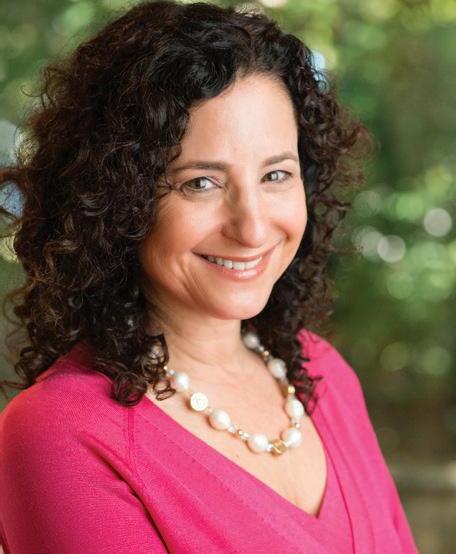
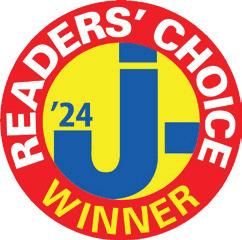





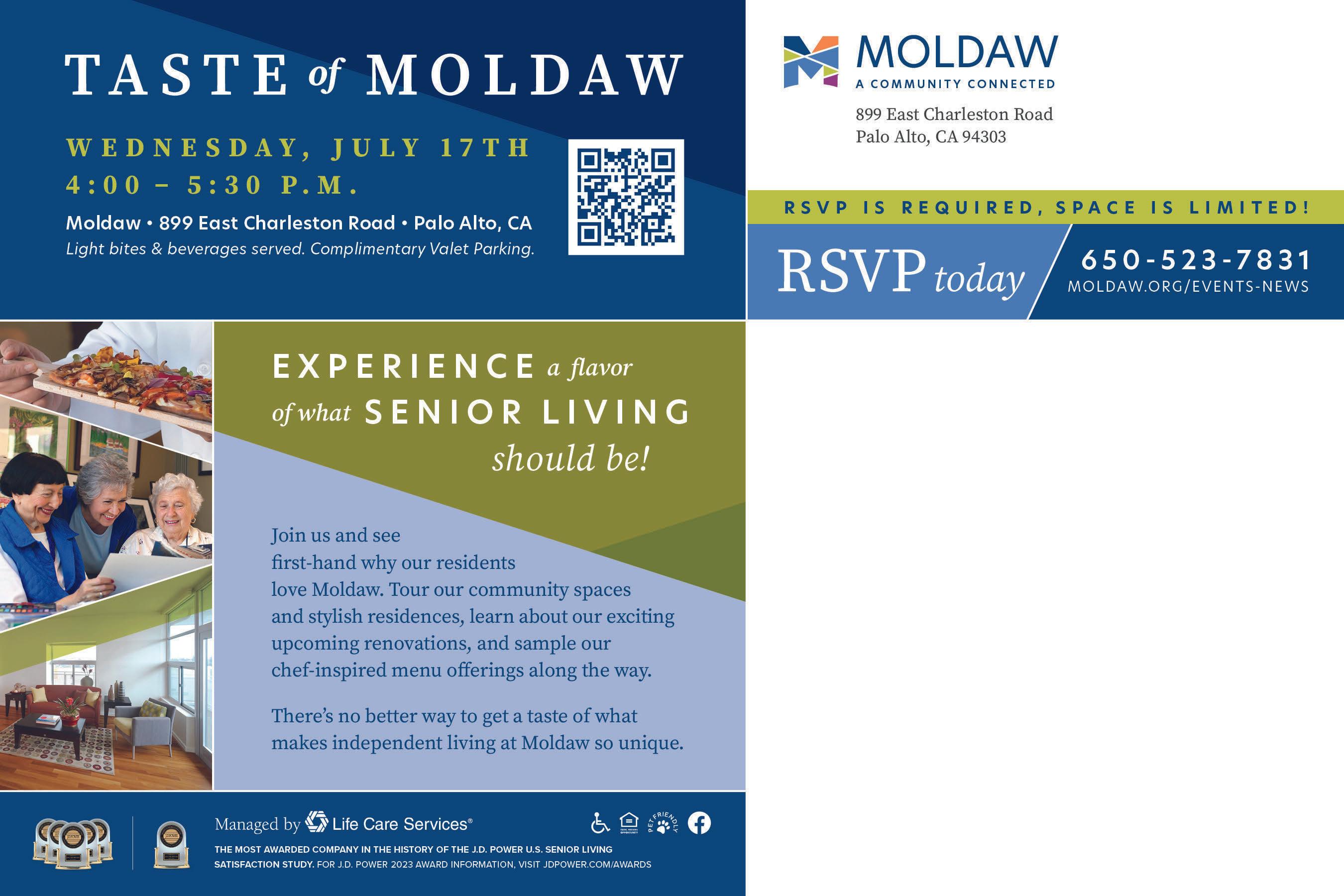

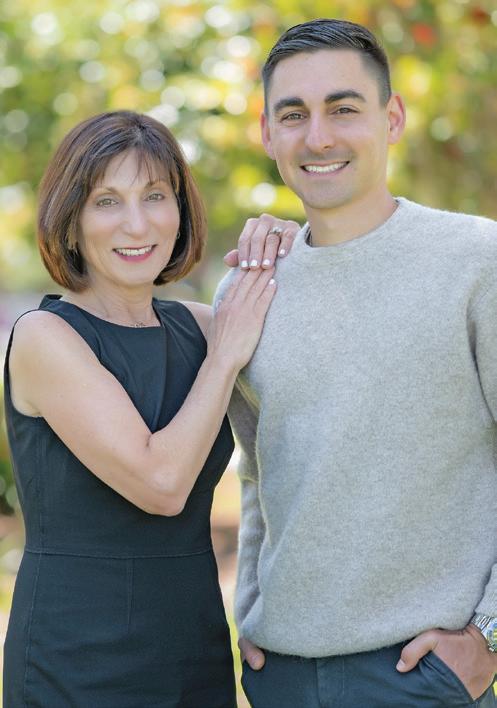
Laurie & Andrew Benson
DRE# 00853673
1440 Chapin Ave., Ste. 200, Burlingame Cell: 650.245.4530
BensonGroup@compass.com www.BensonGroupRealEstate.com


email:alon@ascpainc.com
www.ascpainc.com
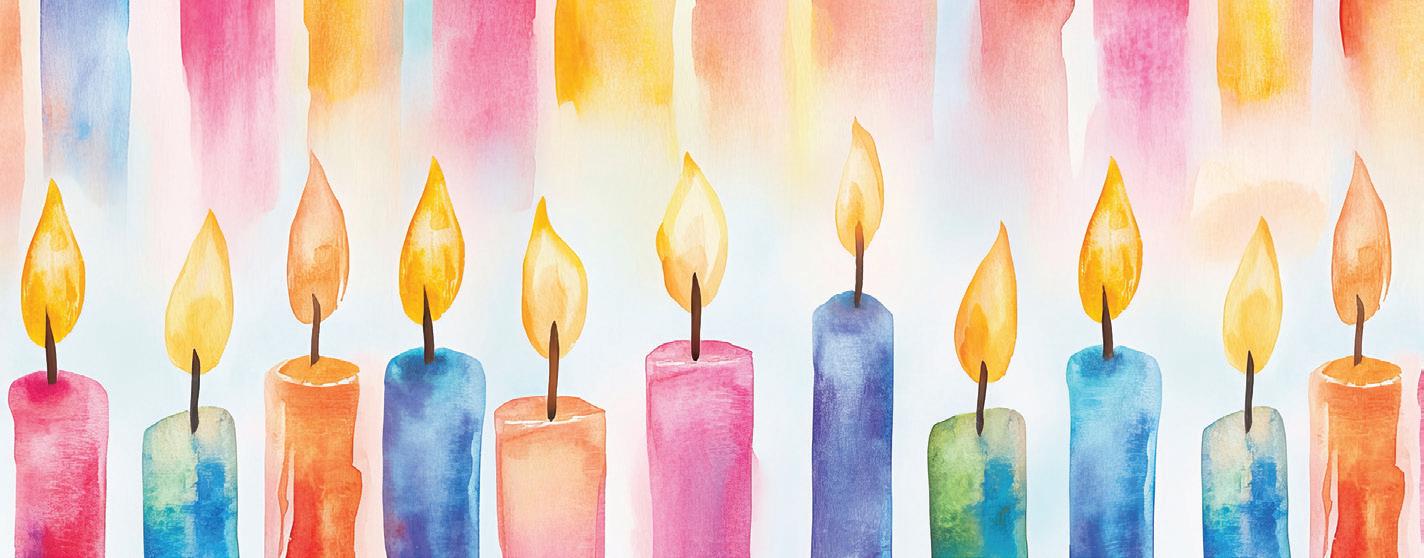
“I
I

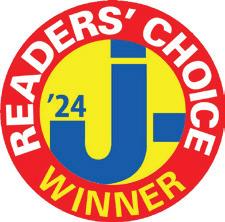
SATURDAY | December 14
“ISRAEL AT WAR”—Tal Becker of the Shalom Hartman Institute examines the current struggle Israel faces and its profound implications for Jewish peoplehood. At Oshman Family JCC, 3921 Fabian Way Palo Alto. 7:30-9 p.m. $33.85. tinyurl.com/tal-becker
SUNDAY | December 15
BEDOUIN COMMUNITY
REPRESENTATIVES VISIT—CEO of the Regional Council for the Unrecognized Villages of the Negev Yeela Raanan and Bedouin architect and urban planner Obna Sana share their story, visions and goals after their community was deeply affected by the
events of Oct. 7. At Congregation Etz Chayim, 4161 Alma St., Palo Alto. 12:30 p.m. Free. tinyurl.com/ bedouin-reps
THURSDAY | December 19
“CALIFORNIA DREAMING: THE MAMAS & THE PAPAS”—Rock historian Richie Unterberger discusses the 1960s folk-rock band’s classic songs, like “California Dreaming,” “Monday Monday,” “I Saw Her Again” and more with film clips of performances and discussion. At JCCSF, 3200 California St., S.F. 1-2 p.m. Free. tinyurl. com/mamas-papas-talk
CONTEMPORARY JEWISH MUSEUM, 736 MISSION ST., S.F. THECJM.ORG CALIFORNIA JEWISH OPEN— Open-call exhibit featuring works by 47 California-based Jewish artists reflecting on their connection to Judaism, the world and their own history. Through Dec. 15.
“NICKI GREEN: FIRMAMENT”— Exhibit featuring artwork that invokes metamorphosis, fermentation and Jewish ritual. Through Dec. 15.
THE MAGNES, 2121 ALLSTON WAY, BERKELEY. MAGNES.BERKELEY.EDU “IN PLAIN SIGHT: JEWISH ARTS AND LIVES IN THE MUSLIM WORLD”—Exhibit showcasing Jewish objects originating from Muslim lands that reflect cultural affinities and common threads between the cultures. Through May 15.
FRIDAY | December 20
“LATIN JEWISH GOZADERA”—Olamim and Chochmat HaLev present Shabbat honoring the Latin Jewish community with music and gozadera (party) oneg featuring Latin potluck dishes, stories from Latin Jewish community members and dancing to Latin rhythms. At Chochmat HaLev, 2215 Prince St., Berkeley. 6-7:30 p.m. Free. tinyurl. com/latin-shabbat
SUNDAY | December 15
SIX13 HANUKKAH SPECIAL—Holiday concert performed by six-man a cappella group. At Oshman Family JCC, 3921 Fabian Way, Palo Alto. 4:30-5:30 p.m. and 6:30-7:30 p.m. $30 kids and students, $50 adults. tinyurl.com/six13-show
MONDAY | December 16
“TOWARD THE LIGHT”—Grammy-winning klezmer group The Klezmatics perform seasonal
music from their holiday album. At The Sofia: Home of B Street, 2700 Capitol Ave., Sacramento. 7 p.m. $40. tinyurl.com/klezmatics-sac
TUESDAY | December 17
“YIDDISH FAVORITES OLD AND NEW”—Klezmer group performs popular Yiddish folk songs and newer melodies. With Cindy Paley on vocals and guitar, Zina Pozen on accordion, Asaf Ophir on clarinet and Nathan Ladyzhensky on violin. At Oshman Family JCC,
December 13-January 3
OSHER MARIN JCC, 200 N. SAN PEDRO ROAD, SAN RAFAEL. MARINJCC.ORG “CELEBRATING JEWISH LIFE IN MARIN”—Retrospective photography exhibit by Norm Levin featuring framed color prints, depicting the wide variety of celebrations, holidays and ceremonies of Marin’s Jewish community. Through December.
SUNDAY | December 15
“CONNECTING TO JEWISHNESS THROUGH ART”—California Jewish Open artists Tiffany Shlain and Amy Trachtenberg discuss the intersections of identity and heritage, and their works on view in the exhibition. At CJM, 736 Mission St., S.F. 11:30 a.m. Free. tinyurl.com/ connecting-art
MONDAY | December 16
“TAMARA DE LEMPICKA: ART DECO DIVA”—Furio Rinaldi, curator in charge of works on paper at the Fine Arts Museums of San Francisco, discusses how leading Art Deco painter Tamara de Lempicka’s hidden Jewish identity and cultural heritage informed her as an artist and woman. At JCCSF, 3200 California St., S.F. 1-2 p.m. Free. tinyurl.com/art-deco-diva
SUNDAY | December 15
“TASTING FLIGHT: POEMS”—Yiskah Rosenfeld discusses her collection of poems exploring the trials of being a woman, mother and imperfectly human. At Jewish Community Library, 1835 Ellis St., S.F. 2-3:15 p.m. Free. tinyurl.com/ tasting-flight
“FROM OY TO JOY”—Shulamit Sofia discusses her new book, subtitled “A Soul Journey to Making the Best of Your Life for the Rest of Your Life,” which offers readers ways to cope with inevitable obstacles by using the principles of “Spiritual Aging” to better navigate the constantly changing challenges of the growing older. At Jewish Community Library, 1835 Ellis St., S.F. 4:30-5:30 p.m. Free. tinyurl. com/oy-to-joy
SUNDAY | December 15
“FIDDLER ON THE ROOF”—Singalong screening of the 1971 film musical about a family in the fictional Jewish shtetl of Anatevka. Presented by Sonoma County Jewish Film Festival. At Rialto Cinemas, 6868 McKinley St., Sebastopol. 1 p.m. $15.25 adults, $13.25 seniors and kids. tinyurl. com/fiddler-sing-along
3921 Fabian Way, Palo Alto. 1-2 p.m. $25 at door. tinyurl.com/yiddishold-new
SATURDAY | December 21
SAN FRANCISCO YIDDISH COMBO— Concert by classically trained musicians who put a fresh spin on klezmer by blending jazz, blues, folk and hip-hop. At Congregation Beth David, 19700 Prospect Road, Saratoga. 7:30 p.m. $20. tinyurl. com/BD-yiddish-combo
WEDNESDAY | December 18
“THE AMEN EFFECT”—Rabbi Alyson Solomon discusses the themes and key ideas in Rabbi Sharon Brous’ new book, “The Amen Effect.” At Osher Marin JCC, 200 N. San Pedro Road, San Rafael. 1-2 p.m. Free. tinyurl.com/amen-effect-3
SUNDAY | December 22
“JEWISH CALCUTTA THROUGH MUSIC AND MEMORY”—Rahel Musleah discusses her book, which explores the distinctive heritage of the Jews of India and Iraq through the prism of her family’s story. Presented by Jewish Community Library and New Lehrhaus. Online. 2-3 p.m. Free. tinyurl.com/jewish-calcutta
TUESDAY | December 17
“THE KLEZMER PROJECT”—A wedding cameraman and a clarinet player fall in love at a Jewish wedding in Argentina and travel to Eastern Europe in search of remnants of Yiddish and klezmer culture. Presented by Sonoma County Jewish Film Festival. At Rialto Cinemas, 6868 McKinley St., Sebastopol. 1 and 7 p.m. $15.25 adults, $13.25 seniors and kids. tinyurl.com/klezmer-project
MONDAY | December 16
“DEEP INSIDE TONIGHT”—Musical by Kinsey Sicks drag quartet featuring hot topics, scandals and the recent presidential campaign in a mock newscast. For adults. At Congregation Ner Shalom, 85 La Plaza, Cotati. 7:30-9 p.m. Livestream, $32.50; in-person, $37.75; in-person VIP, $53.50. tinyurl.com/kinsey-sicks
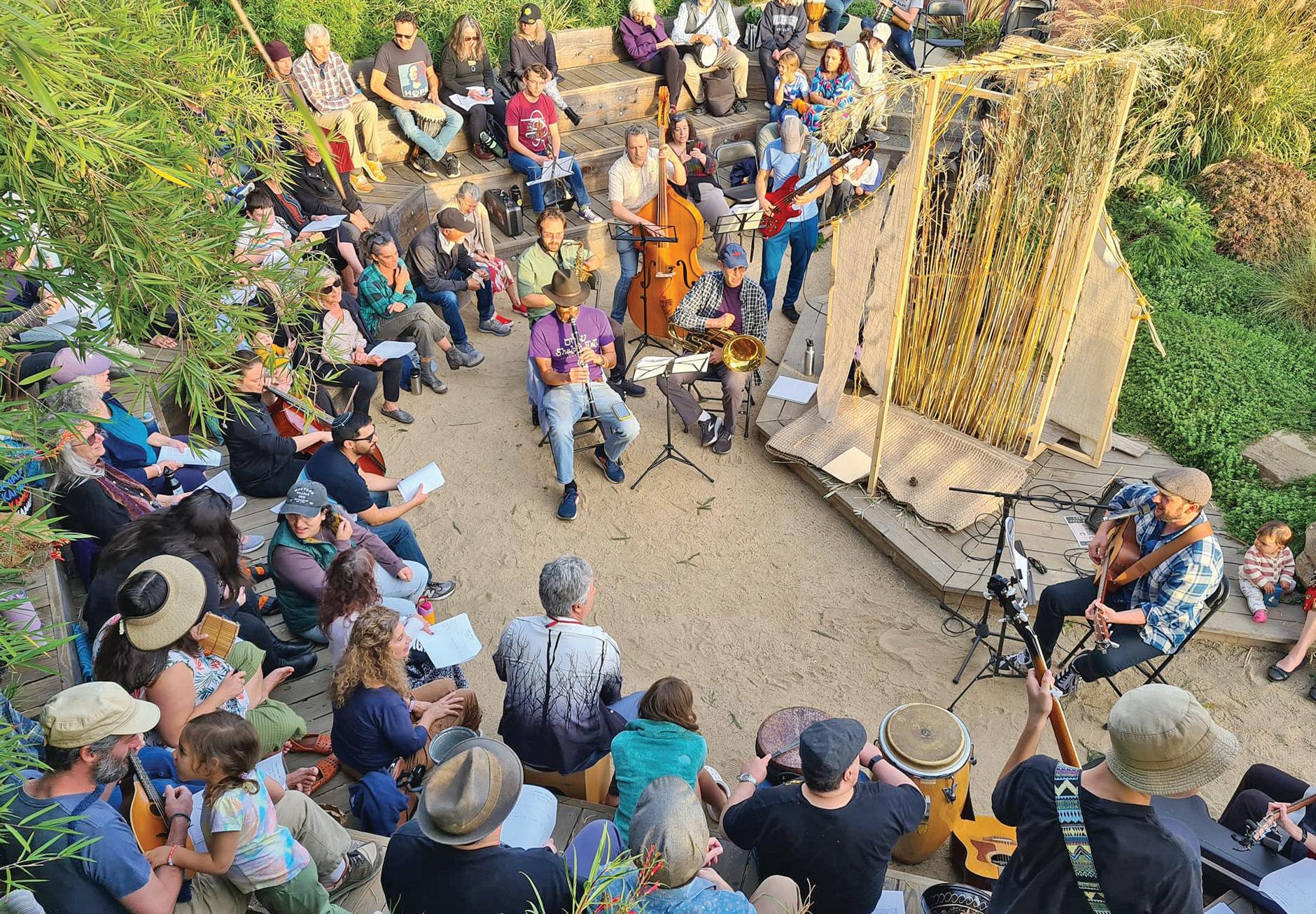
SOUPER SAUCERS COOK DAY—Cook and help distribute a big pot of soup for folks in need on Wednesday nights. Presented by Repair the World, a Jewish service organization that connects young adults to volunteer opportunities with local nonprofits. At Urban Adamah, 1151 Sixth St., Berkeley. 5-8 p.m. Registration required. tinyurl.com/soup-cook-day
THE GIVING KITCHEN—Seeking volunteers to cook meals for those in need at Chabad’s kosher community kitchen. At Chabad of SF, 496 Natoma St., S.F. Times vary. Registration required. tinyurl.com/ giving-kitchen
CLOTHING DRIVE—Congregation Sha’ar Zahav is collecting blankets, jackets, and new or lightly used clothing and socks to be distributed to the homeless by the Gubbio Project. At Sha’ar Zahav, 290 Dolores St., S.F. Weekdays 9 a.m.-5 p.m. shaarzahav.org
THE PALMS INN DRIVE—Congregation Beth Ami is collecting clean, slightly or never-worn clothing like socks, hats, scarves, gloves, sweatshirts, warm tops, jeans, rain gear, jackets, shoes, slippers, etc. and new toiletries like tampons, pads, toothbrushes, toothpaste, soap, shampoo, toilet paper, etc. to donate to those
residing at the Palms Inn, which provides housing for veterans and people experiencing homelessness. Through Dec. 16. Drop off during operating hours at Beth Ami, 4676 Mayette Ave., Santa Rosa. bethamisr.org
SYNAGOGUE HOLIDAY DINNERS
DRIVE—East Bay’s Temple Isaiah, Beth Chaim, B’nai Shalom and B’nai Tikvah are participating in a drive to raise money to provide holiday dinners to those in need through the Food Bank of Contra Costa and Solano. Donate online to participate. tinyurl.com/ccfood-drive


Follow the tradition of your ancestors and spend Christmas at a Chinese restaurant. The annual comedy fest, now in its 32nd year, features stand-up sets by Ophira Eisenberg, Matt Kirshen, Becky Braunstein and organizer Lisa Geduldig to accompany your meal. Plus, there will be Yiddish proverb fortune cookies. Livestream option available. Benefits Shalom Bayit and Chinatown YMCA Food Pantry.
Dec. 24-26. At Imperial Palace Restaurant, 818 Washington St., S.F. Times vary. $35-$117. KosherComedy.com
Sacred Music Fellowship presents an interfaith concert and jam session with leaders from Jewish, Muslim, Christian and secular groups, including Congregation Netivot Shalom, College Avenue Presbyterian Church, Islamic Sufi Mevlevi Order of America, Congregation Beth Israel, Epworth United Methodist Church, Sufi Ruhaniat International, Chochmat HaLev and Berkeley Hillel. Bring acoustic instruments and/or your voice; lyrics and chords will be projected so all can participate.
4:30-6:30 p.m. Sunday, Dec. 15. At Ashkenaz, 1317 San Pablo Ave., Berkeley. $16-$25 sliding scale, $10 for students, free for kids 12 and under. tinyurl.com/interfaith-jam
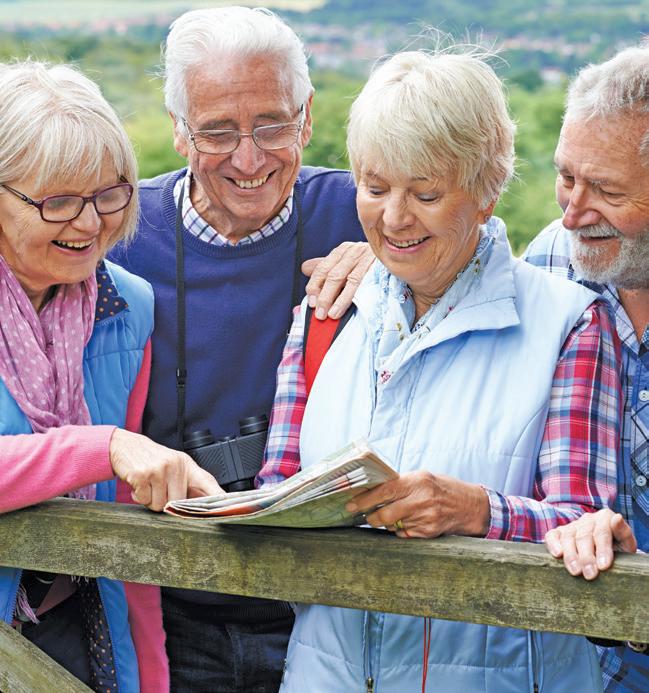



MAYA MIRSKY | J. STAFF
Jews across the U.S., including in the Bay Area, have donated generously to campaigns to support Israel and to fight antisemitism since the Oct. 7, 2023, Hamas attack.
But there’s a flip side.
In the past year, many have given less money to local Jewish organizations whose missions — whether related to education, social services or culture — don’t revolve around today’s politically charged issues, Bay Area nonprofit leaders tell J.
Coming as nonprofits continue to recover from the impact of the Covid-19 pandemic, the funding shift has hit hard and, in some cases, could have long-term consequences.
“The place where we began to see it pretty immediately was with individual donors,” some of whom “directly told us that they were pivoting and redirecting all their philanthropy to Israel,” Tucker said. “That was a message that we got loud and clear from many different people. And then there’s sort of the quiet exodus of donors who just didn’t renew their support.”
Urban Adamah, a 13-year-old Jewish urban farm on 2 acres in Berkeley, has also seen a dip in donations since the Israel-Hamas war began, said executive director Adam Weisberg.
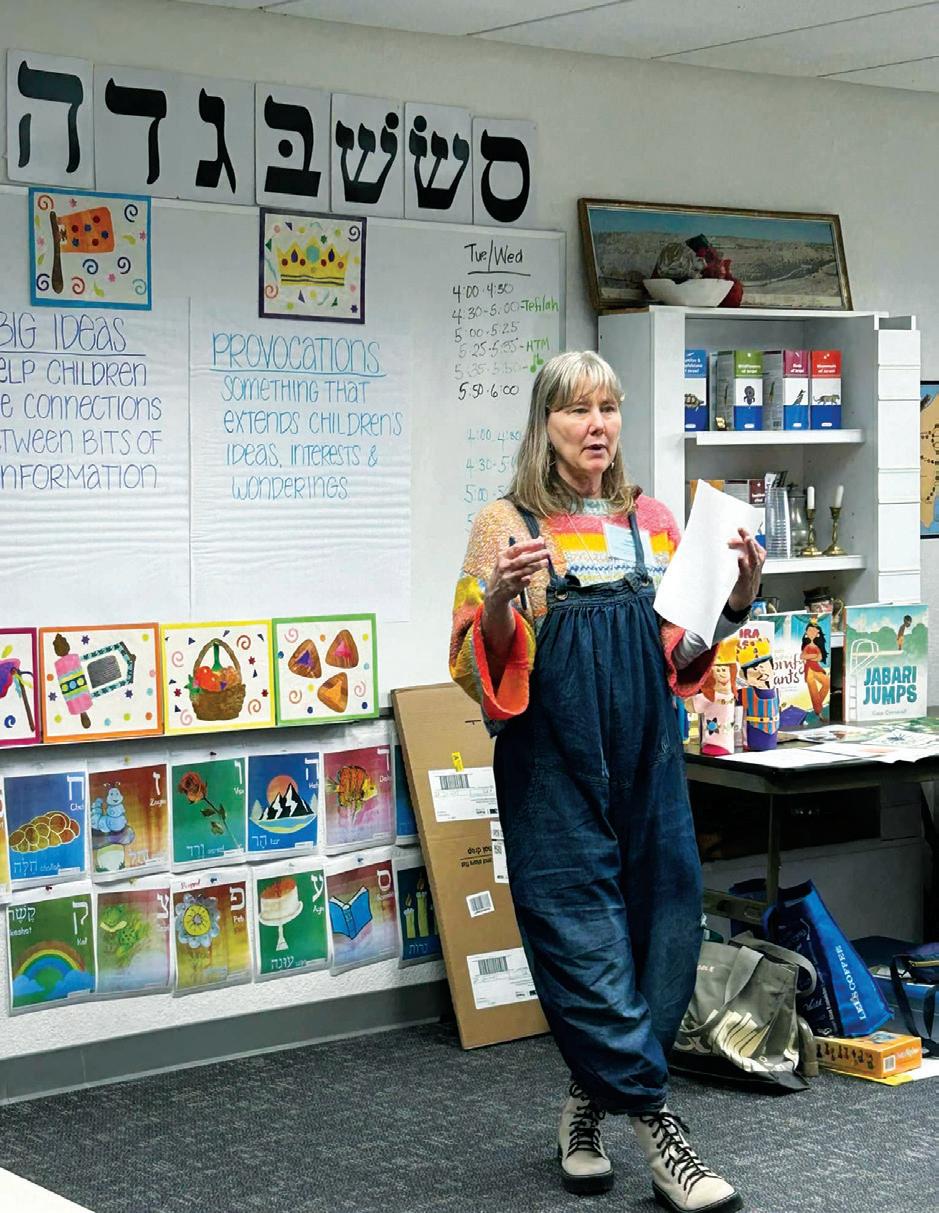
“We’ve literally seen both the number of individual gifts we receive and the amount of individual funding we receive just kind of slide down,” said Dana Sheanin, CEO of Jewish LearningWorks. Long known as the Bureau of Jewish Education, the 126-yearold nonprofit trains and mentors Jewish educators across the Bay Area.
Jewish LearningWorks isn’t alone. Shalom Bayit, the Bay Area’s Jewish domestic-violence prevention organization founded in 1992, has seen a 25% drop in donations from individuals since the Oct. 7 attack, executive director Naomi Tucker said.
“In the months following Oct. 7, we did hear from, not a huge number but certainly a number of donors, who said that they were considering or were giving more to organizations directly offering assistance in Israel or working to address antisemitism in North America, and therefore they might not be giving as generously to Urban Adamah as they had in past years,” he said.
Robin Mencher, CEO of Jewish Family & Community Services East Bay, said the story has become a familiar one.
“Almost everyone else I’ve spoken to in the Jewish nonprofit space experienced a reduction of donations at year’s end in 2023,” said Mencher, whose 147-year-old organization provides social services to Jews as well as refugees from Afghanistan and Ukraine.
Some donors told her:
“‘We’re not saying goodbye to you, but we’re really feeling called in other directions,’” Mencher said. “I very much respect that and understand it.”
In August, the Jewish Telegraphic Agency reported that Jewish federations across North America raised more than $850 million in aid for Israel after Oct. 7. As part of that effort, the San Francisco-based Jewish Community Federation and Endowment Fund set up its own Israel Emergency Fund and disbursed $22 million by June
2024 to Israel-related causes.
The Anti-Defamation League likewise experienced a post-Oct. 7 bump in donations for its work in combating antisemitism. National communications director Todd Gutnick told J. donations for the six months following the Oct. 7 attacks were up around 40% from a similar period a year earlier.
“Philanthropy often flows where there is need in times of crisis, and that’s certainly something we’ve experienced at ADL,” regional director Marc Levine told J. Levine said the money has enabled the ADL to fight antisemitism in “K-12 schools and universities, the workplace, health care settings and online.” However, he added, “it is important to remember that long-standing challenges addressed by nonprofits haven’t gone away during this crisis.”
(J., a nonprofit, saw a small bump in donations directly after Oct. 7 in response to its reporting on the local spike in antisemitism.)
The nonprofit executives who spoke with J. said that people should of course donate to the causes they consider most urgent, but those same leaders also want the community to remember the needs that local groups have been filling for years and decades.
down” their operations.
“In the long term, what I would say is the foundation landscape in the Bay Area — and I’m sure you’ll hear this from my colleagues — is really shifting in a way that feels not great,” she said.
Meanwhile, the S.F-based Federation, which for generations had acted as the central clearinghouse to funnel donations to local Jewish organizations, decided in 2023 to make a significant shift in its focus to that of a philanthropic adviser, with donor-advised funds and giving circles — both of which put more control into the hands of donors. The Federation does still award some grants, including 26 grants this fall totaling $670,000 to fight antisemitism
“Underinvestment in the vibrancy of our Jewish community here in the Bay Area really does have long-term repercussions.”
Robin Mencher, JFCS East Bay
in the Bay Area.

“The bulk of their resources are donor-directed, and they’re not in a position to solve this problem for us,” Sheanin said.
“What I’ll say to both individual donors and foundation partners is that we totally recognize the importance of those other areas that they’re funding, and we honor that they need to focus in the areas that they think are most pressing, critical,” Weisberg said. “And we hope that they will consider some degree of continued funding for our work, given the investment they’ve made over the years.”
In addition to a drop in donations from individuals, institutional giving has, in some cases, waned.
The San Francisco-based Walter & Elise Haas Fund, which gave out about $13 million in grants in 2023, announced in November last year that it had “paused the Jewish life grantmaking program” and would take no applications in 2024.
Shalom Bayit’s Tucker said she knows of some smaller foundations that are “winding
Weisberg said Urban Adamah has seen institutional support weaken.
“In the past months, [we] learned that two foundations that have provided major support over a decade-plus will not be continuing that support because they’ve shifted their priorities and their focus to other areas,” he said. Fortunately, he added, donors have stepped up to help fill that gap.
Shalom Bayit had previously raised money from non-Jewish foundations that focus on domestic violence prevention, but such sources have dried up post-Oct. 7 because, according to Tucker, supporting a Jewish organization, regardless of its mission, is seen by some as “giving to the oppressor.”
“It’s almost impossible to get non-Jewish funding now, so we rely on funding within the Jewish community. And funding within the Jewish community, in the world of Jewish philanthropy, has really been shifting,” she said, in part because of Oct. 7.
The real-world consequences of current fundraising trends include layoffs, hiring freezes, scaled-down operations and actual closures.
For Sheanin, this is not a future problem but a present one. Jewish LearningWorks has seen a nearly 50% drop in annual gifts since the Oct. 7 Hamas attack.
“We are down two staff positions since last December,” she said.
Mencher of JFCS said that a drop in donations has delayed implementing parts of its strategic plan.
“The collective impact, I think, is that underinvestment in the vibrancy of our Jewish community here in the Bay Area really does have long-term repercussions,” she said.
can be sure of exactly where we’re going to come out, but you feel like you have a relatively good chance of making your number.”
Tucker feels frustrated because she considers Shalom Bayit’s work as important as ever.
Many domestic abuse survivors continue to struggle over the global denial of sexual violence perpetrated by Hamas on
“We’ve seen the number of individual gifts and individual funding we receive just kind of slide down.”
Dana Sheanin Jewish LearningWorks
Two local organizations shut down this year and another is on hiatus, although it can’t be said with any certainty whether the post-Oct. 7 funding shift was the final straw.
Social justice group Jewish Youth Community Action announced this fall that it would close, citing “chronic” staff turnover, financial woes and other struggles, one year shy of its 30th anniversary. It lost major funding from the Walter & Elise Haas Fund.
The Jewish Coalition for Literacy — a program of the Jewish Community Relations Council Bay Area — closed this summer after 25 years of helping kids learn to read. “After Oct. 7 and the crisis that ensued, JCRC had to direct all available resources to really address the needs of the community facing the alarming rate of antisemitism and anti-Israel vitriol,” Jan Reicher, JCRC’s board president, told J. at the time.
Then in November, the Contemporary Jewish Museum announced that it would close for at least a year to regroup and reassess its finances. Dec. 15 is the last day CJM will be open to the public. Executive director Kerry King told J. that “no one factor” created the institution’s yearslong financial problems but that donors pivoting to Oct. 7-related giving “has been a factor.”
An uncertain future
The situation for Jewish nonprofits going forward feels fraught, Sheanin said.
“I actually think it’s going to get worse for a lot of our organizations,” she said. “And I’m fearful.”
This instability makes it harder to plan.
“Every year, some people step up, some people step back, so you maintain some kind of equilibrium,” she said. “You never
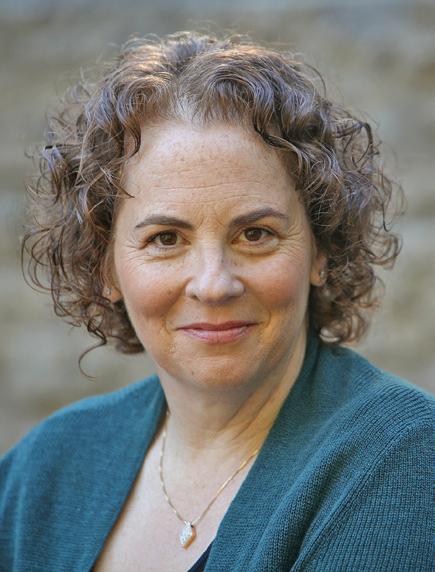
Oct. 7, and over the re-election of President Donald Trump, who was found liable for sexual abuse. Shalom Bayit has also faced antisemitism from former allies in the domestic violence prevention arena and even from former funders, Tucker said.
“It’s not as if there’s a decrease in the need,” she said. “There’s more difficulty, and yet we have a lot less funding. So that’s been really hard.”
Mencher expects the community’s need for JFCS services to grow during the coming Trump administration, which plans to target immigration, both illegal and legal. The nonprofit has assisted more than 2,150 people from Afghanistan and the Ukraine since 2021 through its refugee services.
“There’s no shortage of work to be done,” she said.
Barry Finestone, CEO of the S.F.-based Jim Joseph Foundation, which has been a strong funder of Jewish education, warned in a November 2023 eJewishPhilanthropy op-ed that donors shouldn’t forget American Jewish organizations as they pour donations into helping Israel.
“Right now, the Jewish philanthropic community must have a ‘yes, and’ approach toward funding,” he wrote. “Yes, we absolutely need to support Israel and Israelis. … Meanwhile, the American Jewish community needs to stay intact. Unless philanthropy steps up in the U.S. as well, there is a genuine chance much of the organizational structure we have spent generations building will be stretched to the limits.”
If that happens, more nonprofits — especially those without a significant endowment — may go under.
“In the case of the really impressive tapestry of Jewish organizations in the Bay Area,” Sheanin said, “we’ll never build back up all what we have if we lose it.” n

BETH GROSSMAN | GUEST CONTRIBUTOR
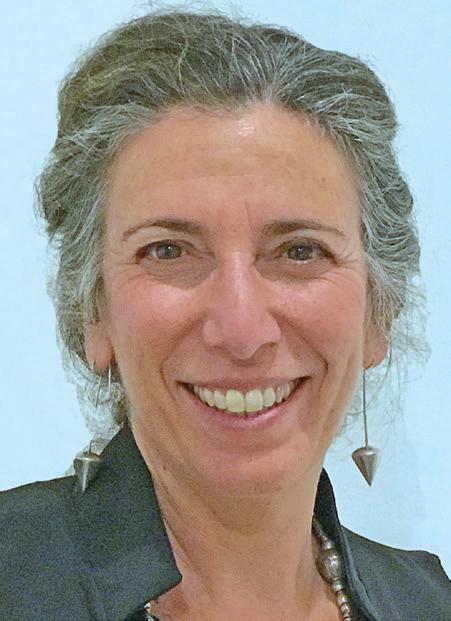
Beth Grossman is an “artist at large,” collaborating with communities, universities, public parks, corporations, nonprofits and museums in the U.S., Russia, Ukraine, China, Italy, Germany, Mexico, Finland and Norway. Her work has appeared in several CJM exhibits.
As a local Jewish artist, I’m deeply saddened by the announcement of the yearlong closure of the Contemporary Jewish Museum starting on Dec. 15 — and especially by the timing of the closure, when public expressions of Jewish identity are more important than ever.
This is a collective loss. So many of us have a personal relationship with the CJM. As a Jewish cultural institution, it is a unique gathering place in San Francisco for our community to celebrate Jewish culture and new Jewish arts in the making.
The CJM is my Jewish home, my muse, inviting me to make art on Jewish themes and explore new ideas. It is where I have shown my artwork, attended lively openings, presented and listened to artist talks, taught and been to workshops for all ages. I have thoroughly enjoyed and appreciated working with the museum’s many dedicated curators, administrators and educators, as well as interacting with the various directors, board members and museum staff through the years.
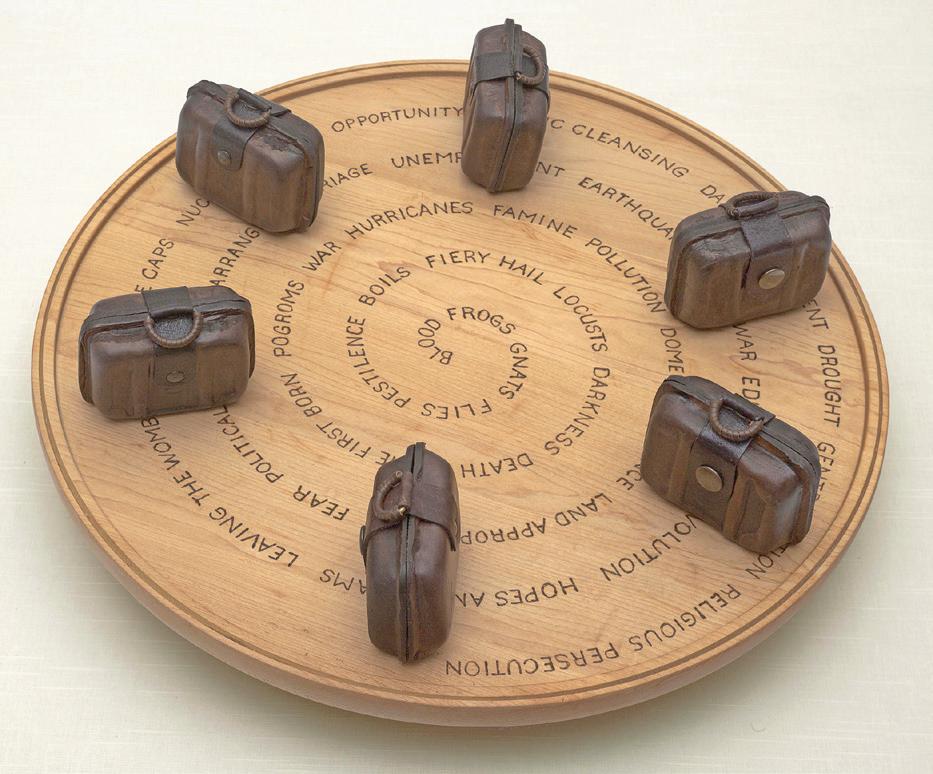
It is important that we see our diverse Jewish identities represented in institutions of culture. With its central location in the downtown arts district, the CJM has done that beautifully. Among the exhibits that left a mark on me was the community call for photos to be included in “Being Jewish: A Bay Area Portrait.” This collage of Jewish life, exhibited from the museum’s opening in 2008 through 2011, was a momentous welcome for the local community.
Over the years, I have debuted new Jewish artworks created for CJM exhibitions and participated in almost all of the museum’s invitationals. Thanks to the Dorothy Saxe Invitational, I now have brought into existence a personal
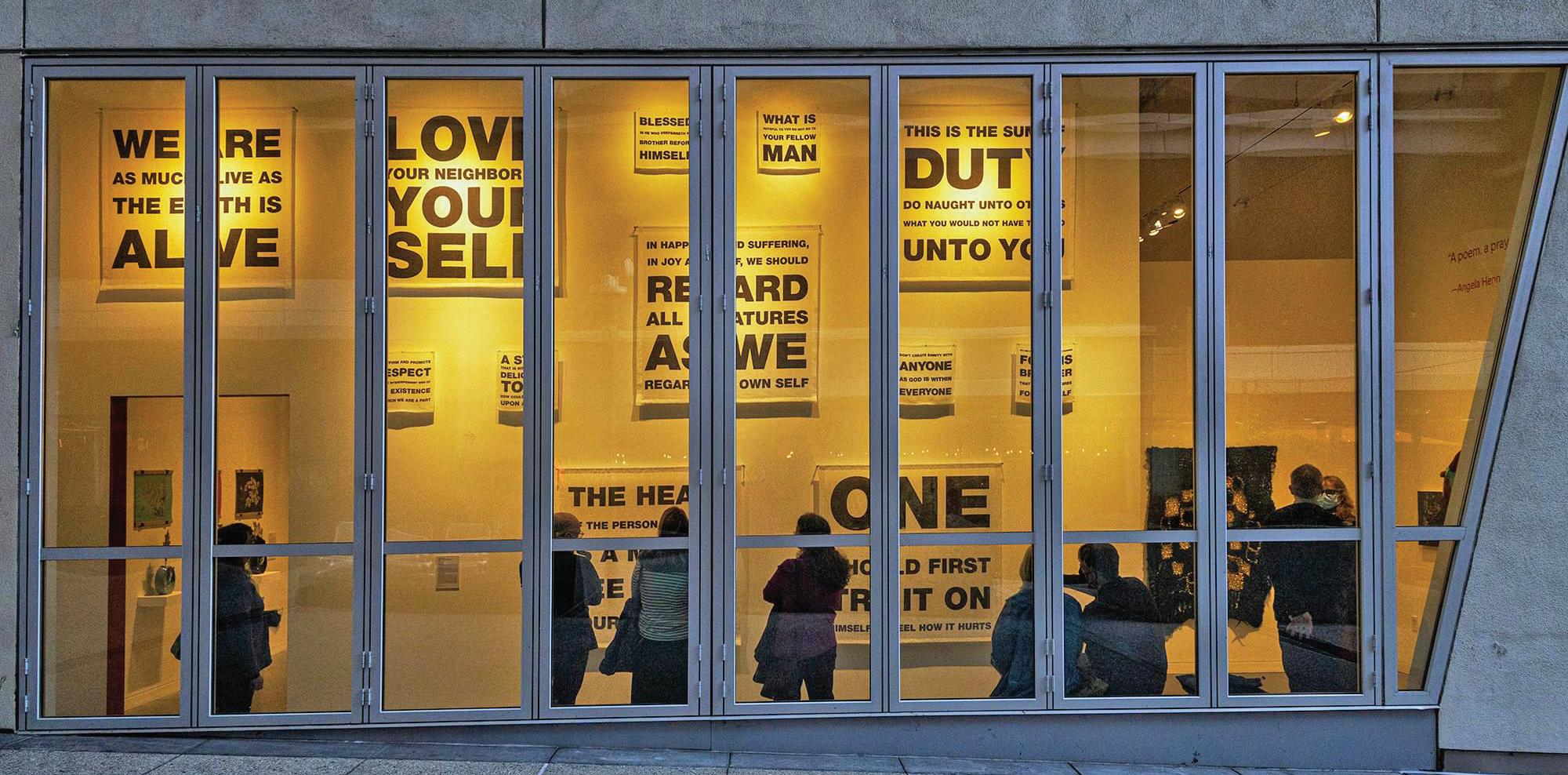
collection of contemporary feminist Jewish ritual objects that I likely would not have created otherwise. The invitational is also a fundraiser, so I have appreciated the opportunity to sell my work and to receive a percentage of the sales. The CJM treats artists fairly and honorably.
The CJM has invited many non-Jewish artists to engage with Jewish ideas, as it did for the 2021 Dorothy Saxe Invitational, whose theme was “Tikkun: For the Cosmos, the Community, and Ourselves.” For that diverse, yearlong exhibition, I showed my “Universal Golden Rule Project” in the large museum windows on the Yerba Buena Lane side of the building and hosted conversations about attempting to live by the Golden Rule.
The CJM also has exhibited many internationally esteemed artists who happen to be Jewish but don’t have overt Jewish content in their art. We have been treated to the works of such notable culture makers as Leonard Cohen, Judy Chicago, Amy Winehouse, Allen Ginsberg and Sophie Calle. In addition, exhibits by prominent non-Jewish artists, like Andy Warhol’s prints of Jewish luminaries and Kehinde Wiley’s portraits of Israeli men, showed us how the world sees us. Exhibits of Jewish artists and thinkers, including “Chagall and the Artists of the Russian Jewish Theater,” Arthur Szyk and “The Art of the Haggadah,” Charlotte Solomon’s “Life? or Theatre?” and Gertrude Stein’s collection of artifacts and art, have provided historical perspective. And we marveled at illustrations while laughing along with Maurice Sendak, Maira Kalman and Roz Chast.
Another CJM priority has been reaching out to the wider community with diverse shows, lectures, concerts and films. At this critical moment in time, with rising antisemitism caused in large part by ignorance about what it means to be Jewish, a cultural institution like the CJM is a place to welcome people so they can connect, share stories, learn and hopefully understand the diversity of American Jews.
As a 21st-century Jewish artist, I value the fact that the CJM is a living museum, without a focus on a permanent collection, creating opportunities for exhibitions and cultural programming that not only respond to current realities but set a path forward.
Author Toni Morrison issued a call to action that feels
fitting right now: “This is precisely the time when artists go to work. There is no time for despair, no place for self-pity, no need for silence, no room for fear. We speak, we write, we do language.” We artists will continue to make new Jewish culture, and we will be ready when the CJM reopens. See you again soon. n
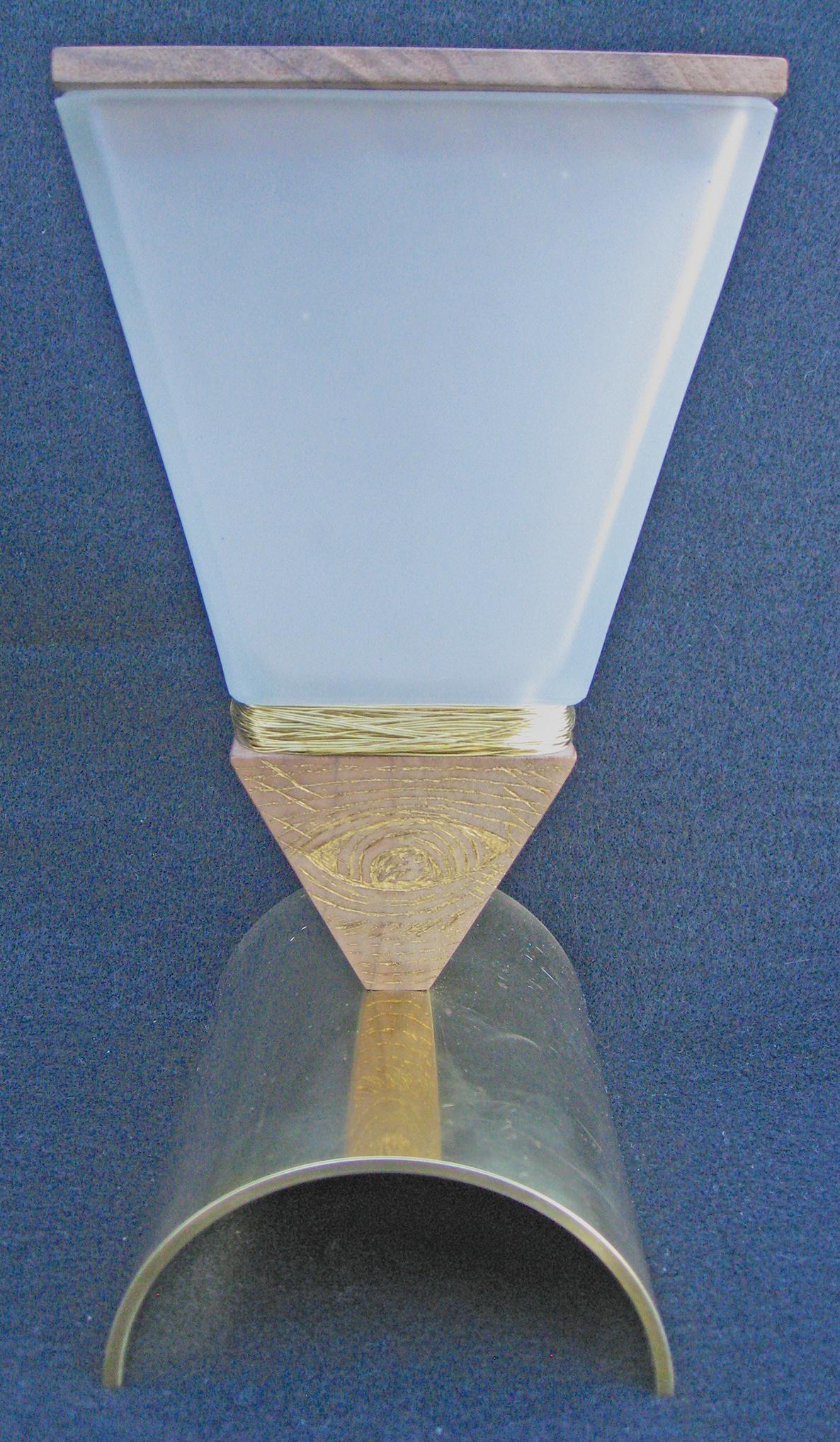
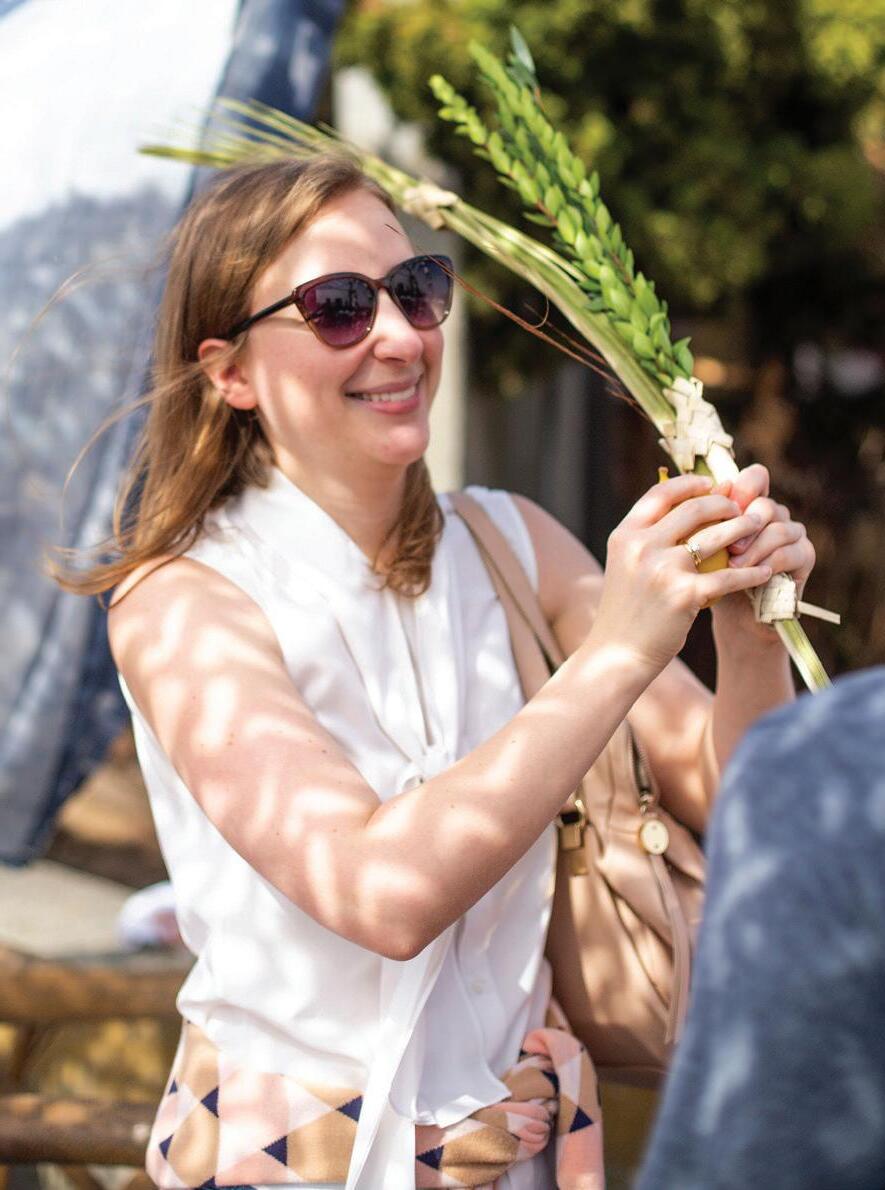
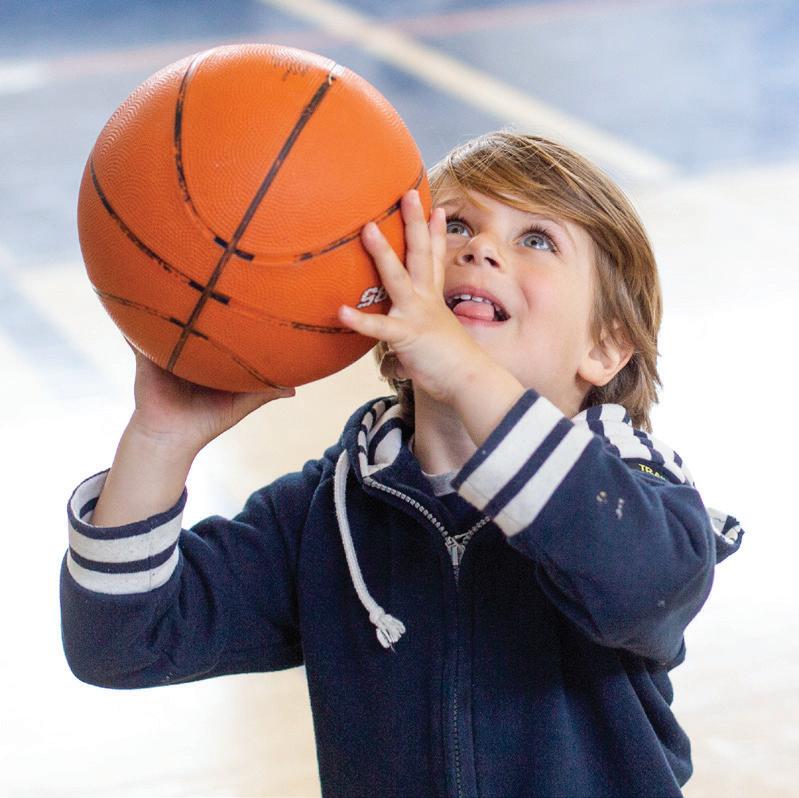
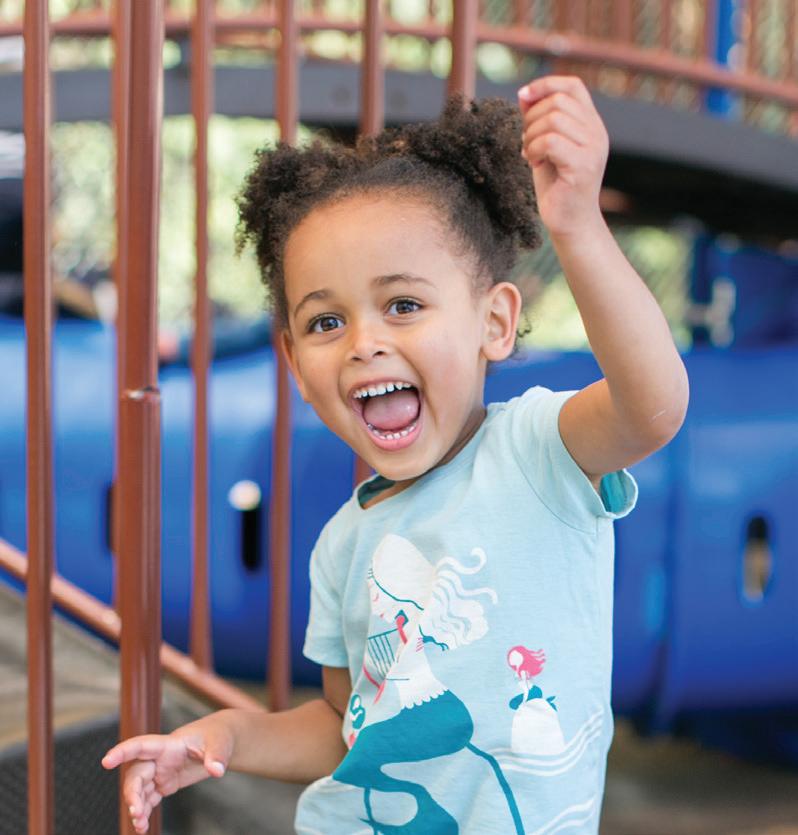
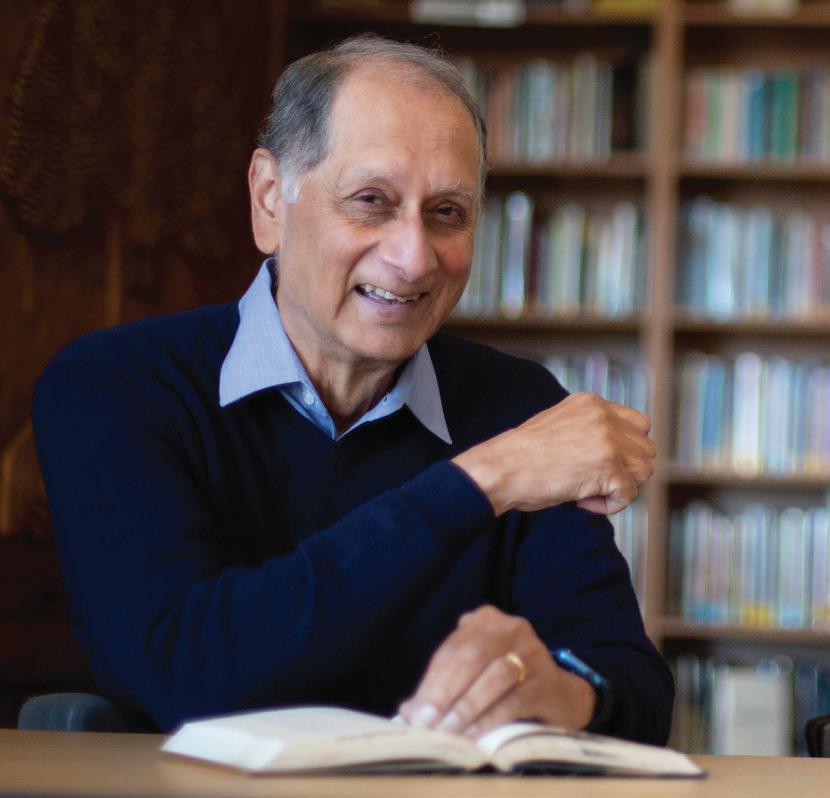
Whether you come for programs or fitness or just for the food (Wise Sons Deli is now open!), the Jewish Community Center of San Francisco feels like home.
What does investing in the JCCSF look like?
A steadfast anchor of Jewish life in San Francisco
Speakers who inspire and delight
Top-notch educators
A hub for communal collaboration
Inspiring families with Jewish traditions
In this complex moment across the Jewish world, our work keeps growing and evolving. Your support is At the Heart of It All.
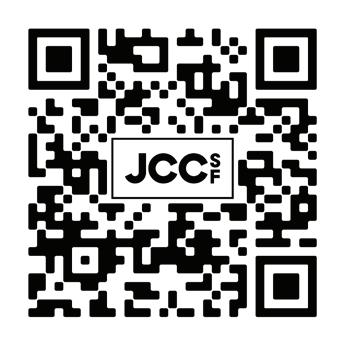
NIVA ASHKENAZI | J. STAFF
Two years ago, Alma Ben-Levi and her family moved from Israel to Sunnyvale. As a new sophomore at Homestead High School, she wanted to find a welcoming community.
When a friend invited her to a Jewish Student Union meeting at her Cupertino school, the now 17-year-old senior knew she had found what she was looking for. Soon a er joining the club’s weekly lunchtime meetings, she made new friends and was invited to Shabbat dinners.
“I love it,” Ben-Levi said. “It just keeps me going every day.”
e Jewish Student Union at Homestead High isn’t an anomaly. It is part of a national network of more than 320 JSUs throughout North America. Club meetings and activities focus on having fun, connecting with peers, celebrating holidays, exploring culture and building identity and pride.
To advance the cause, some 40 people gathered on Dec. 8 at the Piedmont home of Eileen Ruby to raise money for JSU Global Campus, an online platform designed to reach more teens interested in starting JSUs at their schools. e guest speaker was East Bay native Tessa Veksler, a recent college graduate and prominent Jewish voice on social media who started a JSU in 2019 at Northgate High School in Walnut Creek. e event sought to raise $150,000.
“ ere’s a lot of identity forming that happens in the teen years, which is why teen programs are important,” said Ruby, board chair of the S.F.-based Jewish Community Federation and Endowment Fund. She is a major supporter of Jewish
teen programming, as she was with her late husband, Robert.
“It is about building identity in a Jewish context,” Ruby added. “If you get Jewish teens together… give them opportunities to have leadership development, run programs, be with their cohort, that’s a stronger indicator that they will want to … lead Jewish lives.”
e first JSU clubs launched in Los Angeles in 2002. NCSY, the Jewish youth group founded by the Orthodox Union, oversees JSU, which emphasizes inclusion and “actively welcomes and accepts Jewish teens of all backgrounds and a liations,” according to its website.
Rabbi Akiva Naiman, NCSY director of development, said that JSU is one of NCSY’s most robust programs, even more so since the Oct. 7, 2023, Hamas a ack and the spike in antisemitism, which has particularly impacted Jewish youth.
In the past year, Naiman said, NCSY received 267 requests from students who wanted to start a JSU at their school, including seven at Bay Area schools. ere are currently active JSUs at 25 schools across the region.
Each JSU is teen-led, though NCSY tries to send a sta er to club meetings to o er resources and support. But if requests to start new clubs continue to grow, NCSY may not have enough personnel to reach every school. at gives the online platform even more value.
“We are a relationship-centric organization,” Naiman said. “With [Global Campus], we’ve been able to expand way further
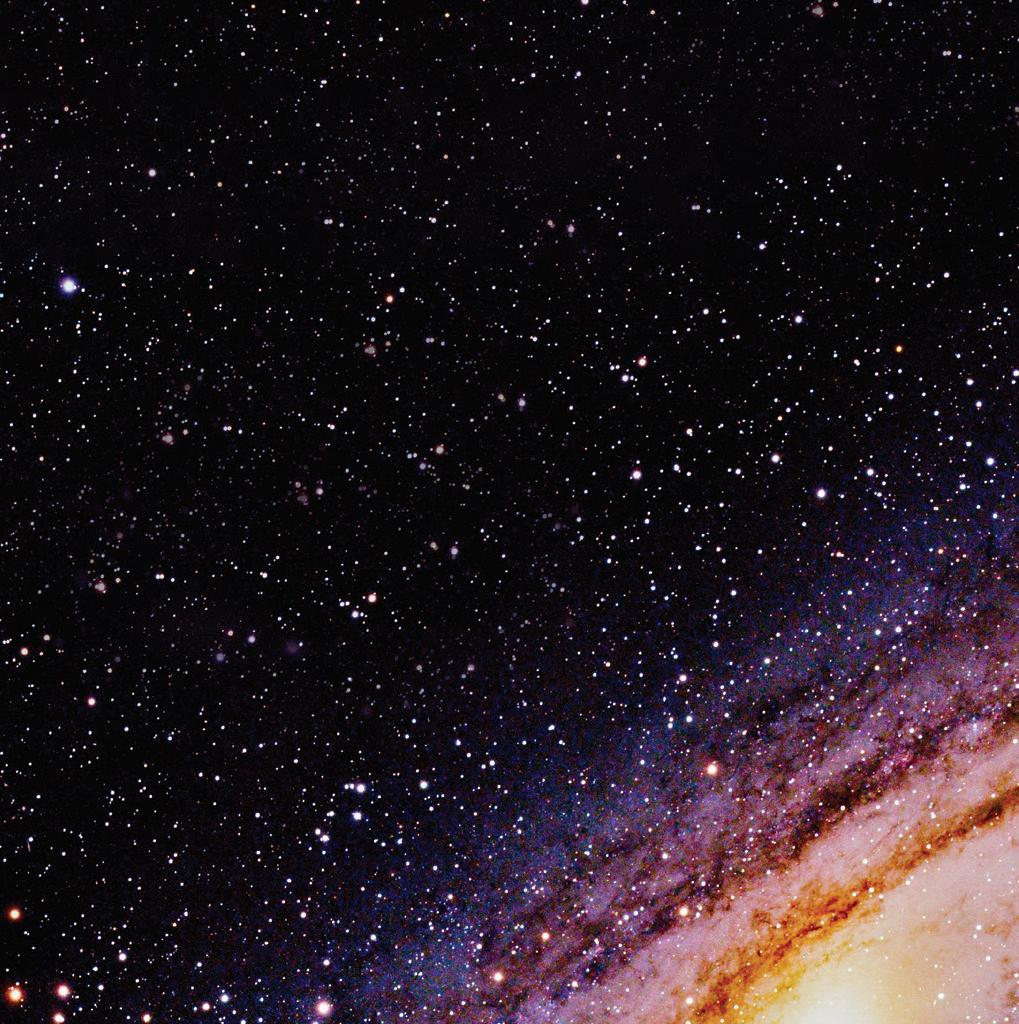
Secure
your
future
and
help scientists save and improve lives around the world.



but not lose the relationship piece.”
Naiman said JSU has been developing the Global Campus tool for a few years. e platform is live but still in its early stages. Once fully developed, Naiman said, it will give teens resources to start clubs, connect with other teens and sta , learn to develop programming and take leadership courses.
A er a year participating in JSU, Ben-Levi joined the regional board and hopes to become president of her club.
“I can say for sure that being a part of the JSU club or going to these meetings really helps me out,” she said. “It helps me figure out who I am.” ■
Every day, scientists at the Weizmann Institute in Israel pursue breakthroughs in cancer research, brain and neural science, technology, education, medicine, environmental sustainability, and other areas critical to the future of humanity.
A Charitable Gift Annuity is an opportunity to partner with our scientists while securing your financial future. You receive payments for life, significant tax benefits, and a legacy of funding scientific research that could change the world.
* Illustration only. Seek your own legal and tax advice to determine the consequences of your gift. NY rates may differ.
Those 70½ and older may make a one-time tax-free gift from their IRAs of up to $53,000 (up to $105,000 for a couple).
To start experiencing these rewards, call 212.895.7941 or email legacy@acwis.org.
Example: Give $25,000 at age 80 and get $2,025/year (8.1%) for the rest of your life.
Don’t miss out on these high rates!
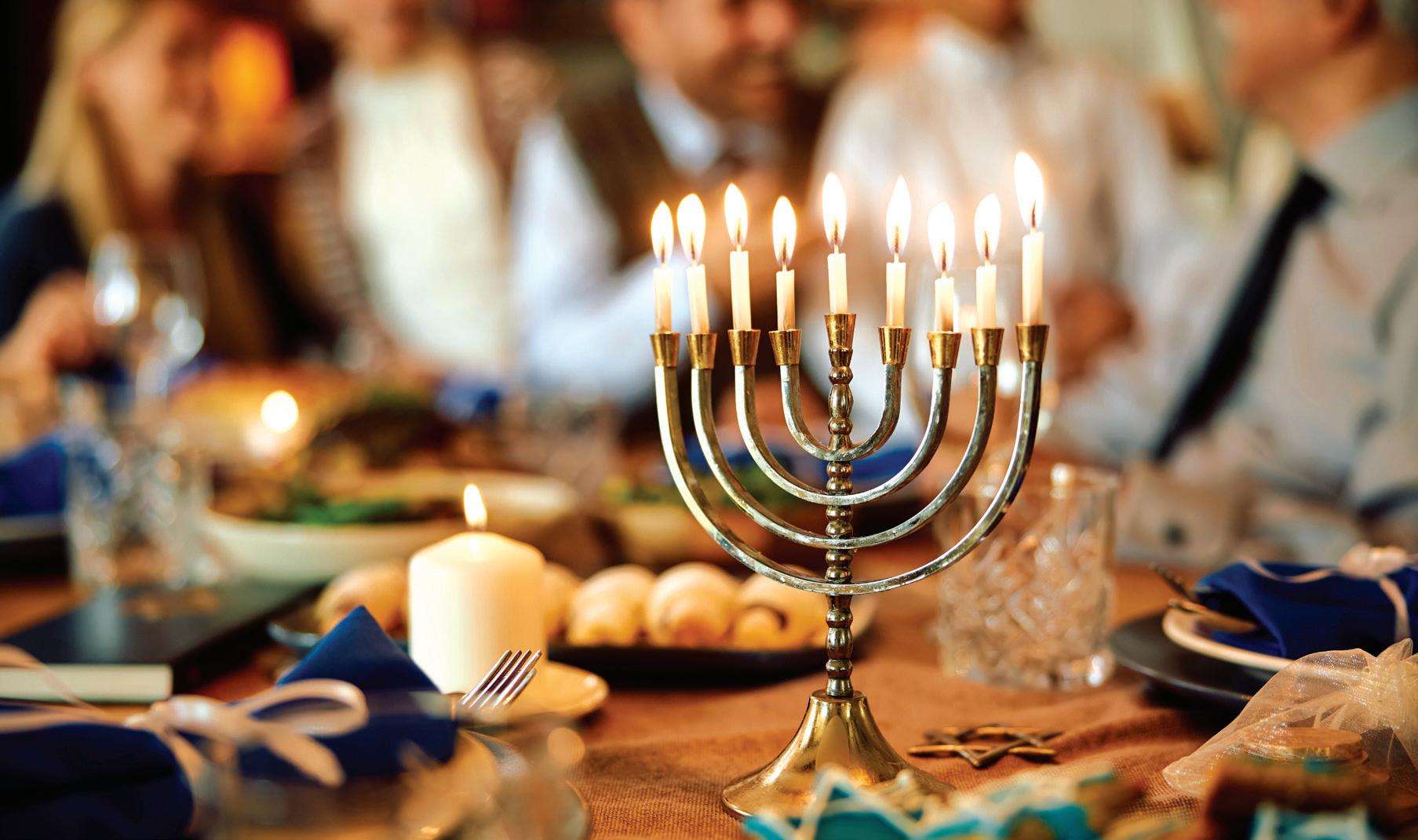
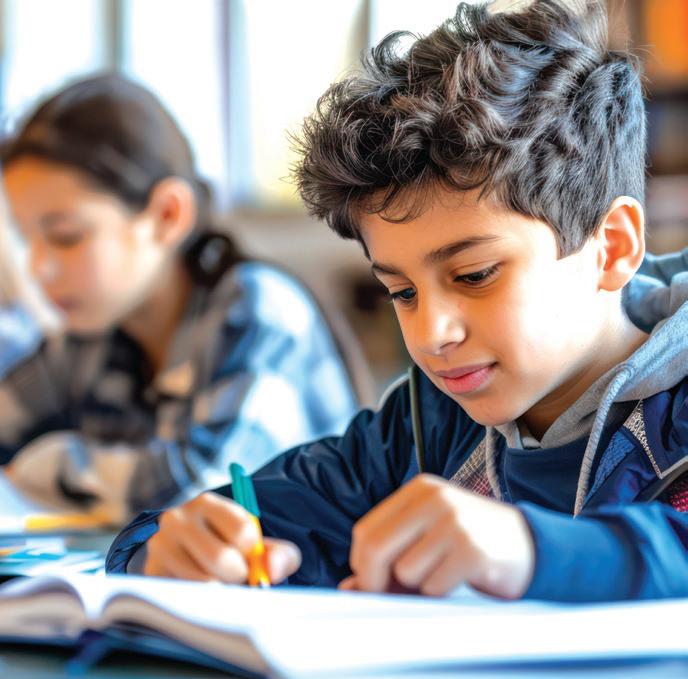
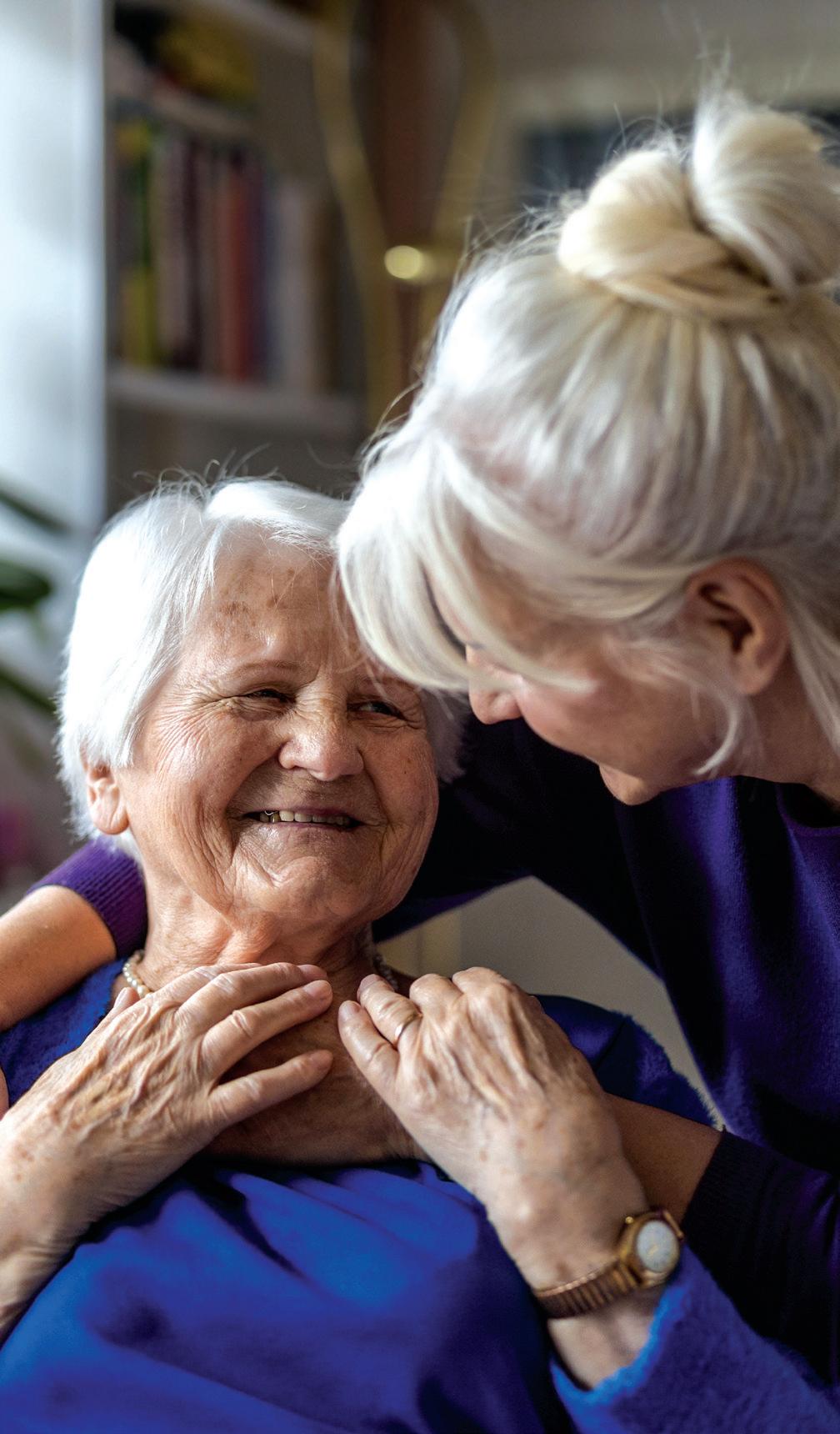
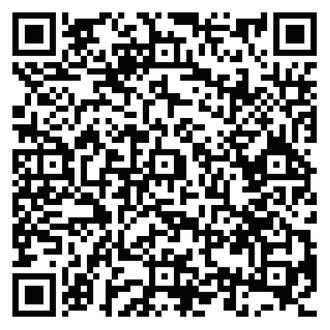
ANDREW SILVERSTEIN | THE FORWARD
Growing up outside of Cleveland, 71-year-old Mark Steinbock, a retired lawyer and accountant, knew little about his father’s family. “My entire life, I had been told that he had no living relatives,” Steinbock told me.
Steinbock’s father, Mendel, was born in Demblin, Poland, in 1918 and survived the Holocaust. From a displaced persons camp in Germany after the war, he searched for his eight brothers and sisters through the Red Cross, and decades later looked again for any relative through the U.S. Holocaust Memorial Museum when it opened in the 1990s.
After Mendel died in 2016, Mark grew more curious about his roots. “There was going to come a day when one or more of my grandchildren would come to me and say, ‘Tell me a little bit about our family,’ and the fact of the matter is, I knew next to nothing.”
Then in winter 2022, Mark’s son shared with him a Facebook post about the DNA Reunion Project, a pilot program through the Center for Jewish History that supplied Holocaust survivors and their children with
free DNA kits. The project, co-founded by the center and genealogists Jennifer Mendelsohn and Adina Newman, aimed to find lost branches of Jewish family trees and uncover ancestral stories buried in the Holocaust.
The initiative recently relaunched as an independent organization called the Holocaust Reunion Project. With child survivors reaching old age, they’re in a race against time.
As is the case with most people, Mark’s DNA test results produced a long list of potential second and third cousins around the globe. Seemingly, these individuals with whom he shared less than 2% DNA didn’t bring him any closer to learning about his grandparents, aunts, uncles and cousins who were victims of Nazism.
But then, he said, “Jennifer and Adina did their thing.”
The two specialize in taking the galaxy of data points of distant relatives and finding constellations of relatives. They painstakingly recreate genealogical trees and piece

together narratives.
“They helped me immensely open up a chapter of my life that for 70 years I didn’t think existed,” said Steinbock.
Mendelsohn got her start after casually poking around on Ancestry.com in 2013.
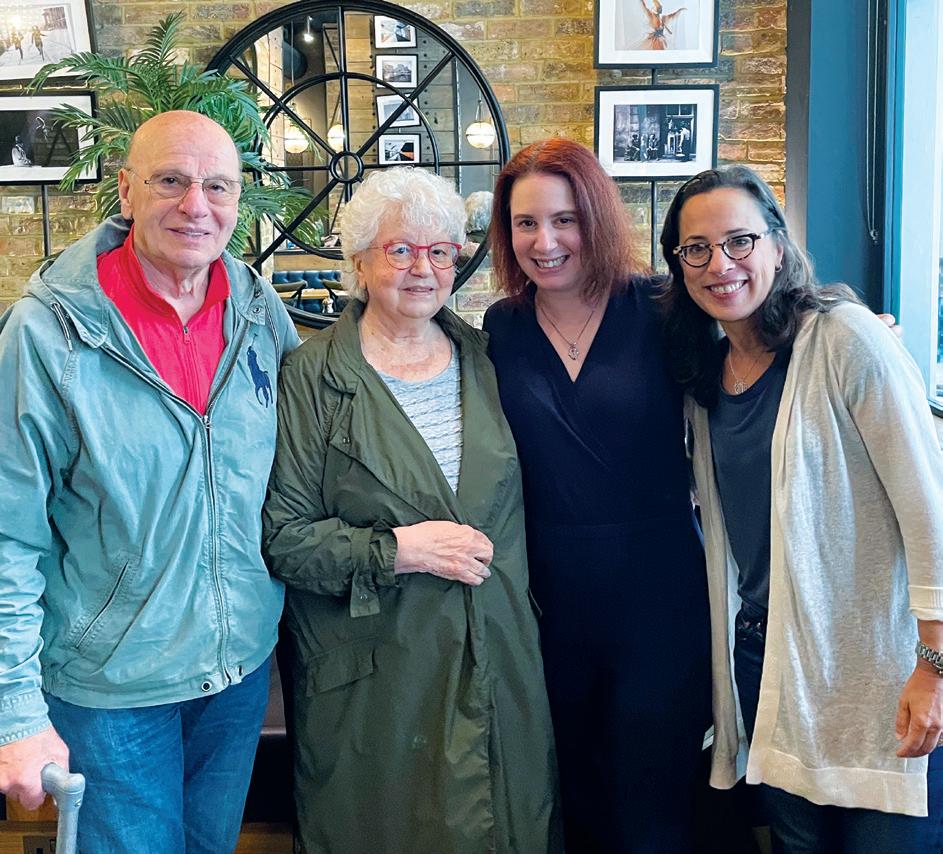
“I happened to be in the car with my husband’s 95-year-old survivor grandmother,” she told me during a Zoom call from her home in Baltimore. Her husband’s grandmother Frieda told her she had two aunts who immigrated to Chicago before World War I, then lost touch with family in Poland.
Mendelsohn discovered she had a knack for research and tracked down Frieda’s American relatives on the genealogy website. “I introduced her to three first cousins. And it just was an incredibly powerful experience for everybody,” she said.
“They had family photographs, because their mothers emigrated long before the Holocaust, and they had family mementos,” Mendelsohn said. “Those things for survivors can be so, so precious.”
Both Newman and Mendelsohn employ DNA genealogical techniques that adoptees and others use to solve unknown parentage cases, but what sets them apart is they are experts on Eastern European and Central European Jewish genealogy.
“Jews share much more DNA with each other than average, which grossly inflates our relationship predictions,” said Mendelsohn — and this makes untangling Jewish DNA results that much harder.
The other challenge is tracing lineage back to prewar Europe.
“There’s this very self-defeating attitude with Jewish genealogy,” said Mendelsohn, “and particularly with people affected by the Holocaust: ‘There’s nothing left to find.’”
The pair of researchers can often pinpoint the Russian empire shtetl where a family originated. And despite myths that all records were destroyed by the Nazis, the pair can even dig up Old World family documents.
In 2021, Mendelsohn wrote in the Washington Post about being approached by the family of a child survivor found in a postwar Polish orphanage. She discovered the woman, Sarit, was not an orphan but was separated from her parents in the chaos of war. Almost 80 years later, Mendelsohn helped orchestrate a family reunion in Israel between Sarit’s daughter and her elderly aunts.
The following year, Mendelsohn and Newman researched the ancestry of Jackie Young, an 80-year-old retired London cab driver. Young knew he was born to a Viennese Jewish woman deported in 1942, but not who his father was.
Having survived as an orphaned infant in the Theresienstadt ghetto, Young long assumed his father must have been a Nazi who protected him. Newman and Mendelsohn, however, discovered the identity of his father, a Jew, and connected him with relatives.
“We specialize in those cases of hidden children and babies smuggled out of ghettos,” Newman told me.
Now almost 80 years after the war’s end, the two do outreach to synagogues and senior centers where they try to dispel myths about privacy issues related to DNA testing. Their goal is to reach survivors before it’s too late.
Through the Holocaust Reunion Project, Steinbock filled in his father’s genealogical tree with hundreds of relatives, learning the names of the family members who died in the Holocaust. He also discovered that his father’s uncle, aunt and cousins survived.
A second cousin in France confirmed that the family who left Poland in the 1930s made it through the war relatively unscathed in the South of France.
“My father would have been delighted at the prospect that he was wrong, that certain of his relatives actually did survive,” Steinbock said, “but the war ended in 1945 and it wasn’t until over 75 years later that these discoveries were made.”
He added: “It’s bittersweet. I wish I had known about these people when I was growing up.” n
This story originally appeared in the Forward (forward.com). To get the Forward’s free email newsletters, go to forward.com/newslettersignup.
Eileen and Ralph Battat*
Valli Benesch and Bob Tandler*
Marsha Lee Berkman and Norman Berkman
Bernstein/Daccarett Family
Madeline Chaleff and David Arfin*
Diana Cohen and William Falik
Louise and Jacob Epstein
Liki and Joe Abrams
Allen Ackerman
Terry Pink Alexander
Marjorie Alpert and Jeffrey Warwick
Leonard Anspach
Molly Antopol and Chanan Tigay
JoAnne Auerbach
Marty Aufhauser
Sue and Ronald Bachman*
Gary Bachrach
Elliot Beckelman
Beverly Jean Becker
Ari Beliak
Mira and Zeev Ben-Oni
Cheryl and Randall Berger
Marilyn and Allan Bernstein
Rachel Biale and David Biale z”l
Nina Block
Judith Bloomberg and Michael Barnett
Mollie Breger
Karen and Ted Bresler
Paula Brinkley
Ellen and Herb Brosbe*
William Brostoff
Don Buckter
Mylene Caplan
Wendy and Edmund Case
Corey and Rod Cherkas
Judy and Mark Cohen
Robbie Cohn
Hali Croner and Eugene Palmer
Elayne R and Philip S Dauber
Margit David
Martin Diamond
Sue Diamond and Marty Schenker*
Susan and Bill Epstein
Karen Galatz and Jon Wellinghoff
Sarah and Jordan Hymowitz
Kendra and Thomas Kasten
Patty and Mike Krigel
Sara Gaviser Leslie and Josh Leslie
Susan Moldaw and Bob Stallings*
Jay Dicker
Janet and Steve Dombro
Gail and Sheldon Dorph
Boris Drakhlis
Julia Dvorin
Jon Eager*
Robert Allan Edelman
Beth and Norman Edelstein
Steve Elster
David Epstein
Carol and Kenneth Epstein
Alice Erber
Lori Feldman and Gary Caine
Bluma and Ed Felix
Janice Fingerut
Fred Finkelstein
David Freeman
Judy and Michael Garb
Brenda Gates-Monasch
Corinne Jaffe-Gellman and Steven Gellman
Elaine Gerstler and Booker Holton
Marci Gerston
Marion Gillen and Linda Edelstein
Daphne Goldberg
Randi and Todd Goldman
Randy and Jeffrey Goldstein
Marjorie and Stuart Goldware
Alan J. Gould
Anya and Preston Grant
Renee and Mark Greenstein
Bryan Grunwald
Andrea Hasegawa
Dorit Hertz and Teven Laxer
Elizabeth M. Hertz
Jan K. Herzog
Leslie Hilford
Judy and Bob Huret
Sonya and Stephen Hurst*
Sandi Hyman
Johanna and Jeffrey Ilfeld
Barbara and Dan Illowsky
Flaurie S. Imberman
Rabbi Debbie Israel and Jerry Dubin
Helen Jaffe and Don Jaffe z”l*
Jane Jordan
Susie Julius
Vicki and Scott Kahn
Barry Kamil
Sydney Kapchan
Terry Karl
Mikhail Karton
Julie Kaufman
Robin Keller and Mark Geliebter
Mona and Stephen Klaber
Vicki Klapper
Wendy and Howard Kleckner
Anita and Mike Korenstein
Ruth Landy
Randy and Rich Lavinghouse
Sheila and George Lederer
Naomi and Rob Leonard
Deborah and Gerald Levine
Sue and Marv Levinson
Nancy and Stephen Levinson
Cynthia Levy
Daniel Liberthson
Andrea Lichter
Susan Light
Janna Lipman Weiss
Lina Liu and Gerald Loorya
Susan Lyon and Howard Freedman*
Adrienne Mannis
Dawn and Sandy Margolin
Rob and Eileen Ruby Philanthropic Fund*
Vera Stein*
Laszlo N. Tauber Family Foundation/ Ingrid D. Tauber
Gertrude Waldmann
Yerba Buena Fund
Shari Marks
Fae Klonoff Melmon
Sonia Melnikova-Raich
Nicole Menache
Deanne Meyer
Lindsay and Michael Meyer
Selma S. Meyerowitz
Bryna and Robert Miller
Marla Miller and David Kremer
Cindy and Craig Morris
Marvin Moskowitz
Nancy Nagel and Victor Mitnick
Anne and Ed Oklan
Irene Okupnik
Susan and Mark Oscherwitz
Robert Pavel
Tsipora Peskin
Rhonda Press and Lawrence Ragent
Hope S. Rabinovitz
Kathy and Gary Reback
Barbara Regello
Norman Reid
Sandra and Chris Rich
Toby Risman
Ashley and Richard Rochman
Laura Rooklin
Robin Rose
Mindy and Philip Rosenberg
Bernard Ross
Christine Mariscal Salomon
Leslie Scheinfeld
Stephen Schneider
Seiler Family Fund*
Yolanda Selwitz
Jerald Shapiro
Lee Shulman
Mady Shumofsky
Jules Sigler
Ellen Maremont Silver
Judith Simon
Nat Simons
Frieda Sion
Iris Greenberg-Smith and Jeremy Smith
Sandy Faith Smith
Diane and Jerry Spagnoli
Mary and Mark Steiner
Robyn and Eric Stone
Cindy and Phil Strause
Suzanne Stutman and Jonathan Wilkenfeld
Amy Sudolsky
Donnie Sullivan
Heidi Thompson
Ellen Turbow
Orit Vogel
Michele Waisblatt
Susan Weiner
Dan Weisberg
Elissa Weizman
The Wiesler Family
Mary Anne and Hugh Winig
Leslie Wolf
Ann and Neil Wolff
Paul Yamshon
Emerald Yeh and Ron Blatman
Linda and Marc Yelnick
Dianna and Chaplain Joel Youngheim
Judy and Mark Yudof
Fima Zaltsman
Al Zemsky
Arta Zygielbaum
Anonymous *A Donor-Advised Fund of the Jewish Community Federation and Endowment Fund
As 2024 draws to a close, we need your help to meet our year-end goals. Demonstrate what vibrant, local Jewish journalism means to you with a donation today.
• Take pride in Jewish culture
• Track antisemitism in local schools
• Stay up to date on people and events
• plus much more
Donate to J. to support our year-end 2024 fundraising campaign. Together, we can ensure that J. continues its essential role as both the chronicle and conscience of the Bay Area Jewish community.
If you have already supported us this year, thank you! Will you consider an additional gift?
On behalf of J’.s board and sta , thank you and wishing you a peaceful and happy Hanukkah.
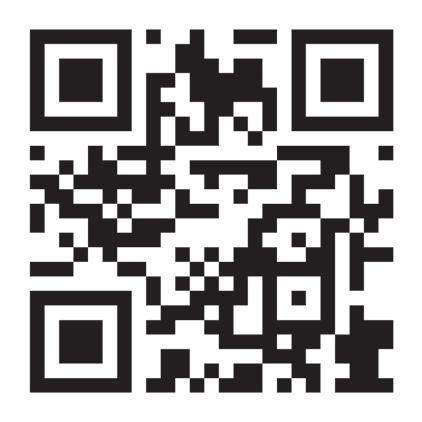
How to give to J. The Jewish News of Northern California:
• Use the QR code below
• Donate securely online at jweekly.com/givetoday
• Call Allison, J. development director, at (415) 796-0227
• Use the enclosed envelope in this issue
of including J. in your will? Let’s talk Legacy Giving.
Hadassah has opened the first three floors of the Gandel Rehabilitation Center on Mount Scopus in Jerusalem to address the dramatic increase in demand to heal the wounded physically and emotionally. At times like this, your gifts are so needed and appreciated. HELP ISRAEL HEAL!
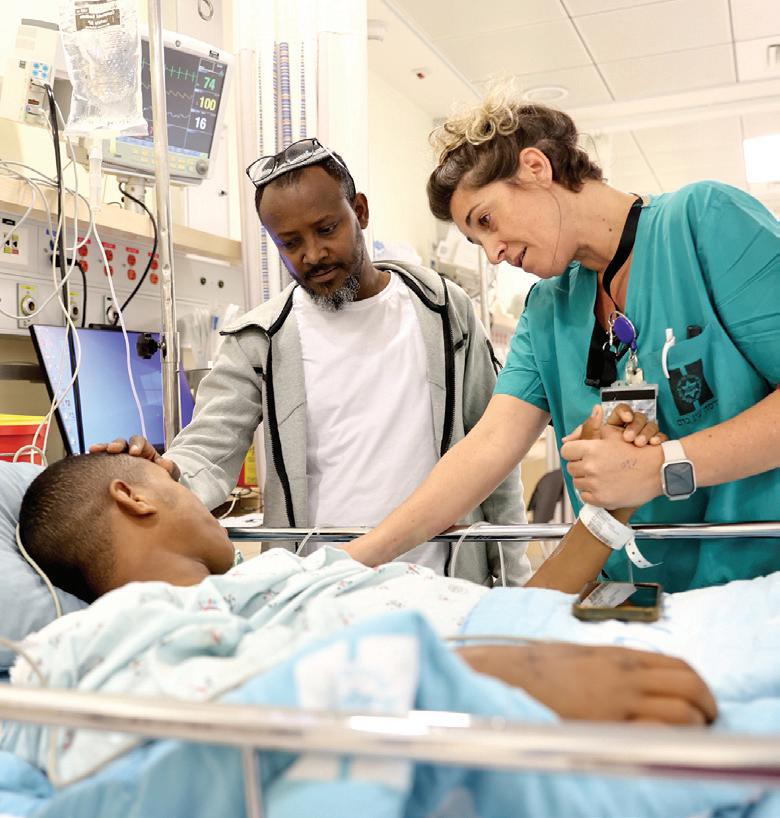
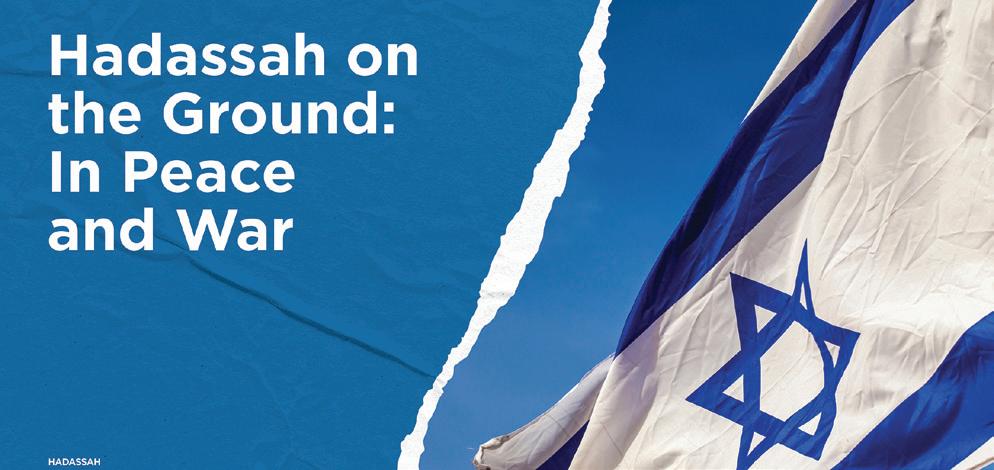
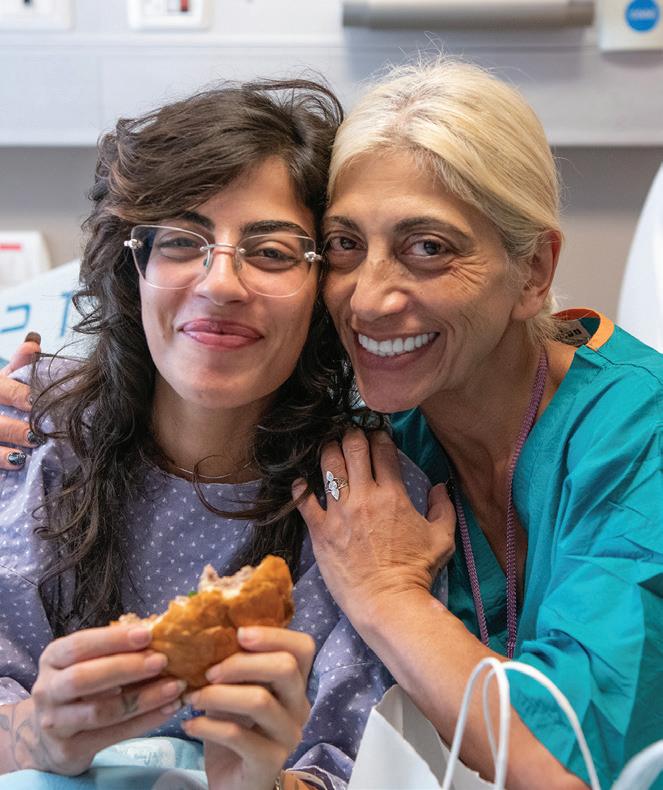

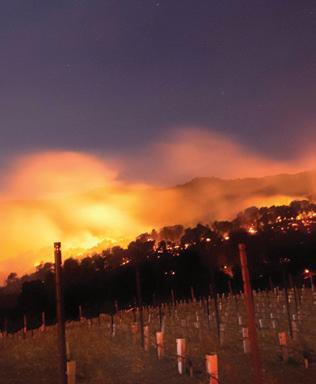
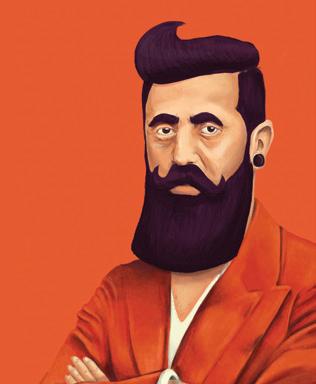
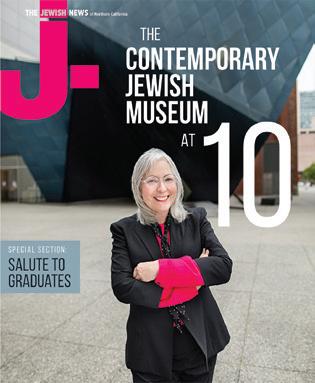
BARI GOLDOJARB | GUEST CONTRIBUTOR
As someone who has dedicated her career to helping others, I thought I was doing good work with like-minded people who wanted to leverage their expertise to create a more inclusive, equitable and positive community.
In fact, my previous professional role — working as a mental health clinician at a Silicon Valley chapter of a national nonprofit dedicated to eliminating racism and empowering women — was supposed to accomplish just that.
Then Hamas attacked Israel on Oct. 7, 2023, and I realized that Jews were excluded from my nonprofit’s mission. For a few days, my chapter said nothing about the attack, where women were raped, brutalized, murdered and maimed because they were Jewish. I was told that only the larger organization could speak on global issues. I was devastated and infuriated to discover that the global statement didn’t mention the Oct. 7 attack or the hostages. Instead, it called on the international community to condemn the Israeli occupation.
And so, on Oct. 12, I quit my job in a very public way, feeling like I needed to make clear the reason for my departure and the impact of the organization’s action (or inaction) on one of its employees. I feared for my future job prospects — worried I’d just blown up years of building a professional network.
I spent the next few months meeting with people in the Jewish philanthropic and social impact arena. I ultimately landed at a private family foundation that supports the Jewish community in the U.S., Israel and beyond.
I also found emotional support among fellow Jews as I sought to rebuild a sense of community. I got more involved with the community at the Peninsula JCC in Foster City, which eventually introduced me to Momentum.
This organization, which helps Jews connect to their community through their values, religion and heritage, has encouraged me to speak up against antisemitism and advocate for Israel. Some of its initiatives include professional development seminars, networking events and trips to Israel.
Recently, I participated in one of its fellowships, where I met with dozens of other like-minded professional women who are also dismayed by the anti-Jewish and anti-Israel rhetoric we’ve seen online and in person.
Our group discussed ways we can combat antisemitism. One solution was to recognize existing assets within our community; many non-Jews visit or belong to our JCC and can be tapped as allies to fight antisemitism.
In our last group session, the Momentum facilitator shared the story of Talmudic sage Hillel’s approach of active listening and curiosity, which ultimately helped him become an iconic Jewish leader. Using this approach in professional and personal conflict can often yield more effective outcomes.
The JCC is a diverse community, beyond its Jewish membership. We have the opportunity to engage these community members as allies in our cause. Momentum has shown me how I can reach out and ask for their allyship. Like other minorities fighting against hatred, we know that every voice counts.
We plan on reaching out through one-on-one conversations with non-Jewish members of PJCC. We want to find out what would motivate them to become more vocal advocates or allies in combating antisemitism. I imagine that some of my fellow PJCC preschool parents may also be motivated to speak up as a way to protect and support their children’s Jewish friends. Looking back, I sometimes reflect on why I believe my former employer was devoid of empathy. The only conclusion I can come to is the one that worries me the most: antisemitism. Today, it is becoming increasingly easy to hate Jews. Striving for an anti-racist society is valid. Let’s make sure Jews are included in that quest.
Bari Goldojarb, MSW, lives in the Bay Area and is a programs and operations associate at a private family foundation supporting the Jewish community.
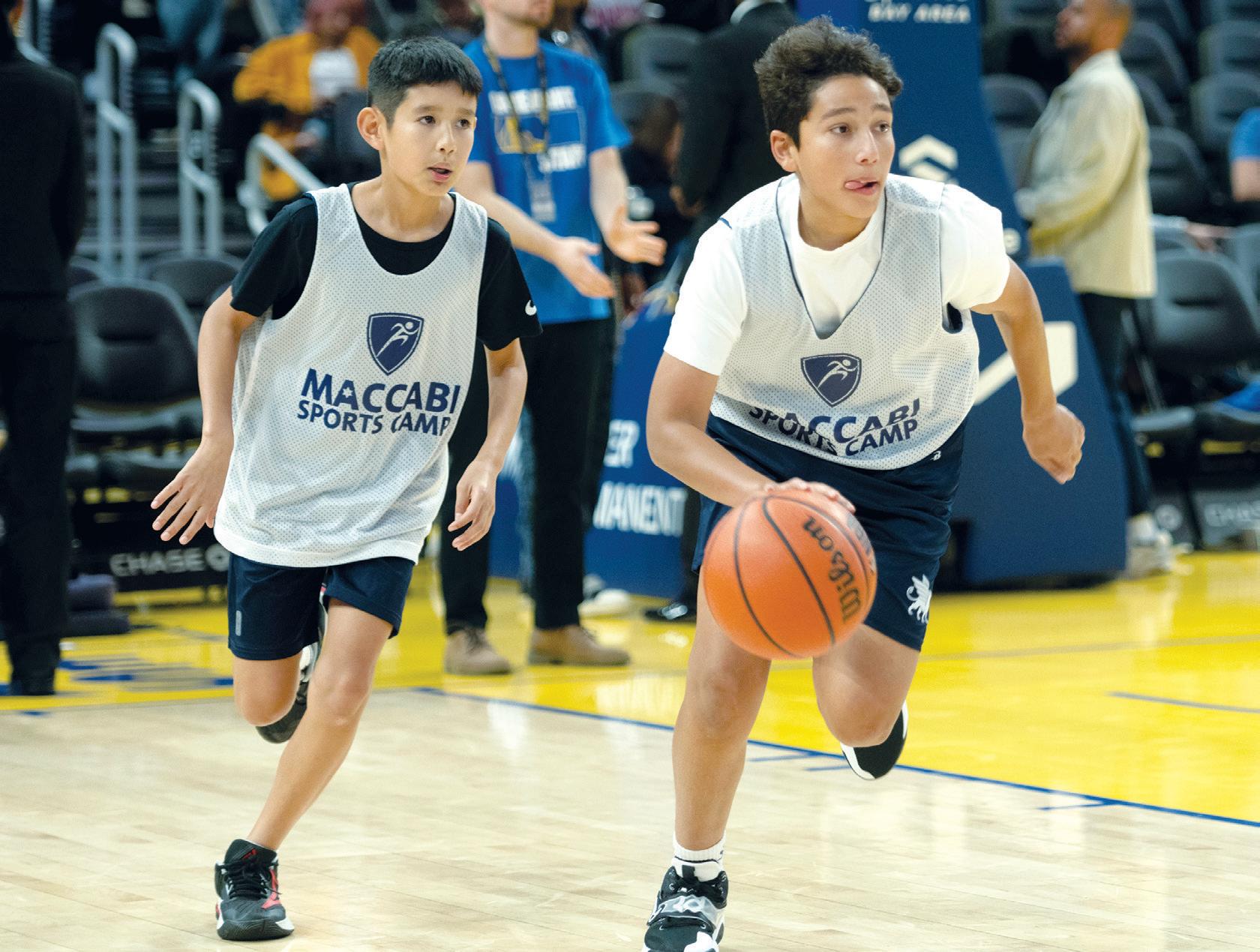
Family JCC Maccabi Sports Camp faced off at halftime during the Golden State Warriors’ annual Jewish Heritage Night on Dec. 5. The Warriors defeated the Houston Rockets in a 99-93 nail-biter. (AARON LEVY-WOLINS/J. STAFF)
No room for two Jewish museums
It is difficult to have rachmones (compassion) for the Contemporary Jewish Museum. Its predecessor, a small exhibition space in the basement of the Federation building on Steuart Street in San Francisco, also owned no art.
In an act of hubris, Bay Area Jewish philanthropists raised $47.5 million to hire a world-renowned architect to design and build them an edifice. They did this even though the Judah L. Magnes Museum had over 30 years of collecting, owning and exhibiting Jewish art.
Did the Bay Area need two Jewish museums? It seems clear that the philanthropists knew they were in trouble from the start. They merged with the Magnes, but the partnership ended in less than two years. The only conclusion one can draw from this origin story is that the CJM was an exercise in ego.
Yes, Jewish institutions are at risk. How could they not be when philanthropists spend $47.5 million to erect an edifice to their egos? Jewish institutions are at risk because Jewish philanthropists refuse to believe decades of study findings. Among the top predictors of Jewish continuity are synagogue membership/
attendance, Jewish camp and Jewish religious school — day and synagogue.
Instead of raising $47.5 million for a building or to underwrite what they think is a cutting-edge program, the money should have been spent on subsidizing synagogue membership, camp tuition, school tuition and JCC fees. Are they blind to the finding that emerges in every survey? “It costs too much to be Jewish. I can’t afford it.” Millions were wasted on a building. It would have been better spent on making the foundations of Jewish life more affordable.
LESLIE KANE | SAN FRANCISCO
In a recent article about the closure of the Contemporary Jewish Museum titled “‘A punch in the gut’: Artists and fans worry about the Contemporary Jewish Museum’s future” (Nov. 29), artist Beth Grossman lamented the loss of an institution that, for her, embodied Jewish contemporaneity “not as an old story, not stuck in the Holocaust or in the shtetl or any of those kinds of things,” but as a “culture that’s living and growing and
DANIEL SOKATCH | THE FORWARD
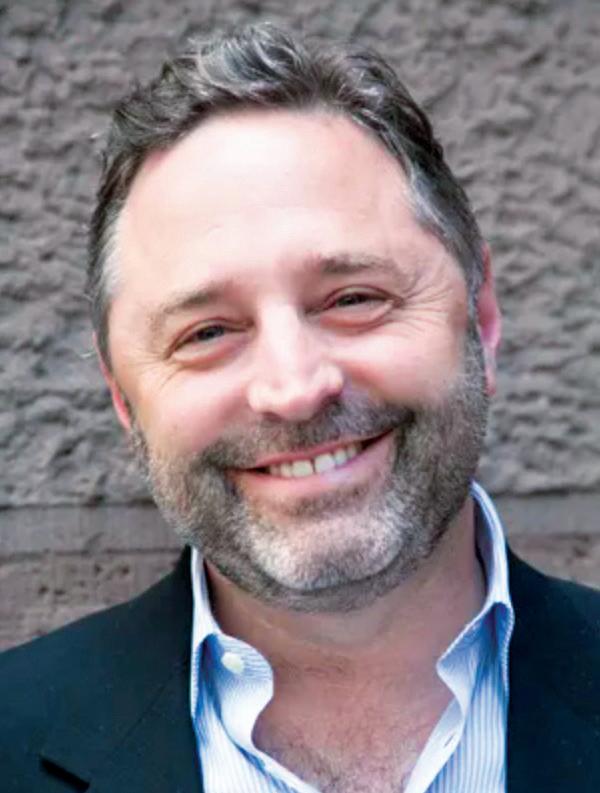
Congress is trying to pass a bill, under the guise of pushing back on terrorism, that would hand President-elect Donald Trump a cudgel with which to attack American civil society organizations.
H.R. 9495 — titled “The Stop Terror-Financing and Tax Penalties on American Hostages Act” — has already passed the House and its fate is now in the hands of the Senate. The bill would hand the secretary of the Treasury the authority to revoke the tax-exempt status of any nonprofit they deem to be a “terrorist supporting organization.” In other words, shut them down.
As the CEO of the New Israel Fund, the premier funder of progressive, pro-human rights and democracy organizations in Israel, I know just how dangerous this measure is. For more than 15 years, progressive Israeli civil society has worked — with the aid of nonprofits like ours — to advance equality, justice and safety for Jews and Palestinians alike, while fending off the kinds of accusations this bill tees up. And after facing endless delegitimization campaigns aimed at painting them as traitorous — not to mention the reams of anti-democratic legislation that Israeli Prime Minister Benjamin Netanyahu and his hardline allies have pushed in an effort to quash their efforts — we know how important it is for Congress to vote down this bill.
Israel’s 2016 “NGO Transparency Law” could easily have been the inspiration for H.R. 9495. The law, now on the books
changing and wrestling with contemporary issues.”
Yet, CJM’s pursuit of the contemporary often fell into the very trap it sought to avoid: presenting a sanitized version of Jewish identity that sidestepped the complexities of navigating Jewishness today.
By largely avoiding foundational topics like the Holocaust and Israel and its relation to the American Jewish diaspora, the museum framed the contemporary as a way to bypass difficult conversations.
This approach produced programming heavy on light-hearted exhibitions and performative Yiddishkeit — charming but superficial — while neglecting the Bay Area Jewish community’s deeper cultural, political and social challenges.
In its effort to appeal to non-Jewish audiences, CJM failed to address pressing questions of the contemporary Jewish experience, culminating in the symbolic emptiness of its recent California Jewish Open exhibition.
While blank spaces marked artists’ refusal to participate in protest of the war in Gaza, the museum offered no meaningful dialogue on Jewish existence in the wake of Oct. 7, whether before this exhibition or since. These vacant walls now extend to the entire museum, reflecting an institution that has lost its grounding.
But this emptiness presents an opportunity to reimagine what
in Israel, takes aim at organizations that get their funding from governments like those of Germany and the Netherlands, from which most human rights NGOs draw resources. Meanwhile NGOs that receive private funds — the lifeblood of many right-wing organizations — are completely ignored.
Like H.R. 9495, Israel’s 2016 law was designed mainly to intimidate civil society organizations, and to undermine their legitimacy in the eyes of the Israeli public. Its message is clear: Those on the Israeli left are legitimate targets, because they are the ones criticizing Israel’s policies and supporting rights for Palestinians — which, according to right-wing logic, puts them in bed with terrorists. This is, of course, patently absurd.
The next year, Israel’s government passed another law that banned foreign nationals and Palestinians from the West Bank from even entering the State of Israel if they were found to have supported the boycott, divestment and aanctions movement. The message is that supporters of nonviolent pro-Palestinian protest — that is, people with whom the government disagrees — are as dangerous as actual terrorists.
These were the kinds of laws that laid the groundwork for more out-and-out authoritarian legislation and action in Israel, like when the Ministry of Defense summarily shut down six Palestinian civil society organizations in 2021. H.R. 9495 is straight out of the same playbook.
This bill is likely a harbinger of further undemocratic steps to come. Trump and his allies have long sought to delegitimize progressive civil society organizations. Like Netanyahu, Trump routinely labels them as a violent internal threat. Those of us who care about the health of American civil society writ large should worry that laws used to target the movement demanding Palestinian rights in the U.S. — the clear first target of this bill — will ultimately be used to target other dissenters here, too.
Like Israel’s anti-democratic laws, H.R. 9495 is purposefully vague and expansive. If passed, it would offer Trump a pathway to target a wide swath of American civil society. The
contemporary Jewishness can mean in the Bay Area. A renewed CJM must become a vital cultural resource — one that embraces the weight of history while seriously grappling with the complexities of the present. By fostering bold dialogue within the Jewish community and forging solidarities across cultural and religious boundaries, CJM can anchor fragmented identities and offer a framework for a localized, truly contemporary Jewish being.
NADAV HOCHMAN | OAKLAND
In her letter in J.’s Nov. 29 edition, Sheree Roth criticizes our local Jewish Community Relations Council for not adopting the International Holocaust Remembrance Alliance’s (IHRA) definition of antisemitism.
While I fully agree that the JCRC should speak forcefully against antisemitism whenever and wherever it occurs and, furthermore, that the State of California should include antisemitism in any discussion of racial, ethnic or religious discrimination, the IHRA definition is the wrong one to use.
The IHRA definition has been widely criticized for being so vague that any legitimate criticism of Israel (or anyone or anything Jewish, for that matter) can be called “antisemitic.”
The Jerusalem Declaration on Antisemitism is much better,
results would chill speech, the democratic spaces civil society needs to operate. The bill allows the Treasury to rely on secret evidence not provided to the targeted NGO when revoking tax-exempt status. When the Israeli government stripped those six Palestinian human rights groups of their status, it justified its decision by invoking unsubstantiated “secret dossiers.” One need not be an historian of McCarthyism to know where this can lead.
H.R. 9495’s supporters argue that organizations accused of support for terrorism ought to have their tax-exempt status revoked, and only the most radical groups will be affected. But the U.S. already has harsh penalties for individuals and organizations that provide material support for terrorist organizations, and empowers the Department of Justice to investigate such cases. What this piece of legislation would do is strip due process from the system, and enable the administration of a president who has voiced support for suppression of protests and dismissed the Constitution to legally designate any organization as “terrorists.”
Americans do not need this. They do not need to give Trump yet another autocratic weapon with which to endanger American civil society.
Even if I don’t always agree with the organizations likely to be targeted under this bill, I believe in their right to engage in nonviolent advocacy. The next four years will present a challenge to all of us who care about freedom in the U.S., and for the civil society that guards that freedom. Take it from an organization that has been supporting Israeli civil society for over four decades: We must remain steadfast in defending the right to protest and dissent, because Trump and his lackeys will likely do everything they can to chip away at our resolve. n
The views expressed on the opinion pages are those of the authors and do not necessarily reflect the views of J.
and should be promoted wherever possible. The Jerusalem Declaration, unlike the IHRA, clarifies when criticism of Israel is, and is not, antisemitic, and includes specific examples that can guide policy-makers and the legal system. Let’s definitely call out antisemitism whenever we see it, but let’s not fall into the trap of calling any legitimate criticism of Israel “antisemitic.” The Jerusalem Declaration on Antisemitism is much more helpful than the IHRA definition.
ANDREW SCHARLACH | ALAMO
The pastrami in the photo of Bubbala’s Reuben sandwich — tasty but nonkosher — looks too fatty. Had I ordered it, I would have asked that it be more closely trimmed. (“The wait is over — Bubbala’s Jewish deli opens its doors in North Bay,” Nov. 29) SUE GROSSMAN | BERKELEY
J. welcomes letters of no more than 300 words. Submissions are subject to editing. See guidelines and form at jweekly.com/letters, or email to letters@jweekly. com.
JO ELLEN GREEN KAISER | J. CEO
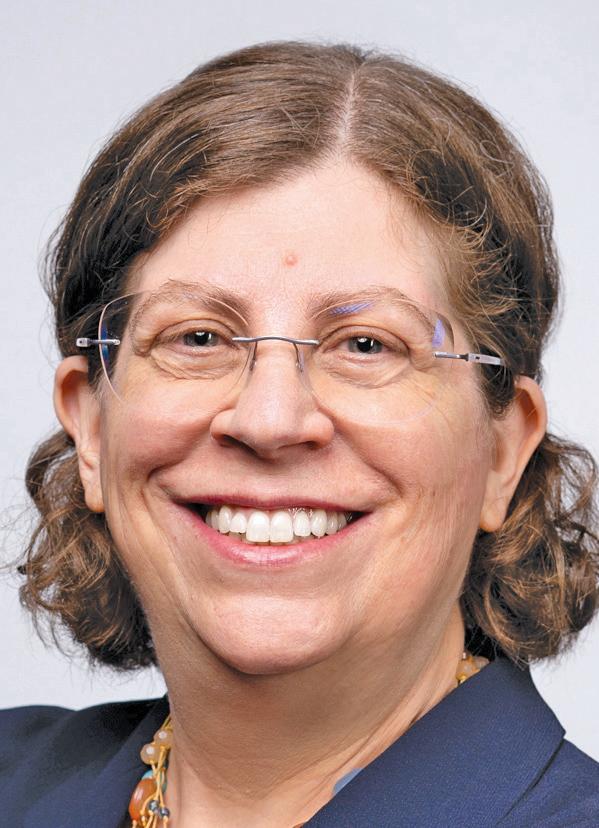
Israel’s cabinet unanimously approved a proposal on Nov. 24 to sanction the Israeli daily newspaper Haaretz. Under the resolution, no government body may communicate with Haaretz or place advertisements in the paper.
These sanctions provide a warning to all of us who care about democratic freedoms — and a lesson for those few of us who lead news organizations.
First, the lesson.
For years, Prime Minister Benjamin Netanyahu’s government has objected to Haaretz’s coverage. Investigations by Haaretz into the charges of corruption against Netanyahu himself were cited by the prosecutor in the case as recently as November. Opinion pieces in the newspaper have been critical of the conduct of the war in Gaza. Haaretz is generally understood to come from a left-leaning perspective.
So why did the Israeli government sanction Haaretz now?
On Oct. 30, Amos Schocken, the publisher of Haaretz, made a set of extraordinarily controversial statements at a Haaretz event in London. He claimed that the Netanyahu government was “imposing a cruel apartheid regime on the Palestinian population.” He called the war in Gaza a “second Nakba” — Arabic for “catastrophe” and a reference to Israel’s War of Independence. And Schocken called for countries to apply sanctions against Israel.
Most shockingly, he said that the government “dismissed the costs of both sides for defending the settlements while fighting the Palestinian freedom fighters, [the people] that Israel calls terrorists.”
Schocken later clarified that he did not include Hamas in this sweeping statement. “As for Hamas,” he said, “they are not freedom fighters.” Then he reiterated that he is a Zionist who believes Israel will only be secure once a Palestinian state is established.
I
call on my peers in the Israeli and Jewish American press to join me in speaking out against the Israeli government’s sanctions of Haaretz.
It is beyond me how he could make a reference to “freedom fighters” when Israel has primarily been fighting Hamas, a terrorist organization that clearly does not care one whit about the Palestinian people. Schocken’s words go far beyond the mainstream understanding of this war in either Israel or the United States. But let’s set aside what Schocken actually thinks.
The trust a journalism organization builds with its community is based on trust in the accuracy and dedication to truth of its editorial staff. The job of a journalism organization is to ensure that whenever a controversy within the community arises — whether it is something local, like the firing of a rabbi, or something of global importance, like the
conduct of a war — that the journalists reporting on the news can be trusted to be open, transparent and accurate in what they report.
As the CEO of J., I know that in conducting the business of a journalism organization, the first principle of a news executive must be to preserve the community’s trust. This is where Schocken went wrong. News executives make news at their own peril, because one consequence is that the community will then question the accuracy and honesty of the reporting. Great news executives understand this.
Most of the time, as a news executive, it’s important that I stay silent, even on issues I care very much about, because the most important job I have is to protect the integrity of our journalism. This is the lesson that Schocken needs to learn.
government is trying to prevent reporters from doing their job.
This ban crosses personal and professional lines for me. In full disclosure, my second cousin, David B. Green, is a Haaretz columnist and longtime senior editor there. Haaretz is also a J. partner. Our newsroom trusts Haaretz’s reporting, and Haaretz trusts ours. We have run Haaretz stories, and Haaretz has run ours. We’re proud of that relationship. Haaretz is recognized in Israel and outside it as a top journalism publication. Haaretz reporters have won all of the top Israeli press awards, including the Israel Press Institute Prize, as well as awards from international journalism organizations.
Most importantly, as a Jewish American, I’ve taken pride in the fact that Israel is the only democracy in the Middle
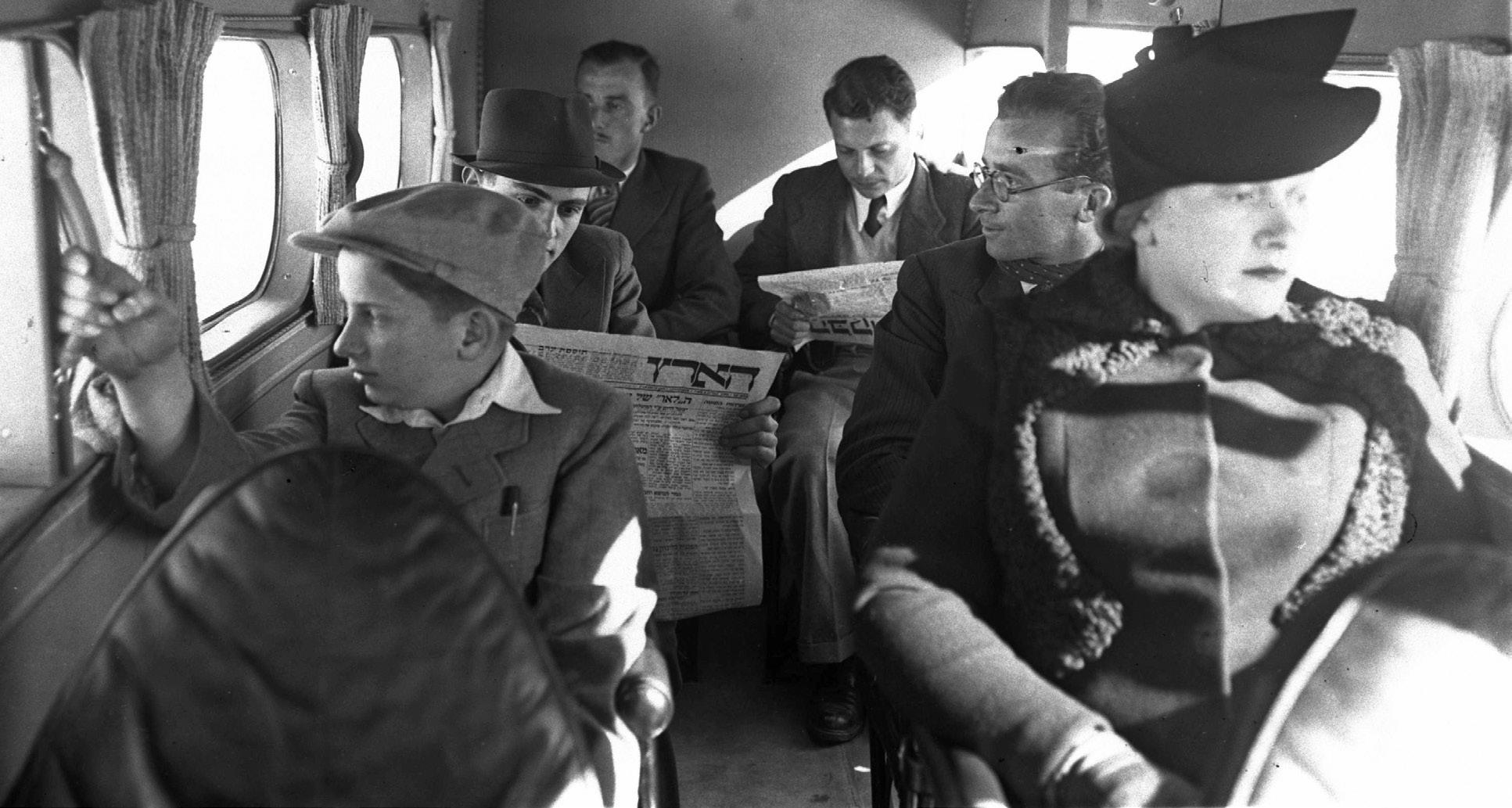
That said, there are times when news executives should speak out. This is one of them. As a journalism leader, one of my roles is to protect the freedom of the press so our journalists can do their work.
I call on my peers in the Israeli and Jewish American press to join me in speaking out against the Israeli government’s sanctions of Haaretz.
So that’s the lesson. Here’s the warning.
I work in journalism because I believe passionately that a free, independent press is essential for democracy. Among the essential functions of the press in a democracy is to provide all of us with accurate and transparent information about what our government does. Reporters uncover truths a government may not wish to be known. Journalists hold those in power accountable.
As the Israeli investigative journalist Ilana Dayan said in a speech when she recently received a Weizmann Institute prize, “Our real job is not just to cover demonstrations or press conferences, but it’s to go to the places that no one wants us to go, to go to the places that are dark and hidden, and light a torch to make sure that people see.”
As an advertiser, the Israeli government is free to pull its ads from Haaretz if officials don’t like the news coverage. They can criticize Haaretz. But by banning government officials from communicating with Haaretz journalists, the Israeli
East. Democracies are values-based governments. Often, leaders in democracies must do what is right rather than what would offer them the most power. This is hard.
Cutting press freedom is often one of the first breaches of a democracy. I was in Turkey in 2014 for the Internet Governance Forum and talked with journalists who would soon be arrested for reporting on government crackdowns. That was the start of Turkey’s slide from a robust democracy into what Chatham House generously calls a “flawed democracy” and Freedom House categorizes as a political system that is “not free.”
While preventing Haaretz reporters from speaking with the government may not immediately impact Israel’s democracy — Israel, thankfully, has a robust media ecosystem and other outlets will continue to cover the government — censoring the press is a warning sign that a country is ready to buck democratic values. We need to take that seriously, in Israel and here at home. In the U.S., we too have begun to see how tenuous preserving a democracy can be.
If Schocken’s outburst is a lesson for news executives, Israel’s action is a warning to us all. The muted response to Israel’s sanctions — and, in essence, censorship — of Haaretz shows what a chilling effect a state’s actions can have on journalism. It’s a warning about the fragility of democracy that we should all heed. n
BOOKS | MAYA MIRSKY | J. STAFF
The authors of “Chutzpah Girls: 100 Tales of Daring Jewish Women” started with the goal of finding stories with the power to inspire.
Tami Schlossberg Pruwer and Julie Silverstein, a San Francisco native who attended Brandeis School of S.F. back when she was Julie Bernstein, ended up finding so many courageous women and girls that they couldn’t fit them all into their new book. And they continue to hear about even more such “chutzpah girls.”

“Ever since the book has been published, the stories just keep pouring in,” Pruwer said.
From Miriam, the Biblical prophetess, and Bruria, the only female scholar in the Babylonian Talmud, to Chana Leviev, the Bukharian Jewish activist who resisted Soviet oppression, and Gal Gadot, the Israeli actress and modernday “Wonder Woman,” the stories are for anyone who wants to appreciate and amplify the voices of women.
“When it was hard to be a Jew and hard to be a woman, ‘Chutzpah Girls’ dared to speak when silenced, pressed forward when stopped, and made their mark when others wanted them erased,” the authors, who both live in Israel, write in the book’s introduction.
Each one-page story is illustrated by colorful, original art by a Jewish woman artist.
Pruwer and Silverstein spoke with J. after the book’s Nov. 25 release. The interview has been condensed and edited for clarity.
J.: What made you want to write this book? What sparked the idea?
TSP: When my first daughter was born, we got all these books for kids about remarkable women throughout
history. I loved reading them to her, but I really felt like I wanted to bond with her over stories of women in our own heritage. I started researching while on maternity leave and I came across so many incredible stories of Jewish women, some more well known and iconic ones but also some stories that had never been told.
I decided that as soon as my daughter would be in daycare, I would devote myself full time to researching and writing and looking for a publisher. Then somehow, magically, the day that my daughter started daycare, I got an email from Julie Silverstein, who I had never heard of before, but who had had the exact same vision.
JS: All I can say is that there was probably some magic involved. It really feels like fate.
Julie, what drew you to the project?
JS: My son had a bar mitzvah and, about a year or so later, my daughter had a bat mitzvah. They both did identical things to prepare and to demonstrate their entry into Jewish adulthood. My son largely received holy books; my daughter mostly got jewelry and handbags. Two children who had spent many, many months of hard work to prepare for this major lifecycle event were treated in very different ways. The project started with wanting … to celebrate the achievements of Jewish women and to rectify a historical bias.
There are so many ways to be a chutzpah girl. Some of the women are warriors; they used the power of the sword. Others were legal activists. They were historians. They were chefs; they used the power of the fork, so to speak. There’s just such a wide range of women who stood up and who made a difference with the tools that they had.
How did you decide which women to include in the book?
TSP: We really wanted to select women whose contributions and activism were led by their Jewish values. And, of course, we wanted it to be as diverse as possible — historically, geographically, in terms of field, ethnic background — to make sure that there is representation for people to feel seen across the Jewish world.
Of course, there’s so many more stories that are untold. Ever since the book has been published, the stories just keep pouring in. People keep sending us stories of their favorite chutzpah girls or women that they believe should be included. And they’re all incredible.
I hate to ask you, but I’m going to. Which is your favorite chutzpah girl?
JS: I’m really drawn to the story of Glückel of Hameln, a Yiddish diarist who lived in Germany. She wrote a series of diaries about her life that are considered to be historically significant today, and she did it with 14 children at home. There were always dishes in the sink. There were children that needed to be fed.
There were so many needs that pulled her away, but she
took the time to do something that was important to her.
TSP: I have so much appreciation for Eliza Davis, who was a mother of 10, originally from the Caribbean. She moves to the U.K. with her husband, and they buy Charles Dickens’ home. She loves reading his books until she comes across the character of Fagin the Jew in “Oliver Twist” and is just so incredibly offended by the portrayal. She picks up a pen and writes [Dickens] a letter, and she manages to convince him to change his mind and [he] actually edits the character in future editions.
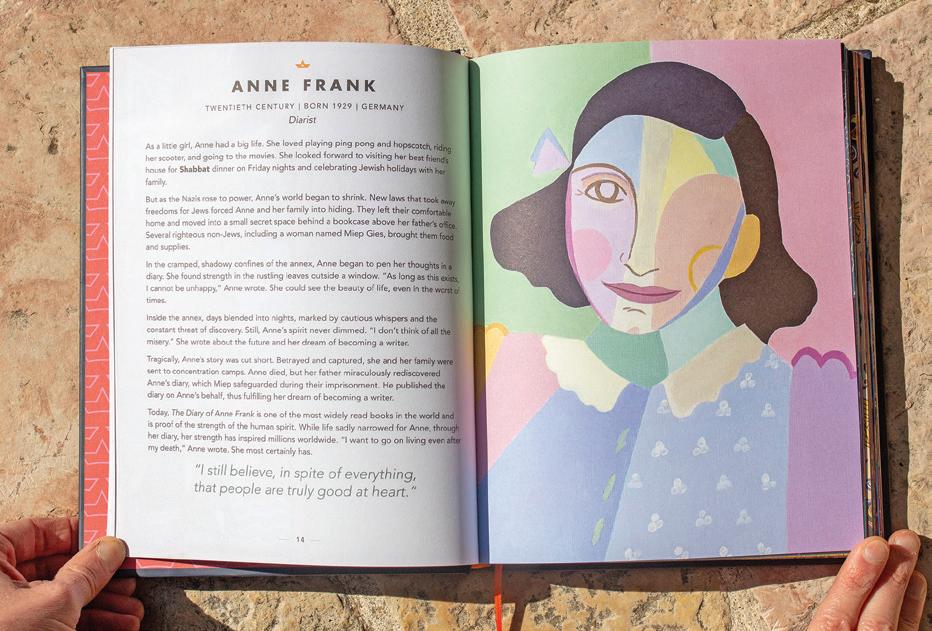
Tell me about the art, which is a big part of “Chutzpah Girls.”
JS: These 100 women were real people with challenges, and we wanted to depict them with texture. We decided to have Jewish women depicting Jewish women. We reached out to Jewish female artists from all around the world and ultimately selected 12 of them.
Some of the artists live in Israel, as we do, and were living in the north and were displaced by the events of Oct. 7, so they were working on the art while they were out of their homes and couch surfing.
What do you want young women to take away from this book?
JS: That there were Jewish women throughout history who met challenges very much like the ones that they are encountering today, as Jews; that they know that they’re not alone in these struggles; that they can find, among their heritage, heroines to look up to, to learn from and to give them strength.
TSP: I think the most moving feedback that we’ve received is that when people come across the book, they don’t just purchase one copy. They write to us and they say, “I’ve purchased this for all of my daughters and nieces and my friends, I want every woman to have this.” n
“Chutzpah Girls: 100 Tales of Daring Jewish Women” By Julie Silverstein and Tami Schlossberg Pruwer (232 pages, Koren/ Toby Press)
Alissa Bernstein grew up attending Congregation Kol Emeth in Palo Alto and Camp Ramah in Ojai. Now 25, she has embraced Israel and the Jewish community by taking a job right out of college with the American Jewish Committee’s regional office in Los Angeles, where she is now assistant director.
But “embracing” doesn’t mean the Palo Alto native agrees with everything she was taught growing up. For example, she told J., her Ashkenazi-centric education included the “disconcerting pattern of always starting Jewish history with the Holocaust, which paints Jewish history as one of victimhood, and that’s dangerous.”
Reading more as a young adult about the Jewish experiences in Spain, Iraq and other places far from Eastern Europe strengthened her sense of peoplehood, she said, as well as her commitment to the ongoing building of a state for Jews in their historic homeland.
“Now I can say, yes, we are indigenous to this land as are other people,” she said in a recent interview. “I come from a historic, tribal people.”
Bernstein is one of 31 Jews from the English-speaking diaspora and from Israel, all under 30, who contributed essays to “Young Zionist Voices: A New Generation Speaks Out,” published in November by Wicked Son in cooperation with the Palo Alto-based Z3 Project.
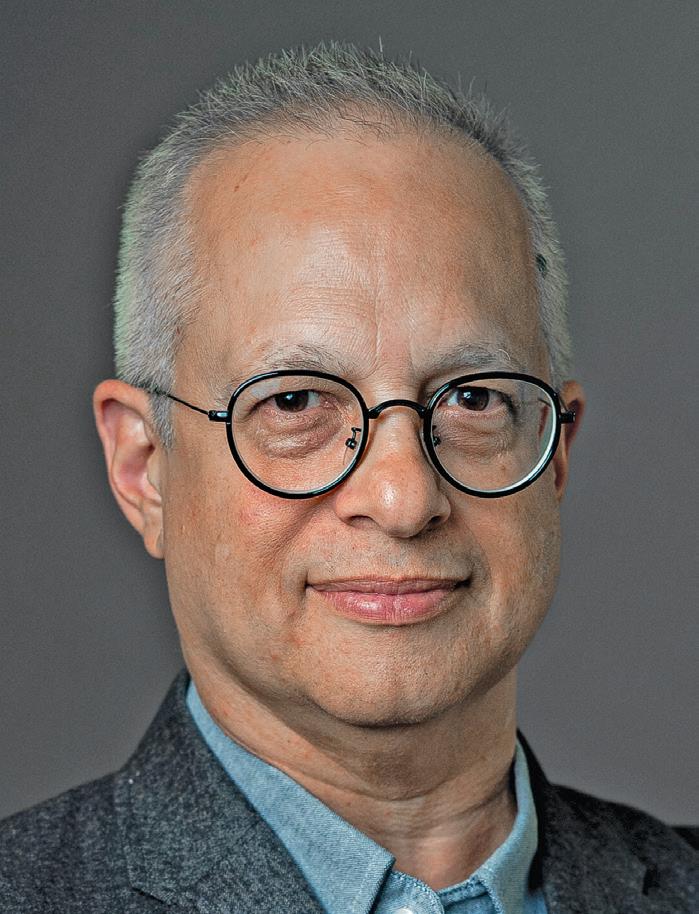

Don’t be an “inconspicuous Jew,” writes 20-year-old Charlie Covit, a sophomore at Harvard College.
“Jews are, at least in my view, the world’s most awesome extended family,” Covit writes. “And when it’s your family that’s in danger, you don’t keep your head down. … We have to look after each other.”
This marks the first time so many Gen Z Jews with self-professed Zionist leanings have aired their views in one book. That alone makes the book worth reading. But these essays reveal much more.
Filled with optimism, passion and empathy, both for fellow Jews and non-Jews, they unveil a portrait of a generation that is more
public in its Judaism, less deferential toward Israel and deeply committed to an ahavat Yisrael, or love of the Jewish people, that respects the wide diversity of Jewish ethnicities and religious observances.
Some contributors are in school, while others work in the Jewish community. And they are chomping at the bit to take the communal reins.
In his essay “It’s Time for the Grown-Ups to Step Aside,” British Jewish activist Noah Katz writes, “Let us change your tired systems for the better. We’re not a threat. We have the same deep-rooted love for our people as you do. … Let us not just shake your stale systems up, but… flip them on their heads.”
David Hazony, editor of the book and director of the Z3 Institute for Jewish Priorities, selected the essay writers. With some exceptions, they do not know one another, but they are united by having come of age during the crises of the Covid-19 pandemic, violence and war between Hamas and Israel and a surge in antisemitism worldwide, all of which have led to feelings of isolation.
“They have gone through an awful lot that we never went through in our generation growing up, and their thoughts about Israel and Zionism and fighting back have developed and gone to places where we didn’t,” said Hazony, who is part of Gen X.
Reading these essays, it’s clear that the writers have different conceptions of Zionism. They present an expansive notion of it, one that envisions a strong diaspora next to a strong Israel, each taking inspiration and support from the other.
“It’s not about putting Israel at the center. It’s about using Israel as an engine of spirit and identity and pride,” Hazony said.
For them, moving Israel out of a
“Let us change your tired systems for the better. We’re not a threat. We have the same deep-rooted love for our people as you do.”
Noah Katz, essay writer
privileged position in the Jewish worldview is not about disparaging the Jewish state. It’s part of their vision of the Jewish world as completely interdependent.
“The central problem in today’s Zionist discourse is its insistence on the Ben-Gurionite approach: focusing exclusively on the Jews’ right to a sovereign state in the Land of Israel,” writes Oz Bin Nun, a student at Hebrew University and a soldier in the current war in Gaza.
After the Oct. 7, 2023, Hamas massacre, he writes, both sides of the Israel-diaspora relationship slipped back into the “comfortable clarity of early Zionism, and the implicit division of labor between the Israeli protagonist and the faithful supporting role of the American Jew.”
That fallback position is “not merely one-sided and unsustainable. It misses the key to the survival and prosperity of Jewish communities,” he continues. “One cannot act as though the only important story is happening in Israel.”
Jewish pride is another common thread in the essays. Wear your Magen David and kippah in public, several essayists urge.
An aversion to victimhood is another shared theme, as is taking a public stand rather than blending in, as earlier generations tried to do. Public displays of antisemitism might trigger anxiety among older Jews, but they just make these Gen Z Jews angry. And they fight back — as did Adela Cojab, who in 2019 filed a federal complaint against New York University over its failure to protect Jewish students, including herself, from discrimination and harassment. Her efforts led to one of the first legal settlements over antisemitism as a form of discrimination under Title VI of the Civil Rights Act.
In her essay, Cojab relates how her mentor at NYU advised her not to file the complaint because “drawing attention to antisemitism would only make it worse.”
“This perspective, ingrained in the mentality of Jews of past generations, grounded in fear and caution” is not one she or her peers share. Similar Title VI lawsuits have since been brought against Harvard, Columbia, UPenn and many other schools, she writes, demonstrating that the Jewish diaspora is “vibrant, resilient and strong.”
The kind of pride these essayists favor is not bombastic or jingoistic but comes from a commitment to a “collective project,” as one writer put it. “Something bigger than ourselves that gets us out of bed in the morning.”
“We are different,” writes Australian Josh Feldman, suggesting that the answer to a lackluster diaspora identity “lies not in doubling down on funding Israel programs, nor ramping up Israel advocacy [but] being honest with ourselves about who we are.”
He continues: “If we want future Jewish generations to thrive, we need to hammer this message home. We’re different, and that’s okay. It doesn’t make us any better or worse than anyone else. In fact, it’s great: it’s what makes being Jewish so wonderful.” n
“Young Zionist Voices: A New Generation Speaks Out” Edited by David Hazony (267 pages, Wicked Son)
BOOKS | ANDREW SILOW-CARROLL | JTA
After stepping down as chancellor of the Jewish Theological Seminary in spring 2020, Arnold Eisen found himself with the time to think about a big question he’d long put off as the leader of the Conservative movement’s flagship university and, before that, as a Stanford professor of Jewish culture and religion.
“When my friends asked, ‘Arnie, why is it that you have faith and we don’t?’ — I tried
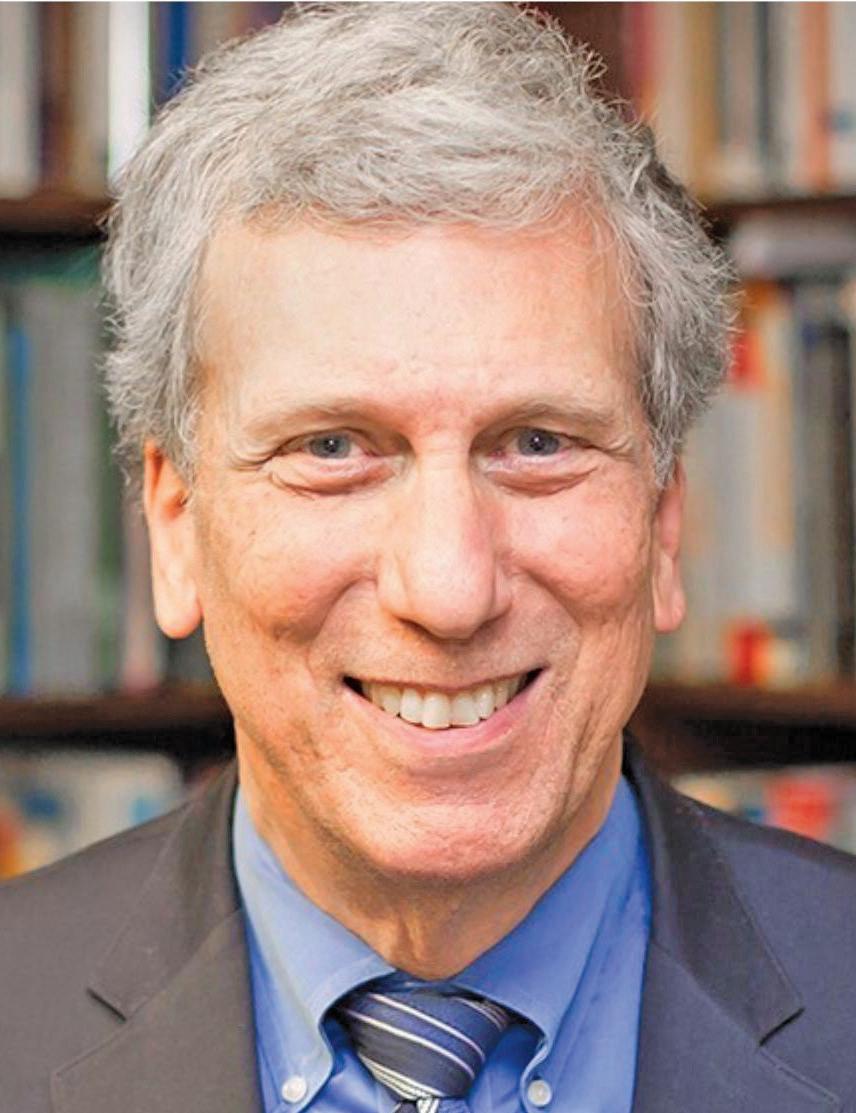
to figure out what experiences in my life made me open to the possibility of faith,” he said in a recent interview with JTA.
He answers their question in a book released this fall, “Seeking the Hiding God: A Personal Theological Essay,” in which Eisen describes what he believes about a God whom he acknowledges to be elusive, if not unknowable.
This new work is a professional departure for Eisen, whose previous books examined the interior lives of American Jews and the classics of modern Jewish thought. It is also a personal departure for an observant Jew who nonetheless shared the American Jewish allergy to what he calls “fervent God-talk.”
“I was writing scholarship about other people’s Jewish thought for something like 40 years, but I always somehow avoided facing the questions of what I actually believe,” said Eisen.
Begun during the Covid-19 lockdown and finished after the 2023 Hamas attack on Israel, the book synthesizes the thoughts of some of Eisen’s intellectual heroes, including the Conservative movement theologian Rabbi Abraham Joshua Heschel and the German-Israeli philosopher Martin Buber.
From Heschel he learns that Judaism is
a call to action; from Buber, that miracles aren’t evidence of the supernatural, but an invitation to “abide in the astonishment” of creation. In this interview, Eisen, now 73, said his aim is not to prove to the reader that God exists, or is good, but to offer one Jewish believer’s account of how Judaism makes sense of the world.
This conversation has been edited for length and clarity.
be more certain about this God that our tradition teaches us can be encountered. And what I came to recognize is that my sporadic, momentary, ephemeral encounters with God were far more typical than not, and that many Jewish thinkers testify that this is precisely the kind of experiences that they’ve had as well.
“What I came to recognize is that my sporadic, momentary, ephemeral encounters with God were far more typical than not.”
Arnold Eisen, former head of JTS
A word that keeps coming up in your book is “action,” and how human action is key to bringing out redemption, or righting injustice. That seems key to your theology. Absolutely central. I’m a child of the ’60s, and I saw that political action and social activism made a difference for good in the world. In Heschel, I had this personal example. … I got to meet him, and he left me convinced that that piety does not stop in the synagogue. In his book “God in Search of Man,” he writes that Judaism doesn’t take a leap of faith. It takes a leap of action. And that paragraph means everything to me.
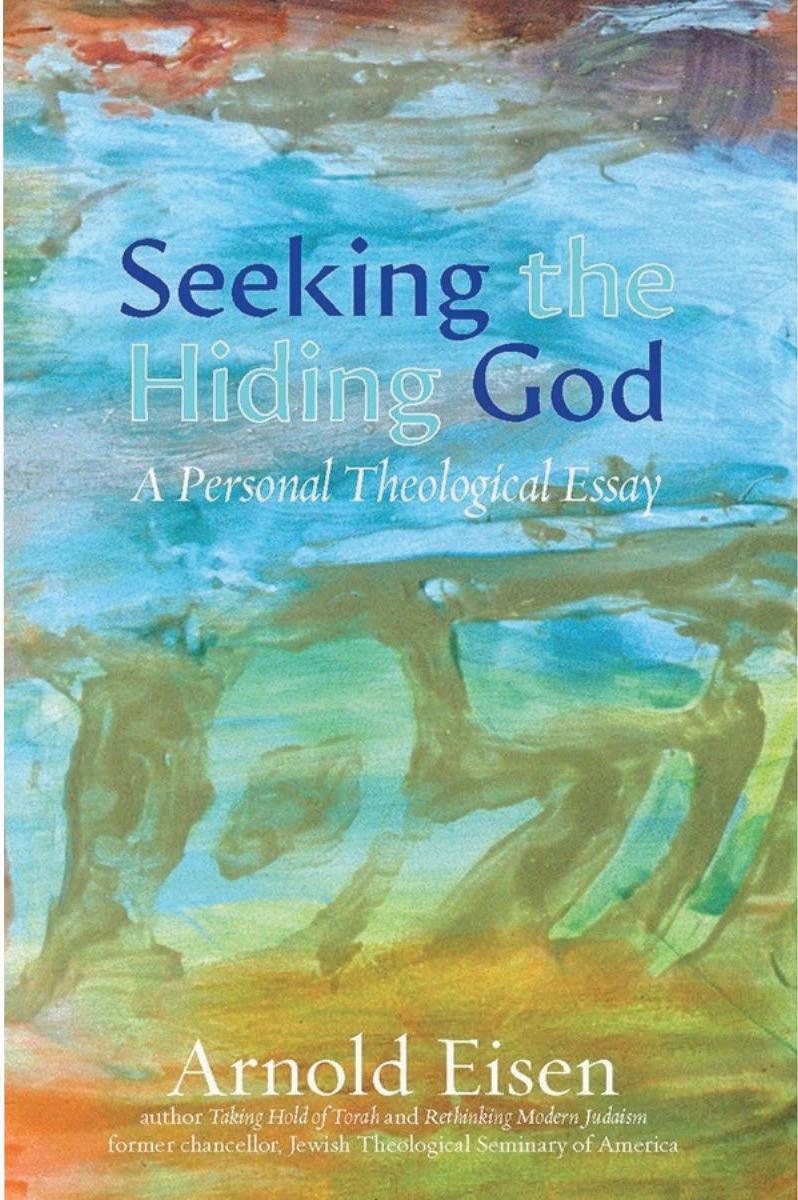
[the audience] was simply not aware of all these options. They’ve never been exposed to them, not as adults and not back in Hebrew school. That, to me, that’s tragic.
JTA: Why did you feel the need to write a book of theology?
ARNOLD EISEN: I wanted to try to do an account of what I myself believed about God. I had a sabbatical year off, and it turned out to be the Covid year, and it was also the year I was about to turn 70. So there was this confluence of circumstances that led me to sit down and think hard and reflect.
I am thinking of an old radio program, “This I Believe,” where guests had to lay out their philosophies in five minutes. Do you have the elevator pitch version of your theology?
I don’t have that pitch, but let me start with the title: ”Seeking the Hiding God.” The dominant theological issue in Jewish life for the last couple generations has been the Holocaust, and one of the major theological responses to the Holocaust is what we call [in Hebrew] “hester panim,” the hiding of God’s countenance, a phrase from the book of Deuteronomy. Some Jewish thinkers apply this not only to reactions to tragedy, but to the condition of modern life.
I had the sense for a long time that if I was a better person or more devoted to my Judaism, that I would be granted a more robust set of religious experiences, and
You write that when you teach American college students about Buber and Heschel, they ask “why these thinkers needed to talk about God so much when what they really cared about was ethics.” It’s the classic question: Can’t you be good without God, and what does belief in a supreme being add to the equation? Yes, one could have a good life without God. And one does not have to be a Jew to have a good life or whatever afterlife is promised to us. But if this is an eternal human search, and if you can have the grace of encounter with God — why would you possibly want to live without that?
You write in your book, “Jews engage in sustained or fervent God-talk much less than Americans of other faiths.” As someone who was in the business of training rabbis for 10 years, do you see that as a failure of the synagogue or other institutions?
I’m acutely aware of how difficult faith is in the modern world, especially for Jews in America, where we are such a distinct minority. I had the experience [of recently] speaking at a synagogue in San Diego, and having to tell committed Jews that the theology which says God is responsible for everything that happens in the world is by far not the only Jewish theology there is. One does not have to believe that the Holocaust happened with God’s acquiescence, let alone with God’s active participation. And
I want to ask how your ideas about God and practice and action might address the questions you just posed. We’re in a difficult time. Because of AI, people are going to lose their jobs, and people who have jobs are going to be [doing something] completely different than they were before. And it’s scary because of climate change: The catastrophe is imminent, and at some level, we all know this. The Hamas attack on Oct. 7 made tragedy and fear visceral for many Jews, and some of them flocked back to Jewish communities. They want contact with their tradition. They’re looking for meaning. It’s a moment of crisis, but it’s a moment of great opportunity. We just need to be creative.
How does Israel fit into your theology? Israel is crucial to my Judaism, but not because God is doing this. I don’t know what God is doing there. I pray that it will turn out to be the beginning of the flowering of our redemption. But who knows?
My teacher David Hartman [the late Israeli American philosopher] taught me … that the theological model for Israel is not Exodus, but Sinai, where what is important is that Jews try to live up to the responsibilities of the covenant, and that they translate the ethical principles pronounced in the 10 Commandments. Israel opens up new possibilities for covenant. What can we do now that we’re a majority responsible for non-Jews as well as for Jews, Jewish health care policy, Jewish foreign policy, Jewish educational policy, etc.? It’s a great opportunity to see what mitzvah can mean in the modern world. n
For the complete interview, visit tinyurl.com/ jta-eisen.
DANCE | LAURA PAULL | J. STAFF
At first glance, the septuagenarian tango dancer — slight of build, lithe in his carriage, long, gray hair gathered tightly in a low bun — might be taken for an Argentine.
But when Ivan Shvarts speaks, your expectation pivots.
A Russo-Hungarian accent — not a Spanish one — colors his English as he instructs students in the basics of Argentine tango in an upstairs room of San Francisco’s War Memorial Veterans Building. And his dark eyes and moody expression — so typical of tangueros — are actually those of an Eastern European Jew who hears in this plaintive music the story of his people, or of any people who find themselves far from home.
Shvarts himself knows something about distances. He was born in 1946 in Mukachevo, a small Hungarian town absorbed by the Soviet Union after WWII (and now part of Ukraine.) His parents had been affluent, educated Jews before the war and spoke Hungarian at home. In her youth, his mother had studied music and dance and was sent to take further lessons in Austria because she excelled at piano. On at least two occasions, one particular teacher rolled up the house carpet and showed her how to tango, even though elders frowned upon the dance as risqué.
“She loved, loved to dance,” Shvarts said. “And she knew all the songs.”
It was music that may have helped his mother survive Auschwitz: Forced to play in the women’s orchestra at the concentration camp, she likely received more rations. His father survived a Hungarian labor camp. They met and married right after the war. When he came of age, Shvarts served in the Soviet Union’s air force and studied architecture.
After his father died in 1962, the remaining family put plans to emigrate into motion. They were finally able to move to Los Angeles in 1976, and Shvarts became a licensed contractor, building a new life in the U.S. as a young adult.
But it was not until the year 2000, when Shvarts’ mother passed away, that his heart found a home in tango. In her last days, or hours, she left him a note at her bedside, imploring him to explore the dance.
“She died in the afternoon,” Shvarts recounts. “And the next day, I took my first tango class.”
Soon after, he was off to the heartland of tango — Buenos Aires, Argentina.
the drum beats and dance languages of enslaved Africans.
“You know from where it came? Tango came from the Congo,” Shvarts said. His source is a book on the history of tango by the late art historian Robert Farris Thompson. The book describes how people abducted from Congo were sold in the ports of Buenos Aires and Montevideo.
“They lost everything,” Shvarts says, imagining the tragic scene. “So they hugged each other and cried, standing up, rocking to the rhythm of drums. And when the European musicians came and saw them, they said, ‘Oh, wow … this is great.’ You know, this is almost how they feel. The Jewish musicians who came from Poland and Russia, and the Italians, also lost everything. That sorrow became the tango in close embrace.”
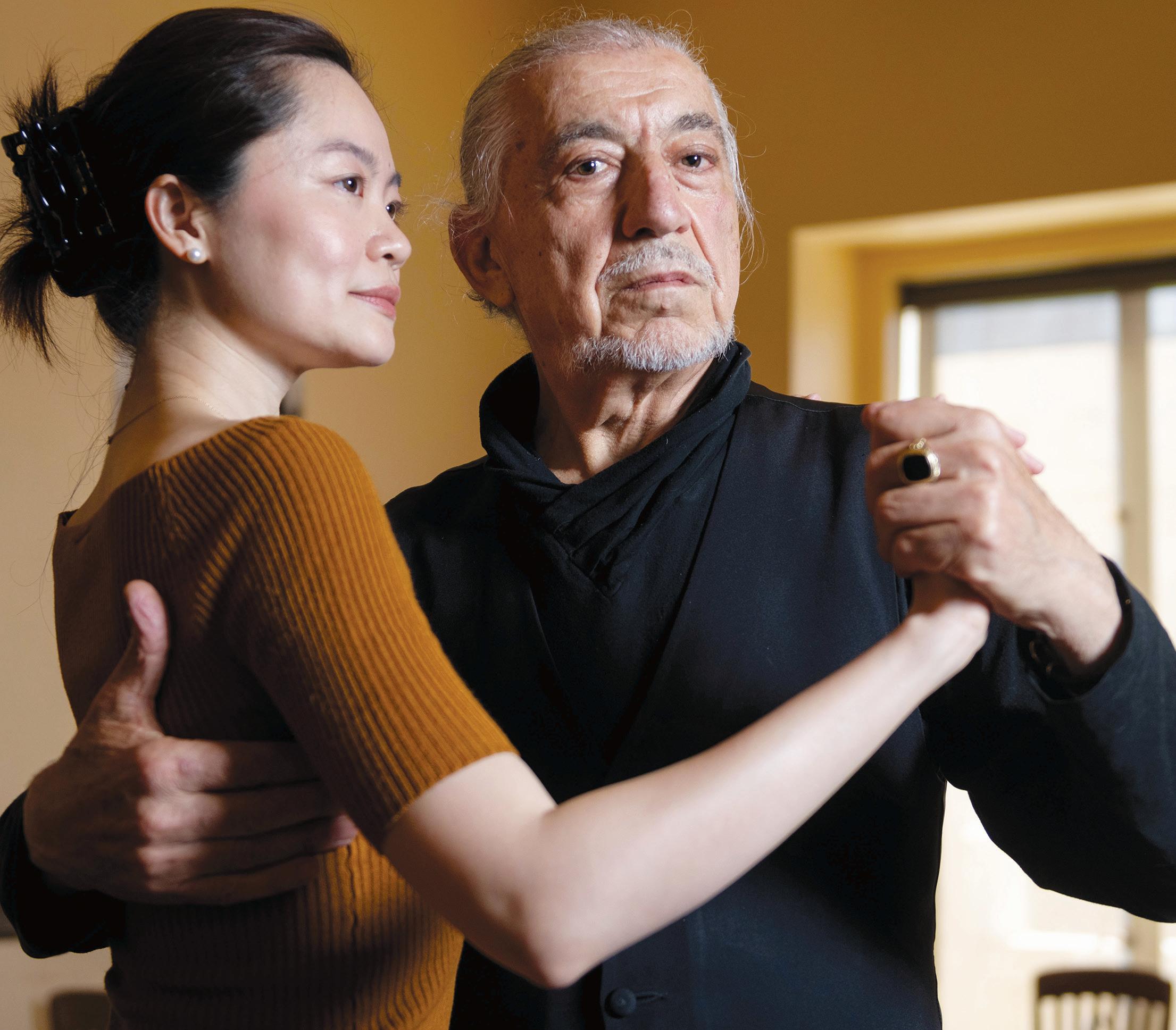
to regular participants socially, mentally and physically — so much so that they moved the classes outdoors in order to keep them going during the Covid-19 pandemic.
Like many popular dance inventions, tango spread across the world. In the 1910s, it ricocheted from Buenos Aires to Paris, throughout Europe and back again to Latin America. New tango songs were written in multiple languages, including Yiddish. By the 1920s, “Yiddish tango was around, in Poland, Hungary, Russia, all the Jewish communities,” Shvarts said.
“Close embrace,” which Shvarts clarified is “not about sex,” is the style he teaches today, both to military veterans through local chapters of the American Legion and to mostly older students through the San Francisco Parks and Recreation Department. Far from the flashy gymnastics seen in tango stage shows, close embrace tango is slower and more sensuous, providing a discrete structure for physical contact between dancers who may or may not know one another.
“The Jewish musicians who came from Poland and Russia, and the Italians, also lost everything. That sorrow became the tango in close embrace.”
Ivan Shvarts, tango instructor
Tango, both the music and the dance, is the ultimate immigrant art, a fusion of Spanish, Italian and Eastern European Jewish musical traditions brought to the ports of Buenos Aires and nearby Montevideo in Uruguay — and then reblended in seedy bars frequented by sailors, musicians, gauchos and prostitutes.
Many of those women were 19th and early 20th century Jewish immigrants who had been tricked into leaving Poland with promises of marriage and were then abandoned in Buenos Aires to fend for themselves. Asked to entertain strange men speaking a multitude of languages, they would resort to the Jewish folk dances they knew. Some of those steps became integral to the tango danced today.
Tango’s development was also influenced by Argentine and Uruguayan folk tunes and by a lesser-known source:
“The focus is on connection, musicality and the emotion conveyed between partners, rather than intricate footwork,” Shvarts has posted on his Facebook page. This style fosters an “emotionally rich dance experience, where dancers feel in sync with both the music and each other,” he notes.
It is for this very reason that S.F. Parks and Rec and then the American Legion green-lit his proposals to offer classes in the mid-2000s.
Shvarts had moved to San Francisco in 2005, following divorce and retirement, and was by then proficient enough to teach. He began offering classes for people 55 and older at two recreation centers as a volunteer first and then as a paid instructor starting in 2015. The classes don’t require prior experience and are still going strong.
Katherine Villasin, senior services program coordinator for S.F. Parks and Rec, told J. that she has seen the benefits
“People just taking a walk in the park during the pandemic would stop and and some would try it. They didn’t know they were about to become tango dancers!” she said. Shvarts also organized outdoor tango dancing on the grounds of the Palace of the Legion of Honor, on the western edge of the city. On many weekends throughout the pandemic, one could see people in face masks dancing in the fog to ease the pain of social isolation.
For Paul Cox, former chair of the American Legion War Memorial Commission, it was a bit of a gamble as to whether veterans would show up for an activity like tango. But “Ivan was clearly very serious, and a veteran himself, so we gave him the go-ahead,” Cox said. “And I’m very glad we did.”
While the classes for vets have remained small, Shvarts is adamant that the exposure to tango has had a strong impact on at least some of those who have taken part.
Shvarts also noted that he is not teaching classes to produce tango “stars,” but for the satisfaction of enabling a lonely or depressed person to respond to the emotive music and to safely experience the gift of human touch.
Since the time when he served in the Soviet military and socialized at the officers club, Shvarts has seen dance lift spirits. And he touts the more authentic experience of meeting new people at a tango class, as opposed to, say, online dating. But he is sharply critical of the commercialization of tango culture as it has soared beyond its Argentine roots.
“It’s become an industry,” he complained, with championships and a sexualization of style and dress.
For Shvarts, that is not the tango.
“No, no, it’s gloomy,” he insists, his Russian accent giving this claim some weight. “People say, ‘Oh, you have to smile. You have to be happy.’ No! I don’t have to be. I enjoy my gloominess. I like to be happy — but to feel my sorrows too.” n
Ivan Shvarts’ Argentine Tango classes for beginners 55 and older resume at Hamilton Rec Center on Jan. 7 and at the Richmond Rec Center on Jan. 8. Free. Register at tinyurl.com/sfrec-tango. For information on tango at the War Memorial Veterans Building, visit goldenagetangoacademy.org.
The Torah column is supported by a generous donation from Eve Gordon-Ramek in memory of Kenneth Gordon
TORAH | RABBI HAYIM HERRING
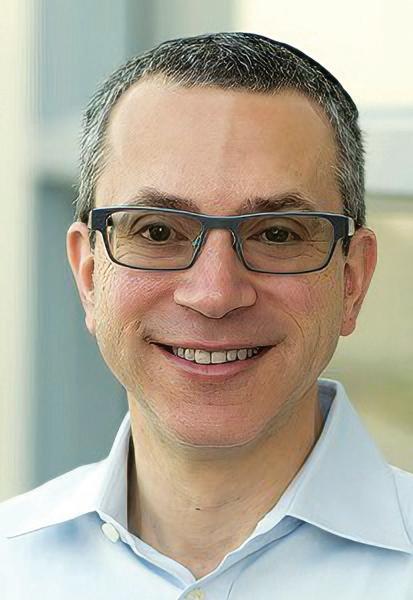
Rabbi Hayim Herring is CEO of HayimHerring.com and specializes in strategic change and anticipatory leadership development. This article originally appeared on MyJewishLearning and is reprinted with permission.
Vayishlach Genesis 32:4-36:43
Parashat Vayishlach opens with the riveting story of Jacob’s night-long struggle with a Divine messenger. Two acts of naming occur within this brief episode that reveal how Jacob grows through his struggle. First, Jacob’s mysterious opponent changes his name to Israel. Immediately afterward, Jacob gives a name, Peniel, to the place where he wrestled with God’s messenger. These two acts of naming can teach us many lessons, including that our lives do not end even amid struggles such as losing a loved one. If we can face the fears that arise when a loved one passes, for example, we increase our ability to move ahead meaningfully with our lives.
A close reading of Jacob’s wrestling match with a Divine messenger reveals more about his strength of character than his brawn. Jacob is fearful and alone when he is visited by this being. He has already sent his family away to the far side of a river because he is apprehensive about his impending reunion with his twin brother, Esau, from whom he fled for his life 20 years earlier after talking Esau into giving up his birthright for a bowl of lentil stew.
Grammatically, the Hebrew form of this name, “Yisrael,” can imply both that Jacob’s struggles will continue and that he will be able to overcome them.
This time, Jacob does not run from a new challenge. Instead, he persists in his struggle with the Divine being through the night and is rewarded in the morning with a new name, Israel, which is often translated as “God wrestler.” Grammatically, the Hebrew form of this name, “Yisrael,” can imply both that Jacob’s struggles will continue and that he will be able to overcome them. Jacob’s new name signals
DEC. 13 KISLEV 12, 5785
Light candles at 4:33 p.m.
Shabbat ends Dec. 14 at 5:35 p.m
he now has the capacity to withstand fear and emerge through it as a stronger person.
When Jacob finally faces Esau the next morning, we see him embody this new name. The brothers briefly meet and quickly part ways. And Jacob finally and peaceably repairs his damaged relationship with Esau. Jacob will learn from subsequent events that his new name is not a protective amulet against future fear, but it will ease his doubts about his ability to transcend that fear.
Taking a cue from the angel who renamed him, Jacob immediately names the location where he wrestled with the Divine messenger. “And Jacob called the name of that place Peniel, meaning, I have seen a Divine being face-toface, and my life has been preserved” (Genesis 32:31).
The latter half of that verse is often translated as “yet my life has been preserved,” but the preferable translation is “and.” This one-word change radically alters its meaning. The first rendering suggests Jacob is alive despite a potentially life-ending encounter, while the latter declares that Jacob can move forward precisely because he confronted his fears.
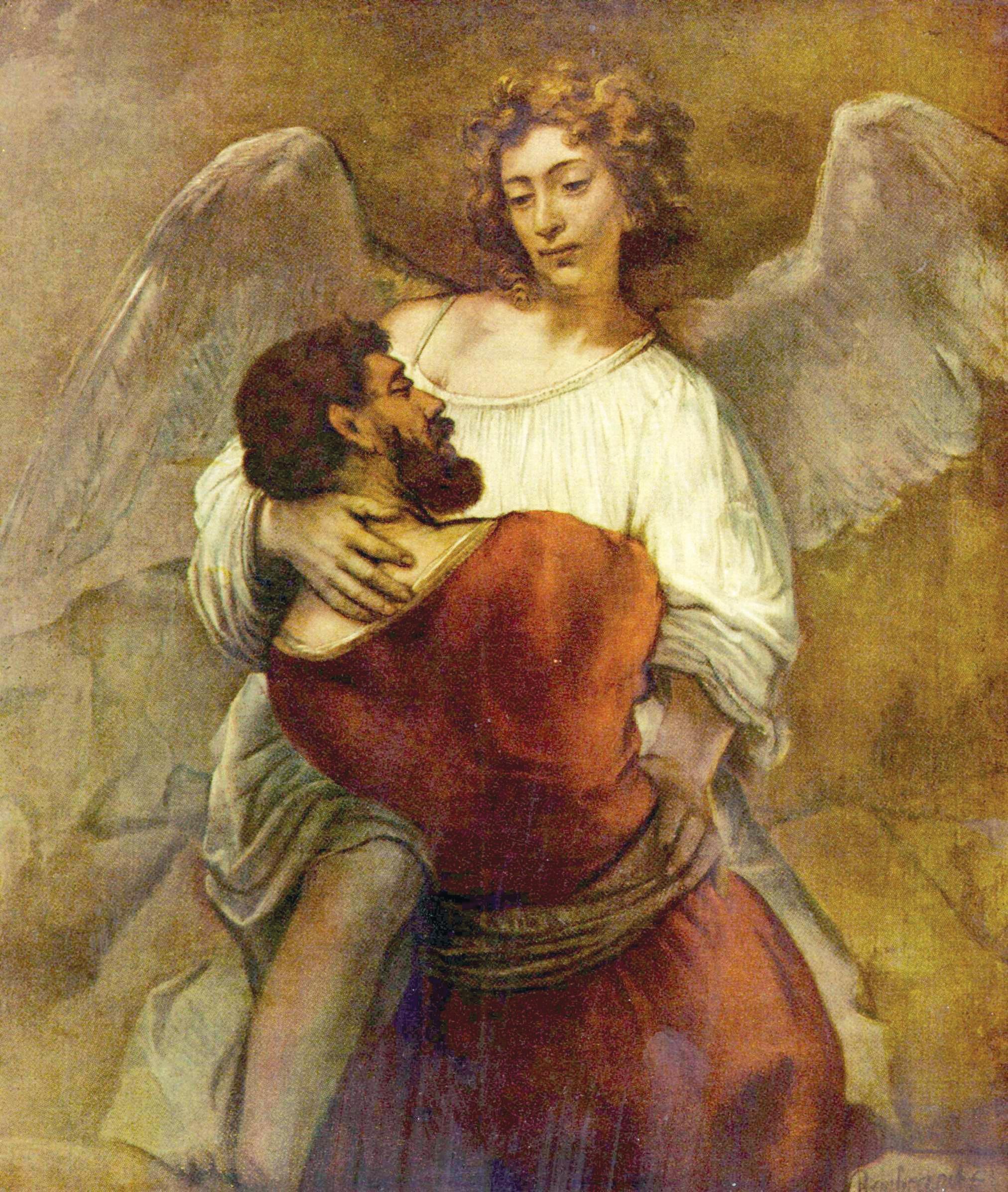
Jacob is permanently wounded from his encounter with this mysterious being. The text tells us that he limps away in the morning. But having faced his fear, he can move forward despite his wound because he is no longer encumbered by such fear.
DEC. 20 KISLEV 19, 5785
Light candles at 4:36 p.m.
Shabbat ends Dec. 21 at 5:38 p.m
Many mourners struggle with an array of dark feelings after a loved one’s death. Like Jacob, mourners may feel alone and fearful, unsure how to move on without the presence of someone who played such a significant role in their lives.
However, Jacob’s courage shows that by facing those fears, we can overcome them and move forward. We may be wounded, but we are blessed nonetheless. n
DEC. 27 KISLEV 26, 5785
Light candles at 4:40 p.m.
Shabbat ends Dec. 28 at 5:42 p.m.
HANUKKAH
Dec. 25–Jan. 2 | Kislev 25–Tevet 2
Light candles after nightfall
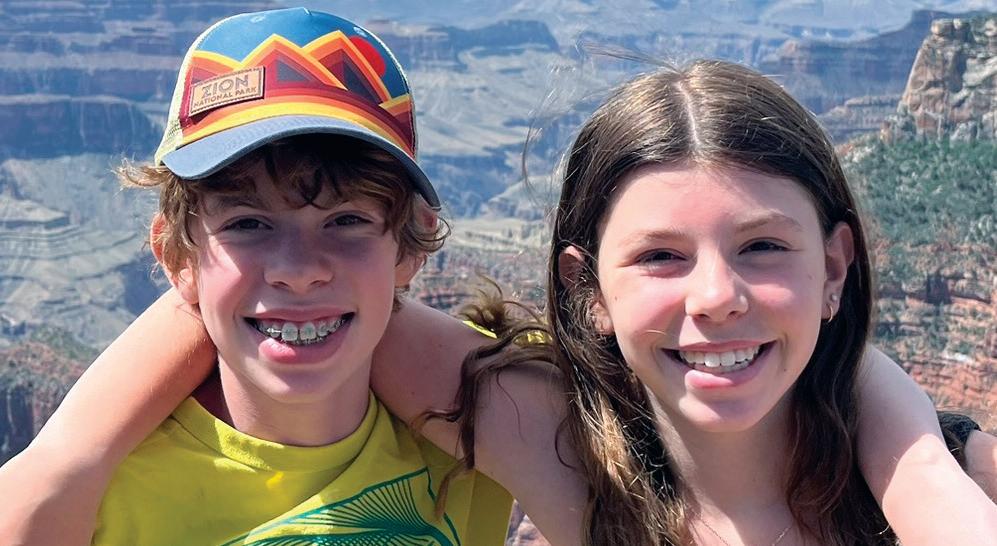
SASHA AND JUDAH HOLDEN-HOLLEY Children of Melissa Holden and Sarah Holley, Saturday, Dec. 14, at Congregation Rodef Sholom in San Rafael.
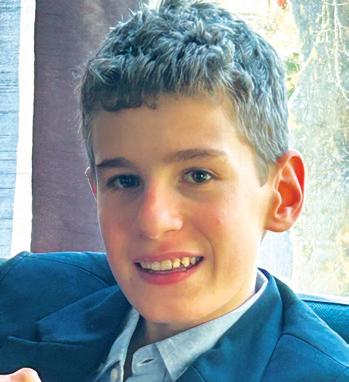
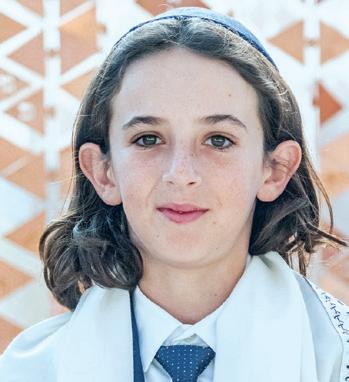
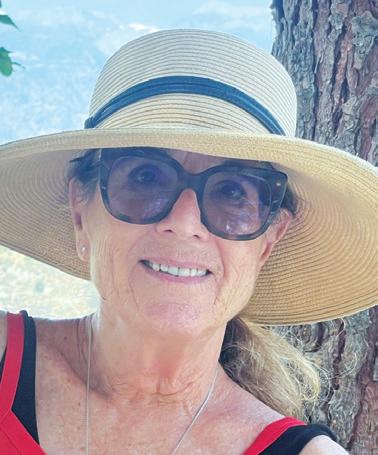
SOREN FULVIO Son of Leora and Matthew Fulvio, Thursday, Dec. 5, at Congregation Rodef Sholom in San Rafael.
ELIAS TRAEGER HIRSCHFELDER Son of Jennifer Traeger and Adam Hirschfelder, Saturday, Nov. 16, at Congregation Rodef Sholom in San Rafael.
HALEY EISEN Daughter of Carolyn and Ira Eisen, Saturday, Dec. 14, at Temple Isaiah in Lafayette.
ALEXANDER BELAGA Son of Audrey and Jonathan Belaga, Saturday, Nov. 23, at Congregation B’nai Shalom in Walnut Creek.
DEBORAH BLOOM Wife of Michael Bloom, Saturday, Dec. 21, at Congregation B’nai Shalom in Walnut Creek.
SONIA LEOPOLD Daughter of Hsiao Fen Chien and Steve Leopold, Saturday, Dec. 7, at Congregation B’nai Shalom in Walnut Creek.
ETHAN ROMEM Son of Amy and Israel Romem, Saturday, Dec. 21, at Congregation B’nai Shalom in Walnut Creek.
Ilene Serlin passed peacefully on Nov. 26, 2024, after her brief, recent battle with an extremely aggressive and incurable metastasis of her original thyroid cancer, which was diagnosed three years ago. She led an incredibly rich and full life during those last years. She was an advocate for Israel and organized and planned to lead the first Trauma Mission of North American Psychologists to meet with Israeli Trauma Psychologists. She was also a dedicated member of Congregation Kol Shofar, where the community loved and cherished her. Ilene was an avid Judaism student and loved her immersion in Jewish spirituality and Talmud study. She initiated and led the Rosh Chodesh Women’s Chavera and other arts initiatives.
Dr. Ilene Serlin was a Professor of Psychology at Saybrook Graduate School and Research Center. She also was in private practice in San Francisco and Marin County. Ilene was a Council representative and Past President of Division 32 (Humanistic Psychology) of the American Psychological Association. She trained with Laura Perls and was on the New York Gestalt Institute faculty. Ilene was also on the editorial boards of the Journal of Humanistic Psychology and the American Journal of Dance Therapy. She has published numerous articles and chapters in existential-humanistic psychology, particularly in the psychology of women and psychology and the arts.
holistic healthcare and feminist perspectives. She collaborated with leading feminist psychologists, humanistic psychologists and trauma psychologists to advance perspectives that deepened the recognition of humanistic contributions to trauma.
While Dr. Serlin’s contributions remained underappreciated in many spaces where she contributed, she still received numerous honors for her work. These included the San Francisco Mayor’s proclamation of Ilene Serlin Day on Sept. 22, 2018, and the Outstanding Accomplishment Award from the San Francisco Psychological Association. In addition, she was named a Fellow of the American Psychological Association and several of its divisions.
and Kirwan Rockefeller). Dr. Serlin also participated with Kirk Schneider and John Galvin in a landmark interview with pioneering existential psychologist Rollo May titled “Rollo May on Existential Psychotherapy” (available through Psychotherapy.net). Finally, Dr. Serlin has written and presented extensively on women in humanistic psychology, including interviews she conducted with such pioneers as Laura Perls and Eleanor Criswell.
She would be the first to say that her legacy is not in her resume. Rather, it is the authenticity and profound human connections she achieved that we were privileged to witness. Jordanian, Turkish, Indian, Chinese, Israeli and other women everywhere related to Ilene as the sister/mother they never had. The joke in China is the Ilene Serlin 30-second rule. Women who she trains start crying within 30 seconds as she helps them find and create their voice and identity in a repressed society. Whether at Kol Shofar or in Dali, China, Ilene touched souls. She was a spiritual and academic leader whose legacy of healing will reverberate for generations.
Ilene dedicated herself to family and deep friendships. She was the “human glue” that united family members and created deep connections across a hybrid family network that reflected her soulful, free-spirited nature.
Tell the Bay Area about your simchas and have a photo published in J. to remember it for years to come.
Free Lifecycle Listings! THE JEWISH NEWS of Northern California
Up to 100 words and photo at no charge.
Send your listing and color photo to events@jweekly.com or call 415.795.2357
Dr. Serlin had a long history with humanistic psychology. She was a student of Rollo May. In her career, Ilene built from the founders’ work, taking it in new directions. She applied humanistic and existential principles to dance, movement therapy and other forms of art therapy. She provided training in dance and movement therapy around the globe, cultivating a movement in dance and movement therapy in humanistic and existential psychology circles and beyond.
Ilene edited a three-volume set of books on Whole Personal Healthcare. She championed holistic approaches to health and mental health. Her work in holistic approaches to health care and dance and movement therapy deepened humanistic psychology’s connection with the body. Ilene also was a powerful advocate of feminist perspectives. Throughout her career, she advocated for greater recognition of women’s contributions. She illuminated the contributions of women who had been ignored.
In the later years of her career, Ilene increasingly focused on trauma. Her contributions to trauma drew from prior work on
Ilene Serlin, PhD, BC-DMT, was a psychologist and registered dance therapist in San Francisco and Marin County, California. She was past president of the San Francisco Psychological Association and of Division 32 (Humanistic Psychology) of the American Psychological Association (APA). For years she conducted a private practice and facilitated training at the agency she founded called “Union Street Health Associates” in San Francisco. She was awarded the Outstanding Contributions to Practice in Trauma Psychology for 2024 from Division 56 (Trauma) and the Division 32 Rollo May Award for Outstanding and Independent Contributions to Humanistic Psychology, both of the APA. She had many other accomplishments, such as the Distinguished Humanitarian Contribution award from the California Psychological Association for her remarkable work with Syrian refugees and her involvement with mental health organizations, from psychiatric emergency rooms to presentations and collaborations with colleagues at APA, the humanistic, trauma and art psychology communities, and in-person in places like Jordan and China. Dr. Serlin has taught at Lesley College, MA, Saybrook University, the California School of Professional Psychology, CA, the C.G. Jung Institute, Zurich, UCLA and the New York Gestalt Institute. She has written more than 100 articles and chapters on body, art, and psychotherapy. Her dance and movement approach to psychotherapy, called “kinesthetic imagining,” was featured in the Journal of Humanistic Psychology and applied in her practice and that of many of her students and colleagues. She also made major contributions to existential and humanistic psychology with her chapters in “The Handbook of Humanistic Psychology” (2015) (edited by Kirk Schneider, Fraser Pierson and James Bugental) and “The Psychology of Existence” (1995) (edited by Kirk Schneider and Rollo May), and edited the official “A History of Division 32” (Humanistic Psychology) (2000) (with Chris Aanstoos and Tom Greening), and most recently “Integrated Care for the Traumatized” (2019) (with Stanley Krippner
Ilene’s other claim to fame was as the beloved baby sister of her triplet sisters, Barbara and Erica. To us, she will always be our “Lench the Mensch” who danced her way through life. Her vibrancy, loving nature, intellect, generosity, and fierce loyalty will be sorely missed every day, but she will live in our hearts forever. She is survived by her devoted husband, Jeff Saperstein, sisters Erica (Ken Kushner husband) and Barbara Serlin, nephew Andrew Kushner, cousin Jake Palmer, stepsons David (wife Valerie) and Michael (wife Allie) Saperstein, and her beloved grandchildren, Harry (17), Chloe (14), Ezra (7), Oliver (5), and Shira (3).
Donations can be sent to Congregation Kol Shofar, Rabbi Paul Steinberg’s Discretionary Fund in Memory of Ilene Serlin.
SANDRA
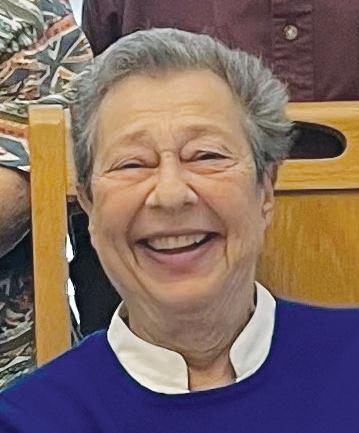
KURLAND
Our beloved Sandra Kurland passed away on Nov. 25, 2024. She is survived by her husband David; children Lauren (Scott), Justin (Jocelyn), and Robyn; and five grandchildren. A former president of Kol Shofar and the SF BJE, Sandra was known for her warmth, humor and pragmatism. Even after her diagnosis in 2022, Sandra’s courage and positivity inspired everyone around her, reflecting a resilient spirit that defined her life. Donations in her memory can be made to PanCAN.

Marjorie “Marj” S. Wolf, former president of the Jewish Community Federation of the Greater East Bay and well-known Jewish community volunteer, passed away quietly on Saturday, Nov. 23, 2024. She was 79 years old.
Marj Wolf received a degree from California College of Arts and Crafts in Oakland, Calif., in beading and weaving, followed by a Master in Public Health Administration from Golden Gate University. In 1966, Marj met and married Julian M. Wolf. Marj had a highly successful 30-year career in health-care administration. As a senior manager for Kaiser Permanente hospitals and clinics, Marj designed and implemented new facilities at Kaiser Oakland Hospital and Medical Center. Marj held several senior management roles, often when women in leadership were scarce, including CEO of the Sierra Pacific Network, West Coast Regional Director of U.S. Veterans Administration and consultant to the Albanian Minister of Health.
Marj and her husband became involved in the Jewish community after the 1973 war, making their first trip to Israel in 1974. In the 1980s Marj
became involved in the Federation including the Business and Professional Women’s Group as well as joined the Federation Board of Directors, then the Executive Board in the early 1990s. Marj’s presidency began in 2001, where she faced extreme difficulties for the Jewish community in the Diaspora and Israel with strength and grace, including when Marj was with a contingent of East Bay Federation members down the street from the deadly Sbarro Pizzeria terrorist attack on Aug. 9, 2001, in Jerusalem, when the September 11th terrorists attacks occurred in the United States and as antisemitism spiked thereafter. Marj’s dedication and commitment to the Jewish community never faltered; she showed it in her vast volunteerism, her lioness personality and commitment to her values and artistry.
Throughout Marj’s health care career and extensive Jewish volunteerism, she remained engaged in her art. Marj proudly participated in a weeklong Jewish Artists Renaissance in November 1999 where she displayed her woven tillites. Marj found much joy in designing tillites bringing her closer to her Judaism, her art and individual recipients.
In Marj’s final years, months and weeks, her primary concern remained a strong and safe Jewish community in the Diaspora and in Israel.
Marj is survived by her children Joshua Wolf, Ruth Wolf Long, Beth Wolf Mora, Esq., and son-inlaw Je Mora, and her much beloved grandchildren

Dakota Wolf Mora, Adam Long, and Micah Long.
In lieu of flowers, please make donations in Marj’s honor to the American Jewish Joint Distribution Committee at JDC.org.
Funeral services for Marj were held on Dec. 1, 2024, at Mountain View Cemetery, Home of Eternity Cemetery, 5000 Piedmont Ave., Oakland.
May Marj’s memory be for a blessing.
Feb. 27, 1925–Dec. 4, 2024
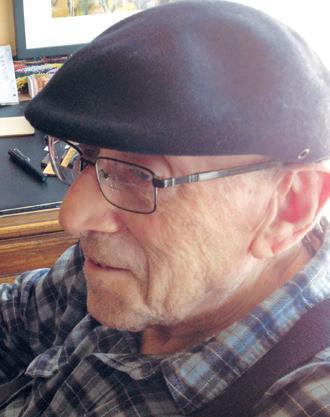
We are sad to announce that Hugo Beckerman passed away peacefully on Dec. 4, 2024, at the ripe old age of 99. He is survived by his loving and devoted family, which includes his three children and their
spouses, Larry (Marie) Beckerman, Ruth (Roberto) Loret de Mola and David (Catherine) Beckerman, his six grandchildren, Aaron Beckerman, Leah and Josh Loret de Mola, Andrew, Caitlin and Daniel Beckerman, his sister Marion Friedeberg, niece Debra Hoiem (David), nephews Mark Friedeberg (Cathy) and Michael Friedeberg, and great-niece, Rachel Hoiem.
Hugo was born in Berlin, a Holocaust survivor,
who lived underground during the war. His memories of Germany, good and bad, remained with him throughout his life. In 1946, he immigrated with his family to the United States, settling in San Francisco. He met his beloved wife, Jane, at the SF Jewish Community Center. Together, with family and their many friends, they shared 73 wonderful years before her passing in 2021.
Hugo proudly owned and operated Bekko’s, a successful linen and custom drapery shop in SF. He was a natural born salesman and businessman who loved being his own boss and meeting so many people.
He loved cars (driving until 95), music, art, playing cards, photography and especially woodworking. Self-taught, upon retirement he immersed himself in making toys and decorative items. Only three weeks ago, he was still making his popular wood boxes.
Hugo was a kind, very sharp, caring man with a great sense of humor. He was a wonderful husband, father, father-in-law, grandfather, brother, uncle and friend who lived a full and very well-lived life. We will cherish our memories of him forever. The family is very grateful for the care provided by caregivers Katia Contreras and Marlyn Valencia. For those who desire, donations may be made to Jewish Family and Children’s Services.
Sinai Memorial Chapel | 415.921.3636
BRADFORD BARUH
Dec. 15, 1925–Sept. 15, 2024
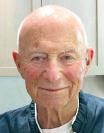
Bradford Goldman Baruh peacefully passed away on Sept. 15, 2024, with his family by his side. Brad was just 3 months shy of his 99th birthday, living in Hillsborough, California, with his loving wife, Kathy, of 53 years. Born to Doris and Harold Baruh on Dec. 15, 1925, Brad grew up in San Francisco alongside his older brother, Morton. Brad was always proud of his heritage as a second-generation San Franciscan and fourth-generation
Californian. The Baruh home, in Nevada City, California, still stands as a historical landmark dating back to the Gold Rush.
While attending Menlo College, Brad enlisted in the Merchant Marines just before he turned 18. During World War II, he served on the SS Lurline troopship, operating in the Pacific theater.
Brad, an accomplished athlete, had a true passion for all outdoor sports, especially snow and water skiing, with Lake Tahoe as his playground. In the 1949 Lake Tahoe racing regatta, Brad was crowned the Lake Tahoe Champion, winning the first-place trophy aboard his 28foot wooden Hacker Craft, “Shooting Star.”
In 1968, Brad’s zeal for boats, sports and marine life culminated in one of his greatest



accomplishments — the creation of a water park with marine-themed shows, Marine World in Redwood City, California. A day before his passing, the San Mateo County History Museum honored him in a new exhibit, “Peninsula Innovators Changing the World,” for establishing this unique adventure park. Brad felt honored to be featured alongside other Peninsula innovators like Steve Jobs and Larry Ellison.
Brad was a lifelong creative thinker and entrepreneur. In 1952, alongside his father and brother, they founded Baruh Liquors, distributing the Seagram’s brand, among others. By the 1980s, the family business was renamed Baruh Spirits, with Brad at the helm. After launching his new electric blue tequila brand, Tarantula

Azul, it quickly became the most successful distilled spirit ever owned by the family. In 2015, Brad sold the company, ending his 63 successful years in the liquor business.
Family has always been the centerpiece of his life. Baruh gatherings, especially Christmas and Father’s Day, were always filled with fun, laughter and Brad in the middle of it all. His quick wit, genial sense of humor and storytelling skills made him the life of any party.
Brad is survived by his wife, Kathy Baruh, and three more generations of Baruhs. Five children: Judy (Brad) Colton, Jeff Baruh, and John (Denise Benatar) Baruh, Christina Baruh, and Brad (Heather) Baruh. Ten grandchildren: Bryan Colton, Tori (Jamie) DeCoite, Dante Baruh, Trevor Baruh, Parker Baruh, Anton (Amalia) Baruh, Ian Javer, Sils Javer, Jordan Baruh, and Hayley Baruh. Three great-grandchildren: Cole, Noah, and Tripp DeCoite.
In lieu of flowers, donations may be made to: Randie Lynn Baruh Pediatric Cancer Research Fund at UCSF Benioff Children’s Hospitals supporting innovative research into immunotherapy, cancer genetics and relapsed leukemias: UCSF Benioff Children’s Hospitals Foundation, P.O. Box 45339, San Francisco, CA 94145-0339; or San Mateo County History Museum, 2200 Broadway, Redwood City, CA 94063.

The Obituaries section is supported by a generous grant from Sinai Memorial Chapel,
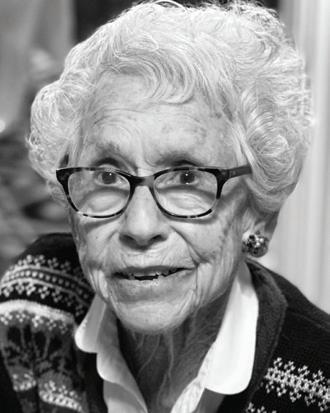
On Sept. 24, 2024, at 96 years old, Janet’s beautiful life came to a peaceful end in her sunny apartment, surrounded by her caretakers, with a lovely view of Mt. Tamalpais in the background. She was a life force to all who knew her, as she proudly proclaimed her independence and positive attitude even at the end.
Janet Kaplan was born at San Francisco’s Mt. Zion hospital and was the only child to Samuel Levite and Amelia Green, but she was never lonely, living very close to her grandparents, aunts and uncles. Some of her closest friends dated back to her early years of local public schools and Sunday School at Congregation Sherith Israel, where she would later be married. Her parents encouraged her to both study hard and to branch out physically into areas they had never been exposed to, such as swimming, piano, drama and tennis, all of which she continued for most of her life. As an 11th-grader at George Washington High School, she sat next to Myron Kaplan in chemistry class and by graduation they knew that this would be it. She chose the small rural UC Davis campus for college and received her BS degree in Home Economics, which
launched a lifelong interest in and passion for food. Meanwhile, Kap joined the Navy during WWII, and they were wed on June 27, 1948.
The GI Bill allowed them to buy their first house in the new Outer Sunset District, where she worked part time in the food industry while Kap became a salesman for Gallo wine. When his territory was changed to Marin County, they, along with their two young daughters, moved to Larkspur and Kap eventually became a real estate agent in Sausalito. During their 15 years in Hillview Gardens, her kitchen became a classroom where she taught “quick gourmet-style” cooking classes for women and candy making workshops for kids. It was also a test kitchen for her two self-published cookbooks, “Crackers and Snackers.” They gardened, enjoying the large front and backyards the warm suburbs provided, swam at the local pool, and always took summer and winter vacations.
Family life was Janet’s focus, but she also made time for her friends playing mahjong, visiting museums, and doing volunteer work in their local hospital, schools and synagogue. They were proud founding members of Congregation Rodef Sholom and were fundraisers for its first building.
In 1969, as empty nesters, Janet and Kap decided on a lifestyle change and moved into their newly built duplex in Sausalito. Again, they added new friends to their ever-growing group, and now Janet learned to ride a bicycle at 40 years old so
that she could join the couples’ weekend bike trips that Kap had eagerly engaged in. Although Janet had been the vacation planner up to this point, Kap decided they should take an independent bike vacation to Europe, packing bikes onto the plane and carrying minimal clothes themselves. They returned ecstatic after their completely successful seven-day trip to the Cotswolds and went on two more trips to southern Germany and northern Italy. Being on the cutting edge summarizes their love and passion for each other, but sadly their 33-year marriage ended when Myron was diagnosed with an aggressive brain tumor and died in 1981.
Although devastated by his death, Janet at 52 years old, relied on her independent nature and competently carved out a new life for herself. Managing their property, volunteering at Hospice and the Sausalito visitors’ center kept her socially engaged with both old and new friends. Staying as busy as possible was her goal, so she began working for a friend’s catering business once a week producing dozens of batches of different cookie varieties. Exercise classes, singles tennis, eating in new restaurants and driving into San Francisco to maintain her closeness to her grandchildren kept her busy and happy. And any opportunity to travel, especially to new places, she enthusiastically signed on to. From local driving trips with friends and taking grandchildren on summer trips to tours to every continent including countries
such as Nepal, India, South Africa and Japan, she never lost the enthusiasm for new and different life experiences.
At 80 years old, once again ready for a life change, she moved into Villa Marin to be surrounded by a community of both old and new friends. Actively participating in play reading groups, teaching mahjong, joining the paddle tennis club, flower arranging, and chairing the birthday committee were new social experiences that kept her busy and energized. And she always made time to bake cookies as a way to show her love and appreciation. Generosity, an energetic exuberance for life, love and appreciation of family while always maintaining a positive outlook are the qualities she will be remembered for by all those who knew and loved her.
She is greatly missed by her two daughters, Linda Mostovoy (Bob) and Nancy Kaplan Muir (Cameron), her three grandchildren, Ben (Shannon), Camille, and Amelia (Sheena), and her great-grandchildren Levi, Charlotte, Beatrix, August, Linnea, Florence and Kaplan. Her three caretakers Daisy, Marlene and Josephine loved her as their mother, and as independent as Janet was, she felt so happy and comforted by their presence. Donations in Janet’s memory can be made to: The Chronicle’s Season of Sharing, San Rafael City Schools and Congregation Rodef Sholom. Sinai Memorial Chapel | 415.921.3636
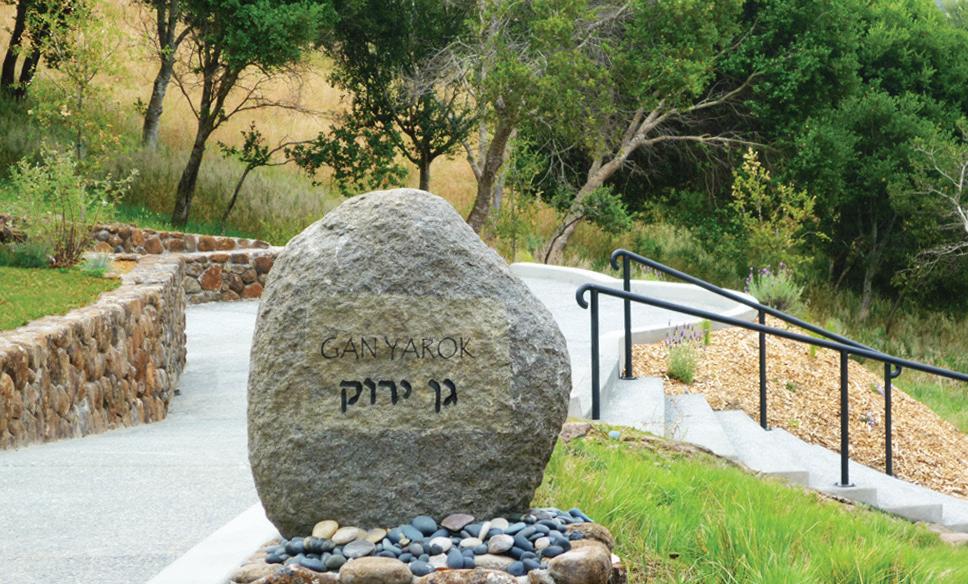
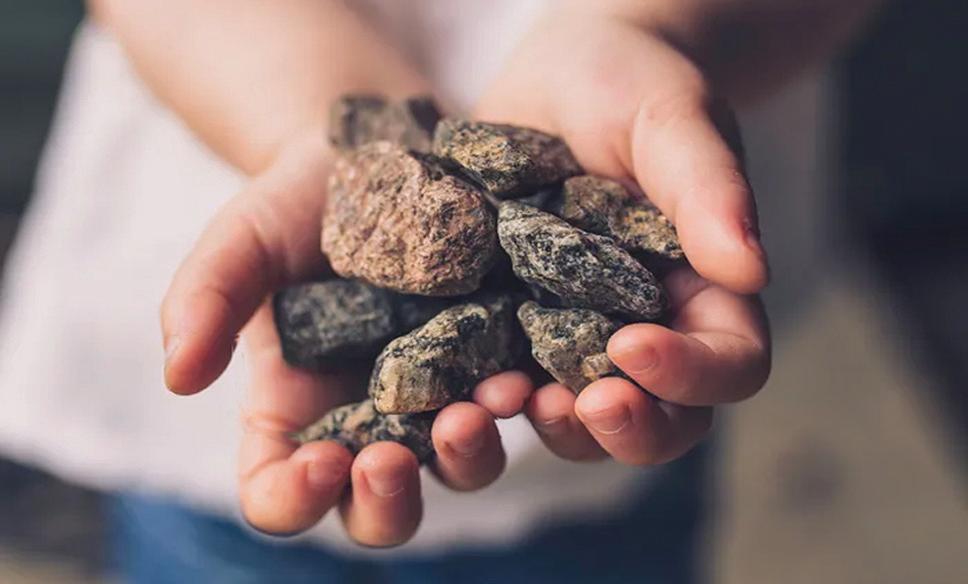
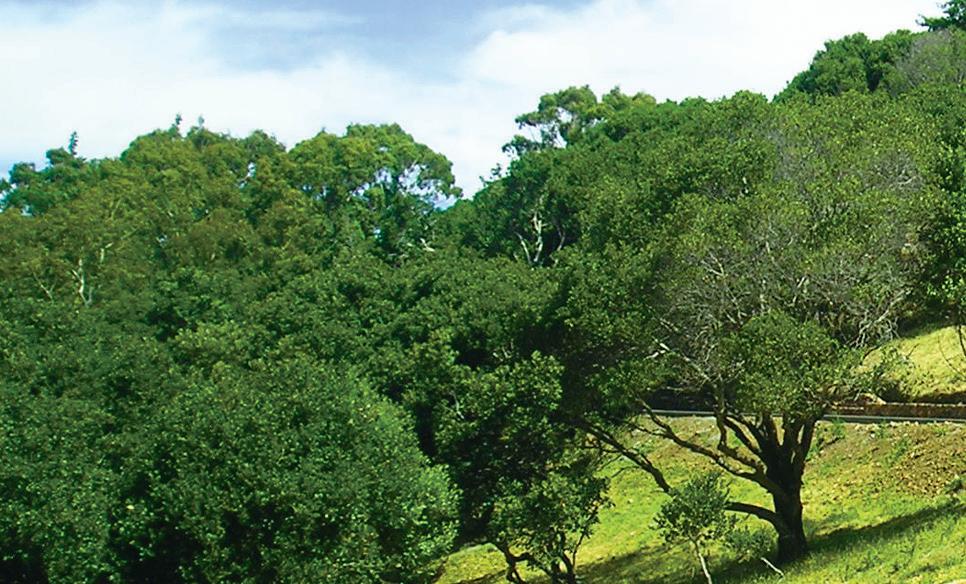

MAYA MIRSKY | J. STAFF
In the days and weeks surrounding Daniel Lurie’s victory in the San Francisco mayoral race, almost every story or headline included some variation of the phrase “Levi Strauss heir” — our publication included.
But just what is Lurie’s connection to the near-legendary founder of the American denim empire Levi Strauss & Co.? And what does the Haas family have to do with it?
The answer is woven into the fabric of San Francisco’s Jewish history.
Before he became a brand, Strauss was a man. Loeb Strauss, the son of a peddler, was born in 1829 in the German Kingdom of Bavaria. He traveled to the U.S. to join family in New York around the age of 18, then headed west in 1853 during the California Gold Rush. Soon after he arrived in the U.S., he started going by Levi.
San Francisco at that time had become a mecca for German Jewish traders and merchants who built a prosperous middle class in the city (and at times looked down on the subsequent waves of Jewish immigrants from Russia-ruled lands as uneducated and superstitious).
There Strauss began to manufacture and sell workwear. One of his customers, Jewish tailor Jacob Davis, came to him with the idea of durable denim pants with rivets. They patented that idea in 1873.
Strauss died a rich man in 1902, but he never married and had no children. He left his company, fortune and legacy of philanthropy — including donating to create UC Berkeley’s first 28 scholarships — to his sister’s four sons who had the last name Stern.
That’s where the Haas family comes in.

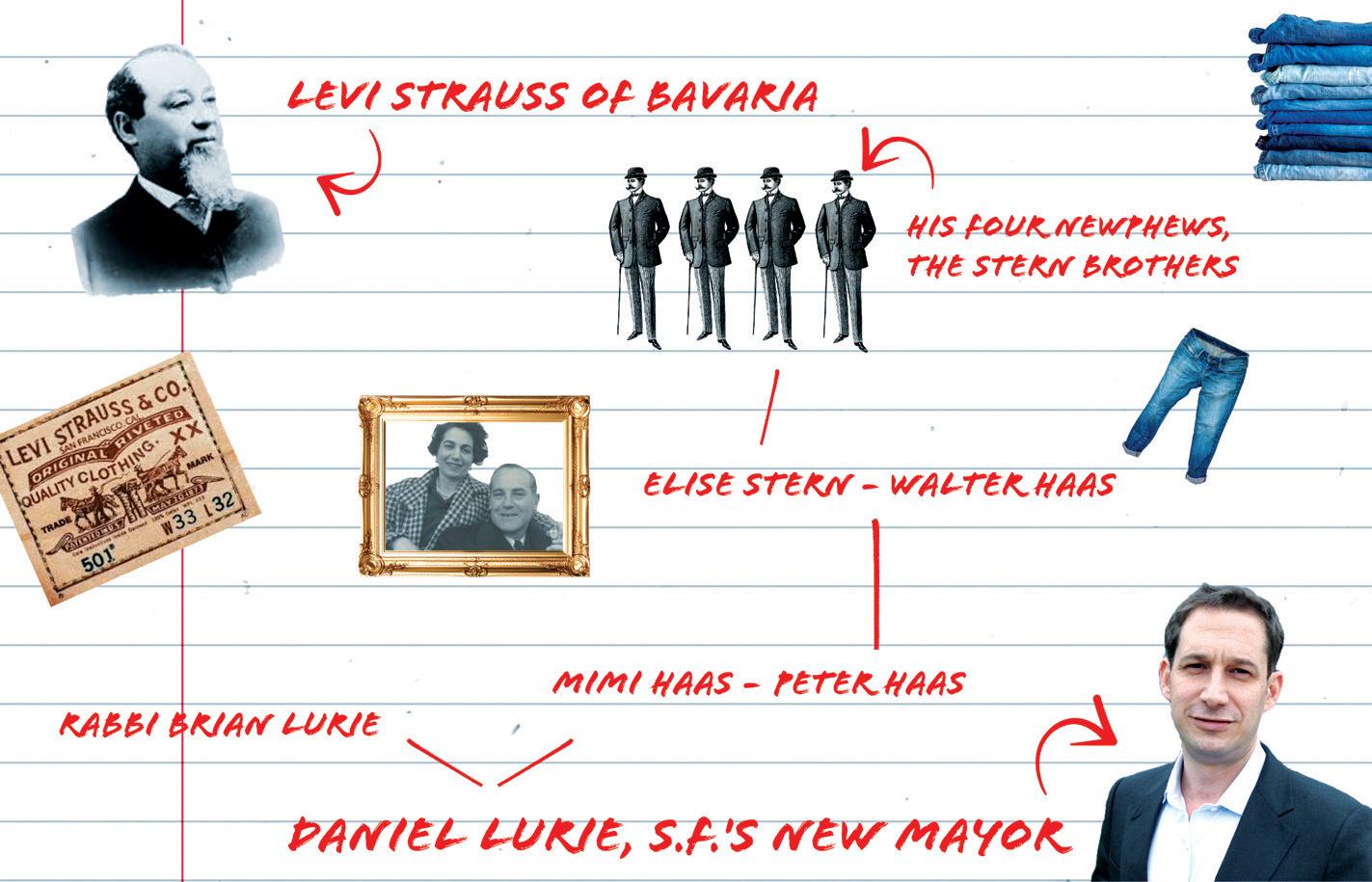
The Haas family, also from Bavaria, became a successful Jewish mercantile family in San Francisco in the second half of the 1800s. Wolf “William” Haas and his brother Abraham Haas built Haas Bros. grocery into a thriving business.
Abraham’s son Walter Haas married Elise Stern, the daughter of one of Strauss’ nephews. Meanwhile, Wolf’s son Charles Haas, married Elise’s cousin Fanny (Fannie) Stern.
This merger of two major German Jewish families in San Francisco became the nexus of a vast fortune — one behind many major philanthropic gifts and one that will indirectly influence San Francisco’s future for the next four years.
OK, let’s skip ahead.
Generations have passed, and the Haas family remains extremely wealthy and extremely philanthropic.
You might know the name Haas from UC Berkeley’s Haas School of Business and Haas Pavilion, Stanford’s Haas Center for Public Service and Jerusalem’s Haas Promenade. (There are also quite a few Stern buildings that are part of the extended legacy of Levi Strauss, including two at Stanford and, of course, San Francisco’s Stern Grove). Even more donations have been made through family foundations.
How does Daniel Lurie fit into all this?
Lurie was born in 1977. His mother is Miriam “Mimi” Lurie Haas. His father is Rabbi Brian Lurie, a familiar Jewish leader in the Bay Area for decades. Brian Lurie first came to the city as an assistant rabbi at Temple Emanu-El and later headed the S.F.-based Jewish Community Federation for 17 years.
Brian Lurie and Mimi Ruchwarger wed in 1968 after they met on a trip to Israel: “We had an Israel romance,” Brian Lurie said in a 1991 oral history.
They split up when Daniel Lurie was a toddler.
Both Brian and Mimi remarried. Mimi married Peter Haas in 1981 when Daniel was preschool age.
Peter Haas, who was born in 1918, is the son of Walter and Elise Haas, making him the great-grandnephew of Levi Strauss. Peter Haas was a noted philanthropist who gave to everything from Jewish institutions to the San Francisco
the age of 86.
Peter Haas was also involved in the family business, serving in executive roles at Levi Strauss from 1958 to 1989, after which he became chair of the executive committee.
He and his brother Walter Haas Jr. are credited with the immense success of the clothing retailer — and with refusing to use segregated factories during the Civil Rights Era.
Levi Strauss & Co. first went public in 1971. The Haas family later took it private in the 1980s before once again going public in 2019.
Haas family members are still the largest shareholders. Mimi Haas’ net worth depends on the value of her stock, but it’s been reported that she is a billionaire.
Daniel Lurie and his older brother, Ari, were left some money by Peter Haas directly when he died in 2005, according to the SF Standard, but it’s really through his mother that he’s gained the sobriquet of “Levi Strauss heir.”
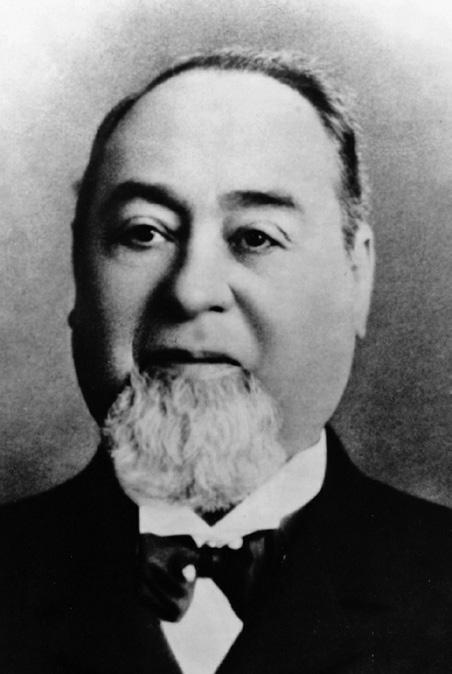
Lurie himself has joined the long history of his family’s philanthropy. In 2005, he founded Tipping Point Community, a nonprofit dedicated to combating poverty, where he served as CEO for 14 years. The organization has given away more than $440 million since its launch, according to its website. Last year, he also co-founded the Civic Joy Fund with Jewish activist and café owner Manny Yekutiel with the mission of reversing the negative reputation of post-Covid San Francisco.
Lurie’s stepfather, Peter Haas, described in a 1992 oral history the tradition of philanthropy that runs in his family.
“It had come from my forebears,” he said. “It was part of my father and mother. … They were both very much involved in philanthropy and helping in the community. That was rather an inheritance, I guess.” n LOVE LOCAL HISTORY? WANT TO WRITE A GUEST COLUMN? WE INVITE YOU TO EXPLORE A TOPIC OF YOUR CHOOSING IN J.’S ARCHIVES, AND CONTACT EDITORS@JWEEKLY.COM WITH YOUR IDEA.
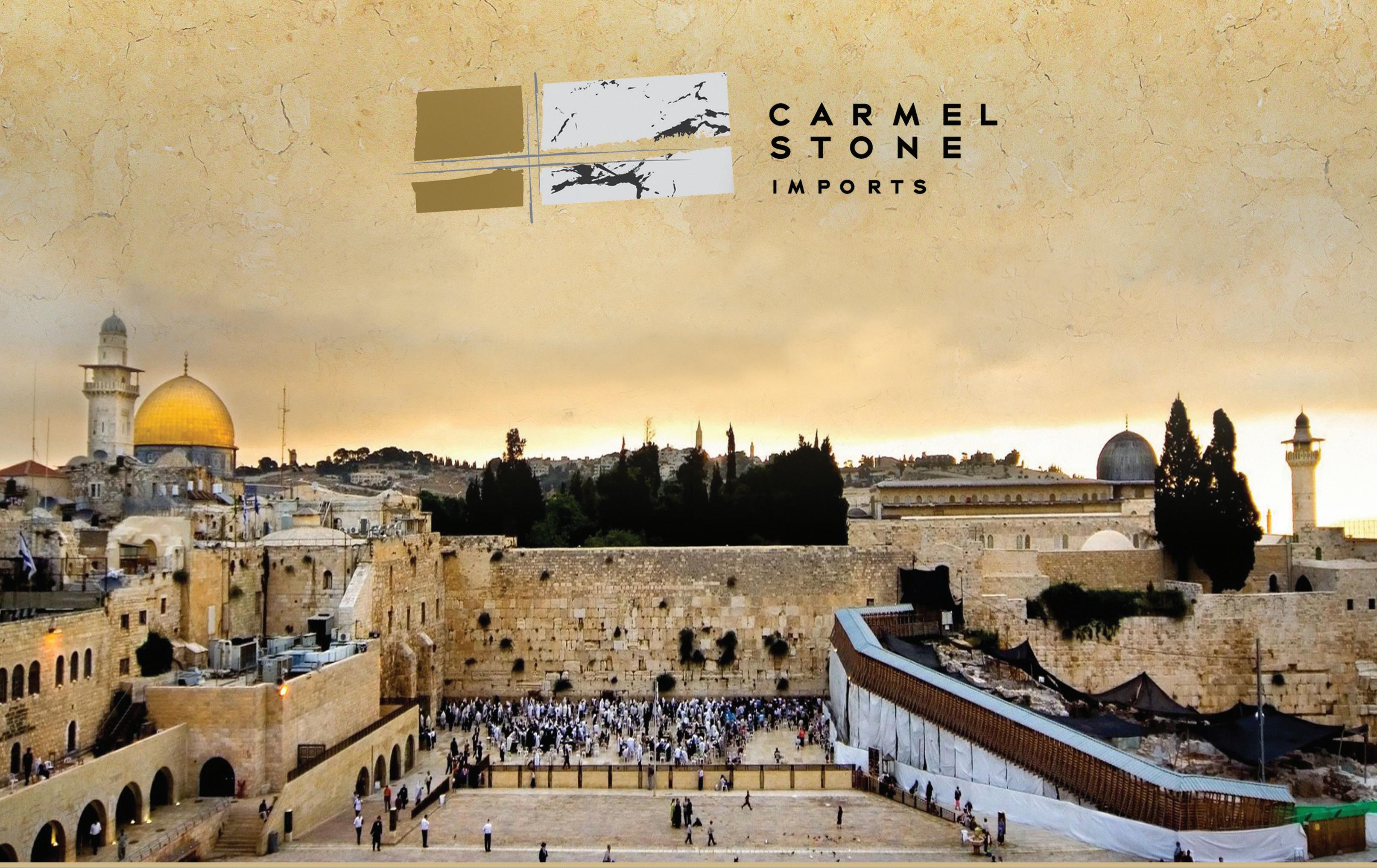











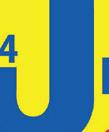


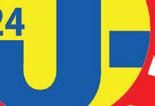
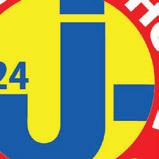







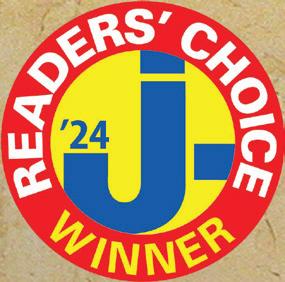


i 1 : m r a d e 1 : v e y o a e o a
m i t v l e a
E v e r y N i g h t o f C h a n u k a h a t U n i o n S q u a r e !
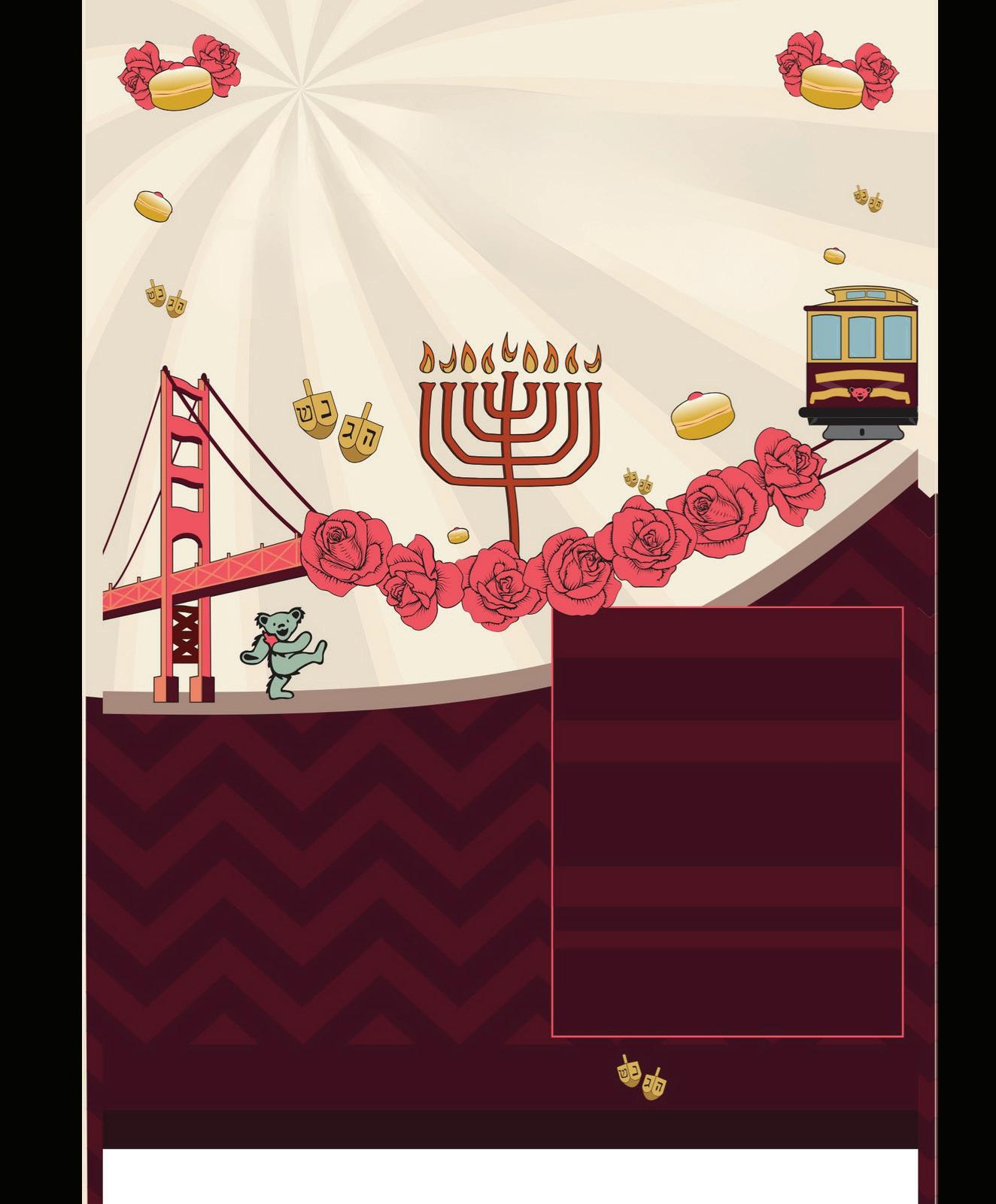
3 : 3 0 P M L I V E M U S I C | D O U G H N U T S
5 : 0 0 P M 1 S T L I G H T I N G C E R E M O N Y L
1 2 / 2 6 2 2 6 5 : 0 0 P M 2 N D L I G H T I N G C E R E M O N Y | T E
2 / 2 7 2 : 3 0 P M 3 R D L I G H T I N G C E R E
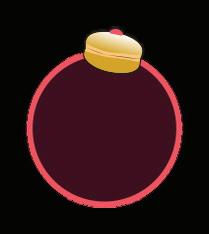
J o i n u s f o r C h a n u k a h g i v e a w a y s : M e n o r a h s , C a n d l e s , D o u g h n u t s ,
n s f o r u k i w : o h C n l s , D u g t
L a t k e s , C h a n u k a h S w a g & M o r e !
a k e s , C h u k a a M o r e !
C e l e b r a t e w i t h t h e c o m m u n i t y , e n j o y t h e l i g h t s , a n d s h a r e t h e
C e l e b r a t e w i t h t h e c o m m n i t y , e n j o y t h e l i g h t s , a n d h a r e t h e
j o y ! G a t h e r i n g w i l l b e g i n 3 0 m i n u t e s p r i o r t o e a c h l i g h t i n
j o y ! G a t h
S e e y o u t h e r e ! �� �� ��
S e e y o u t h e r e !

2 0 2 4 s p o n s o r s








